The following eleven submissions are a record of the daily events during the dig by Rosemary Smith, documenting each day the archaeologists were on site. Each day photographs, observations and comments were noted.
Day 1
An early start at 8.30 am! Caroline, Will, Mick, Alex and Daria begin measuring the first area for the survey, the field adjacent to the Sports Hall. They are joined by Katherine Bostock an archaeology postgraduate who had studied at Leicester University. Katy Bell and Eva Fawcett from The Lakes School come along to help and start by taking some photographs.
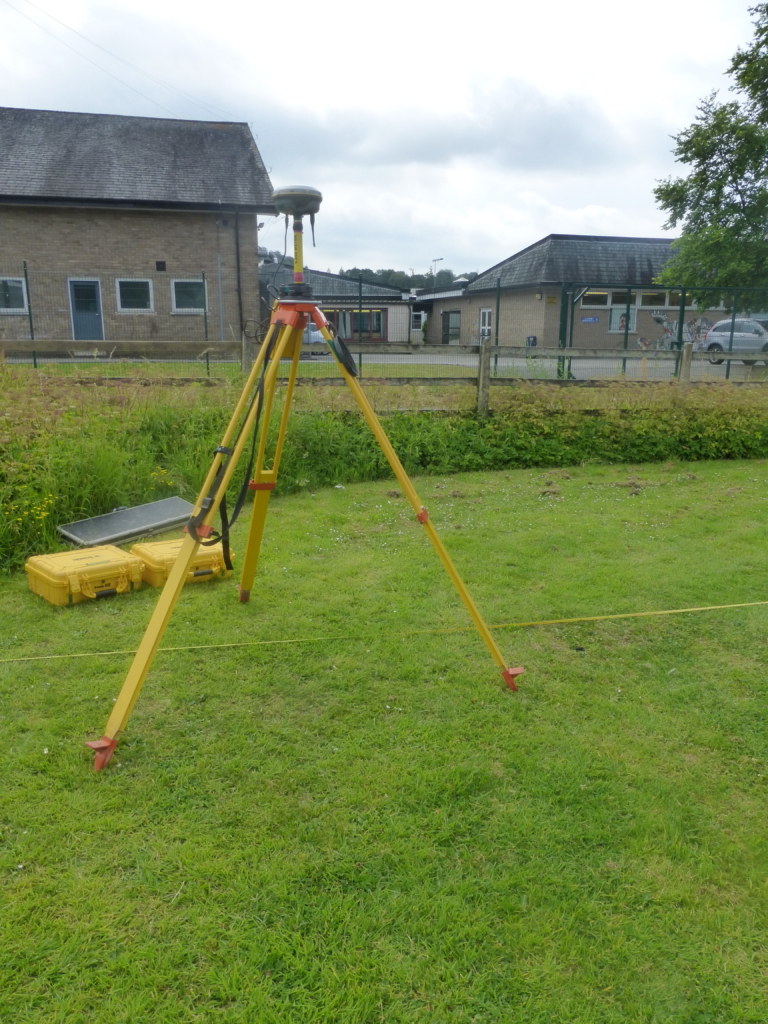
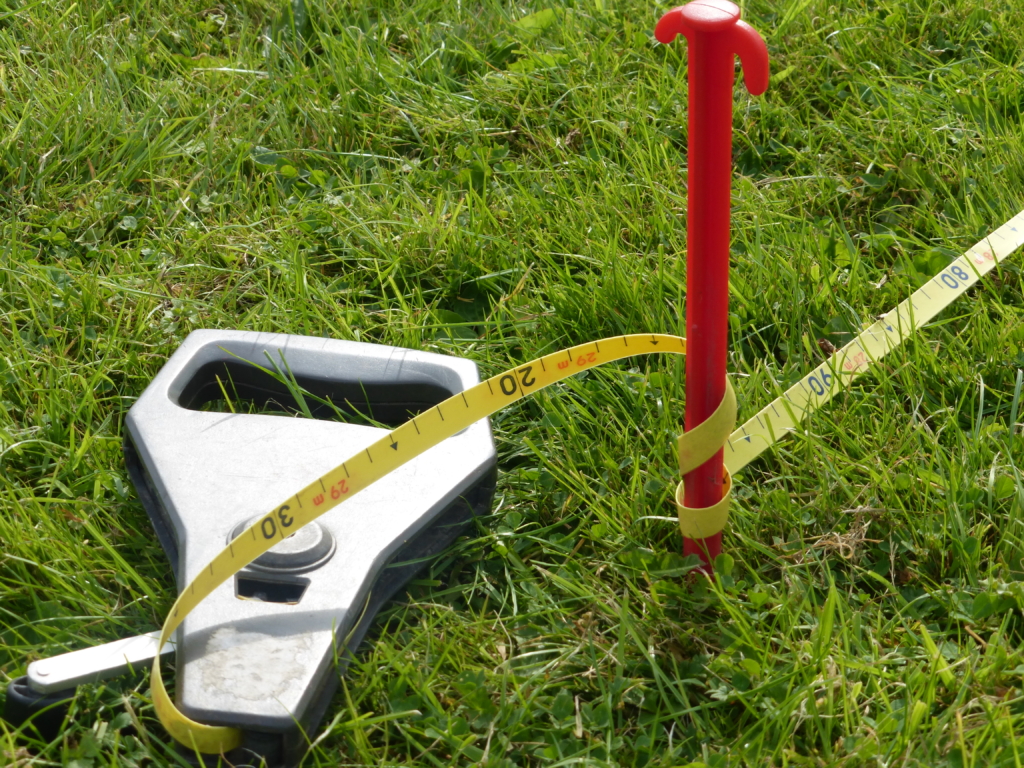
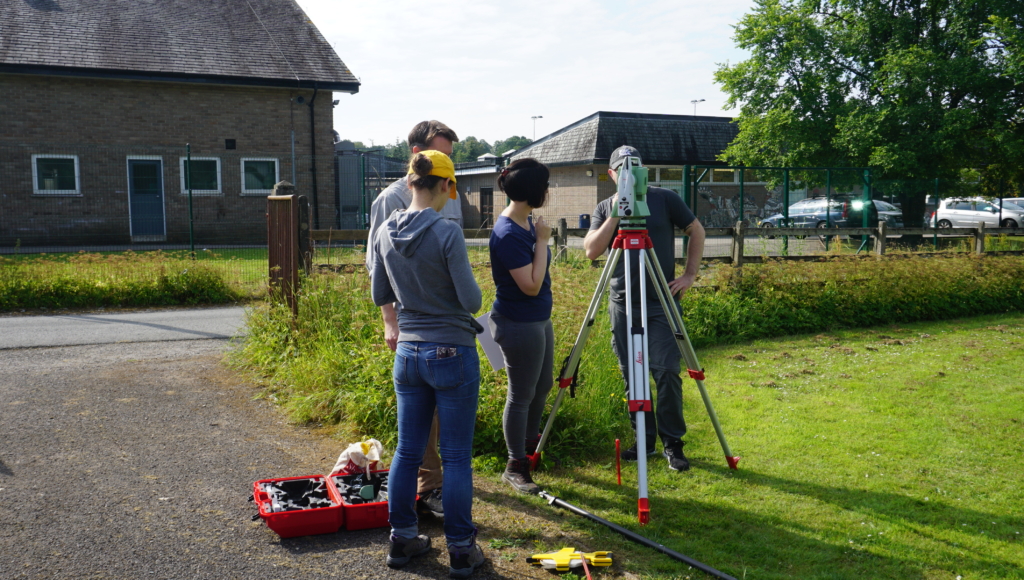
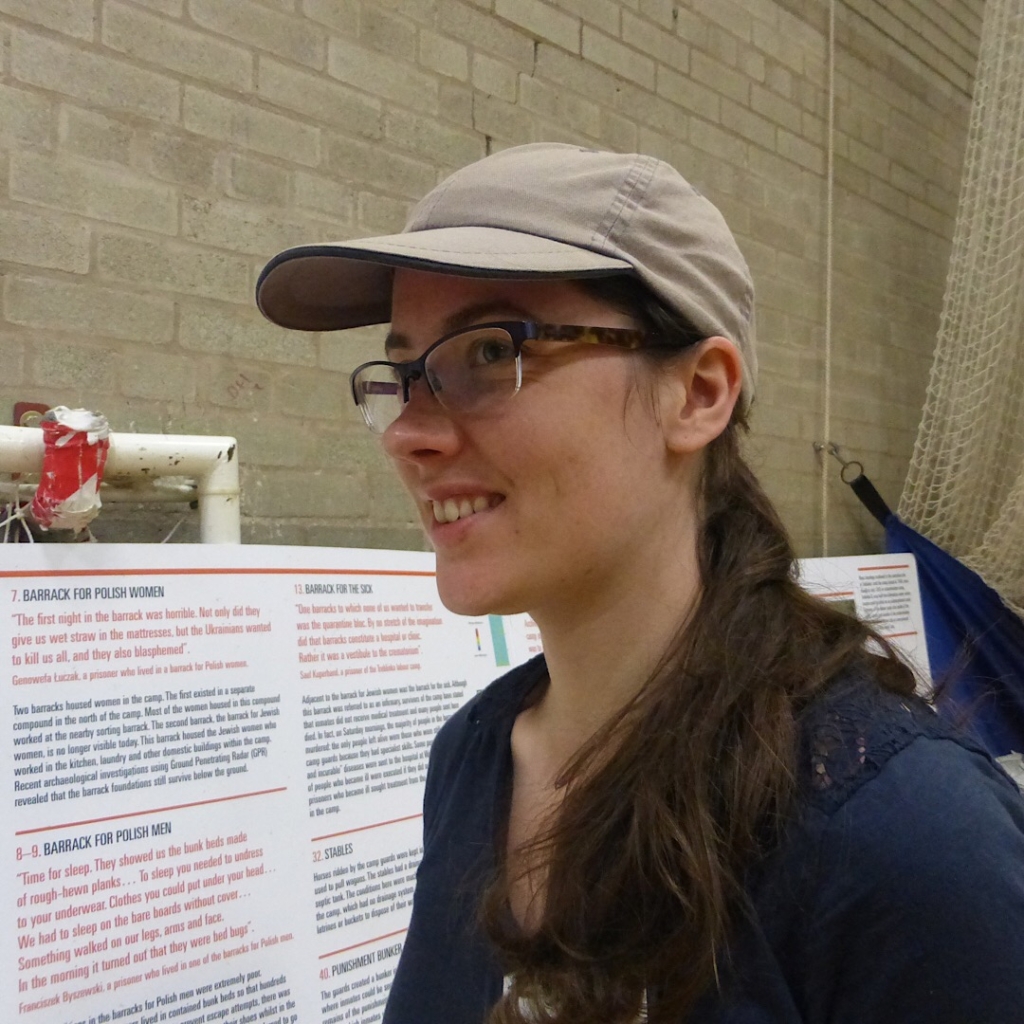
Later Katy and Eva explore the same area with metal detectors, but no gold found today!
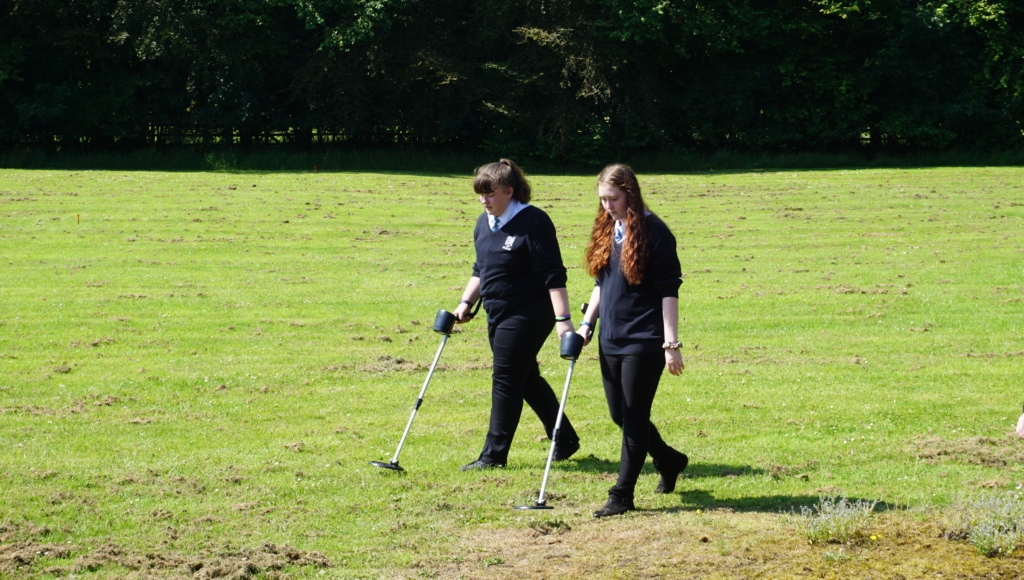
The GPR equipment is assembled and survey line guides marked……
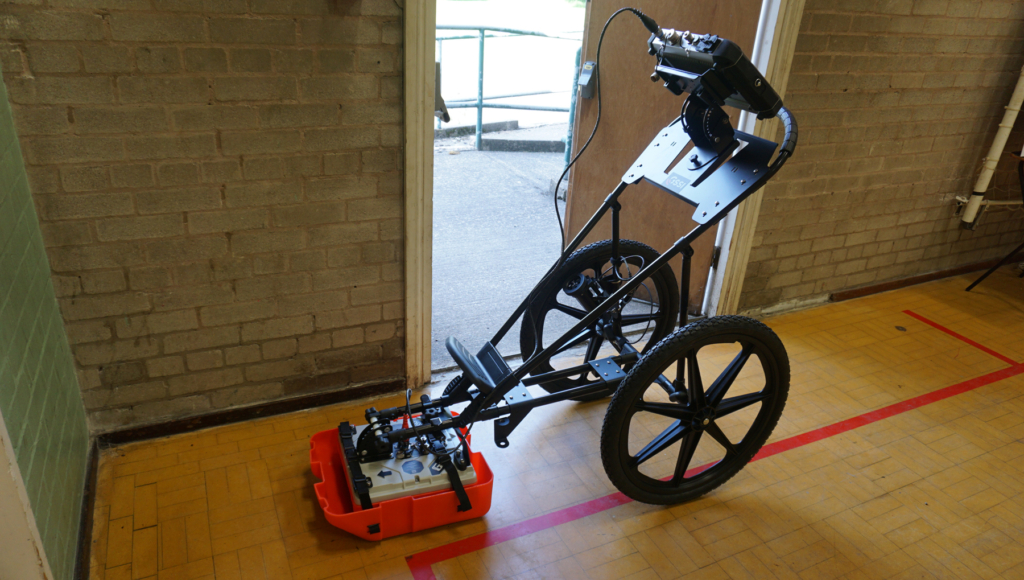
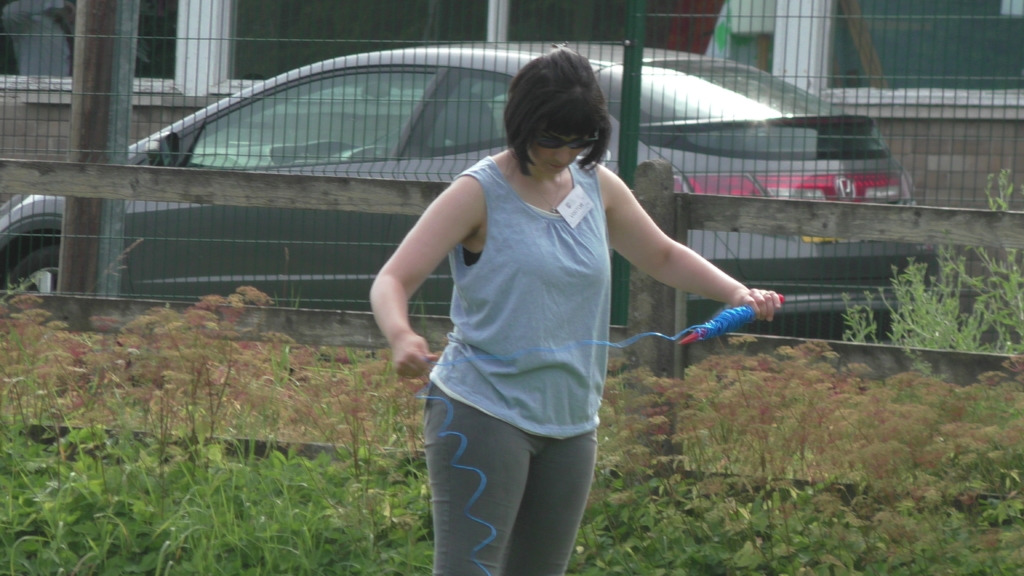
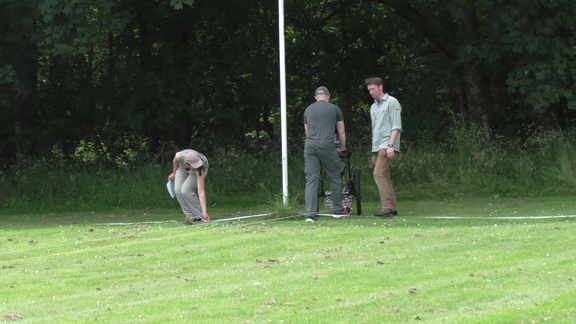
And so the survey begins with a lot of walking up and down lines! 12,000 steps or more today! It’s not really that hilly, but great angles taken by our school photographers! The GPR uses radio waves to detect changes in the grounds and any changes affect the waves in different ways.
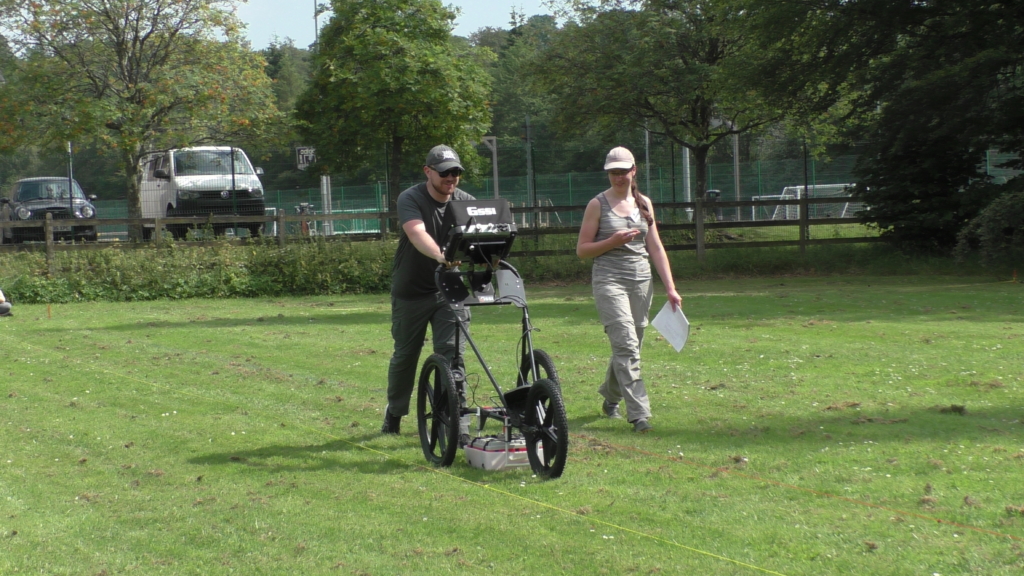

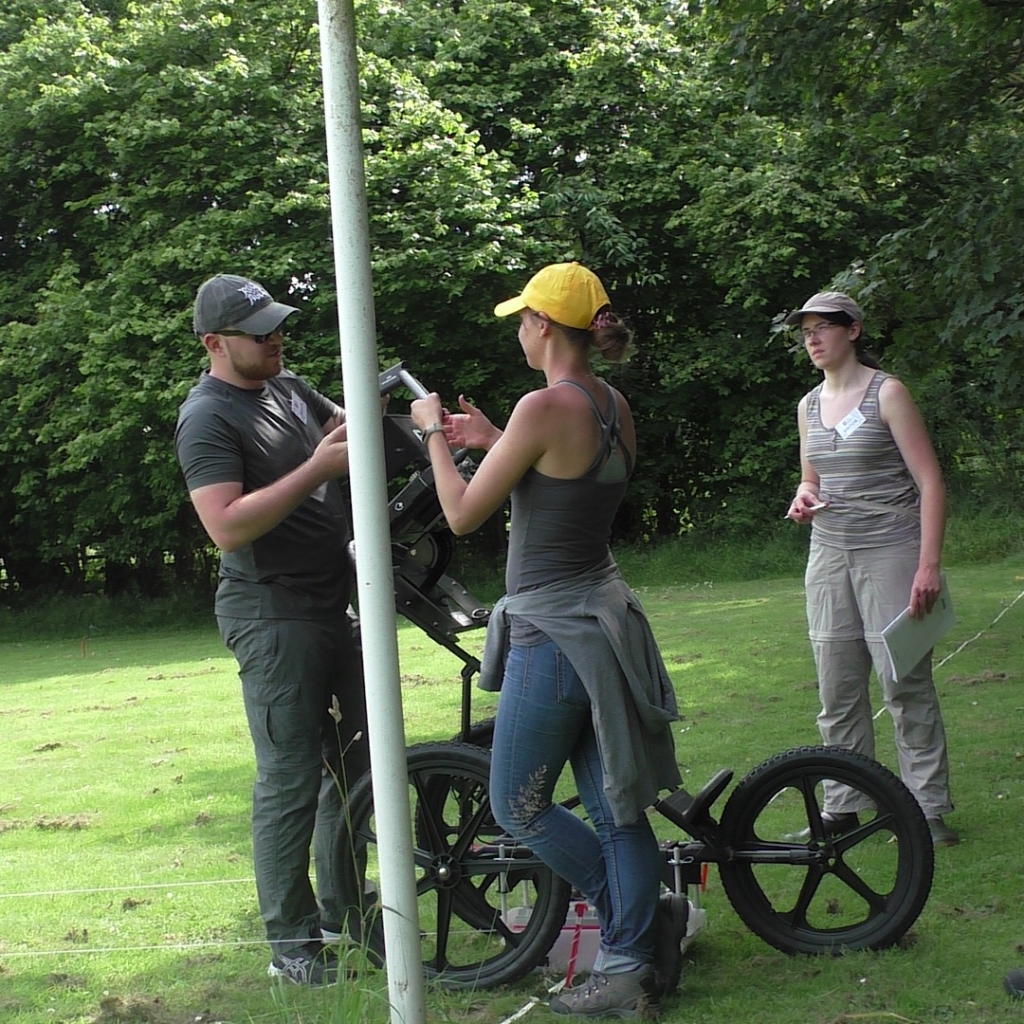
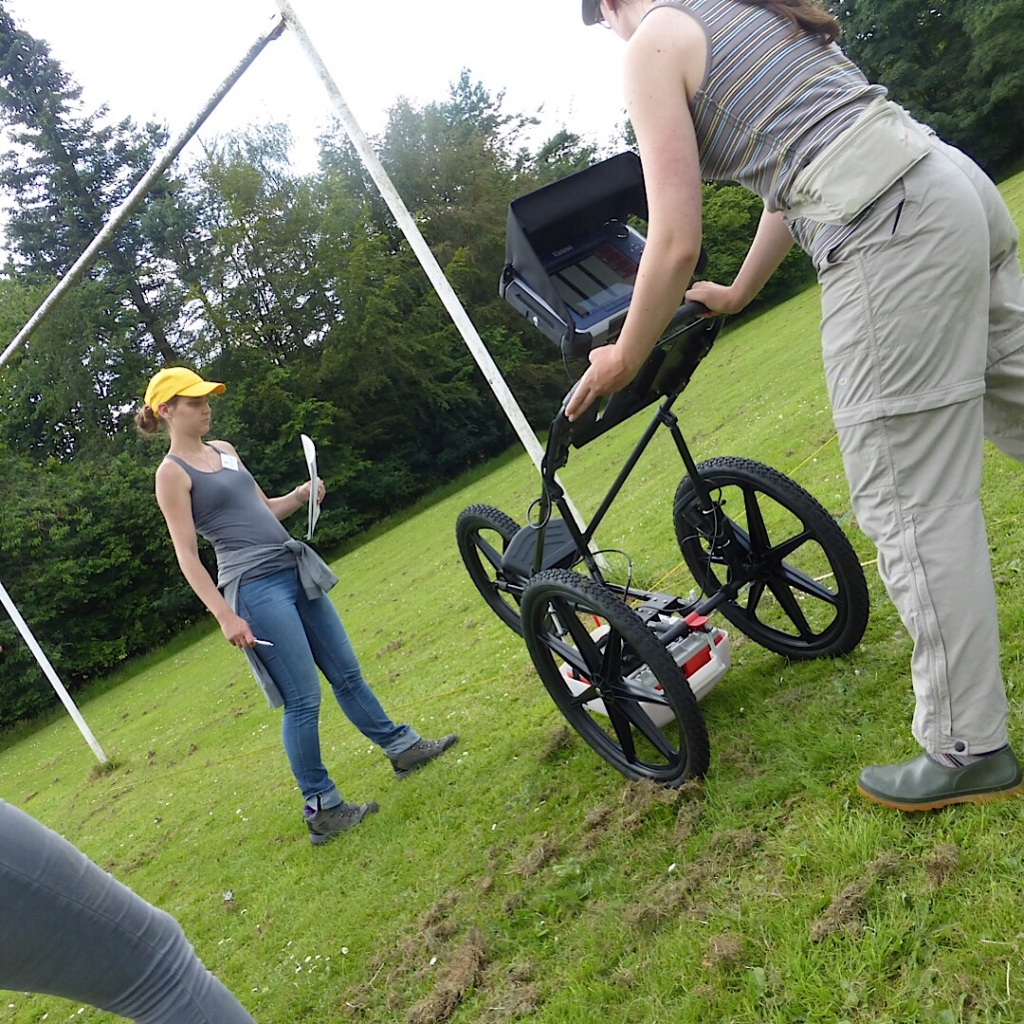
Paul from BBC Radio Cumbria joins us and interviews Caroline, Kevin and Trevor for broadcasting tomorrow and Liz and Barrie Walker arrive to set up their exhibition. Liz Walker is the great great niece of Harold, Eustace and Oswald Short. The Sunderland Flying Boat was developed and constructed by the Short brothers and used by coastal command during the North Atlantic campaign to protect convoys. More information about the Shorts Brothers is available at http://shortbrothersaviationpioneers.co.uk
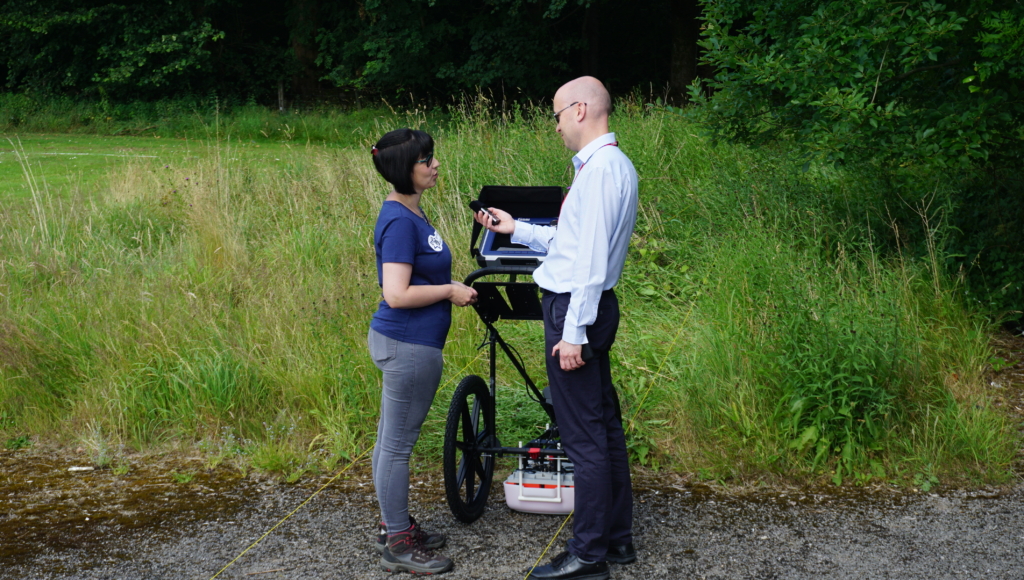

Kelsey Hibbert and Mia Garstang join us for the afternoon and more photographs and metal detection follow. Liz talks to them about the history of some of the Short Brothers’ planes
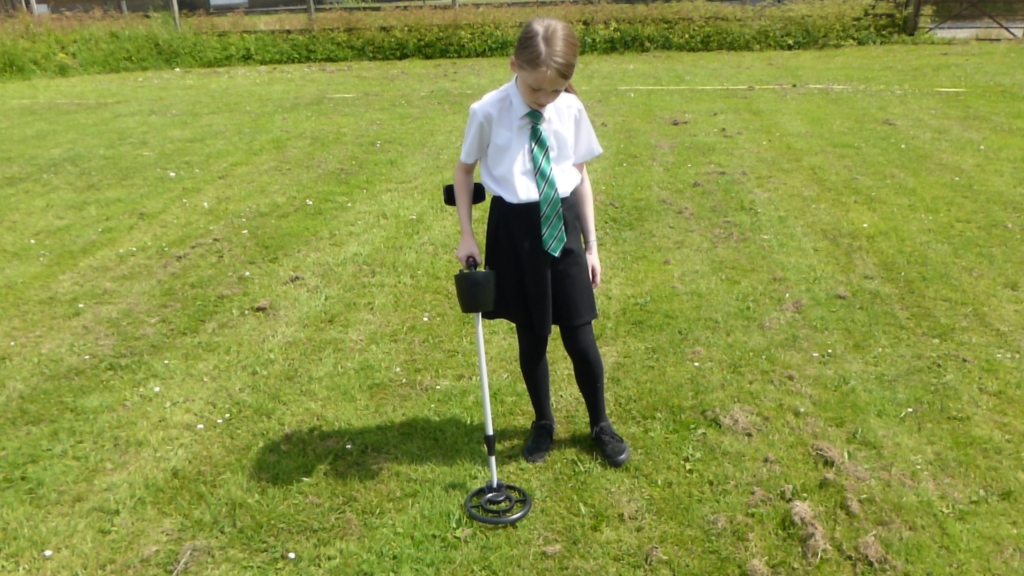
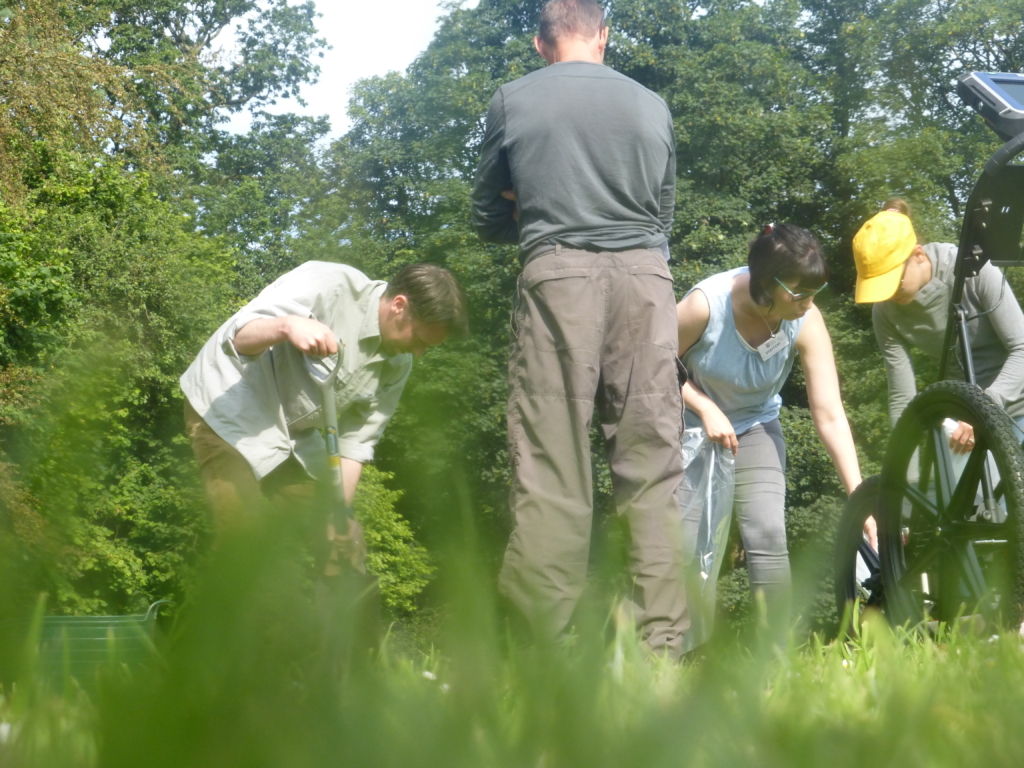

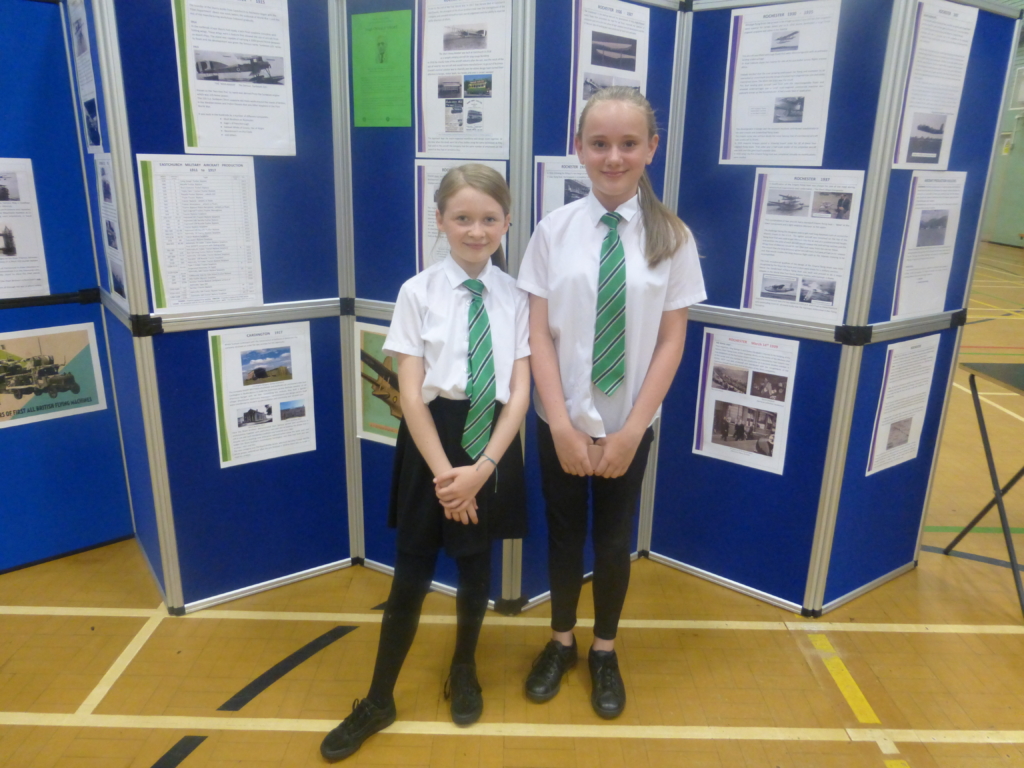
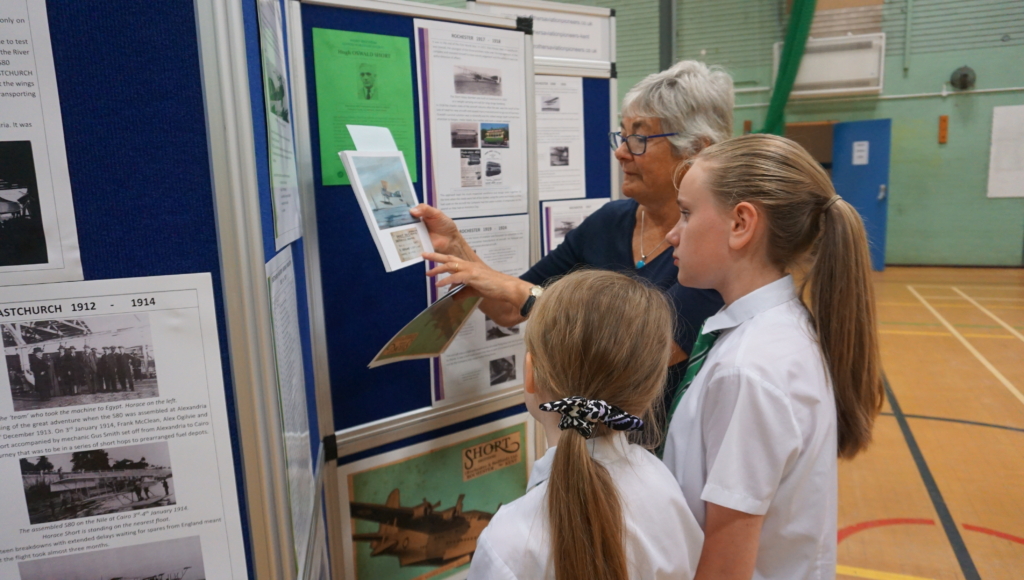
Day 2
Our first broadcast on Radio Cumbria starts the day at 8.30! The magnetometer guys arrive and start recording the direction, strength and relative changes of the magnetic fields that will detect buried features and objects in the grounds around the school. This takes them most of the day and they leave to go and interpret and evaluate the scans.
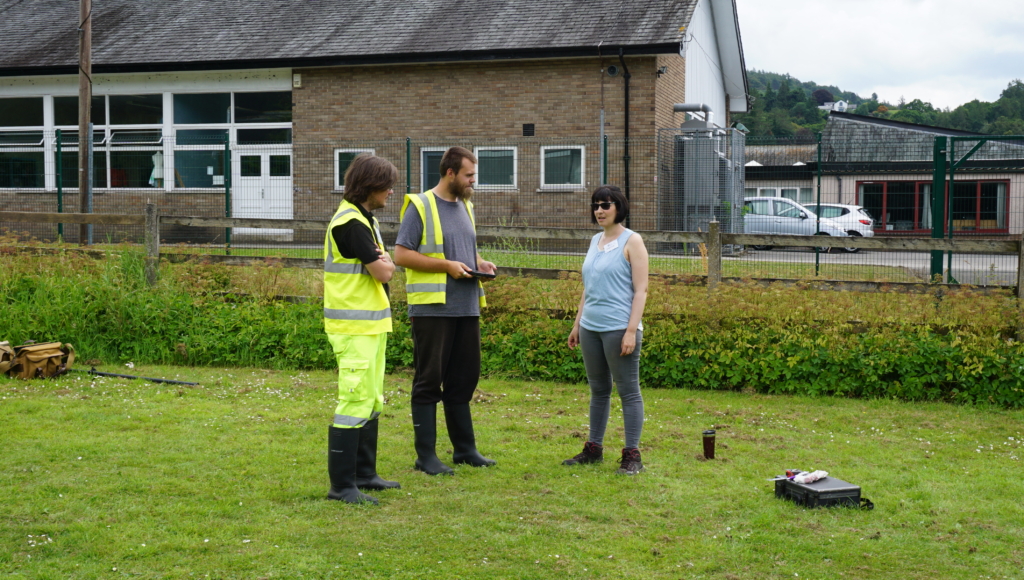

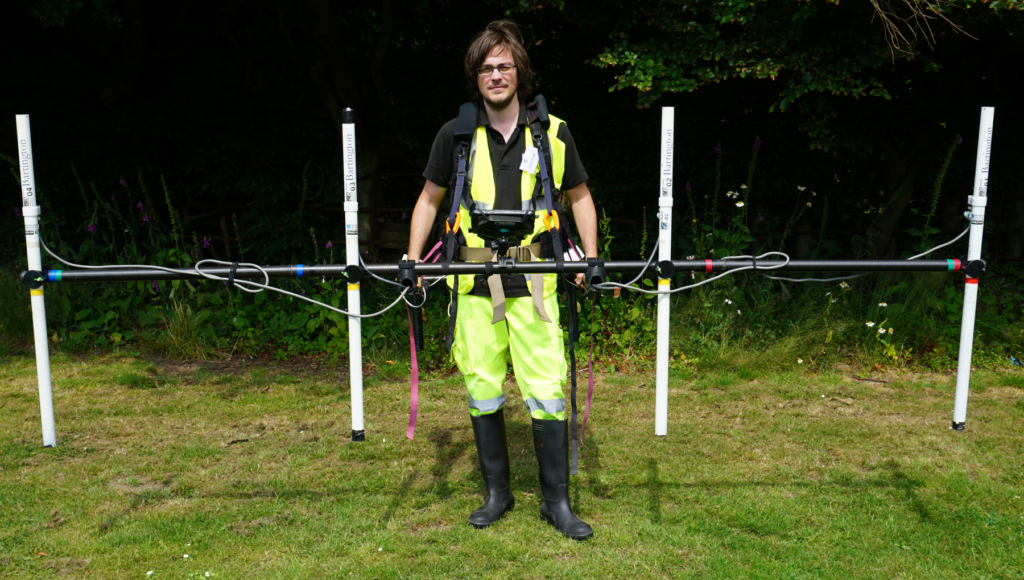
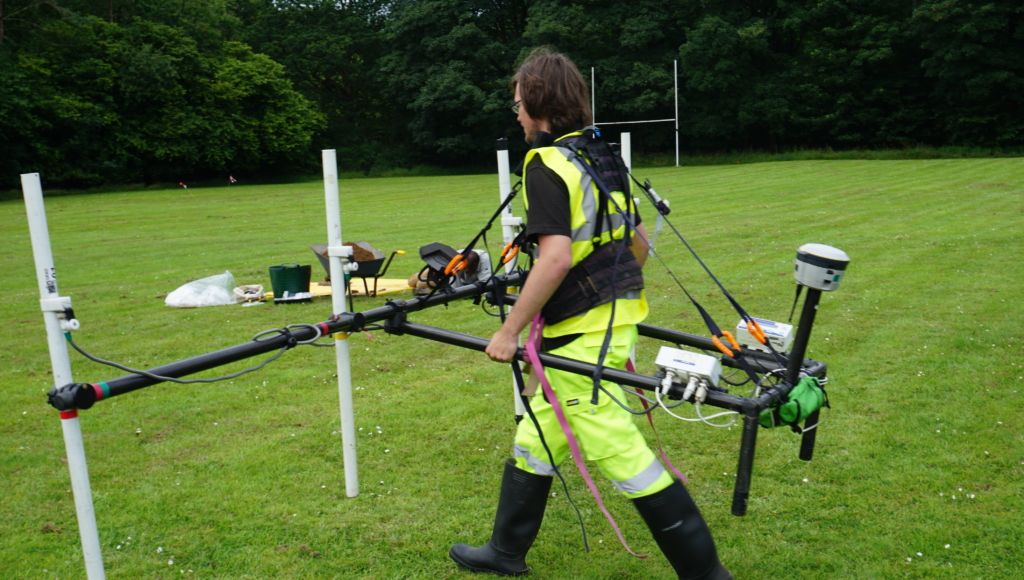
More scanning of the field adjacent to the sports hall continues in order to reassess and determine areas where test pits might be started. Paige Hanson and Eleanor Richards come from the school as volunteers for the morning. They begin to take photographs and record the start of the day.
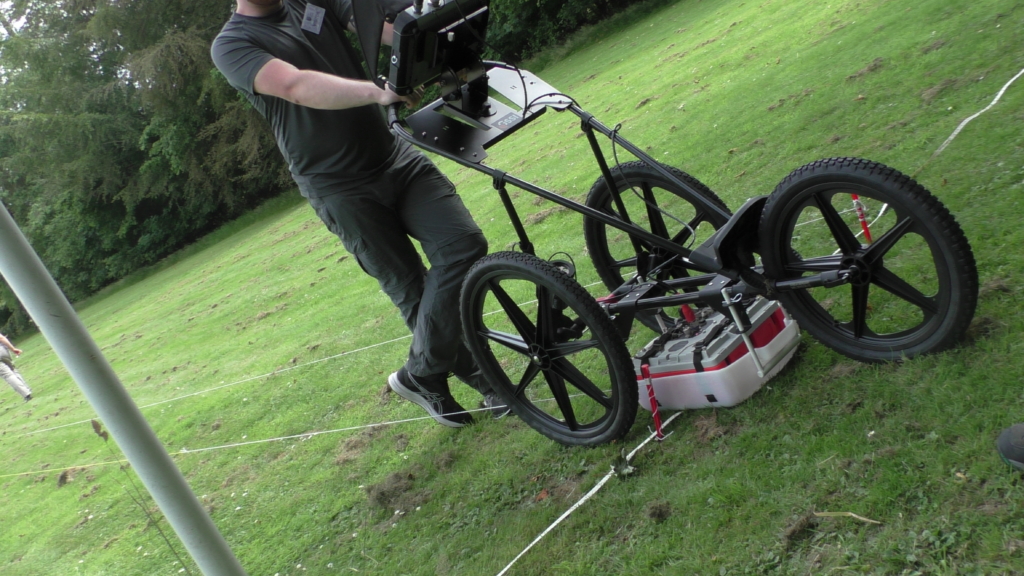
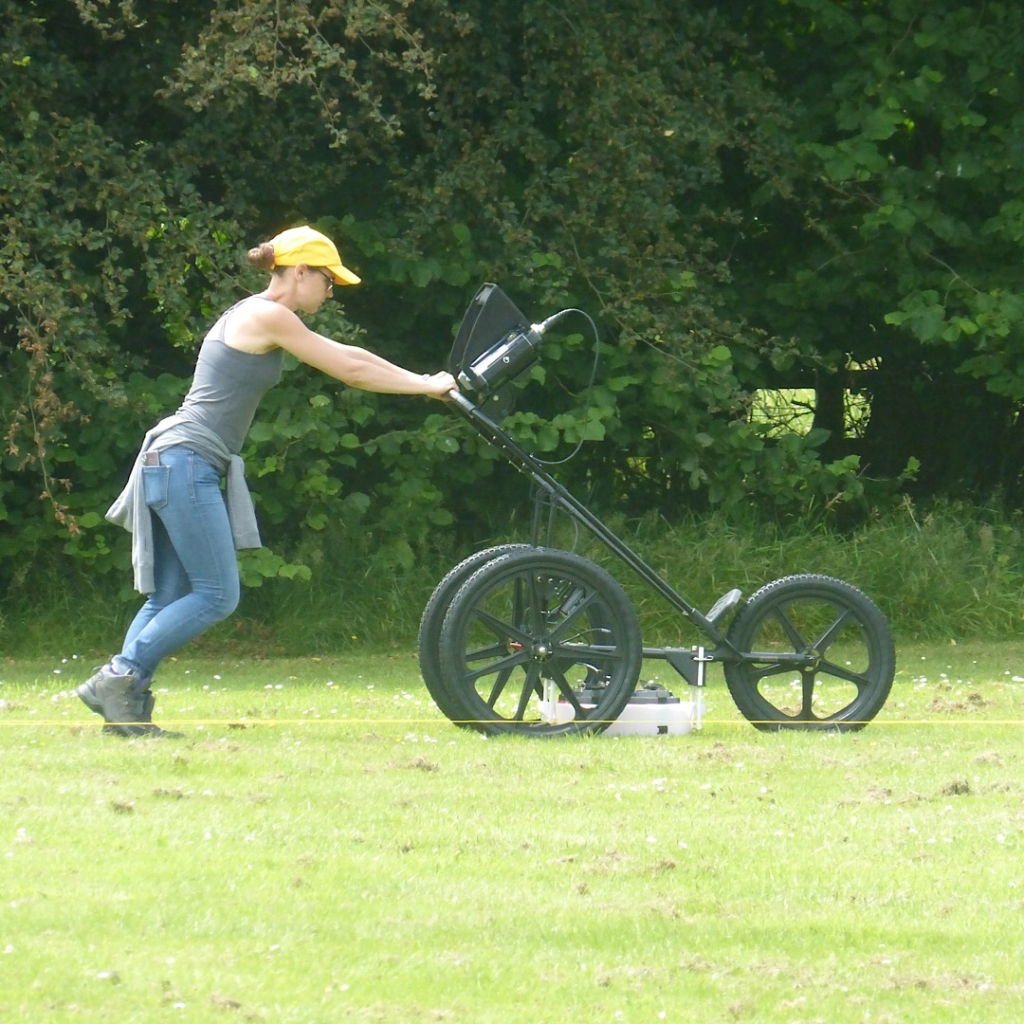
The first test pit 1 is started and is almost adjacent to the Sports Hall.
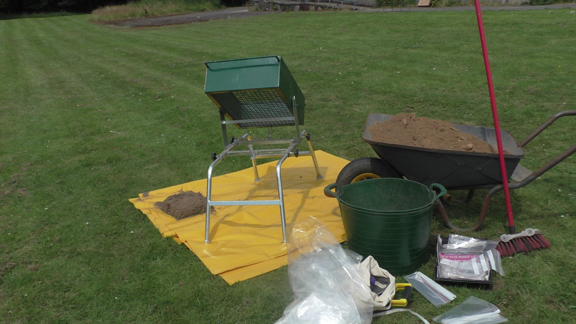
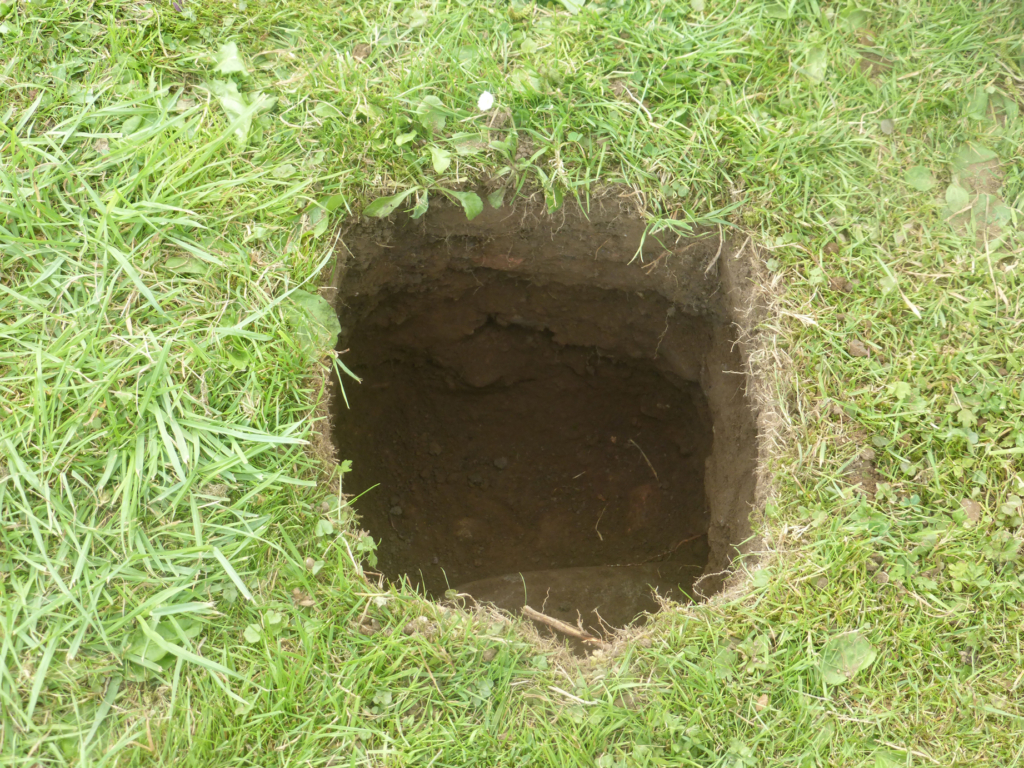
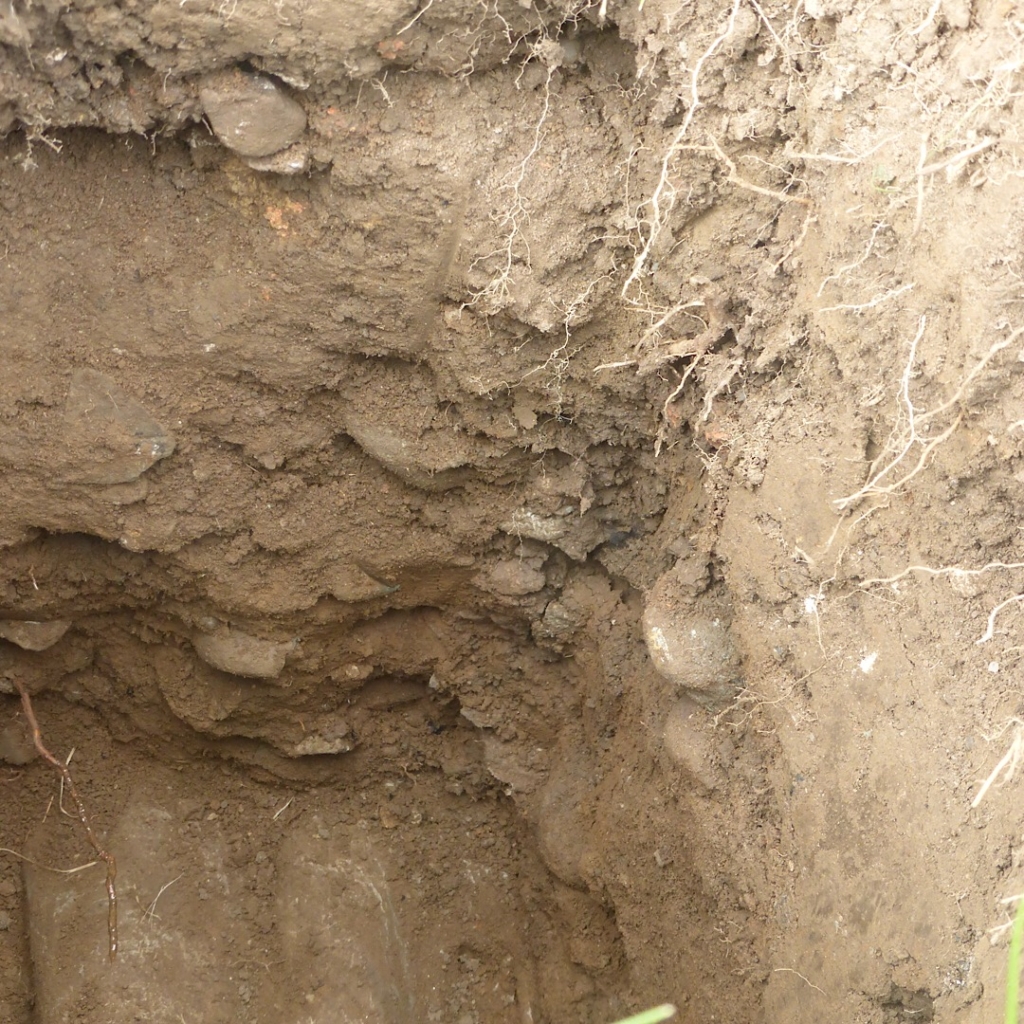
In the meantime Fiona Marley Patterson and Brendan arrive from ITV Border Television and stay for the morning – filming and interviewing the archaeologists and the days’ activities. They individually interview Caroline, Trevor, Paige and Eleanor, Ken Pickering – History Department, Lakes School – and Liz Walker about the Flying Boat Factory and Shorts Brothers.
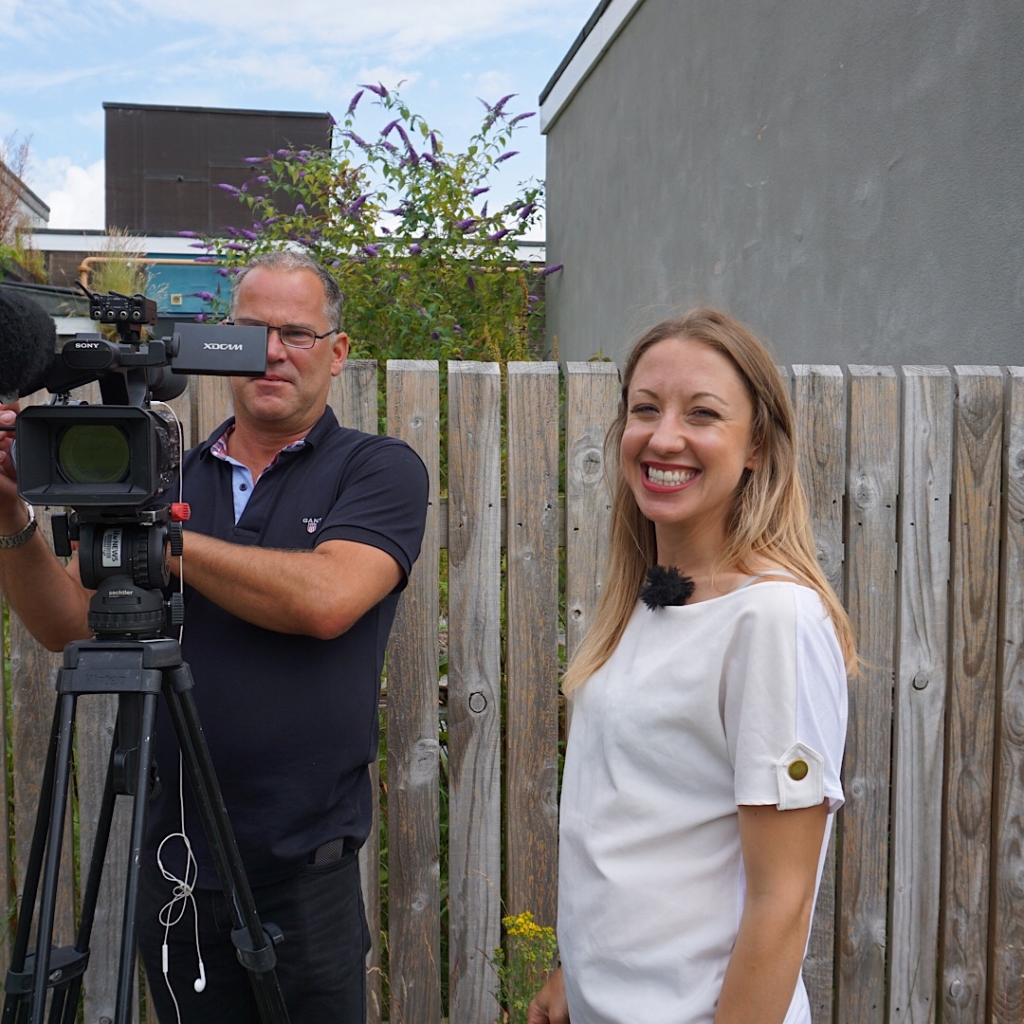
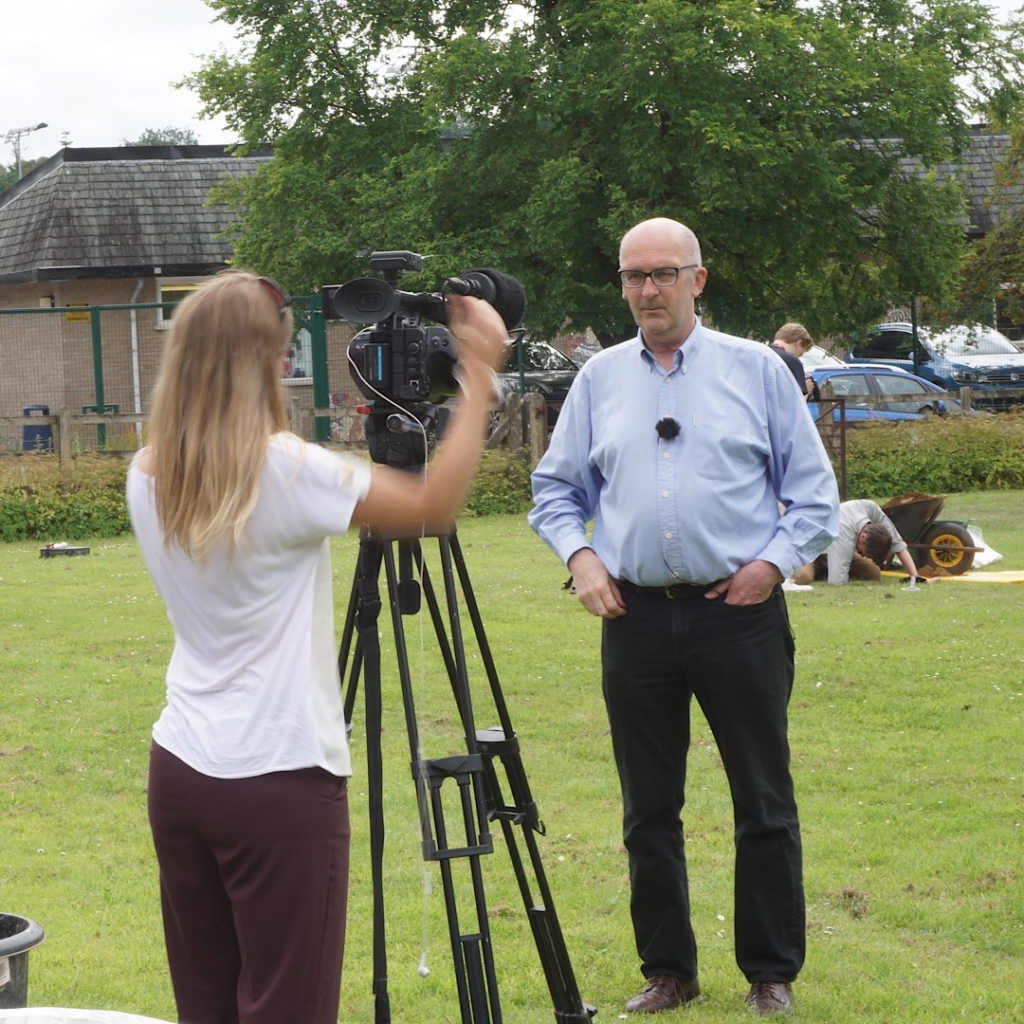
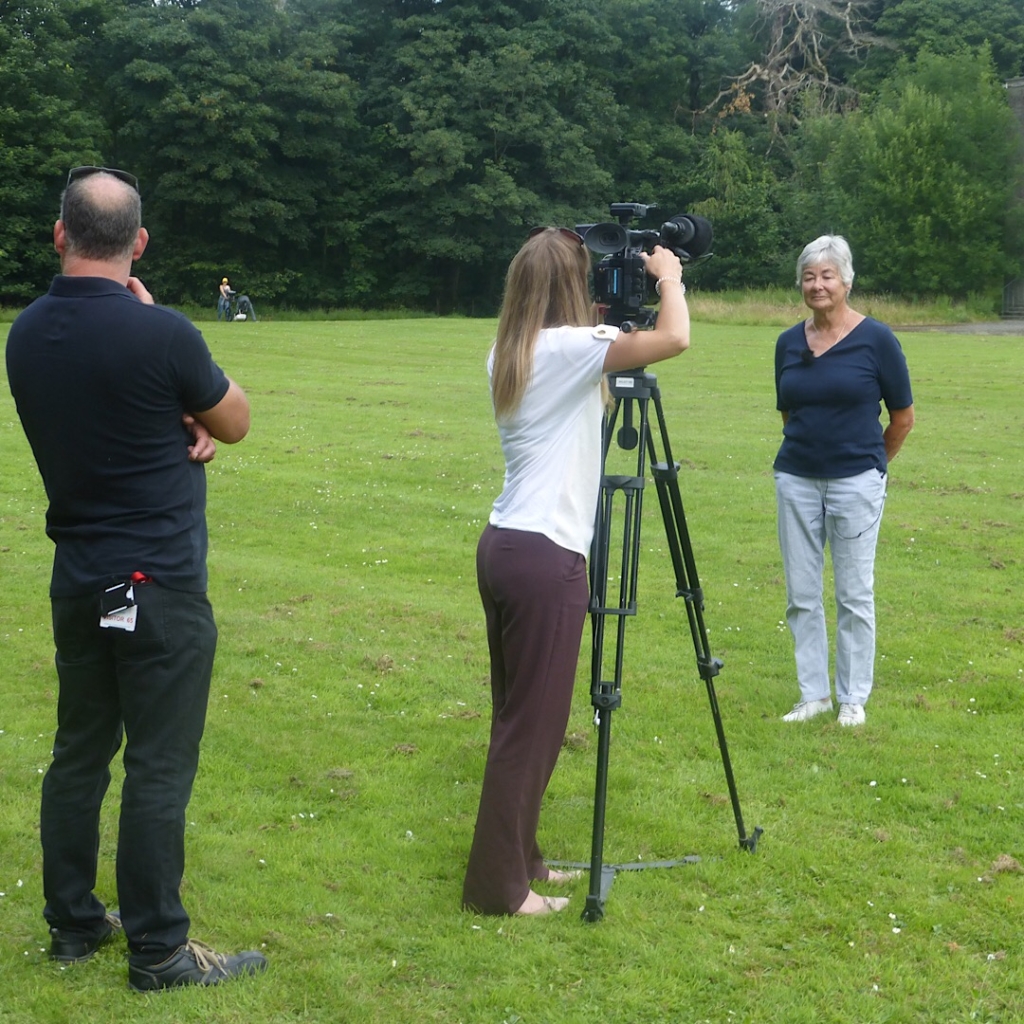
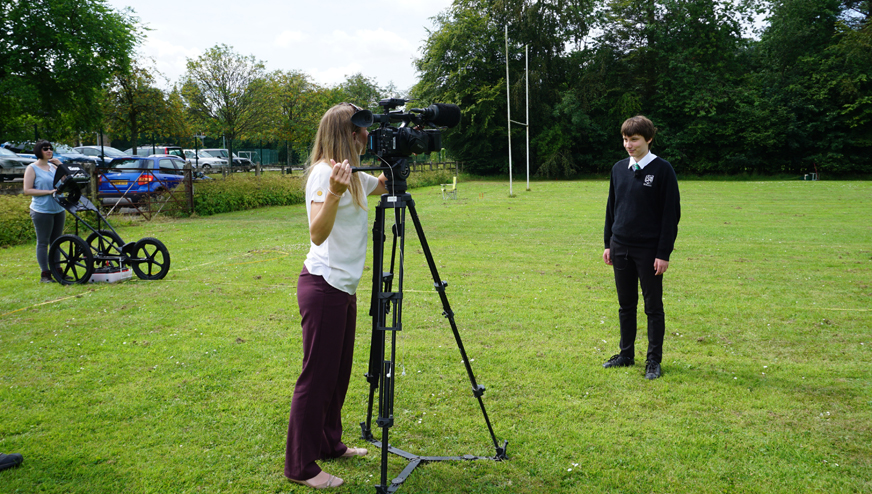


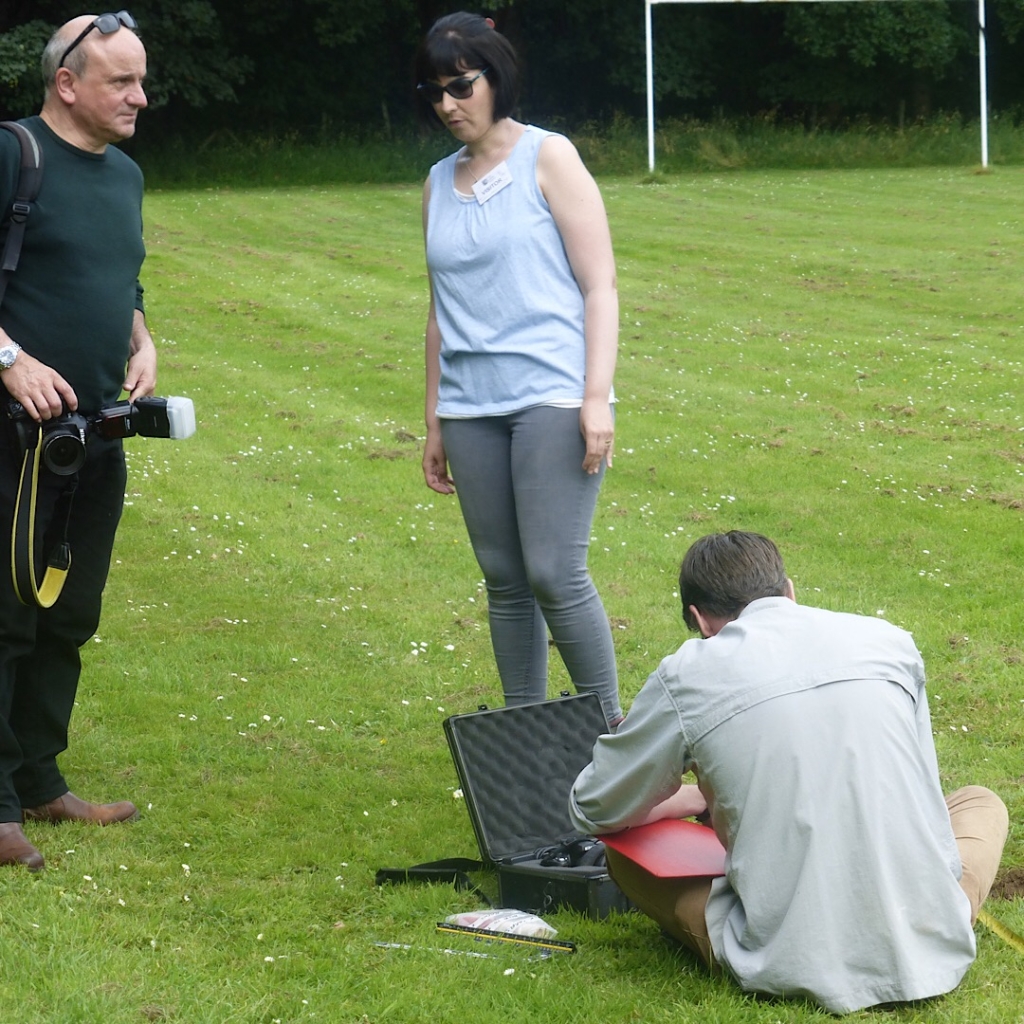
Dave Ward is also here today to record some photographs of the dig.
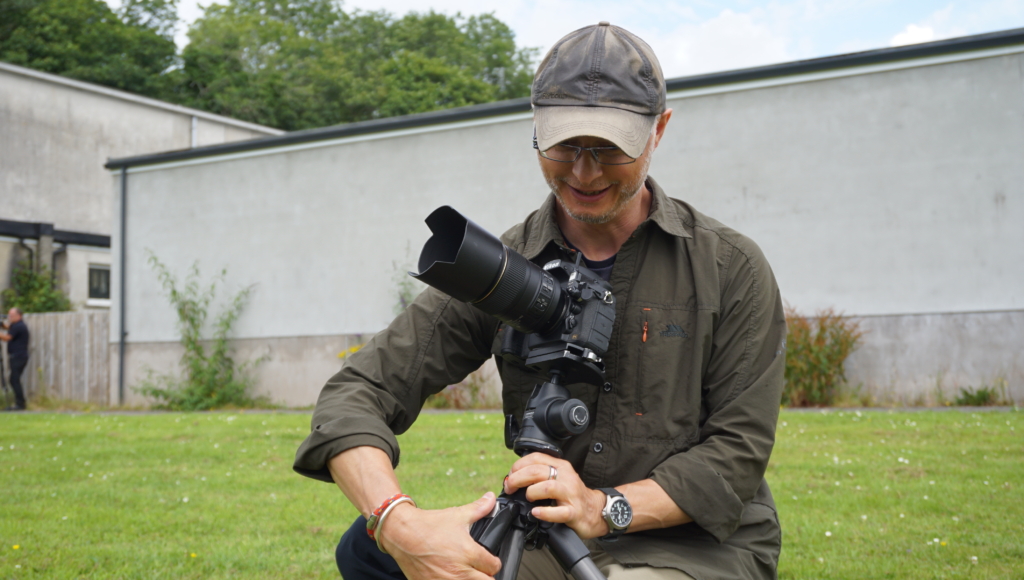
Work begins on sifting and sieving some of the earth from the test pit. Eleanor and Paige help with washing or brushing some of the artefacts – such as brick, glass or pottery thoroughly. These are left to dry before they are stored.
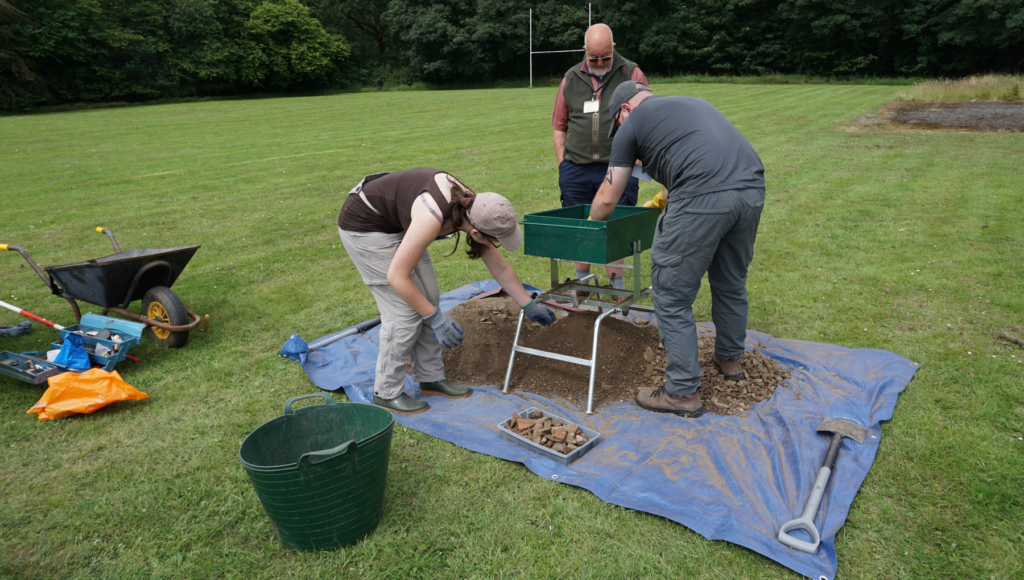
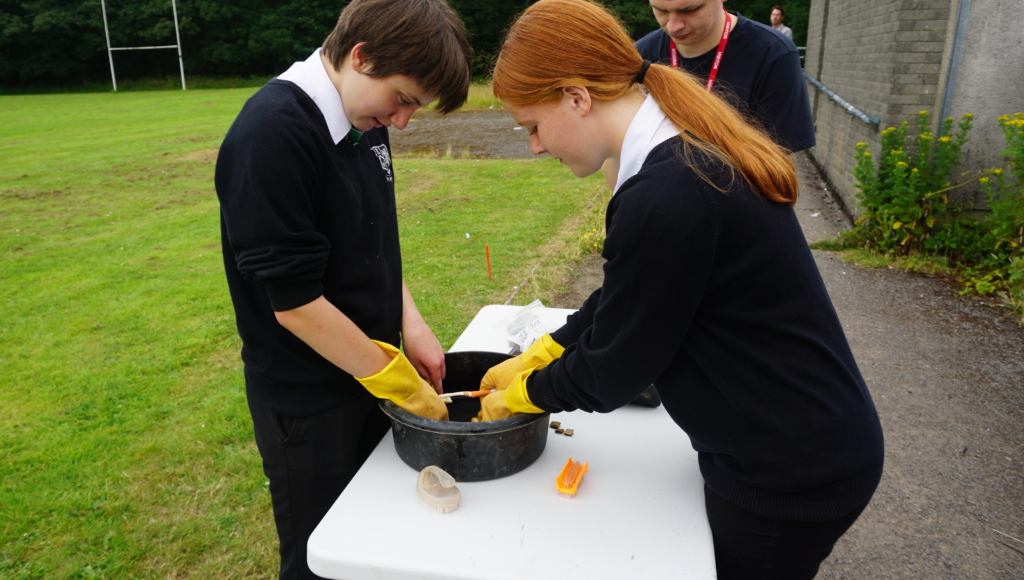
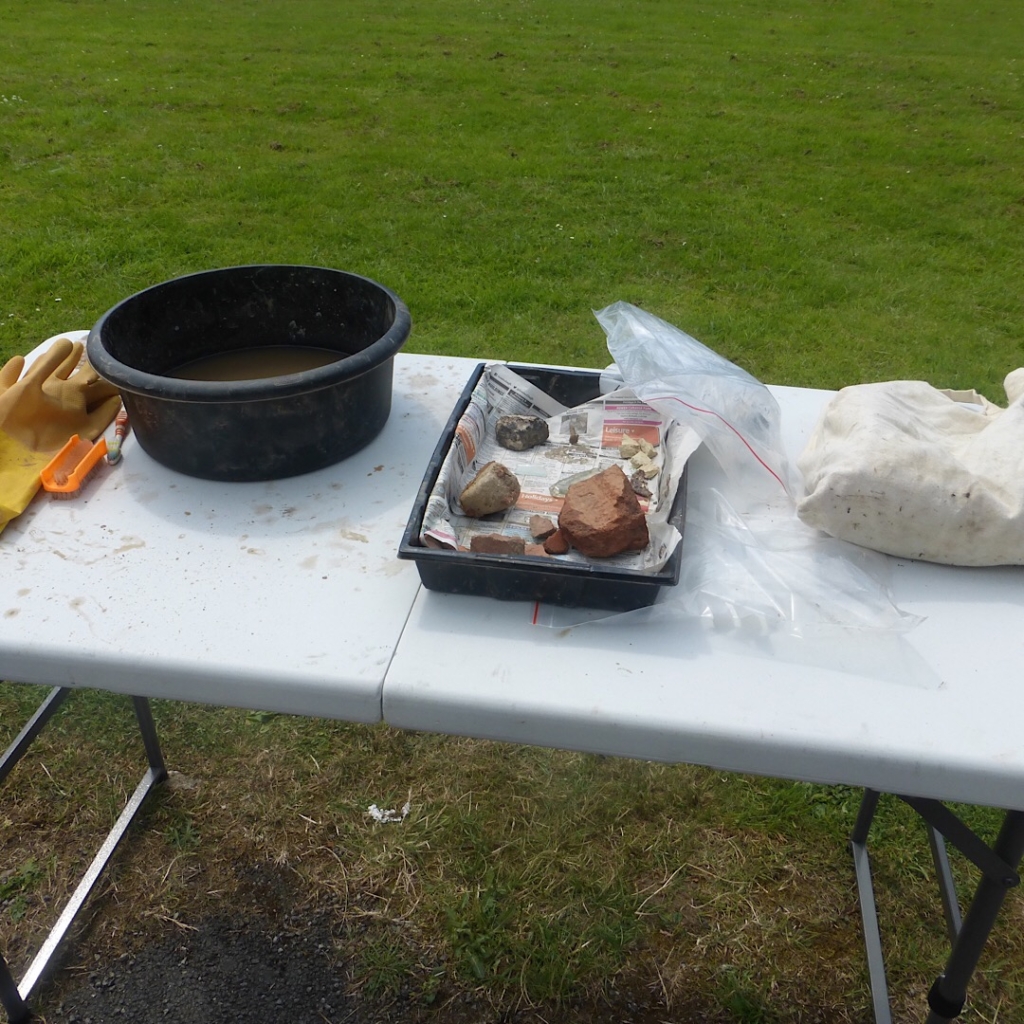
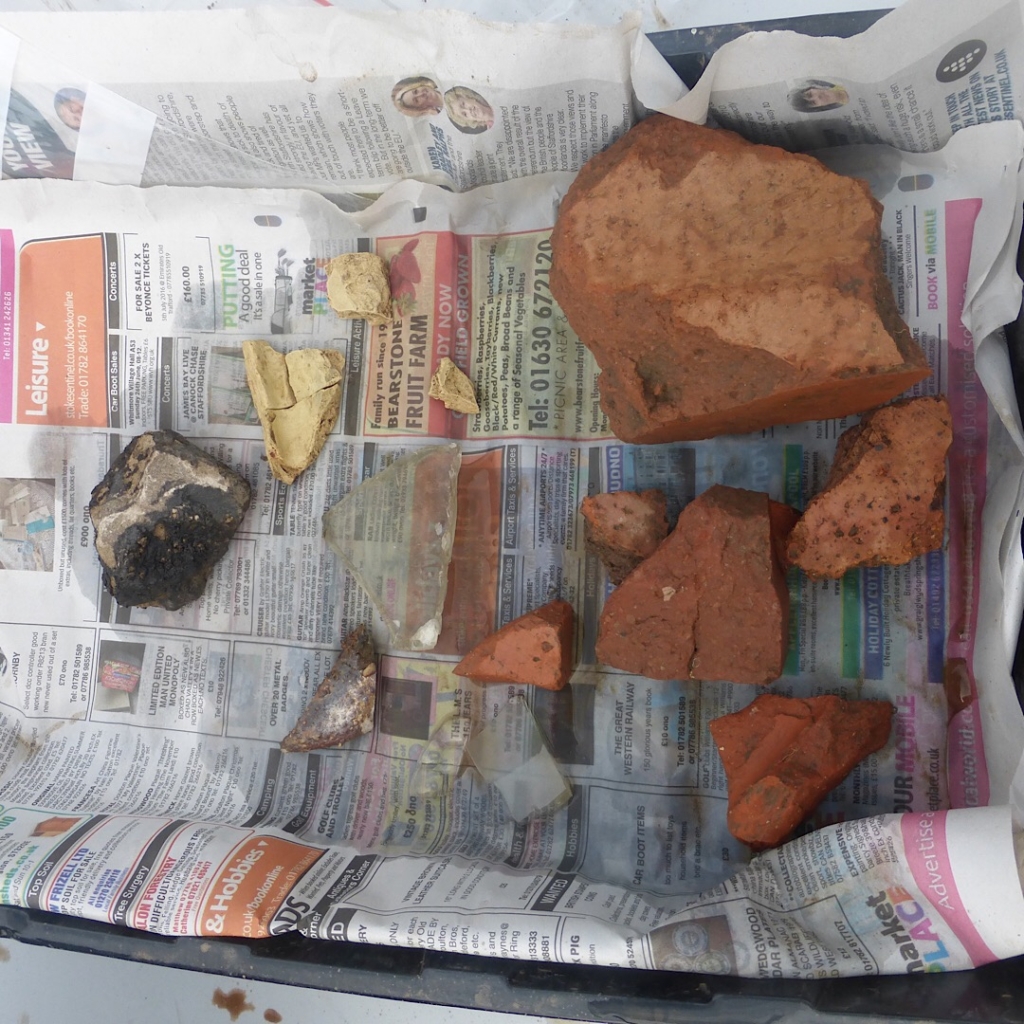
Eleanor and Paige are delighted with their archaeological experience
“So close to us and it’s local and to think that people walked on that land years ago….it’s crazy to think that they had a school and houses that are so close to our school.
Really lucky to be able to do this, really interesting recovering history that has been lost and forgotten…
Other people are not going to get the chance to discover what we have discovered. Proud to think that we have helped and it’s a really thrilling experience.”
In the afternoon a second test pit 2 is dug and soil removed. Will’s arm is a guide to the initial depth!
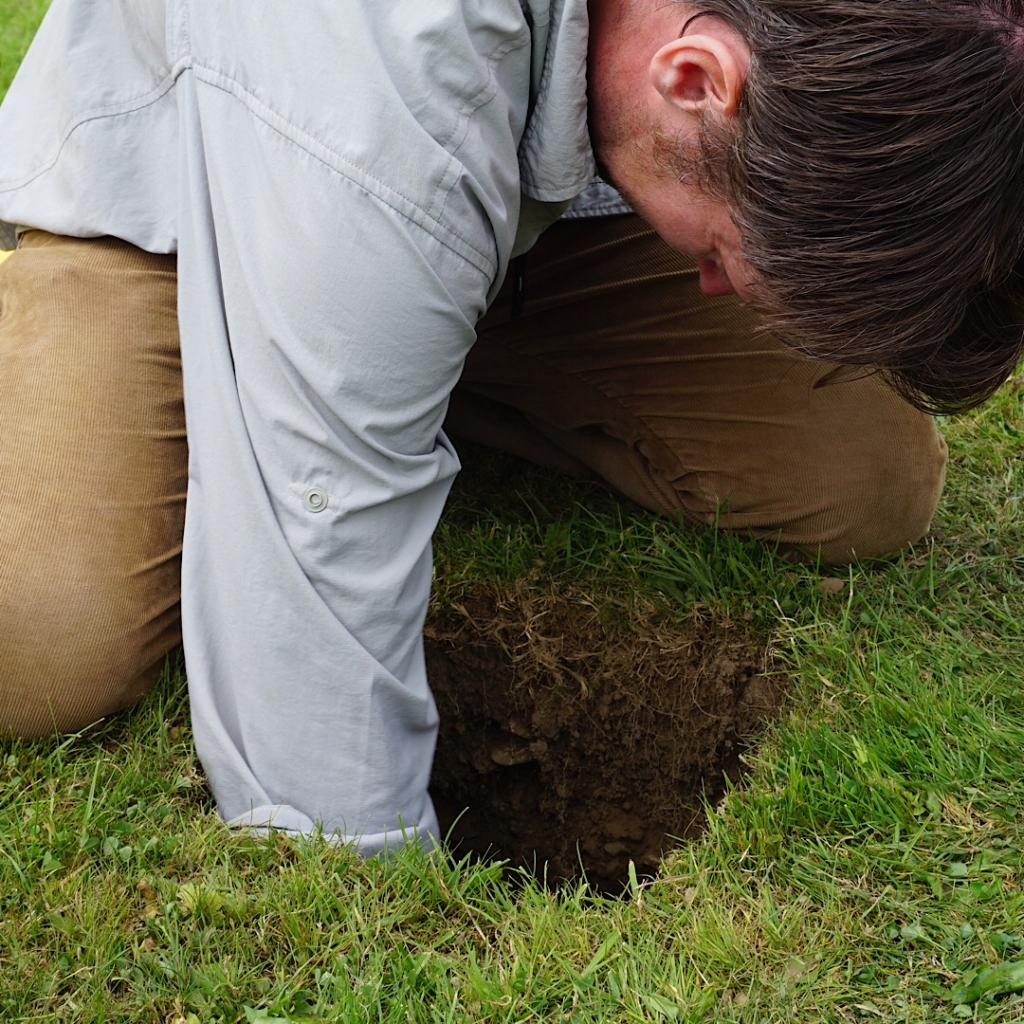
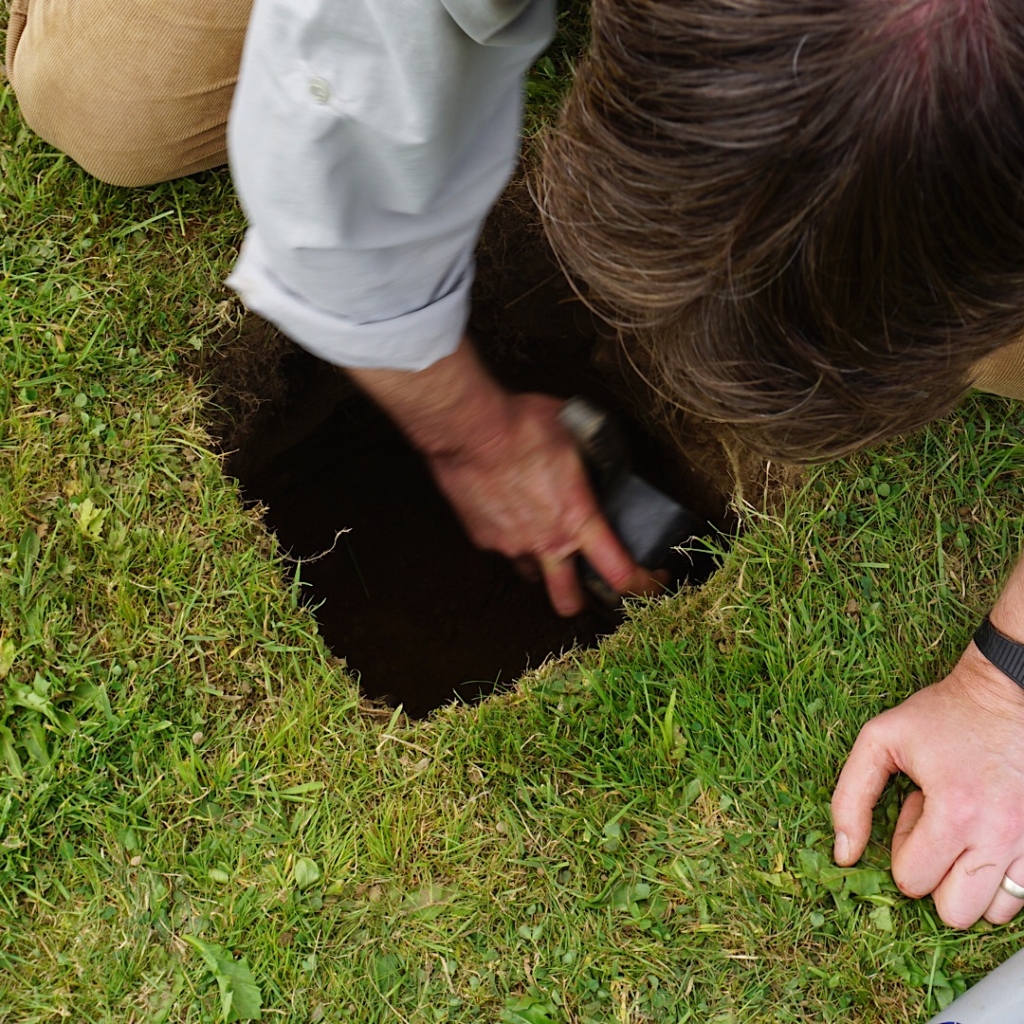
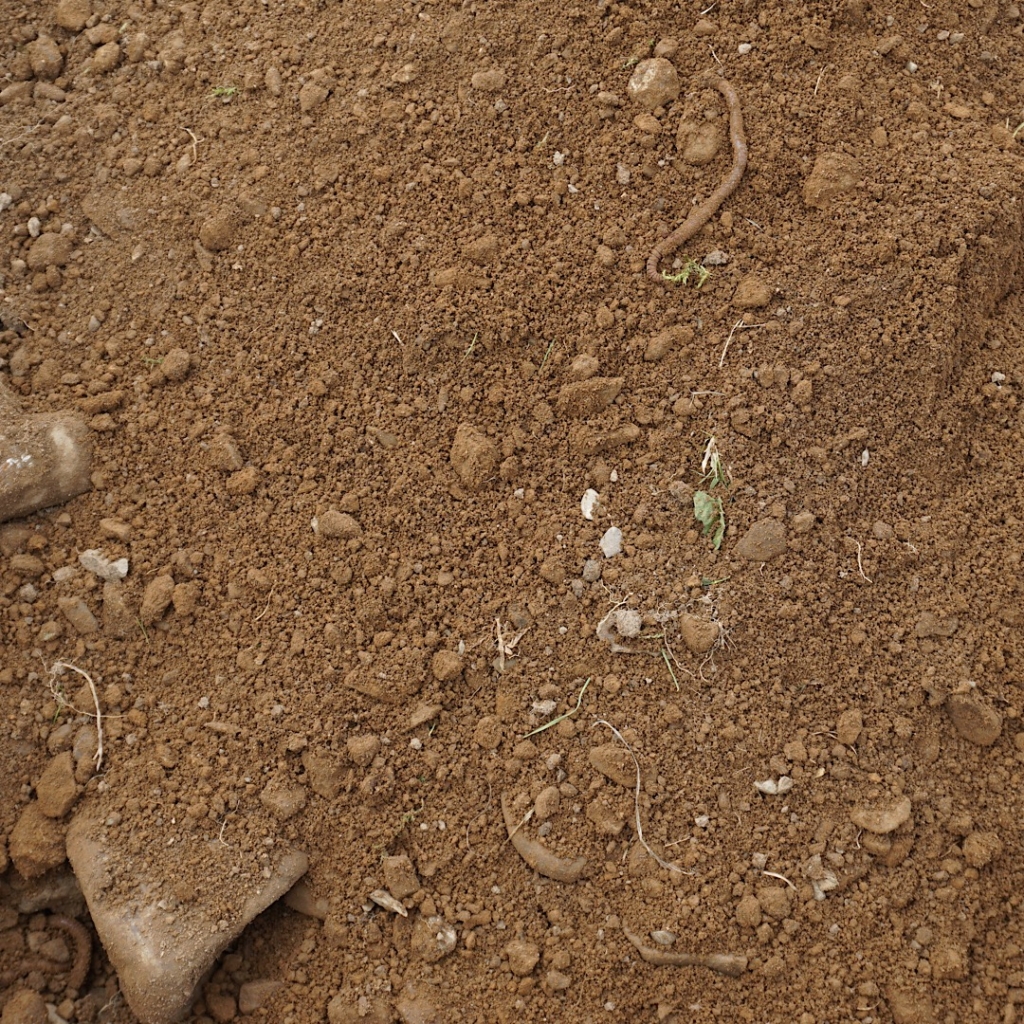
Serenity Rullo and Alyssa Salt take over volunteer duties and immediately start recording images.
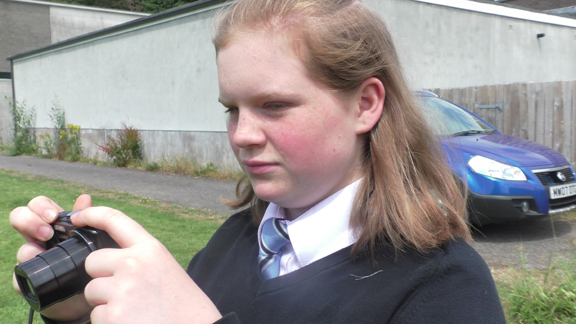
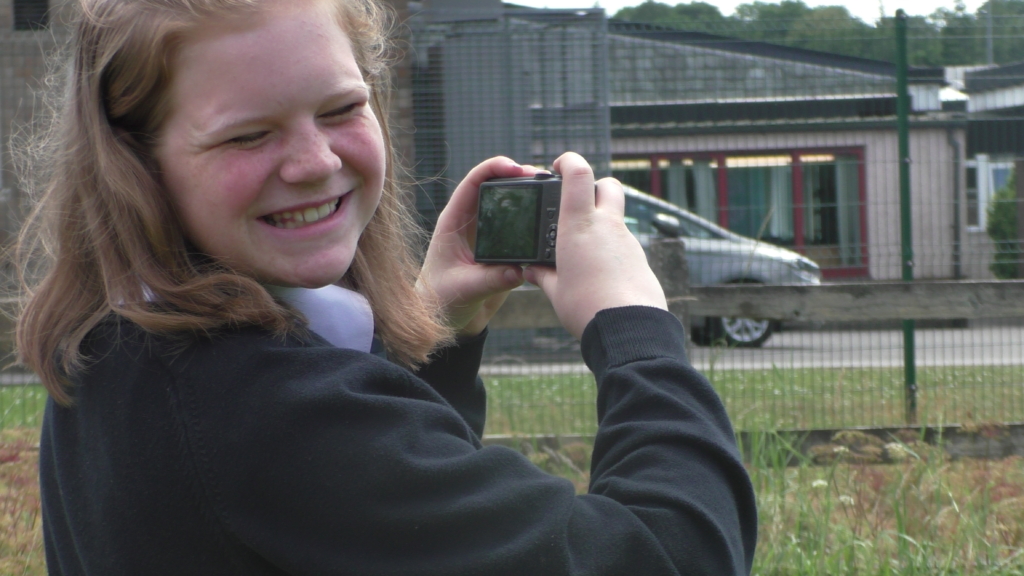
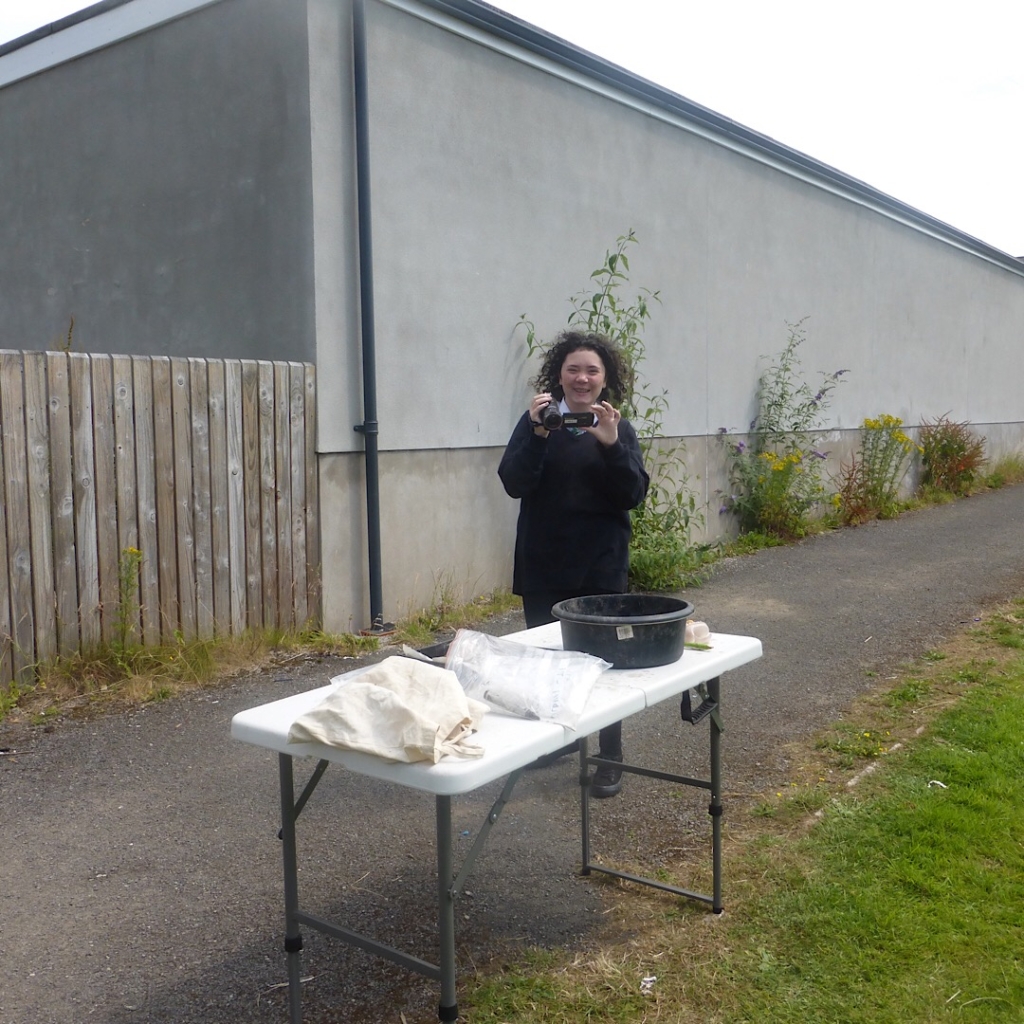
Ken Pickering and Catherine Hird begin to bring different classes in during the day to see both the exhibitions in the Sports Hall and the archaeological dig. Trevor briefly explains about the project to them. The U.K. branch of Yad Vashem also arrive to install an exhibition entitled ‘No Child’s Play’.
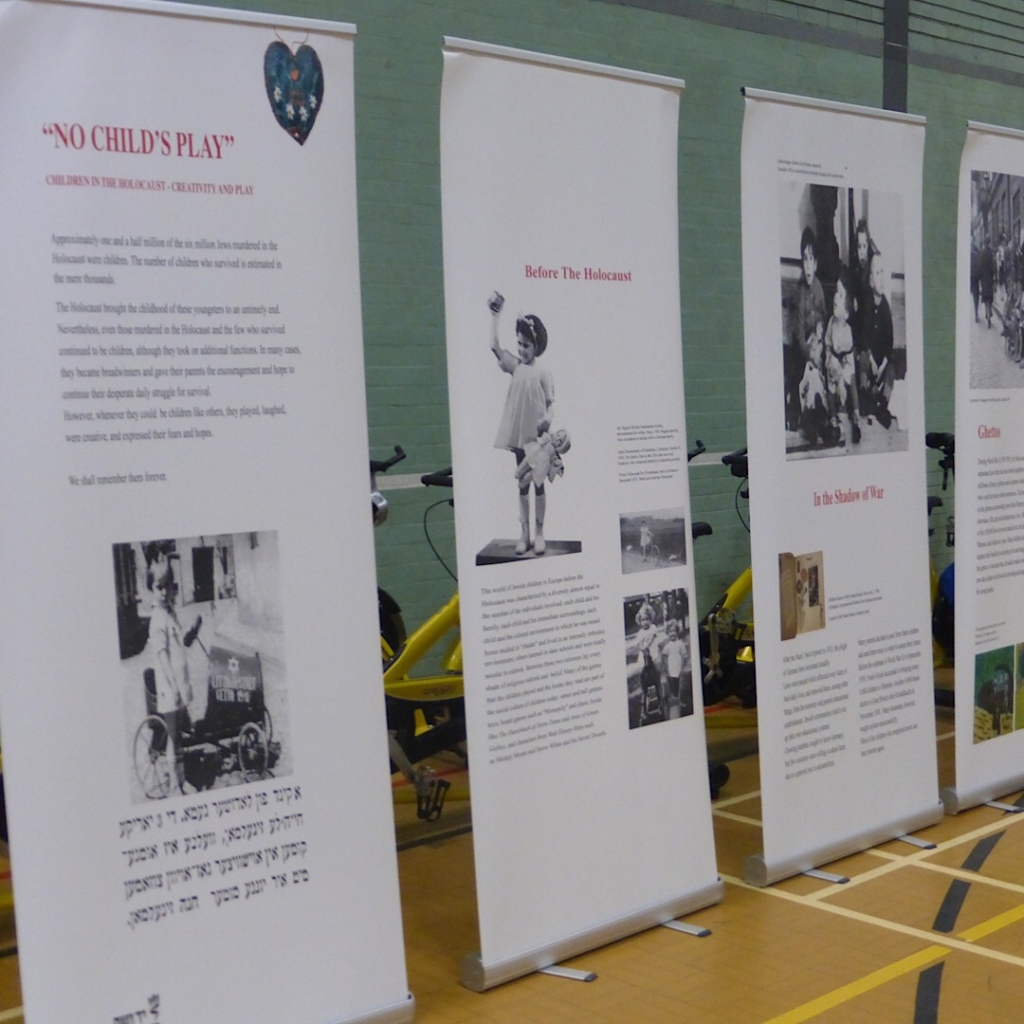
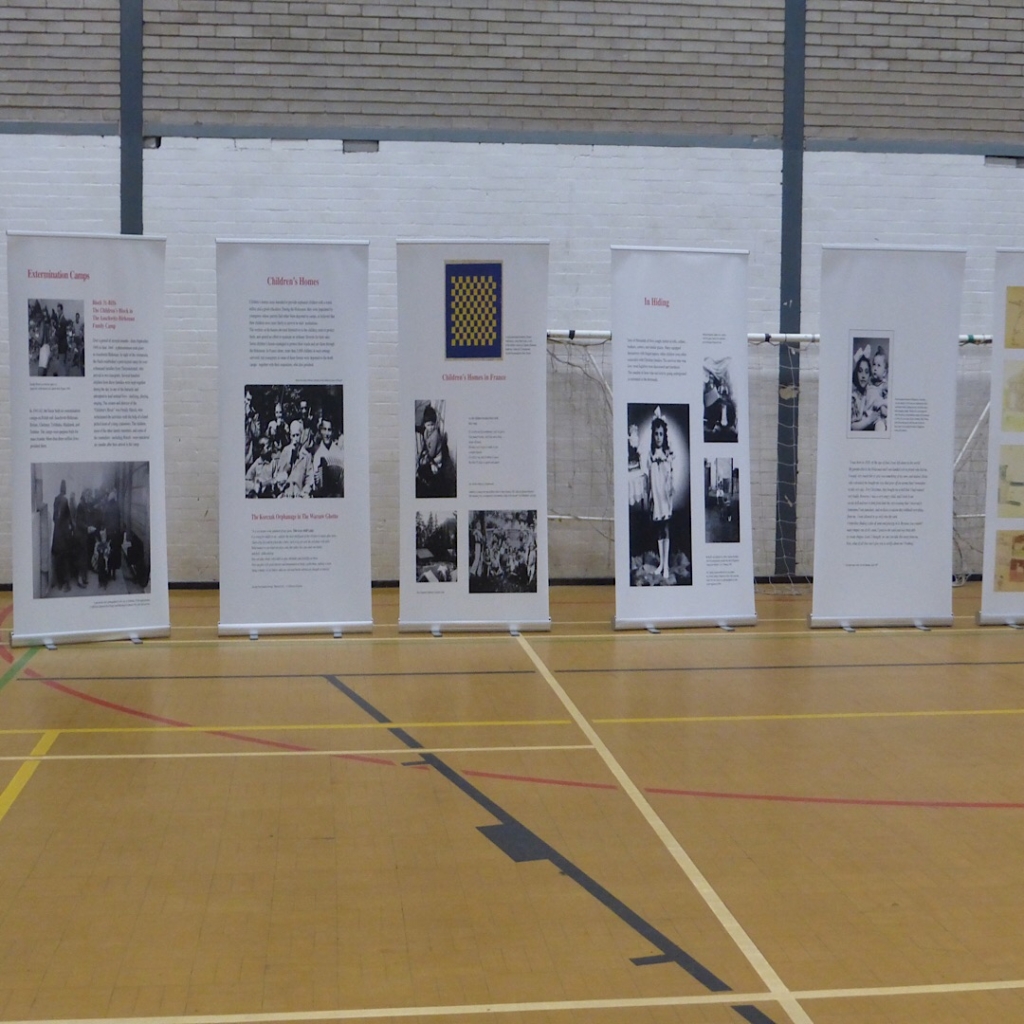
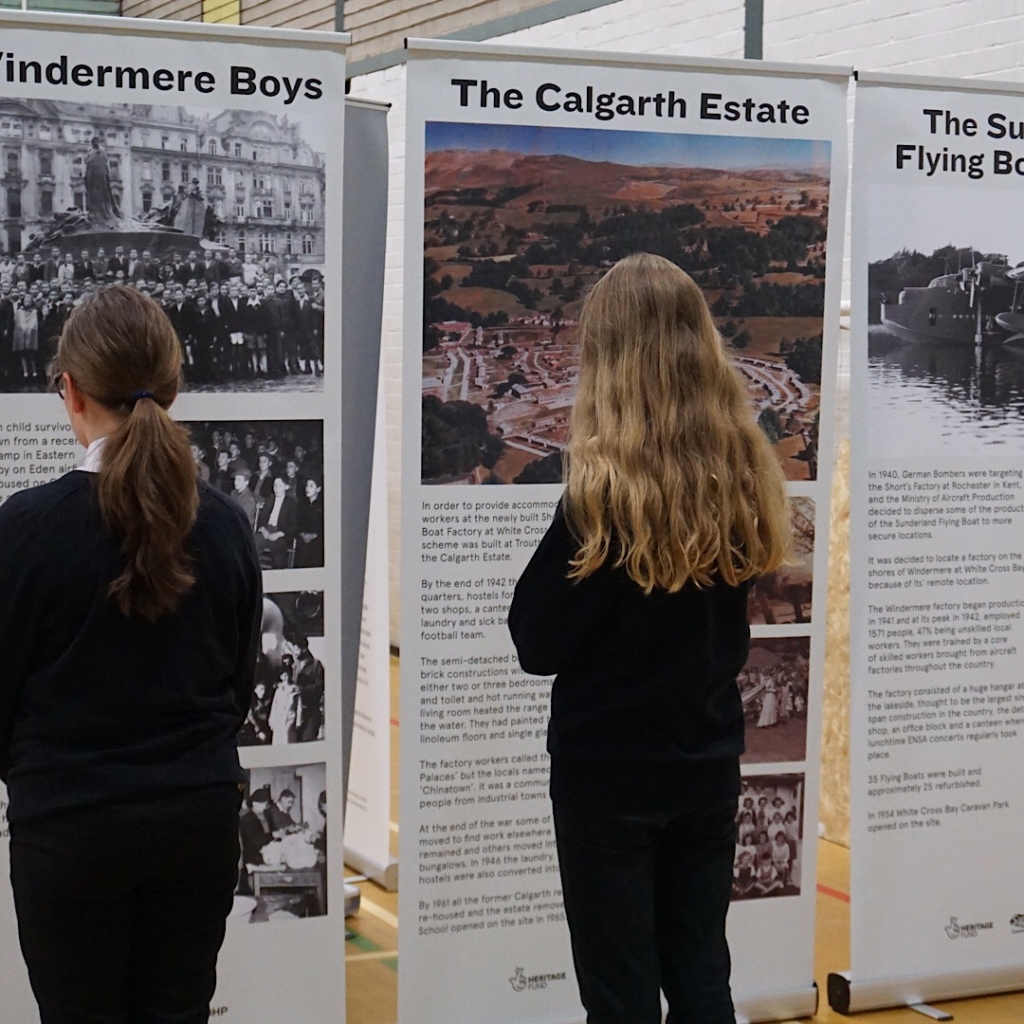
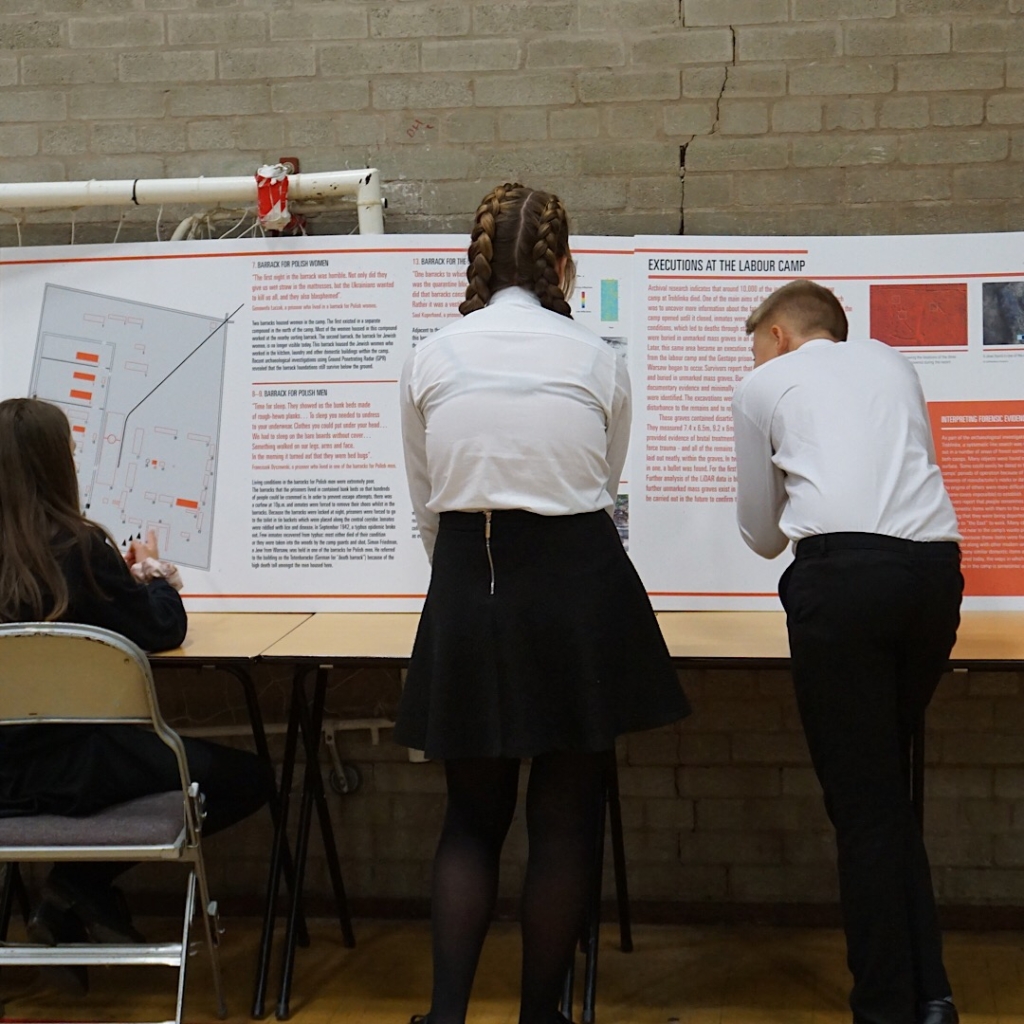
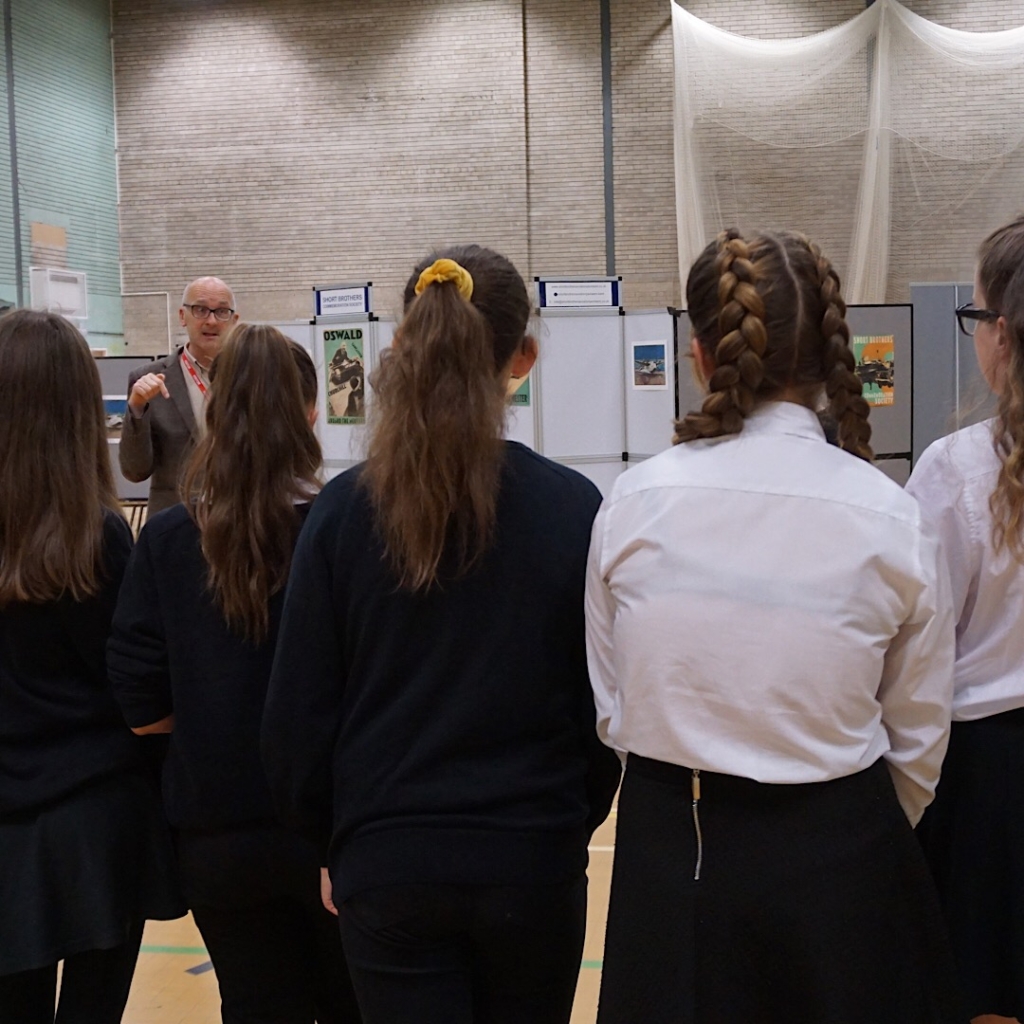
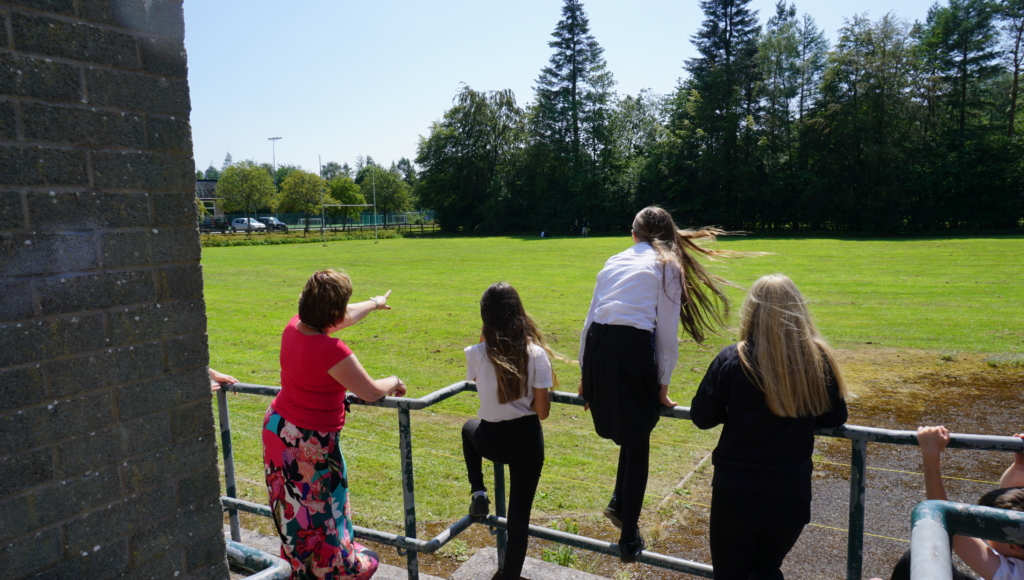
Jane and Andrew Elleray call in and show us a photograph of their father at the site of the then new primary school that he helped to build. They remembered the nursery part of the school was used as the art studio when the Lakes School was built. “I can always remember the polished floors – and the smell of the wooden herringbone floors after the summer holidays. It was all nice and shiny.”
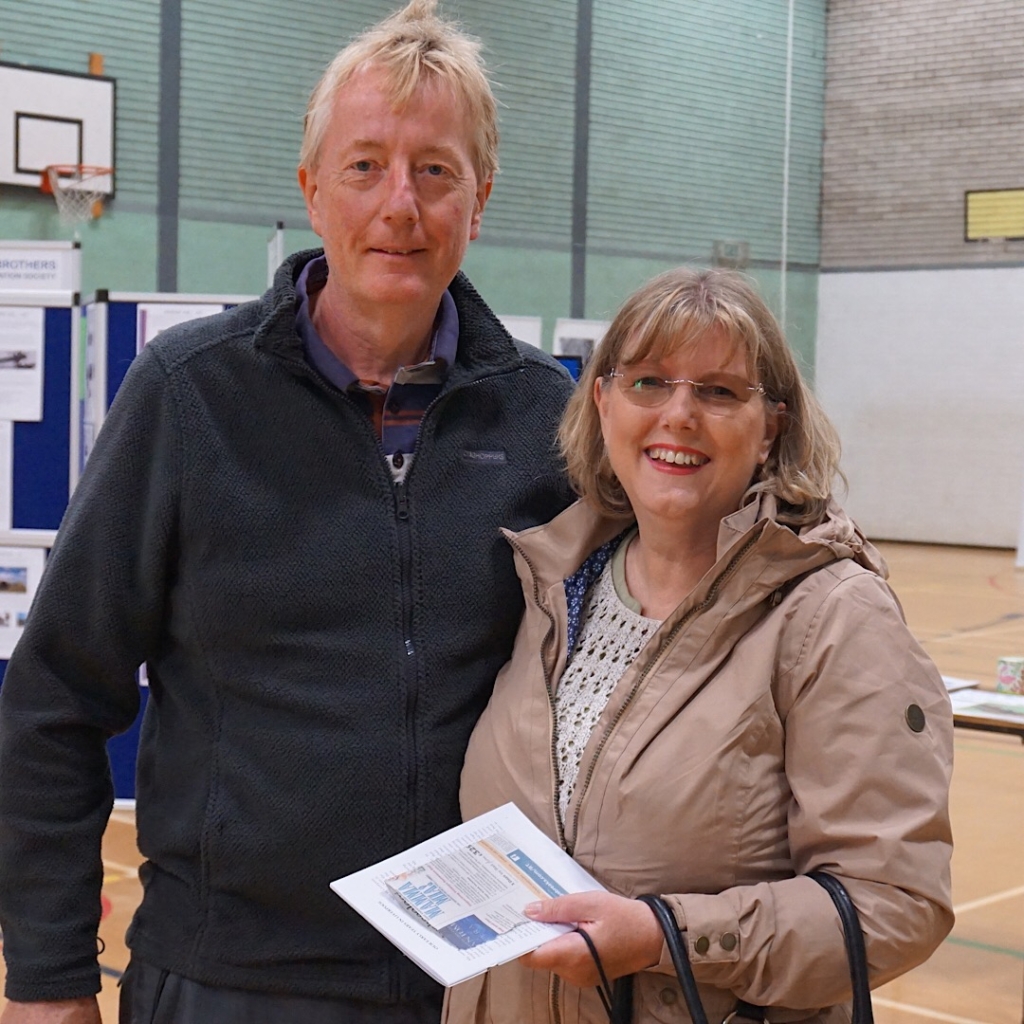
It is decided to close the second test pit since this revealed little and to concentrate on a larger test pit at the first site in the morning.
Day 3
Kevin and Will decide to extend a larger test pit 3 as there were interesting artefacts found on the 16th. They start by measuring a section and cutting out the turf very neatly so they will be able to replace it.
Keiron Thexton starts to help. He found news of the dig on our page on the Festival of Archaeology site and volunteered to help. He has had some previous experience at archaeological digs on other sites, including Swarthmoor Hall and at Ravensglass in the area adjacent to the Roman bath house.
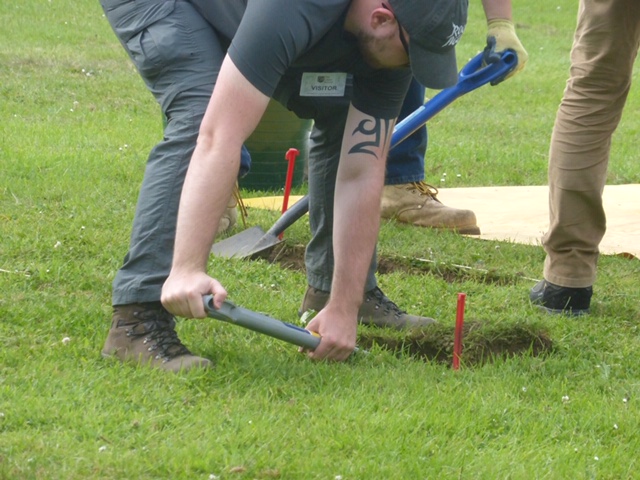



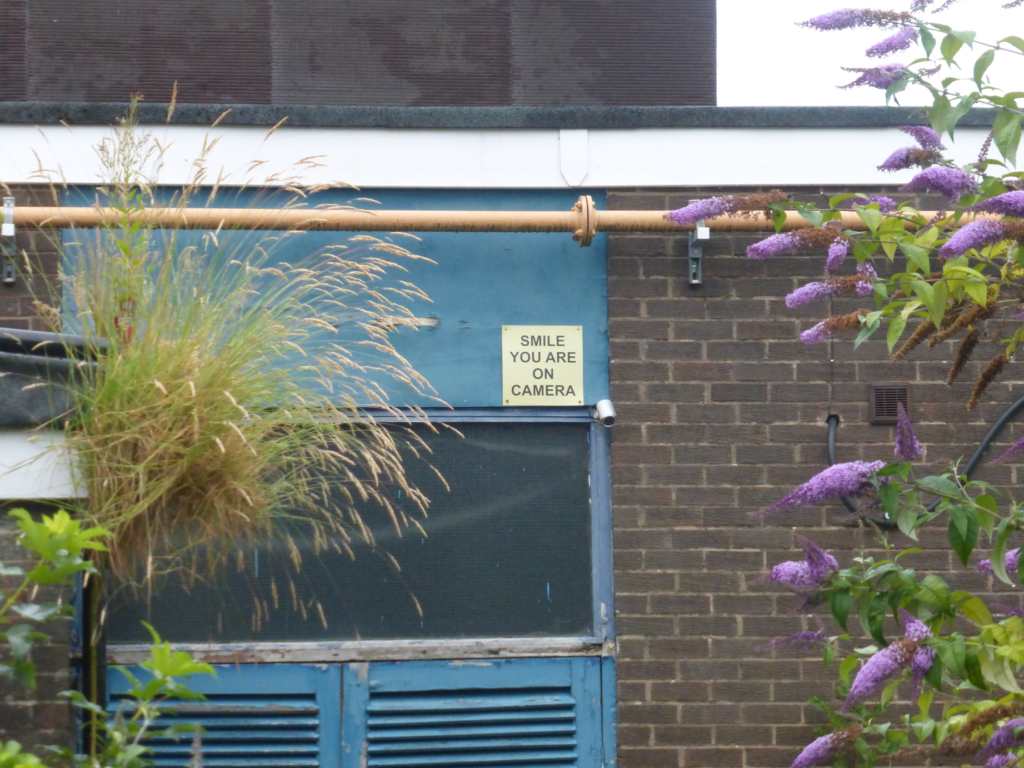
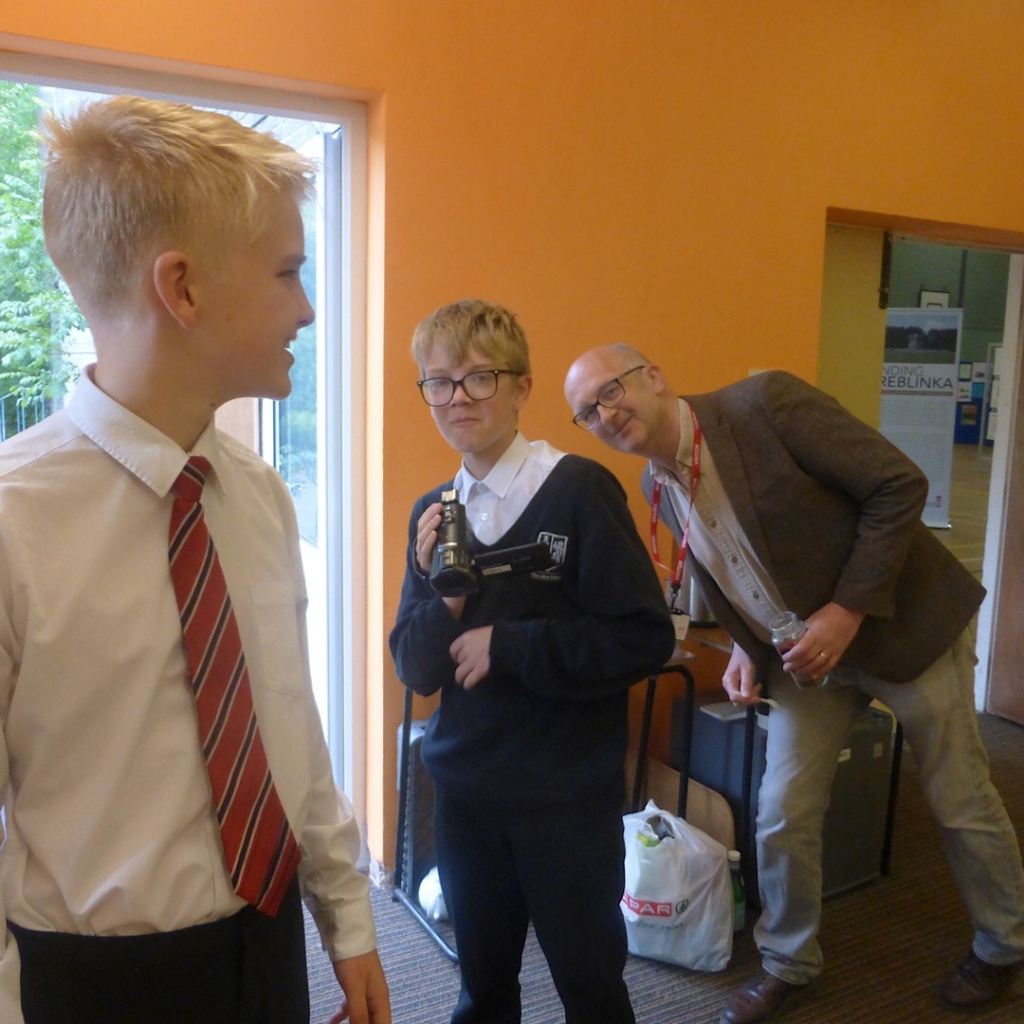
Year 8 students Theo Parkyn and Daniel Lafferty arrive – firstly for their photo call with us and then to take photographs themselves…even the wildlife appear to be watching!
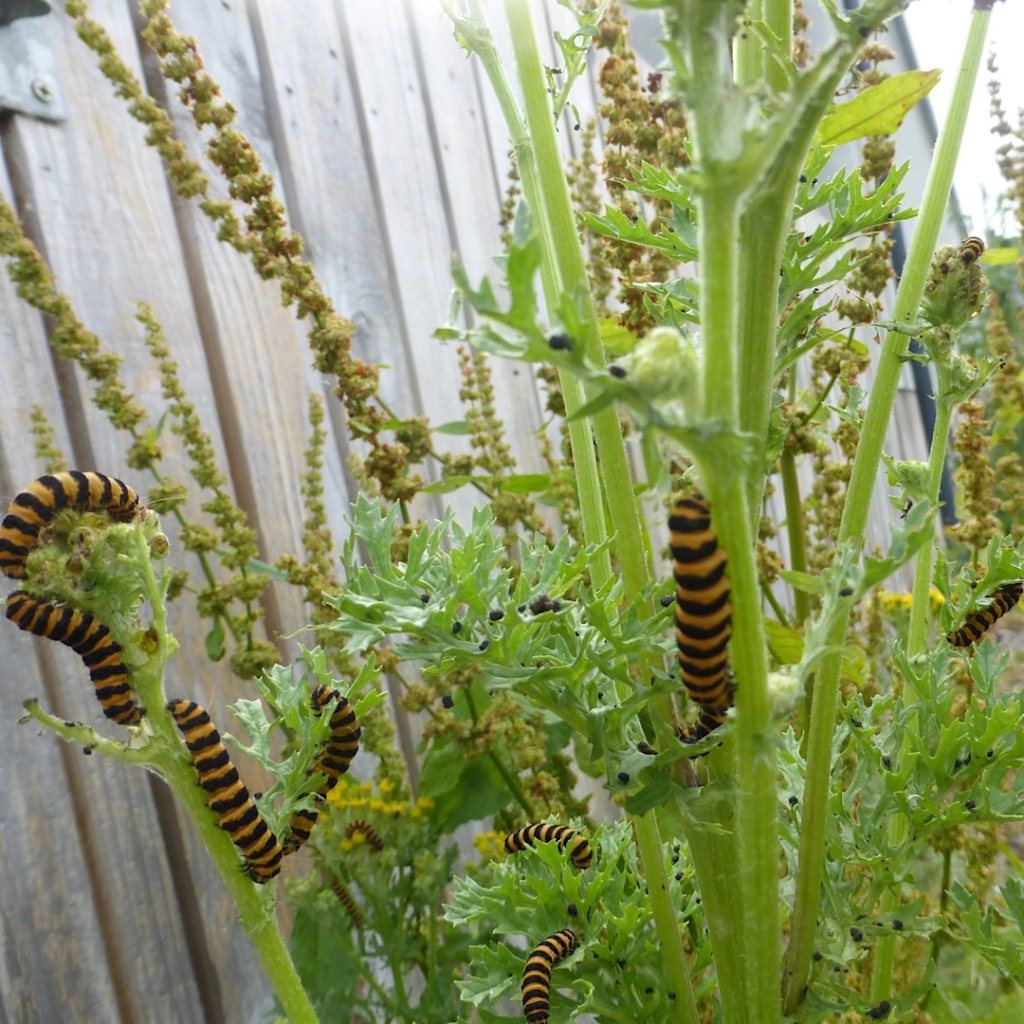
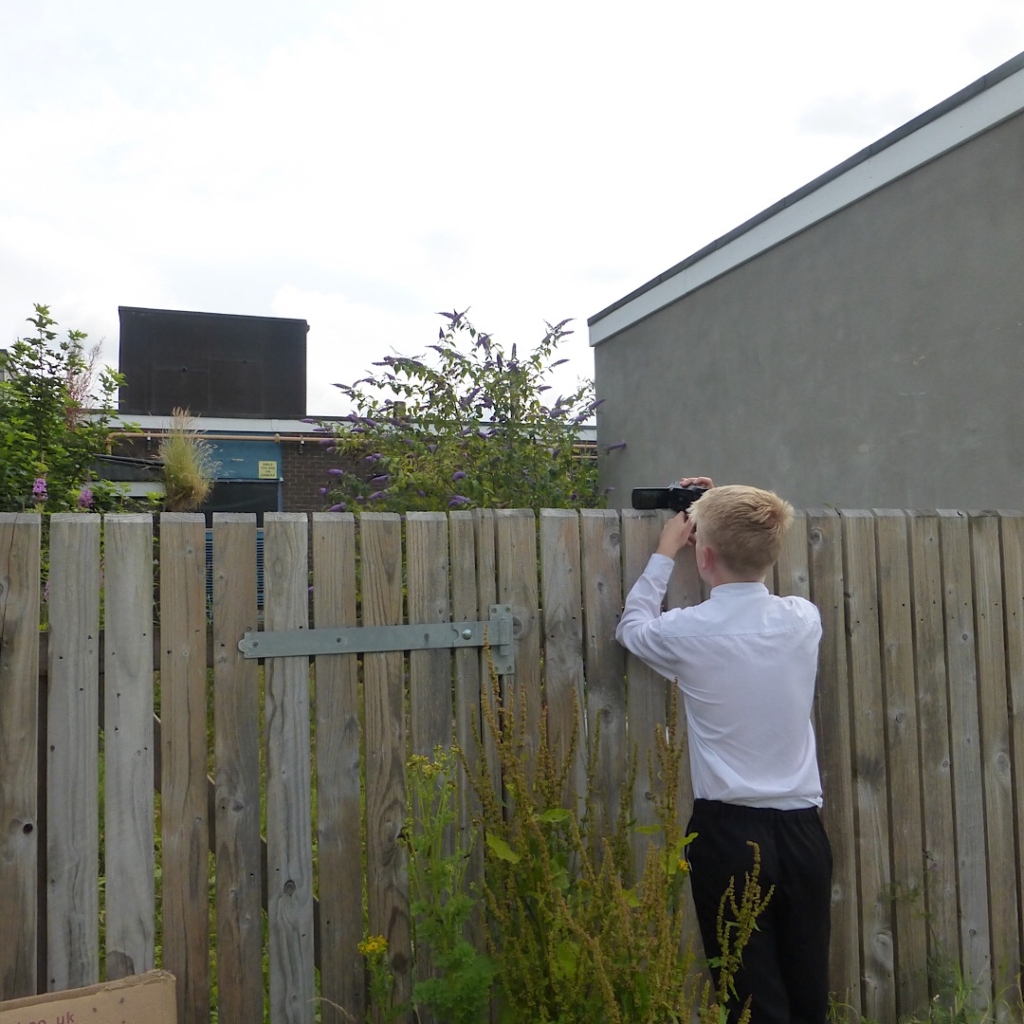

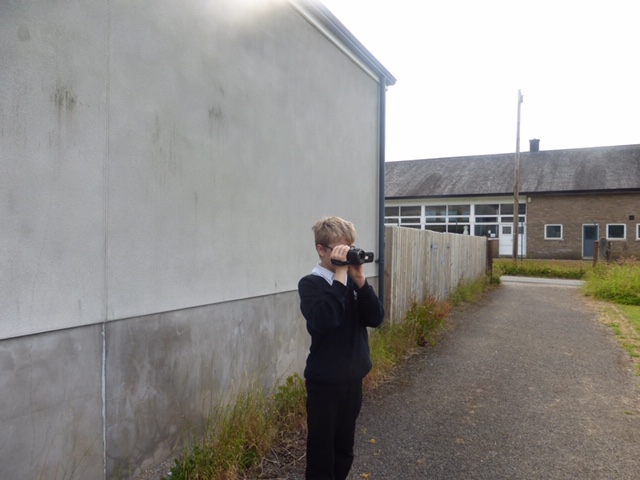

The first layer of earth is revealed and the turf put to one side.


Then begins the slow and careful removal of the soil, the sieving and examination of the contents.
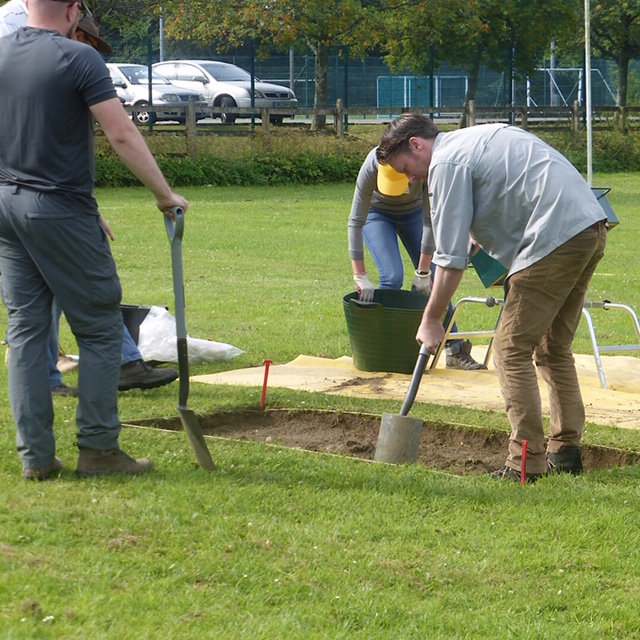
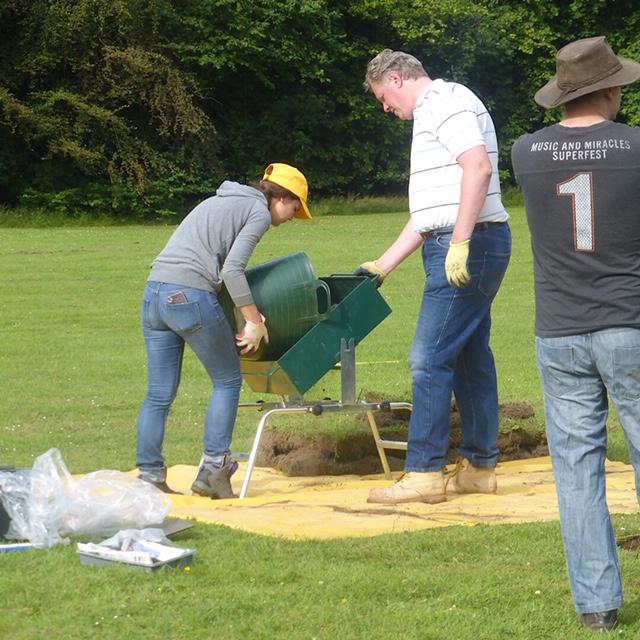
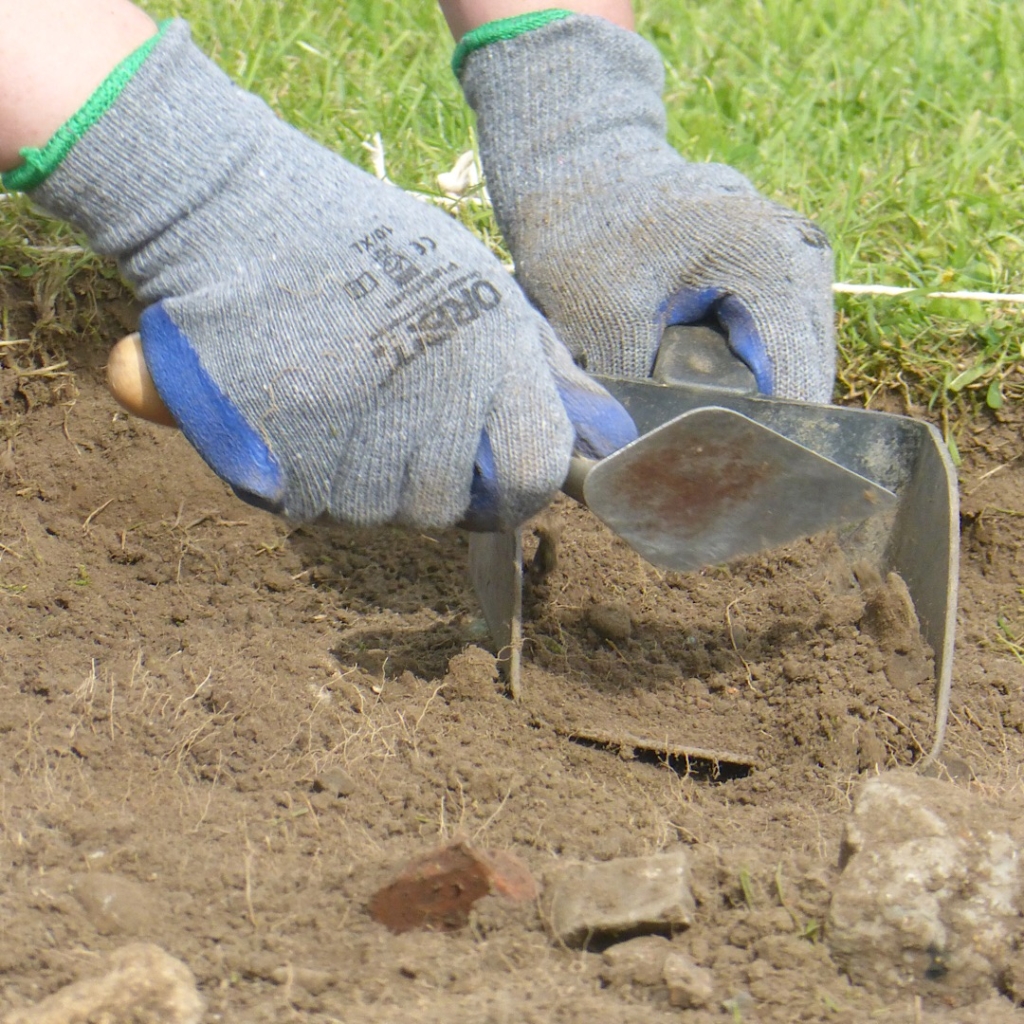
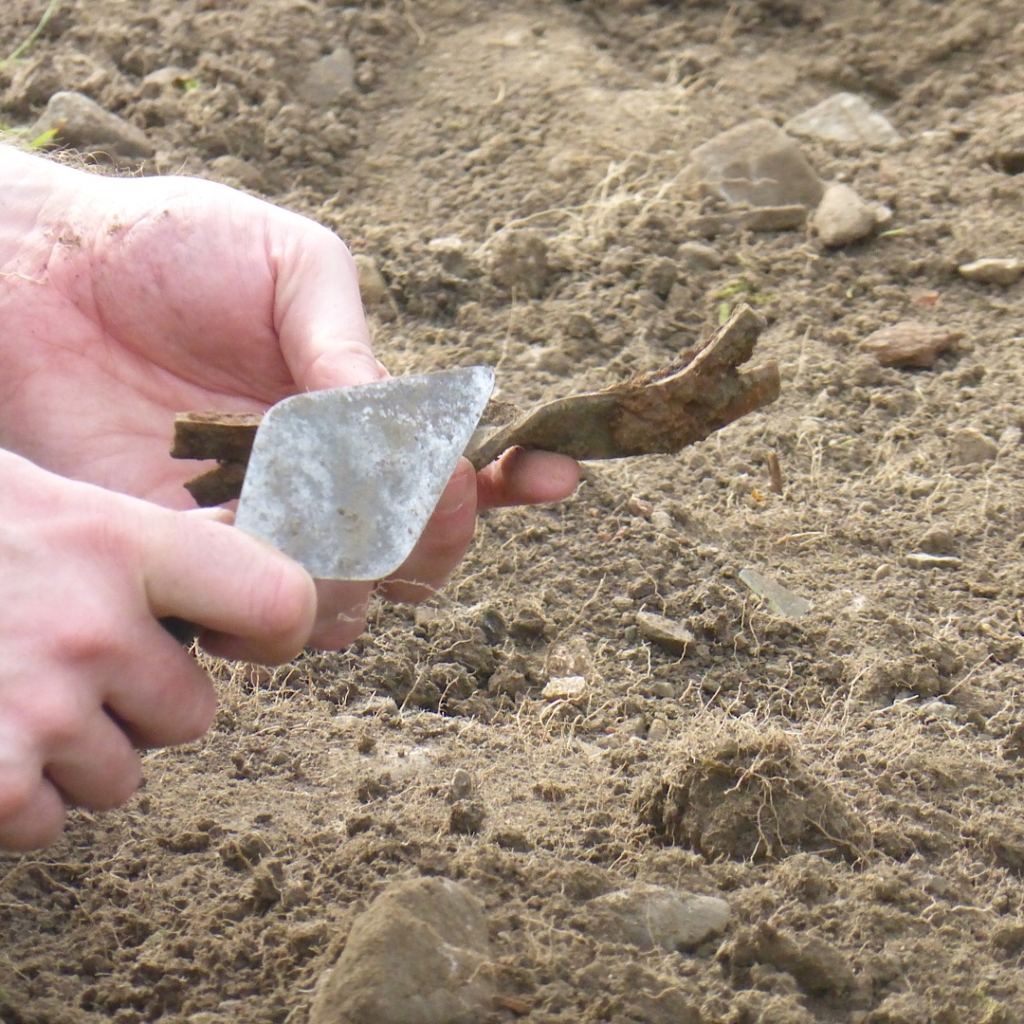
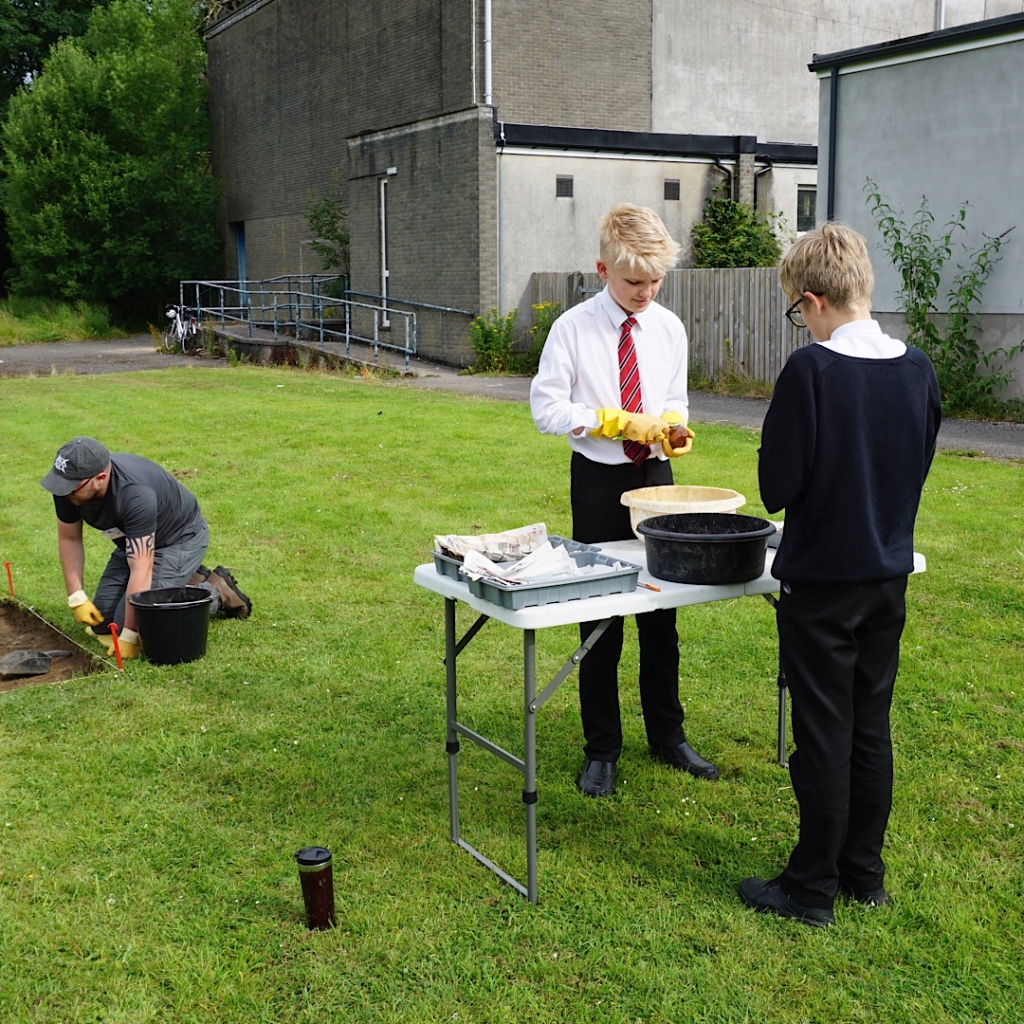
As the layers progress, similar artefacts are discovered amongst what was probably the demolition that was deposited when the bungalows were demolished – – bricks, glass and tar macadam – possibly parts of a former road or one removed from Calgarth in the sixties? Several bricks have some text – Theo calls one he has cleaned ‘Aron’!



In the afternoon, the archaeologists are joined by Jamie Thomson and Joshua Lassey who also work incredibly hard, immediately cleaning and drying the samples. By this stage plastic aprons have been found – to avoid even more washing afterwards! In between they explore the field with metal detectors and mark possible finds on a drawing.

Students continue to call in to see the exhibition and watch the progress of the dig.
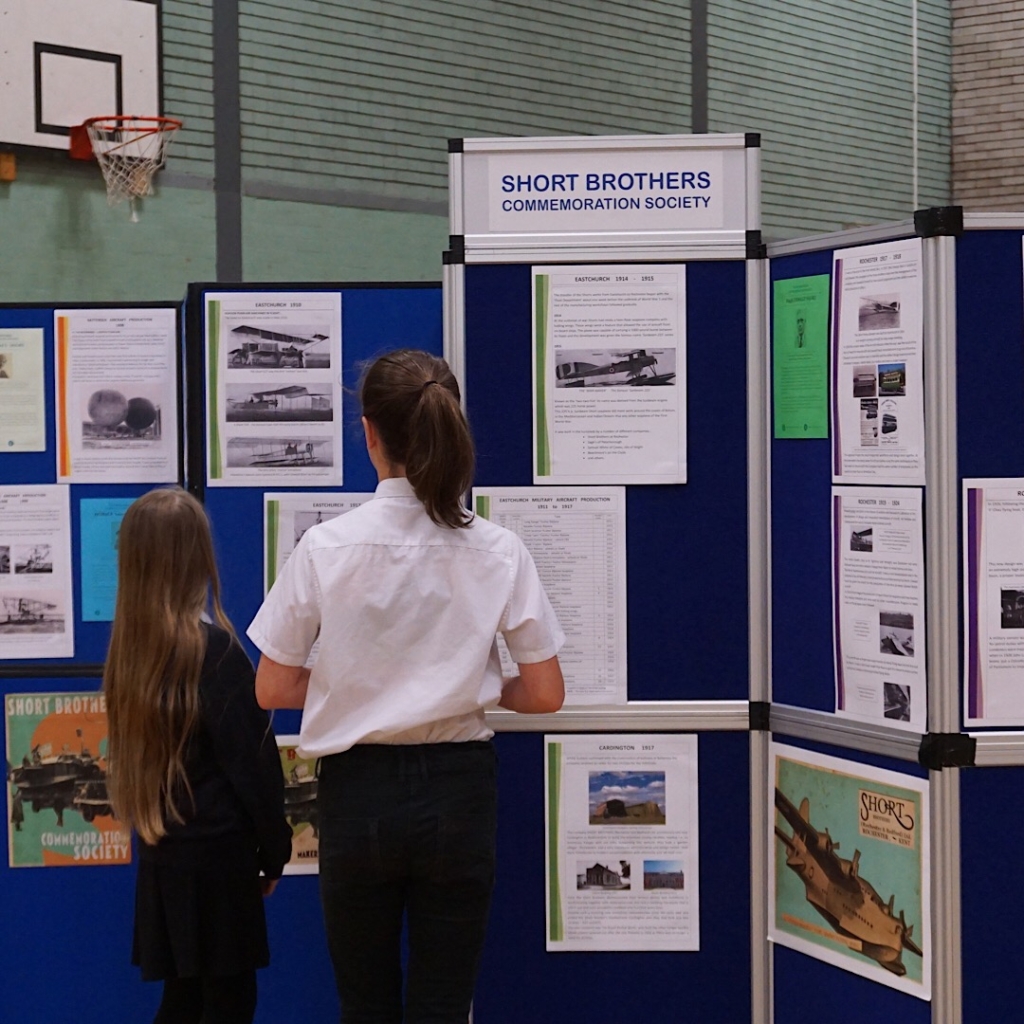
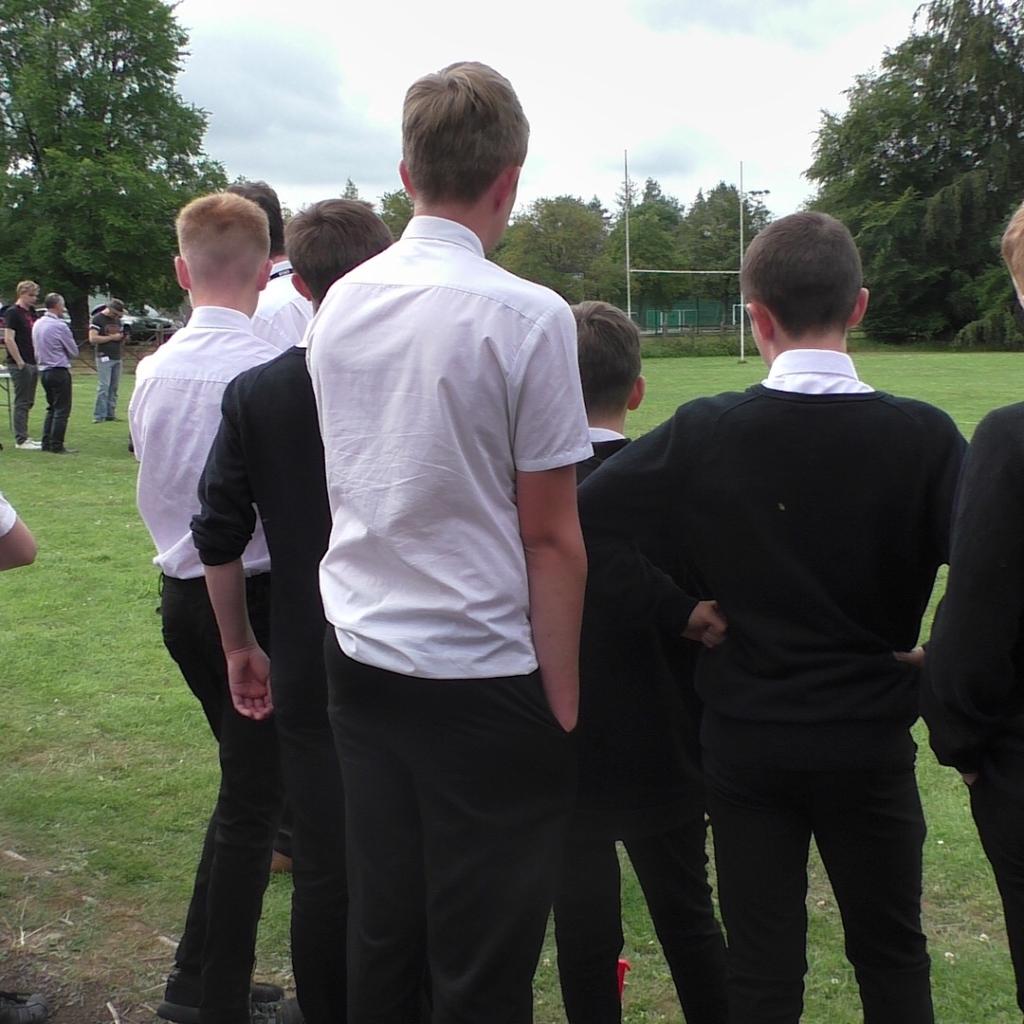
Some of the interesting artefacts in the afternoon include a desert fork, a cough medicine bottle top, a small piece of pencil lead, screwed up wrappers, part of a clay pipe, small pieces of wood, charcoal and possible evidence of paint on a sample. All probable remains of habitation deep below the surface and further down than the demolition stratification investigated in the morning.
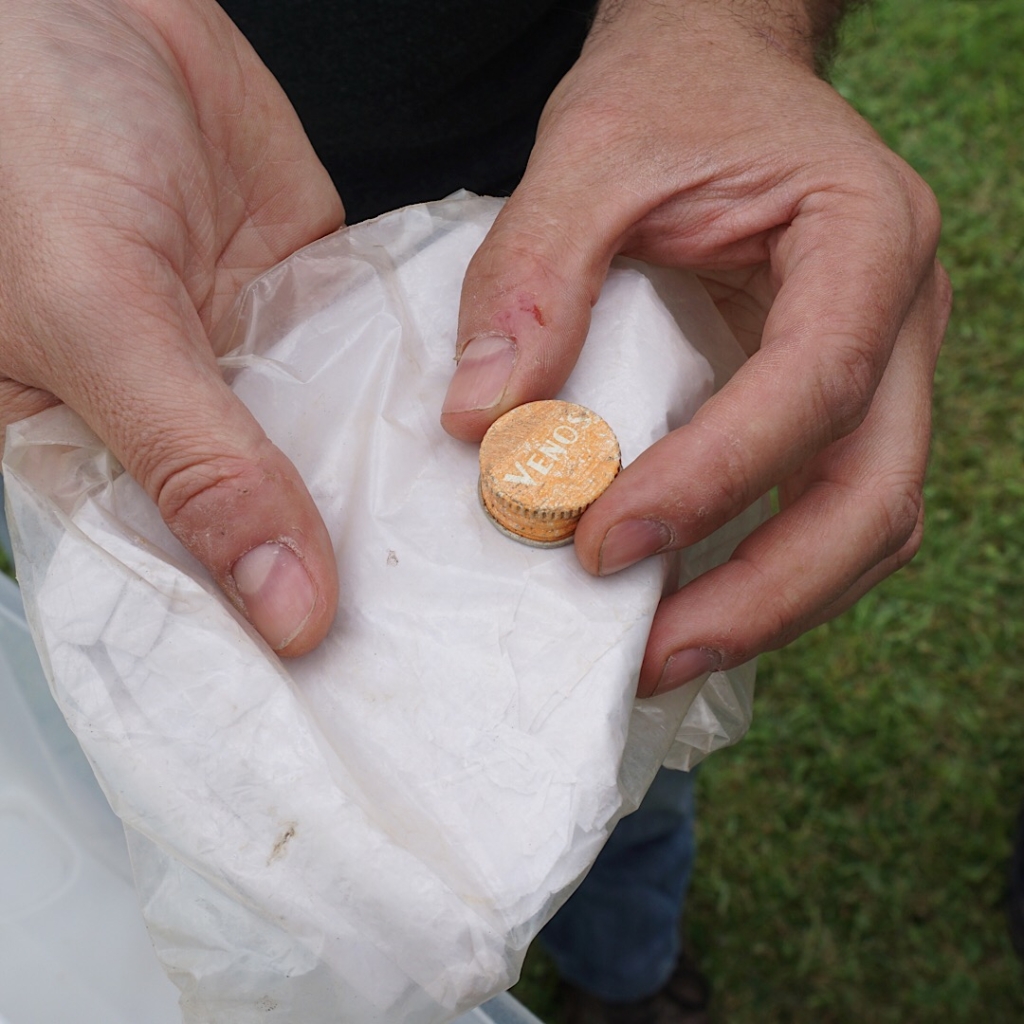
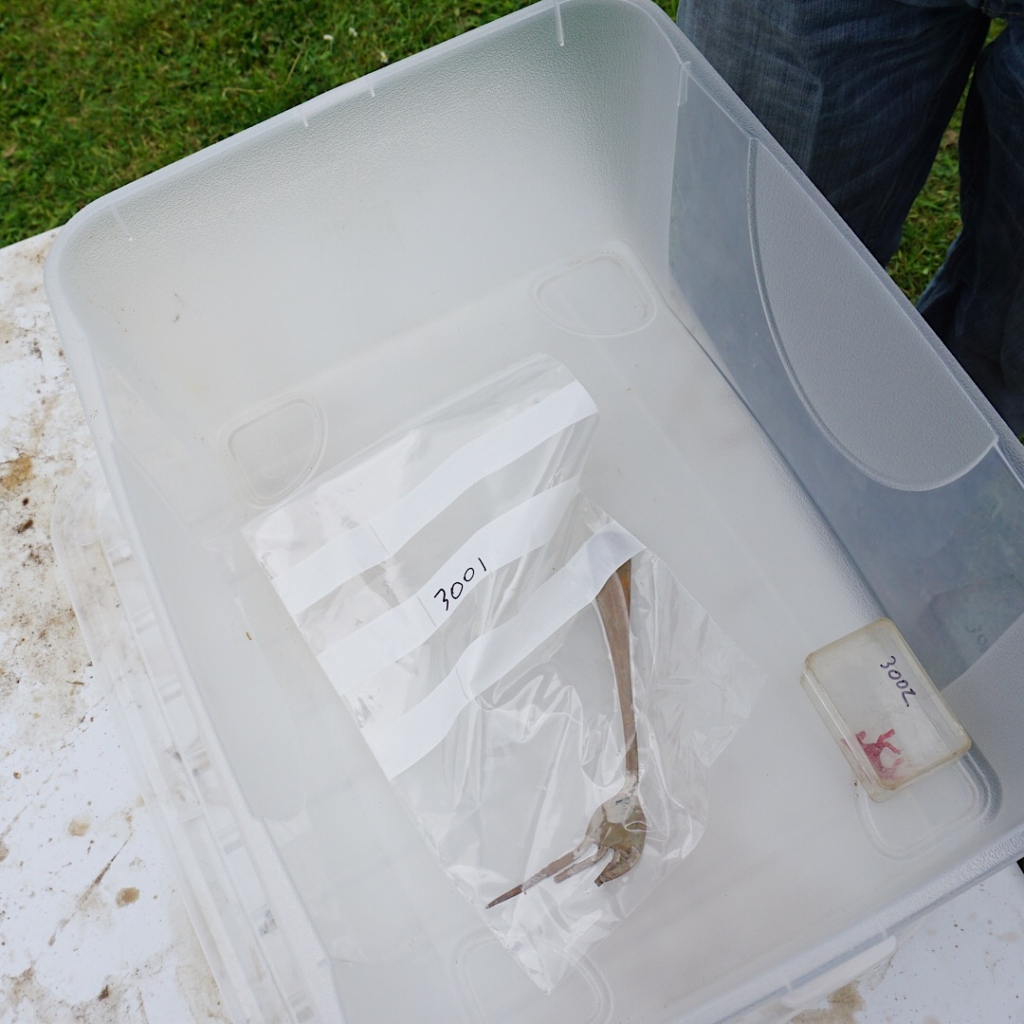
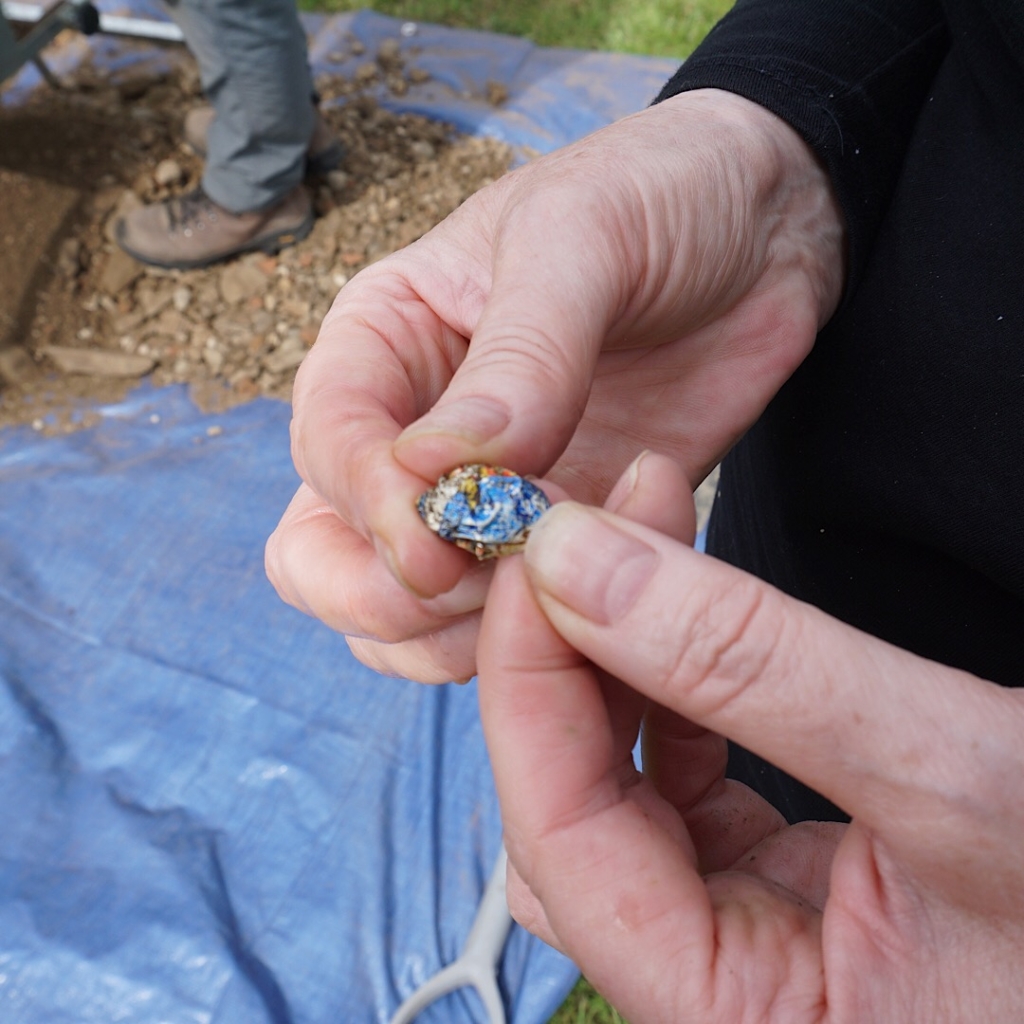
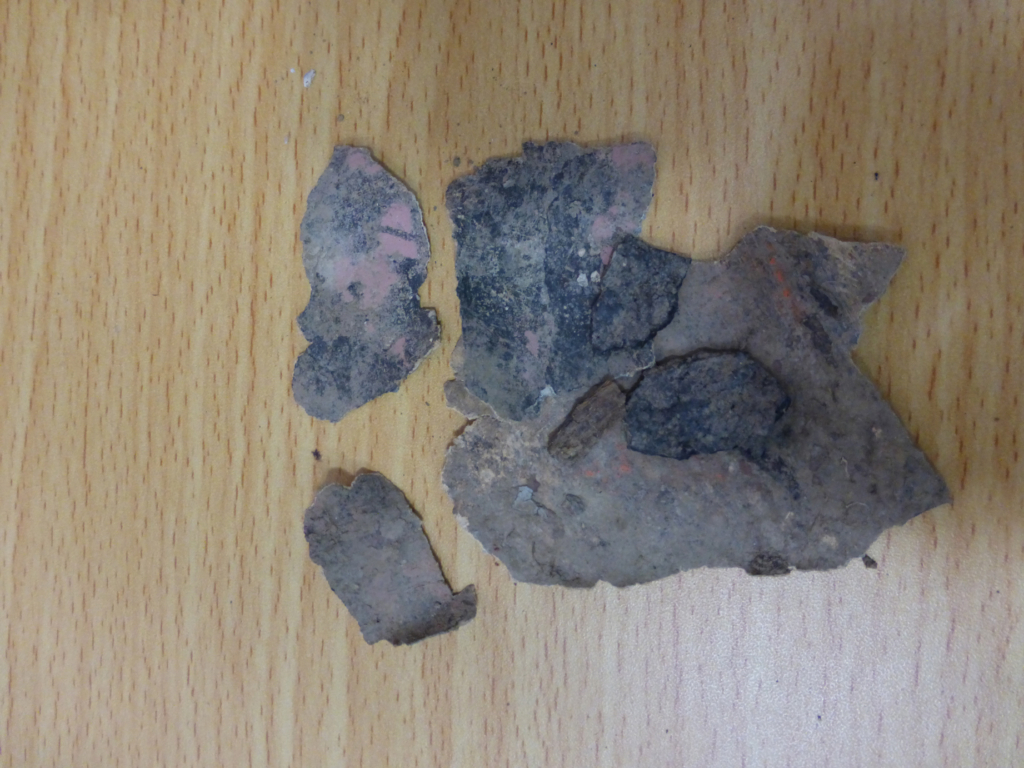
Of particular interest is a small plastic red charm in the shape of a unicorn – later found to have been produced in the 1930s or 40s and possibly for a child’s pendant.
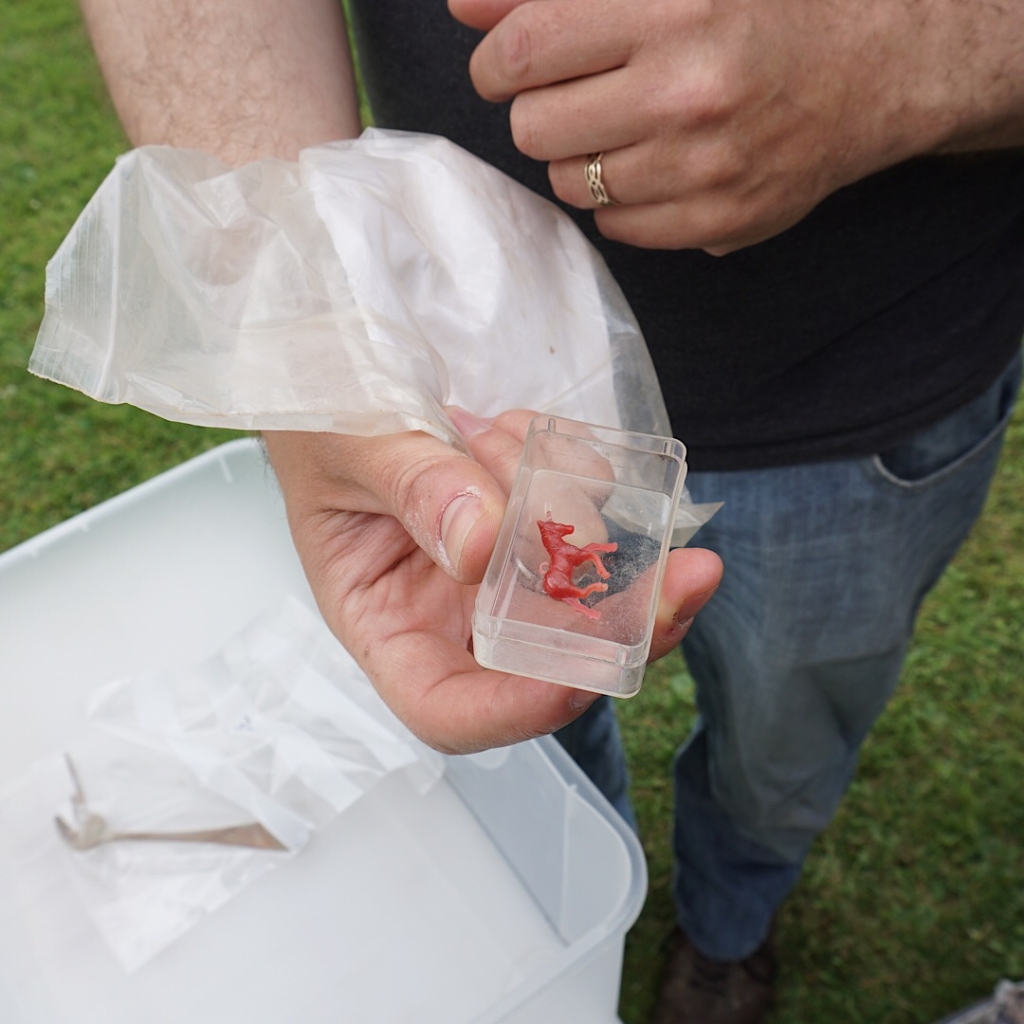
For a while rain stops play but towards the end of the afternoon there is further digging. The pit is far deeper and a very large boulder is exposed. It serves as a bucket stand as Kevin, Will and co continue to dig around the pit and remove a number of smaller rocks.
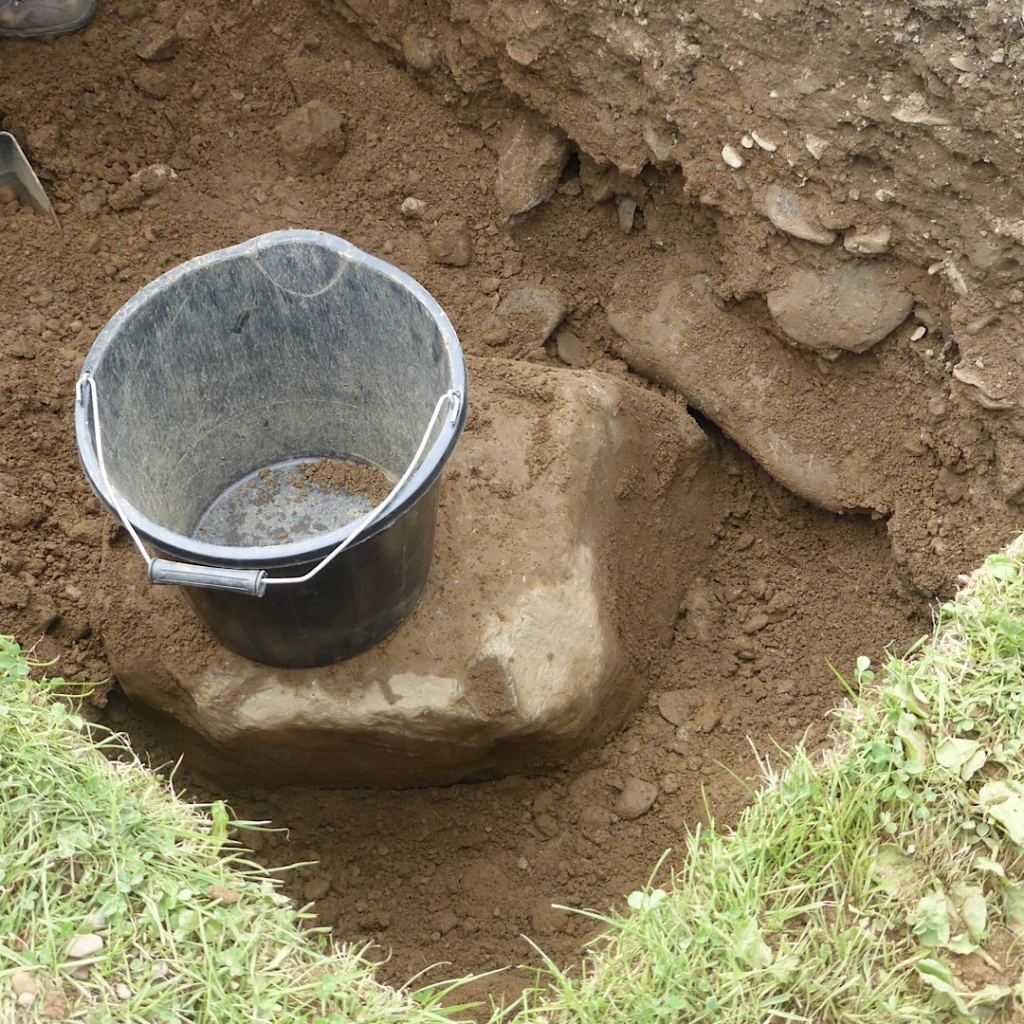
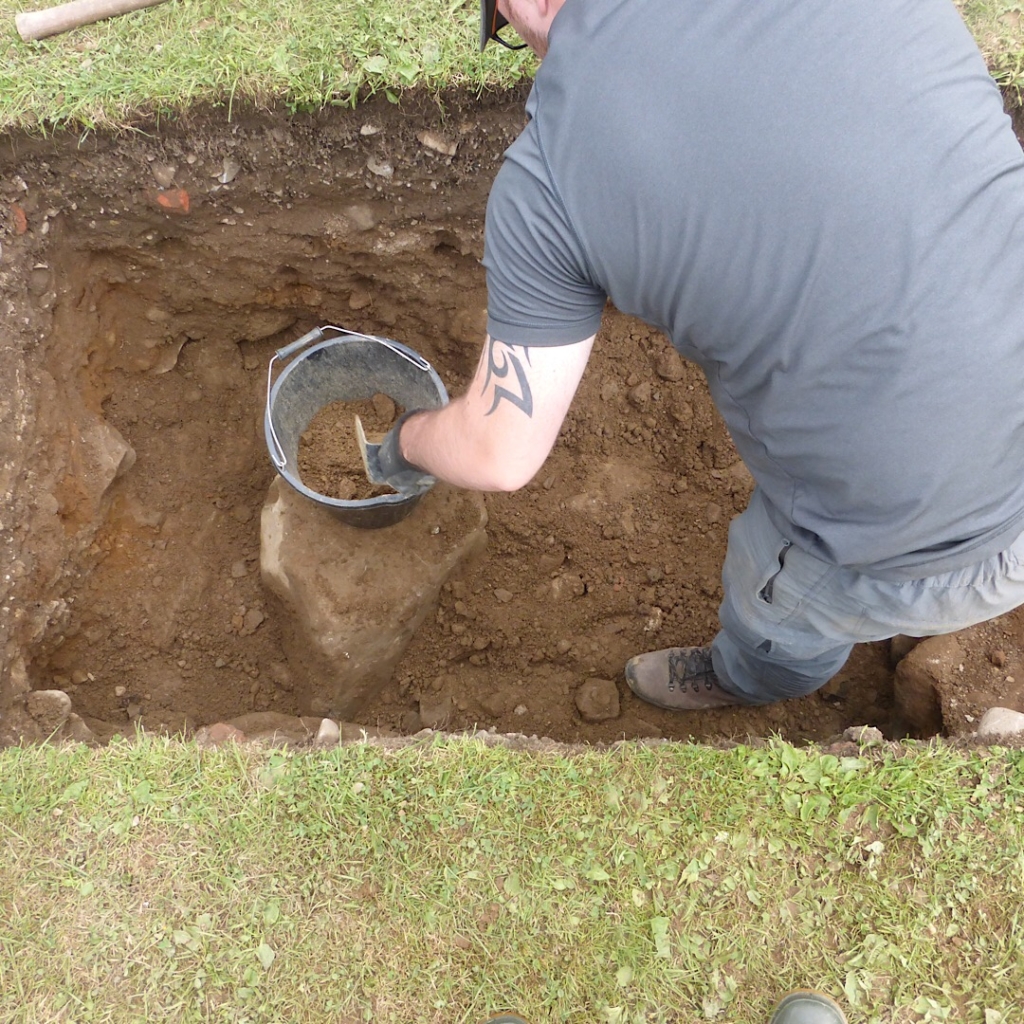
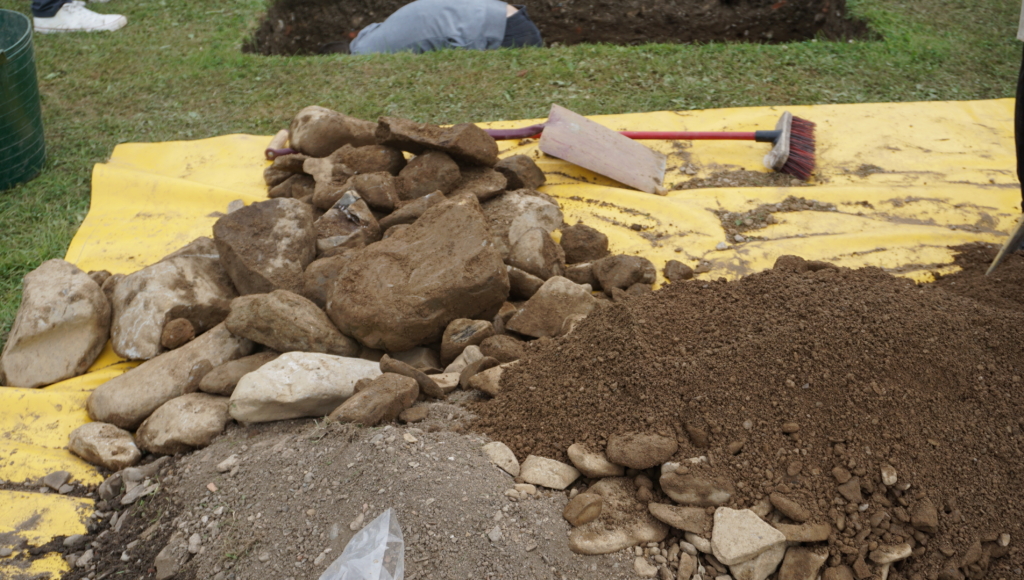
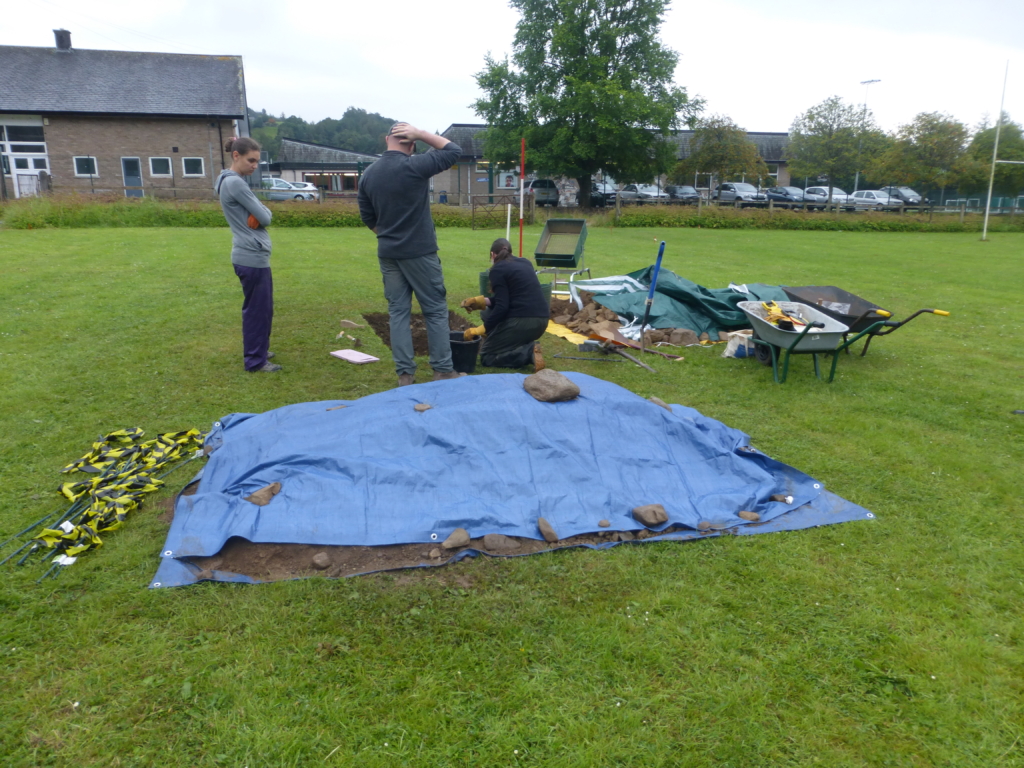
Day 4
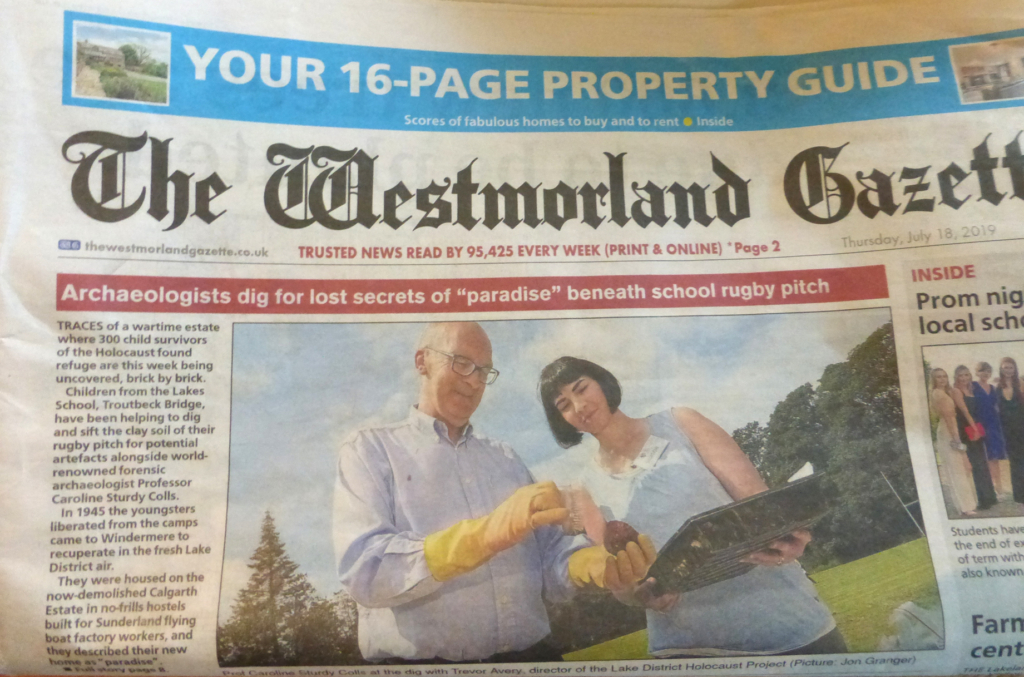
The day begins with a short talk and powerpoint presentation by Will to the whole school assembly. He starts by explaining the role of archaeology and then talks briefly about this particular project and shows some of the finds from the previous day.
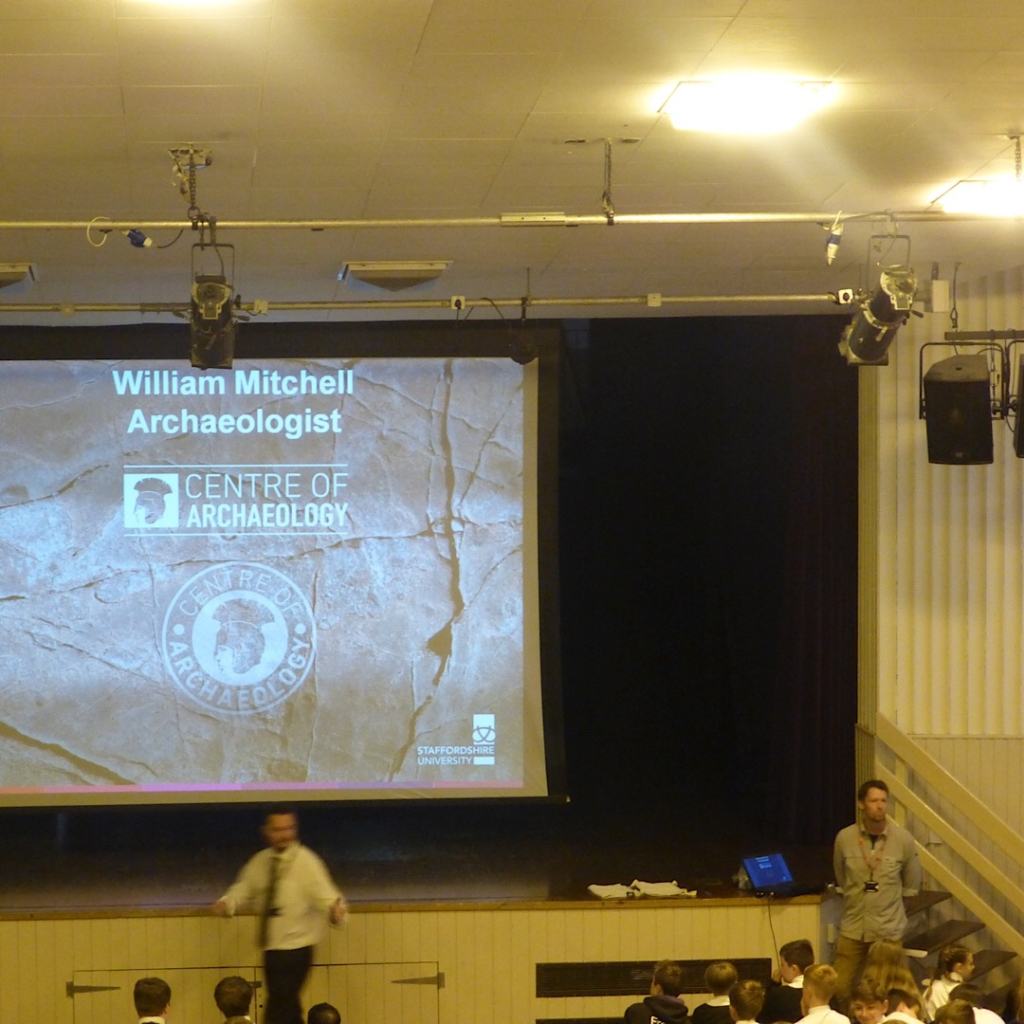
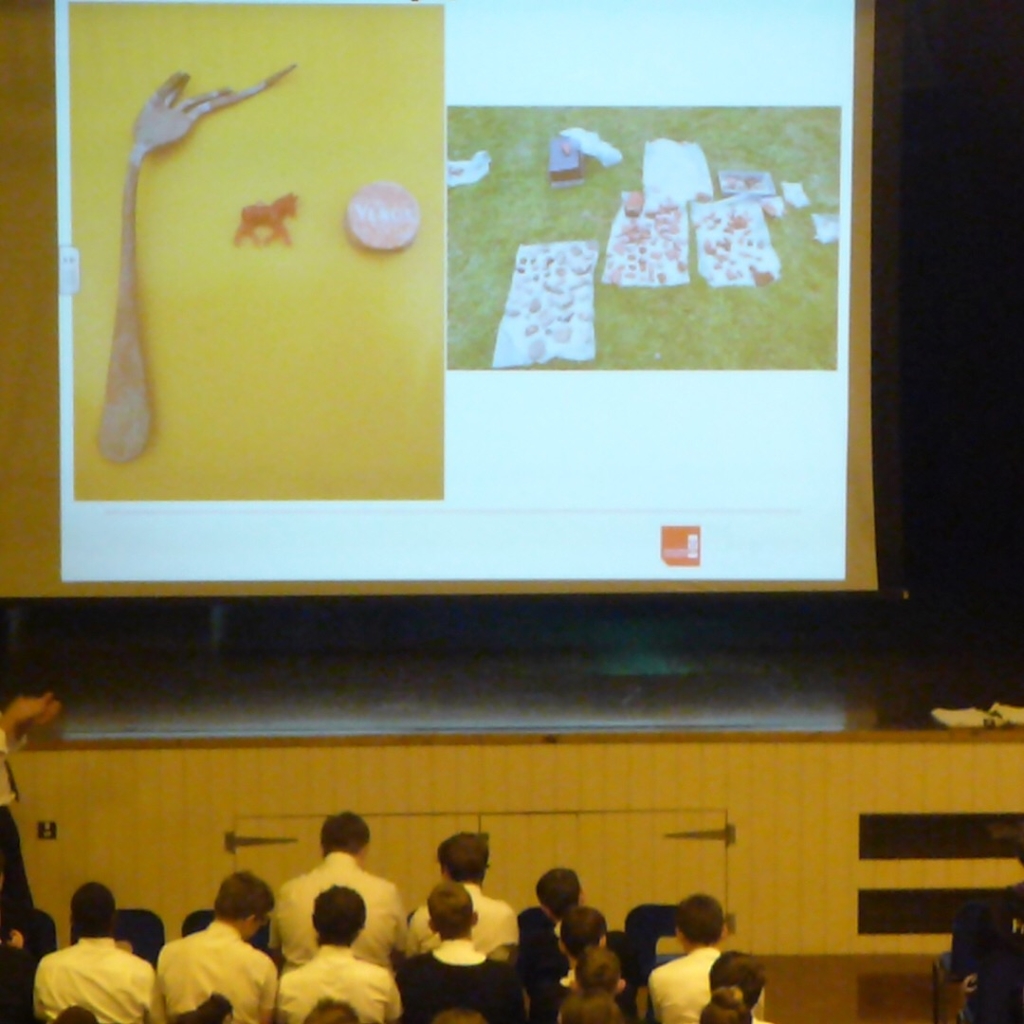
Bill Smith, a governor at the school visits the site and watches as whole bricks alongside the boulder are exposed and cleaned. He discusses the possibility of and access to other areas within the school grounds for further test pits.
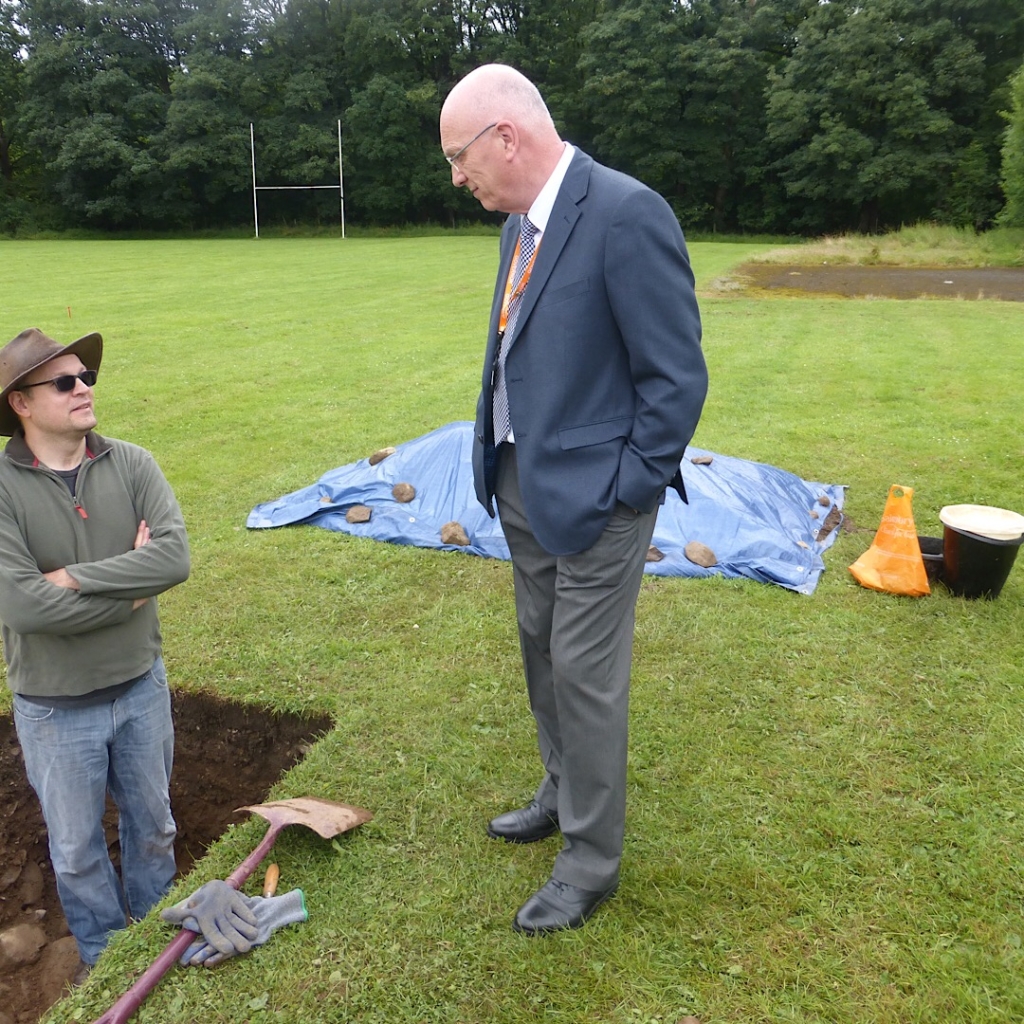
Not only does the boulder serve as a bucket stand, it becomes a useful object to stand on! The process of careful digging, scraping, brushing and revealing the contents of the pit continues and large bricks adjacent to the boulder are exposed.


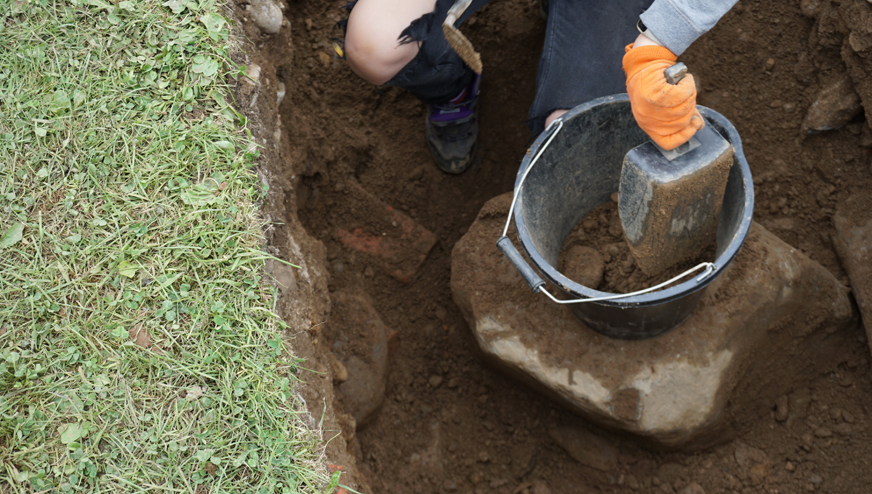
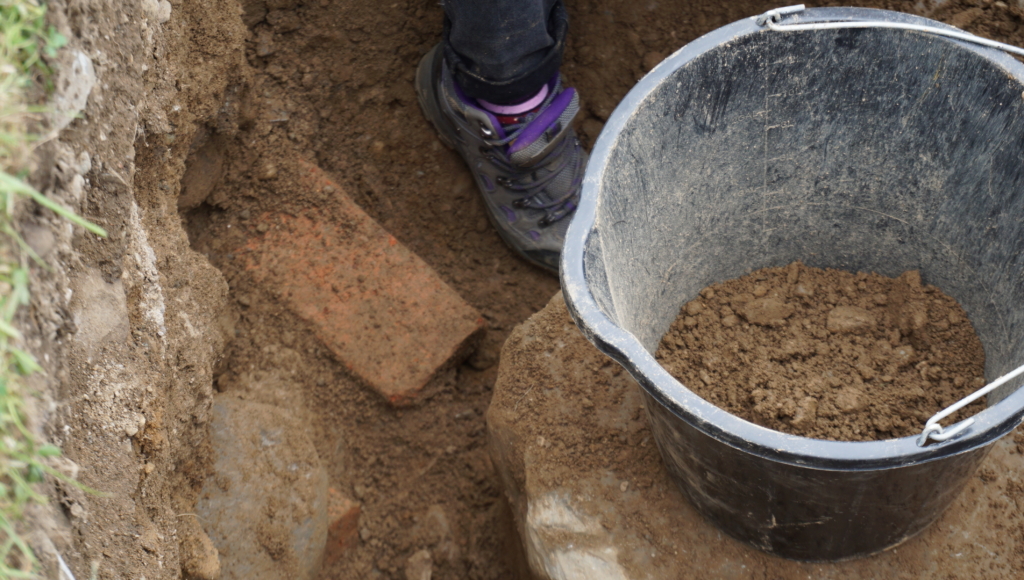
Katherine, who has volunteered nearly every day, is given the task of sorting, bagging and labelling the artefacts.
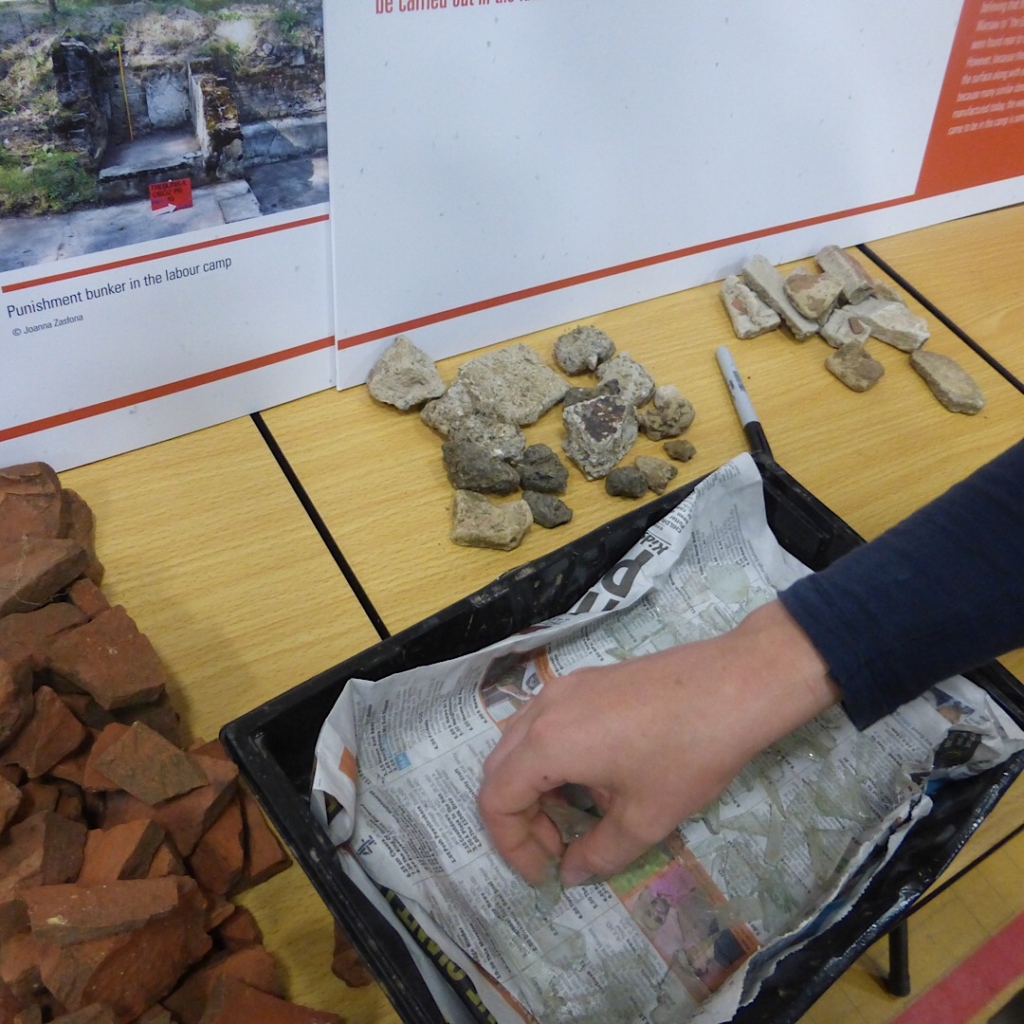
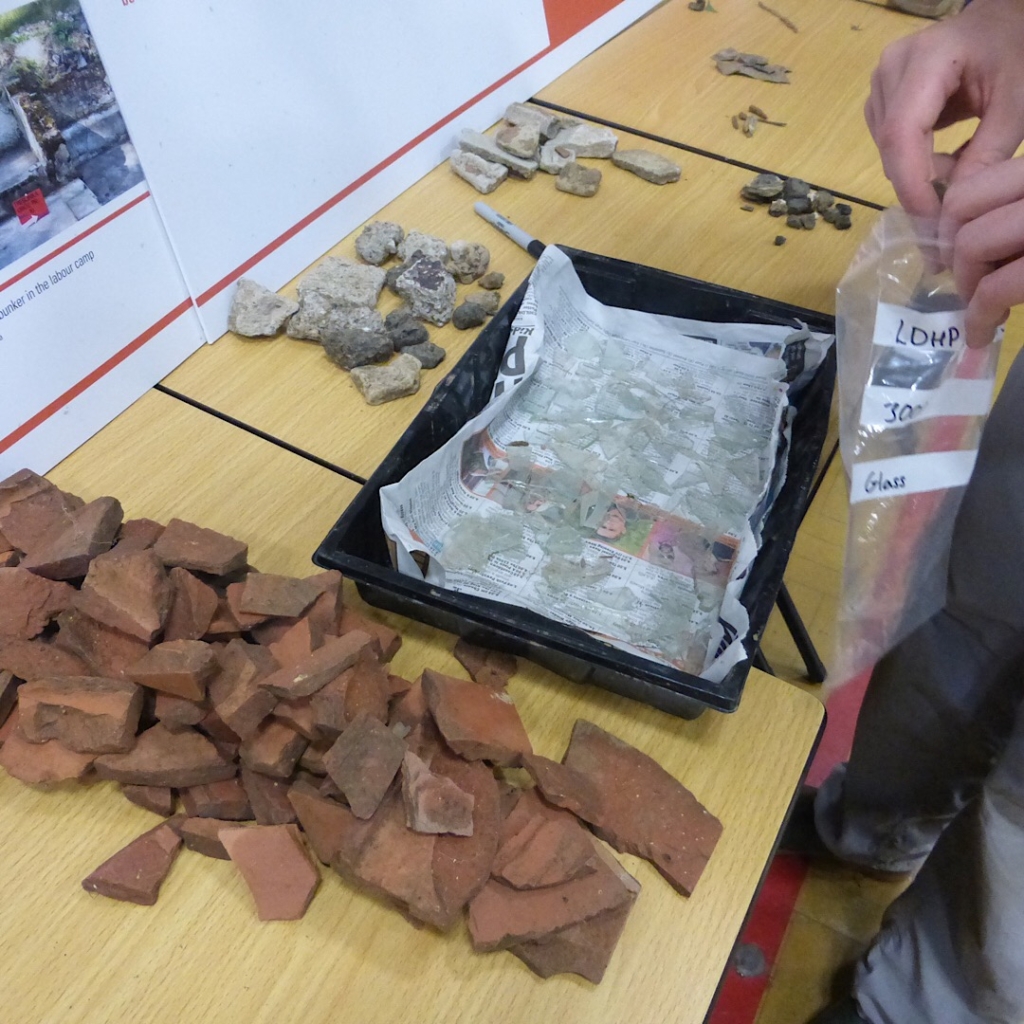

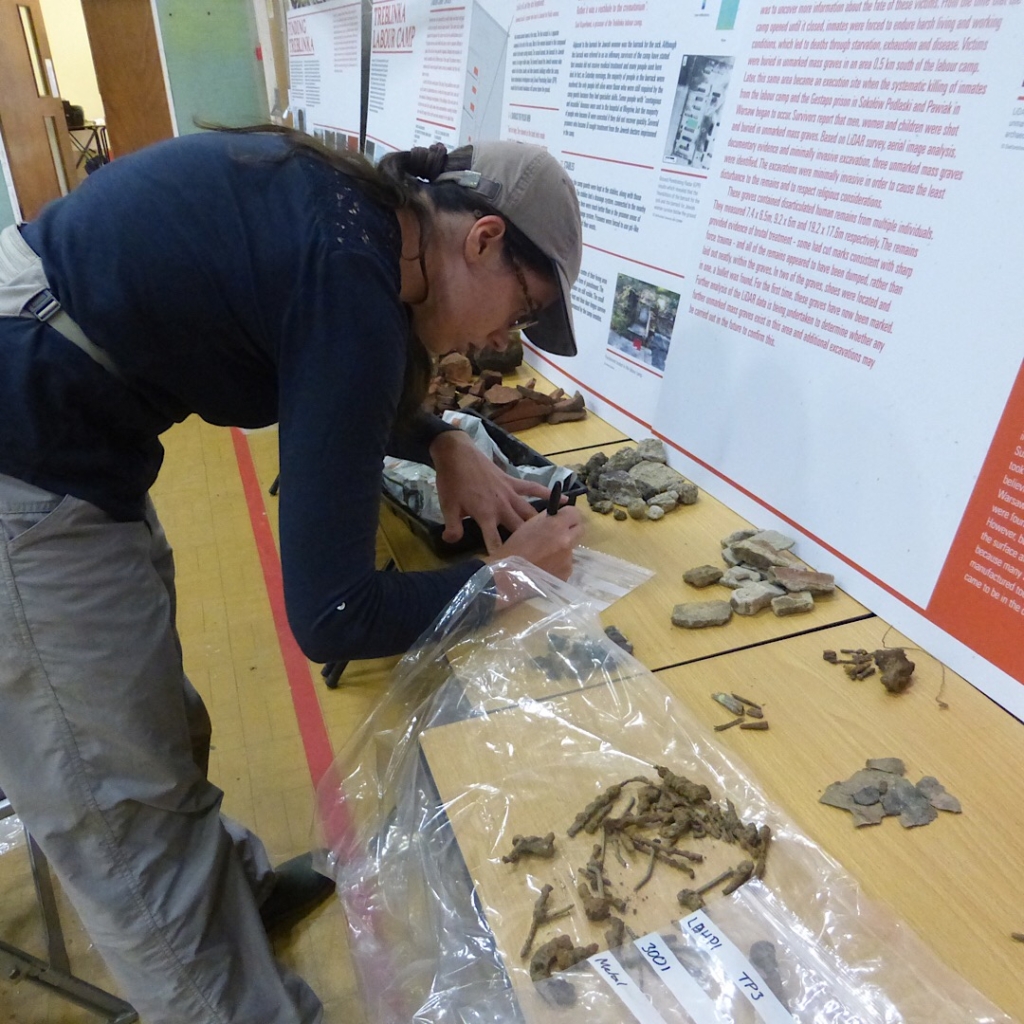
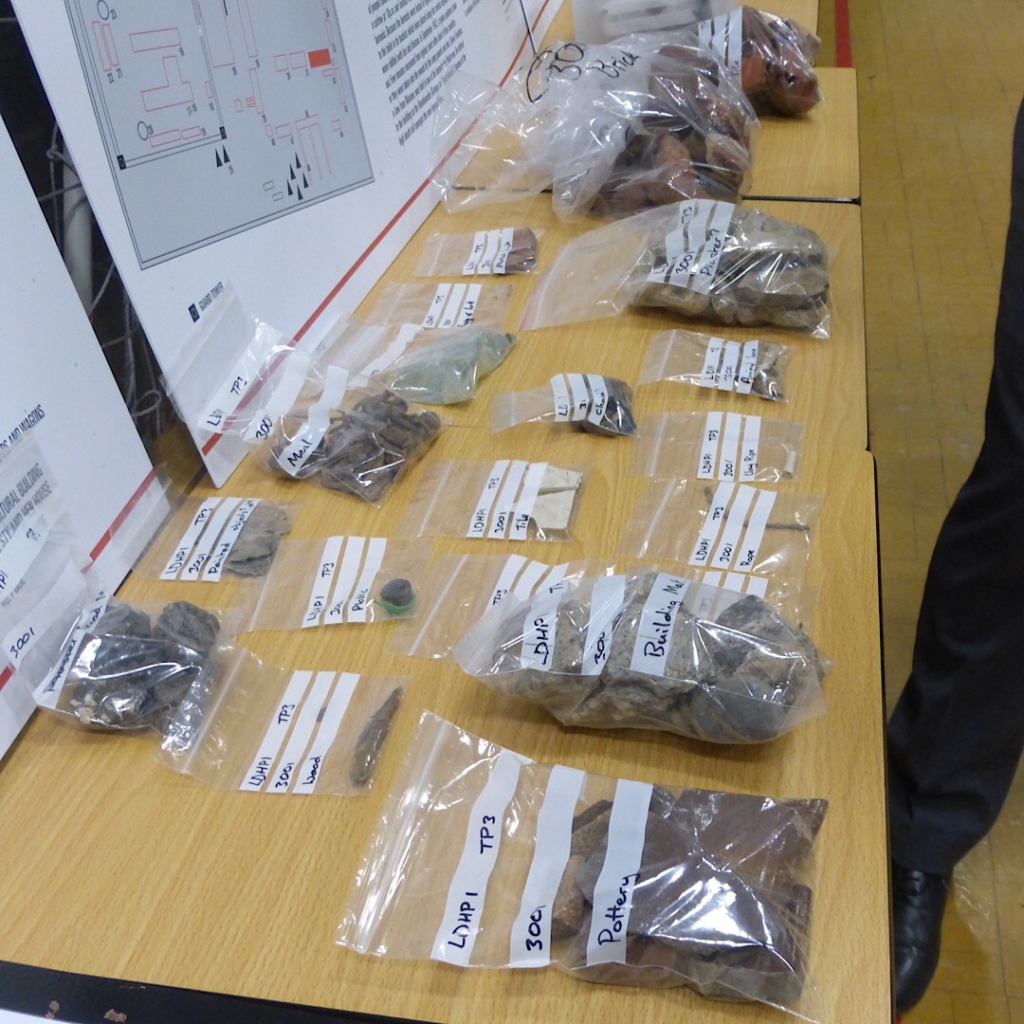
Katherine’s mother and grandfather -and dog – visit, as too Eleanor Kingston – the Lake District National Park Lead Strategy Advisor. Eleanor’s parents will be volunteers next week.
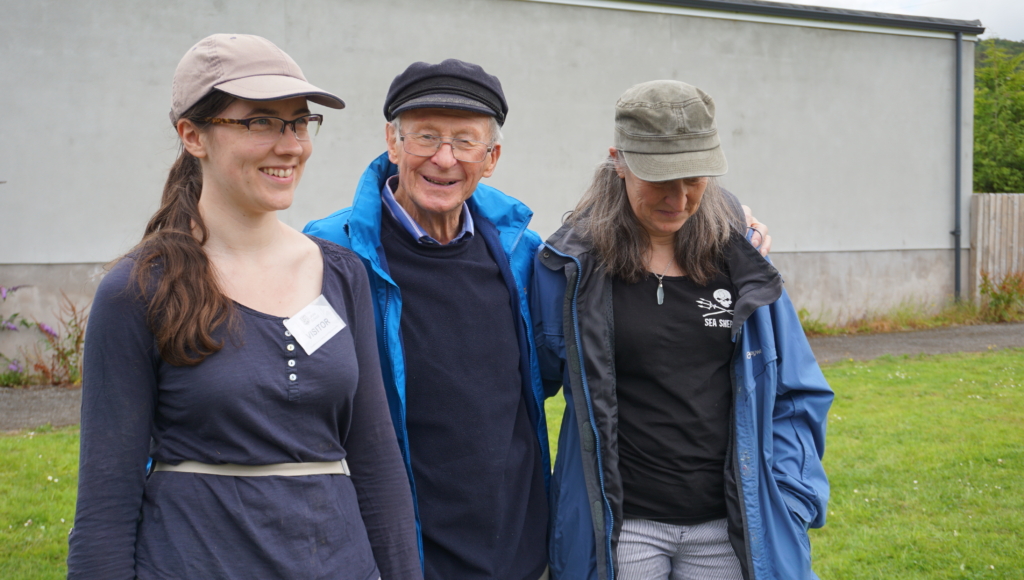
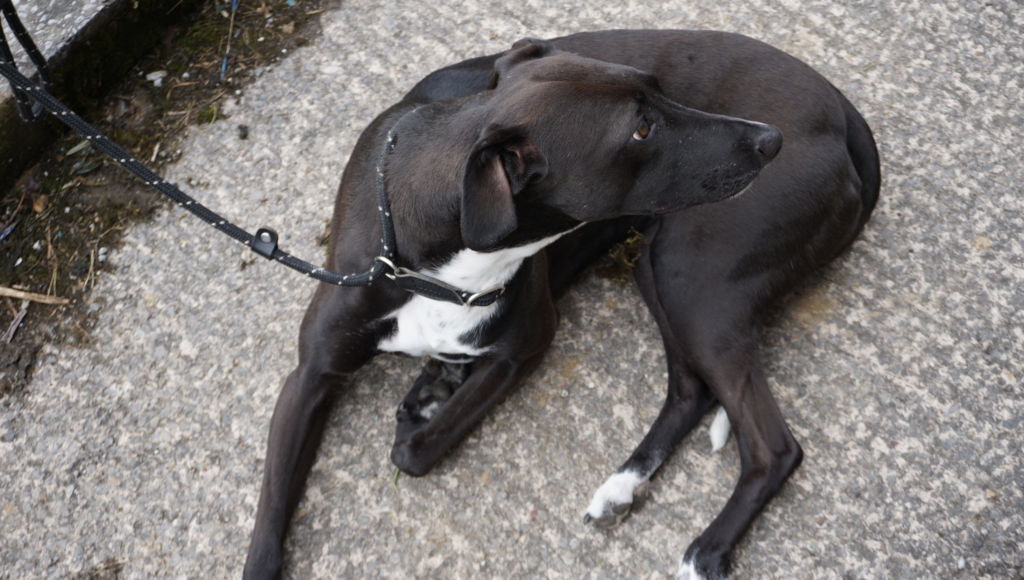
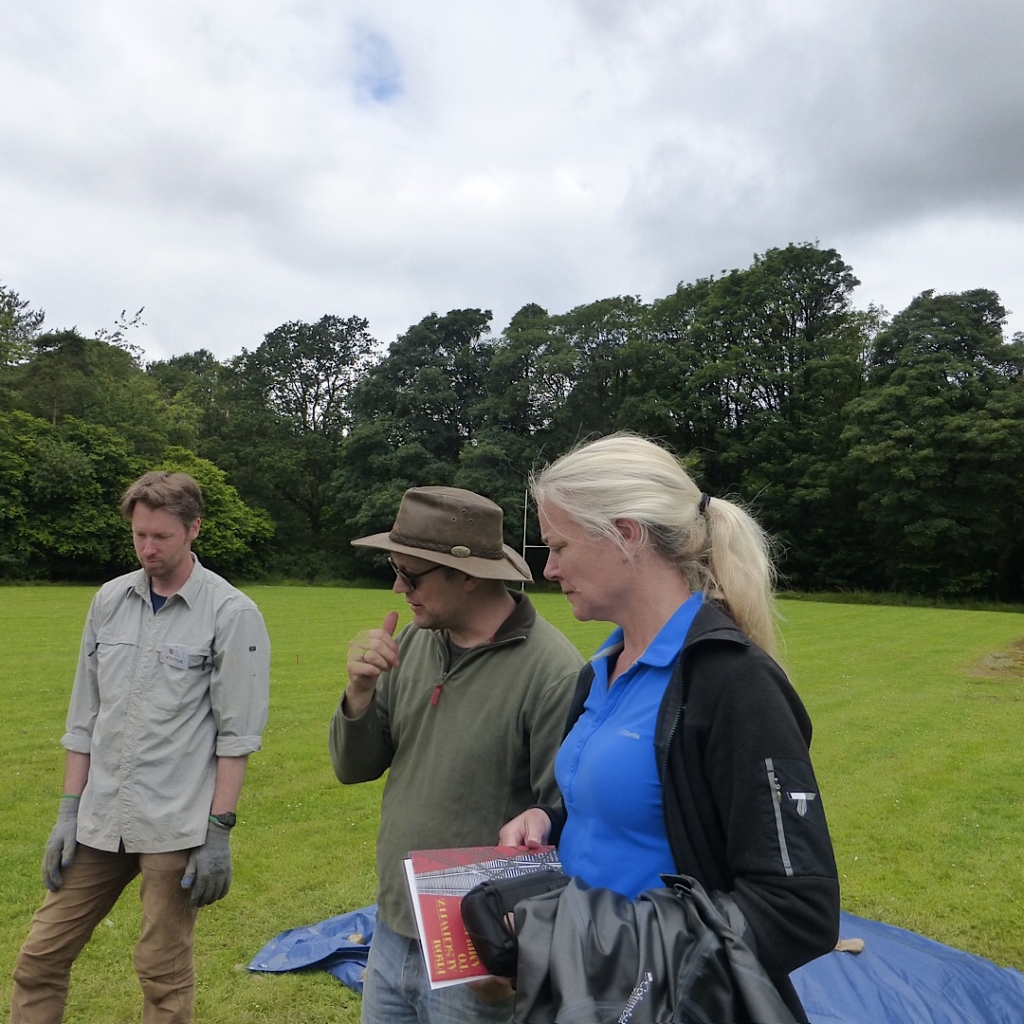
School volunteers for the morning, Trinity Rullo and Katie Burrows are set to work as before, sifting, sieving and cleaning pieces of interest.
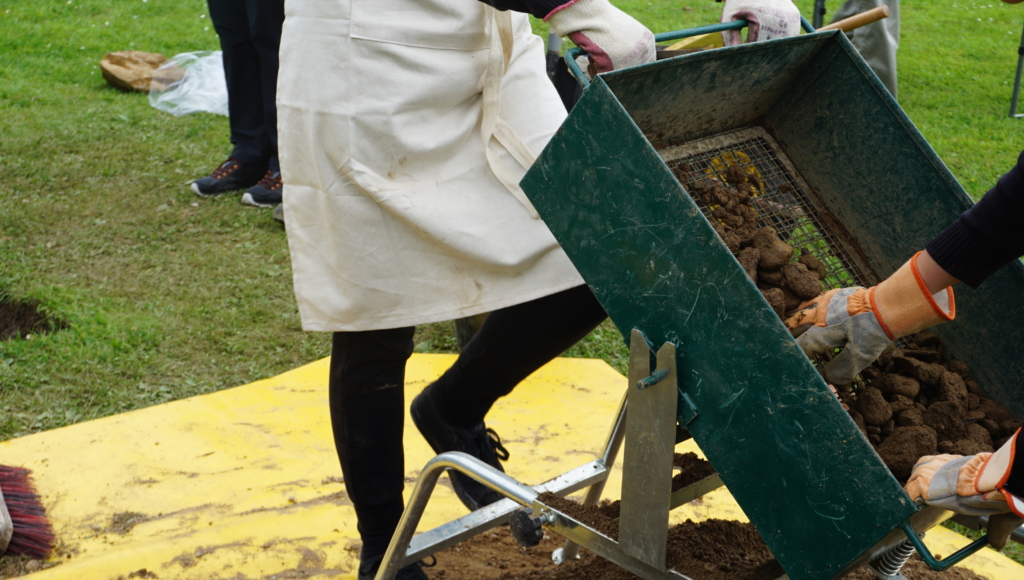


Andy Cunningham, Headteacher, calls in, examines the artefacts and confirms access to other areas of land next week.
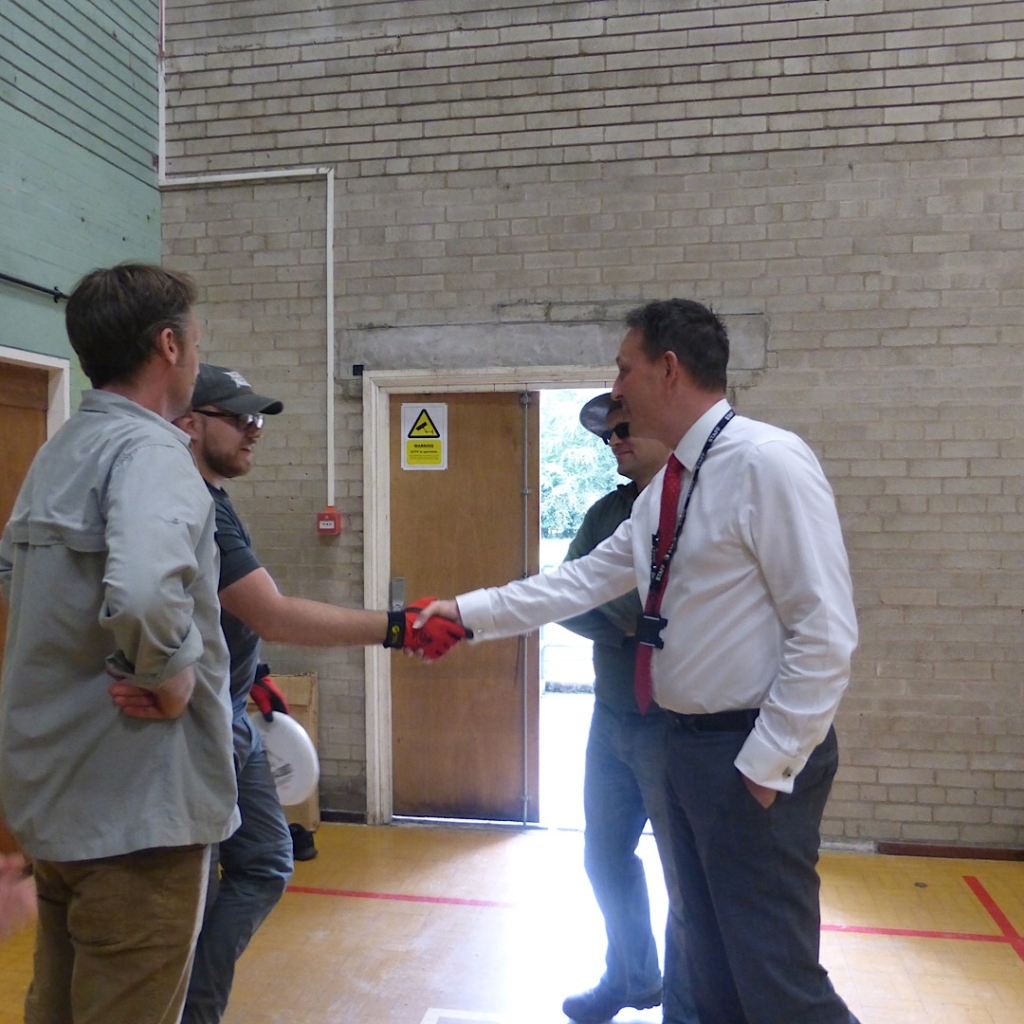
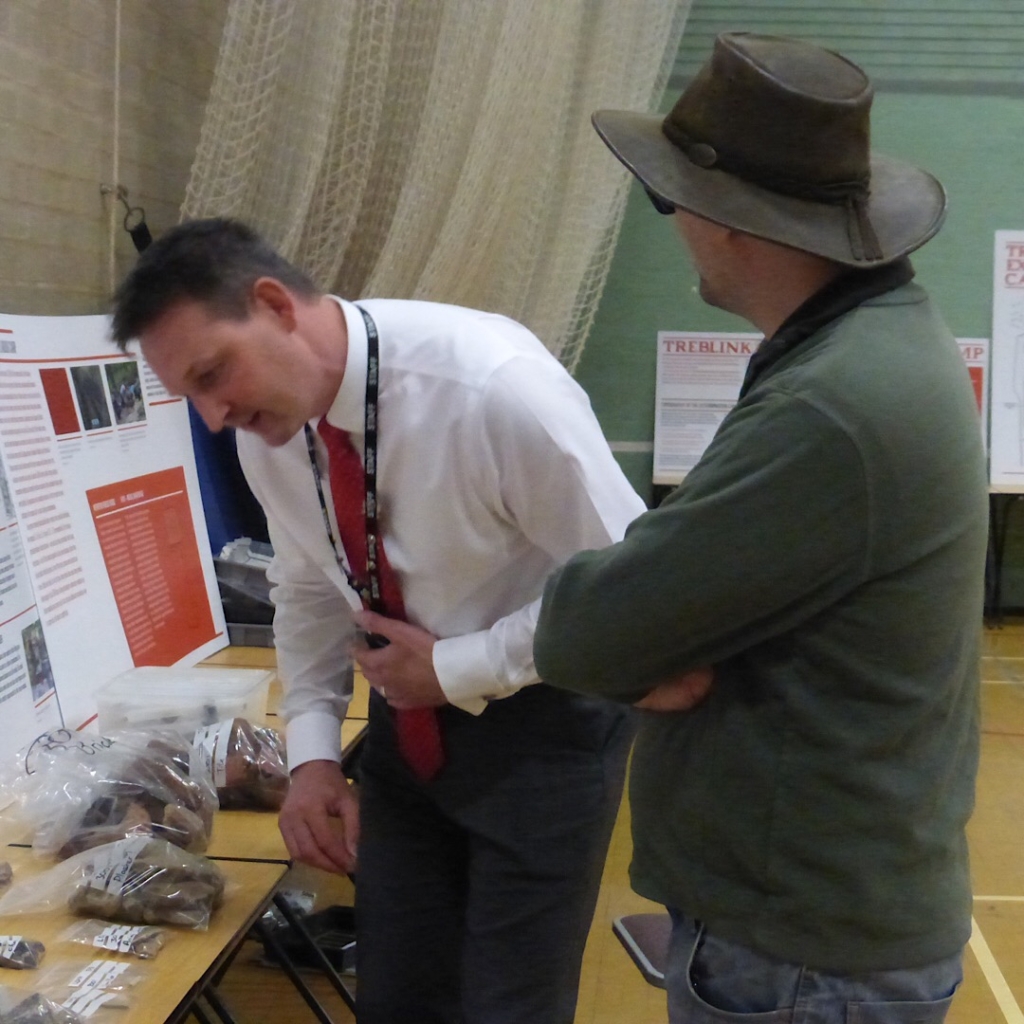
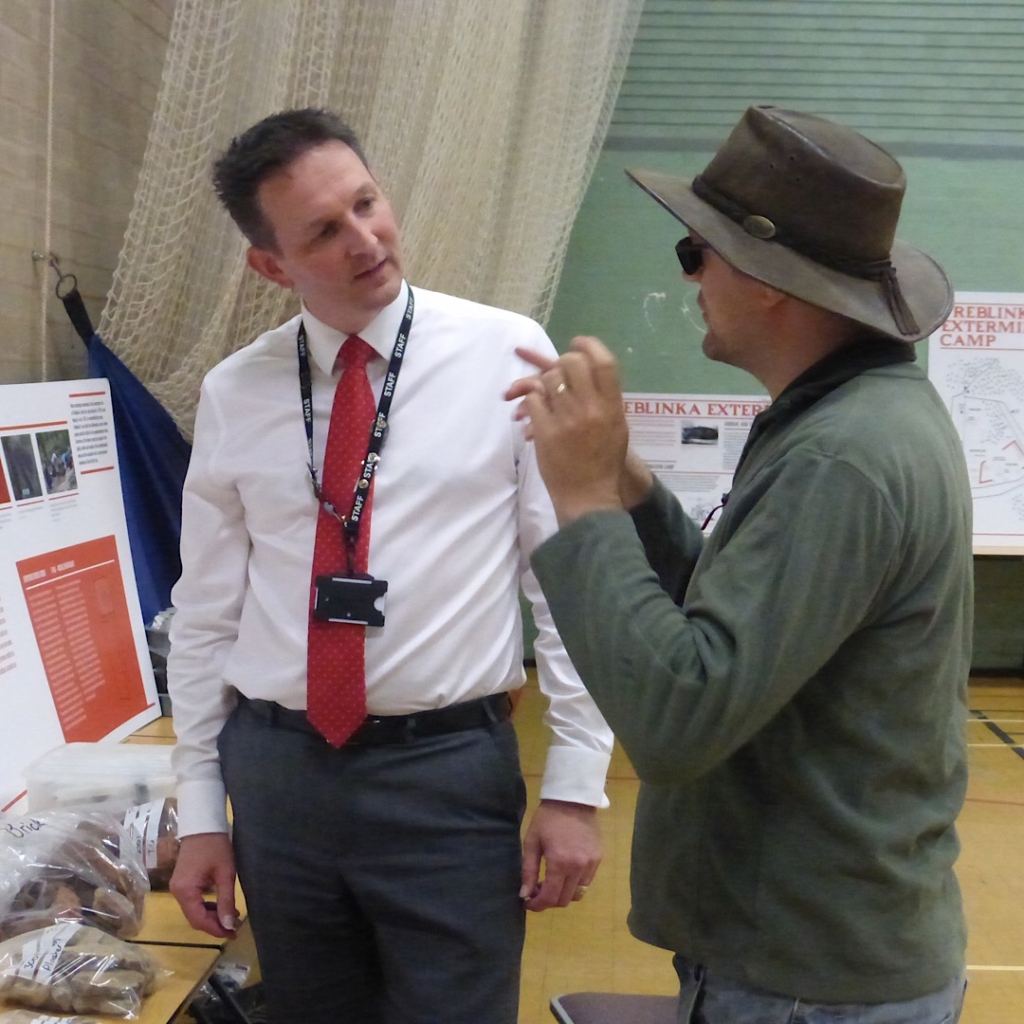
A welcome visit from Gary and his wife Mandy Zylberszac, whose father Aron was one of the ‘Windermere Boys’. Gary and Mandy spend some time looking at the exhibition, talking to Trevor, Rose, Kevin and Will and are fascinated to see the test pit and it’s contents.
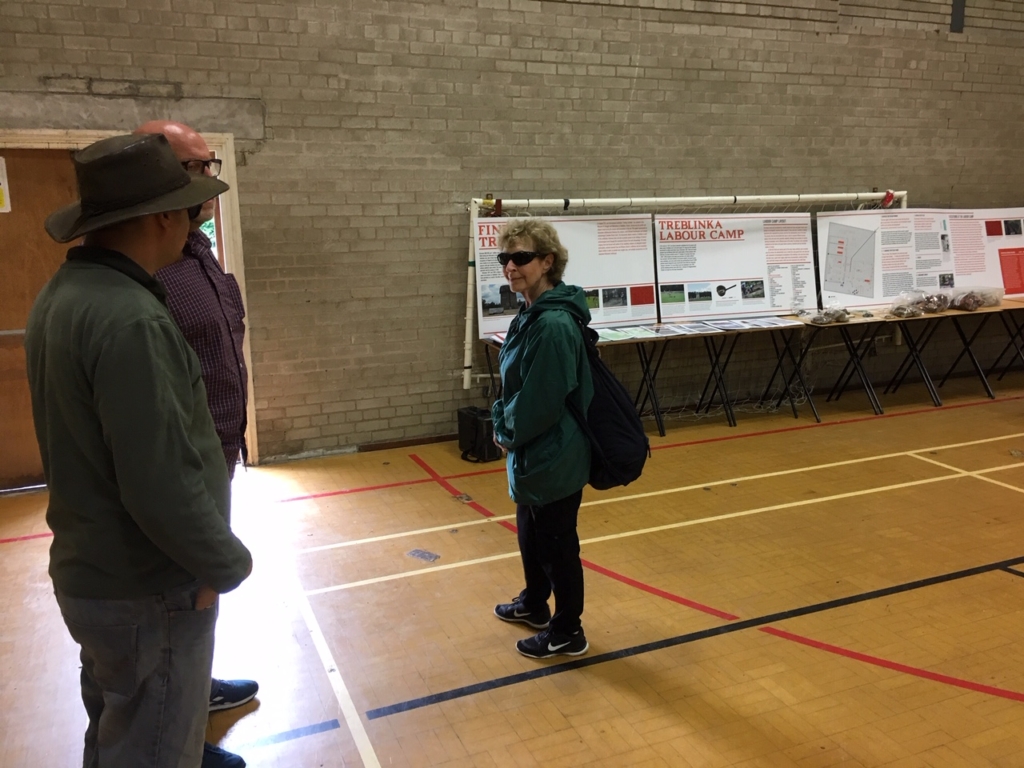
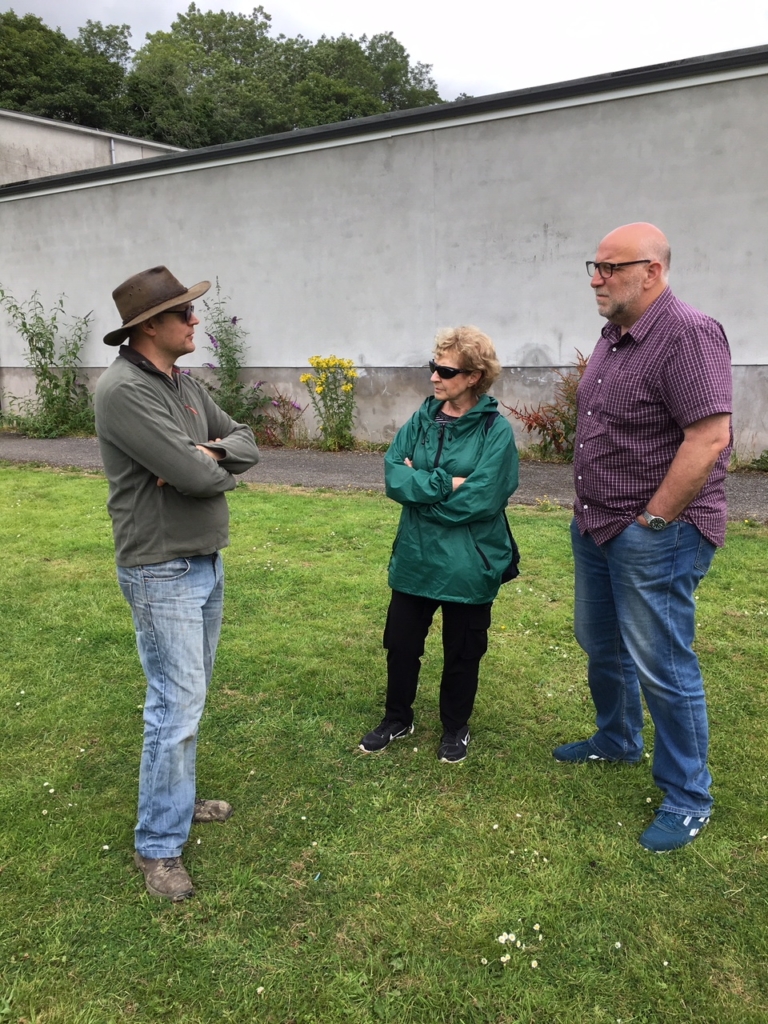
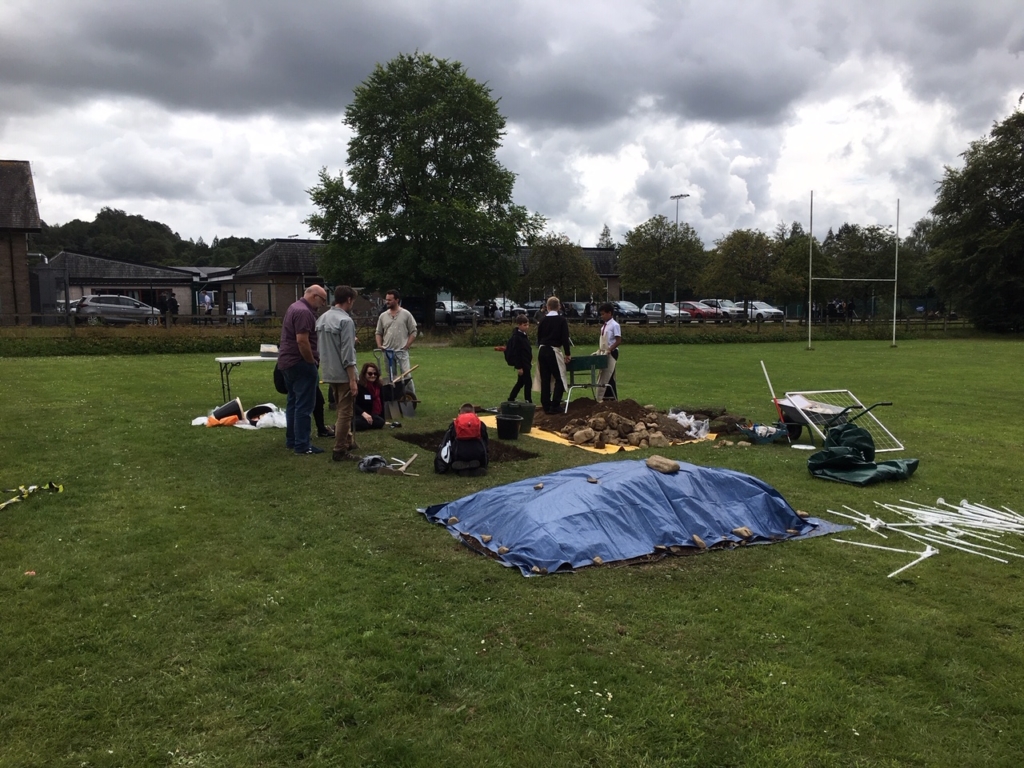
Oliver Barnes and George Evans join the dig in the afternoon. Initially starting with sieving, they kneel to watch the exposure of a waste pipe in the pit and then continue with the washing and brushing of items of interest.
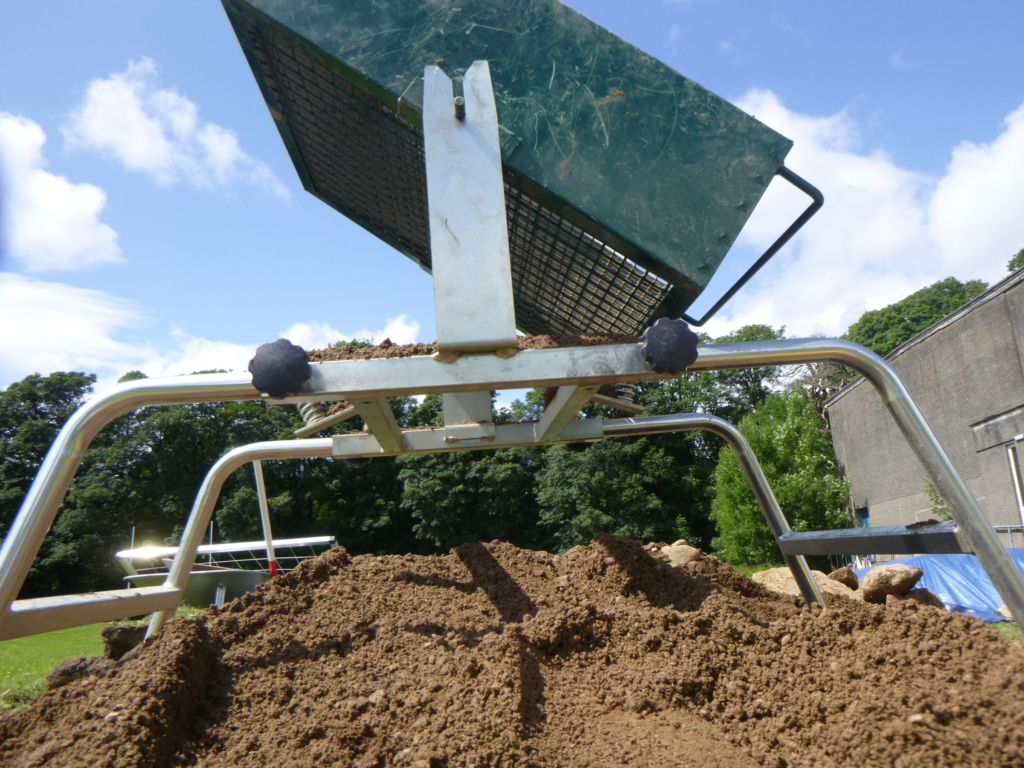
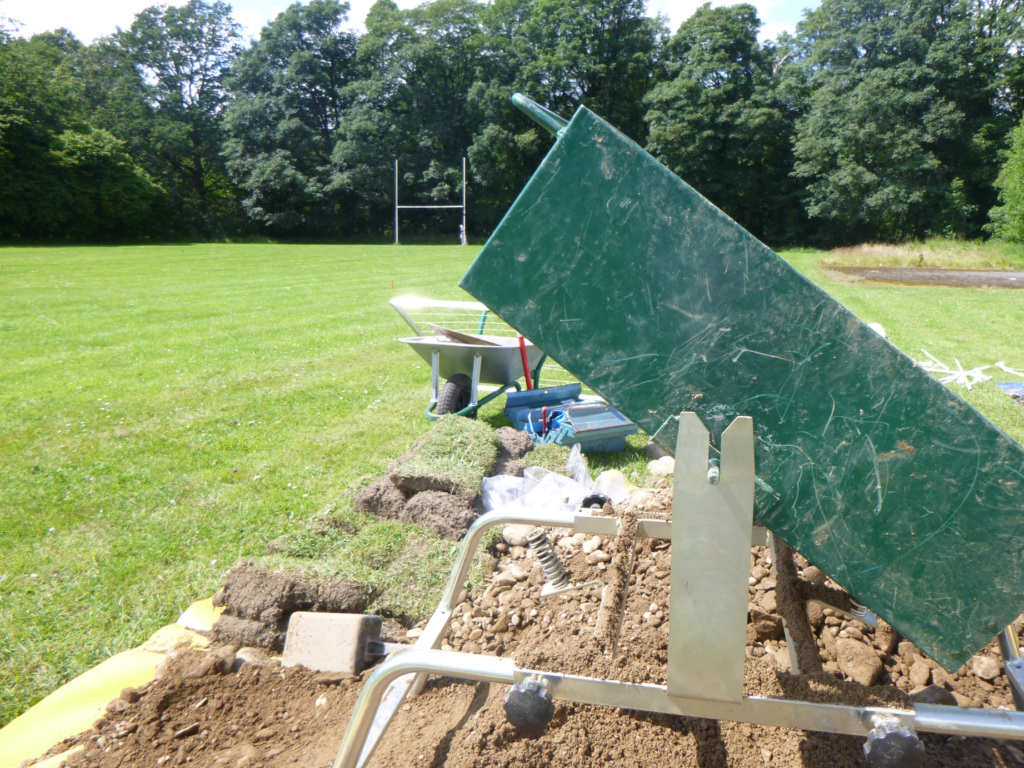
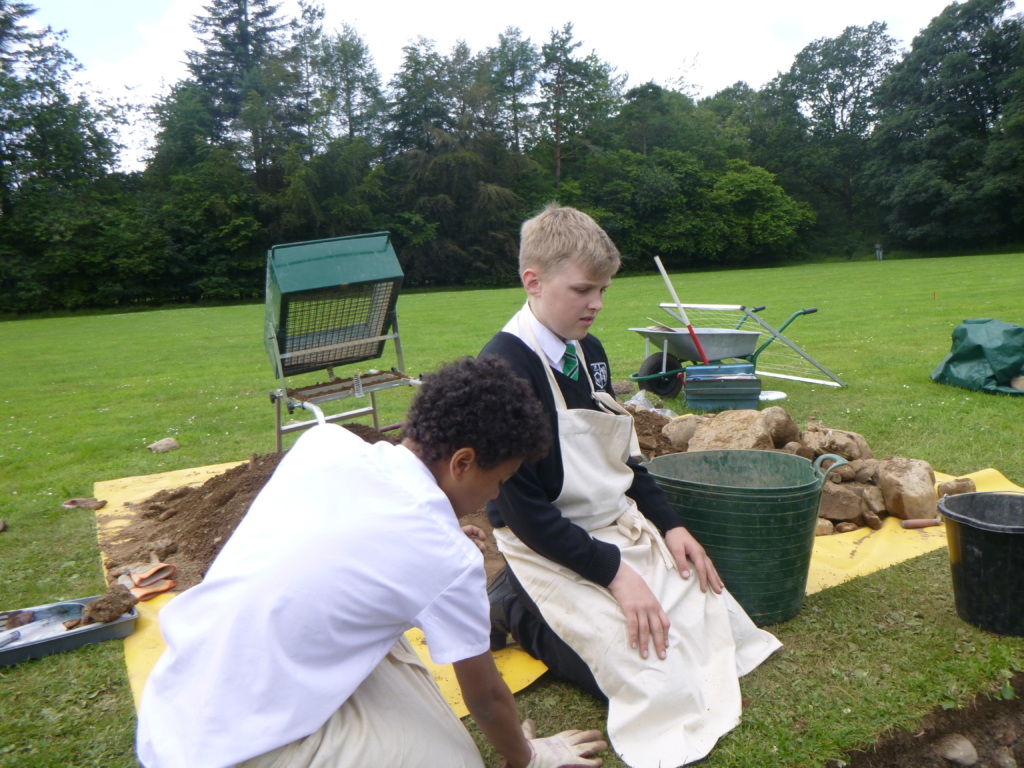
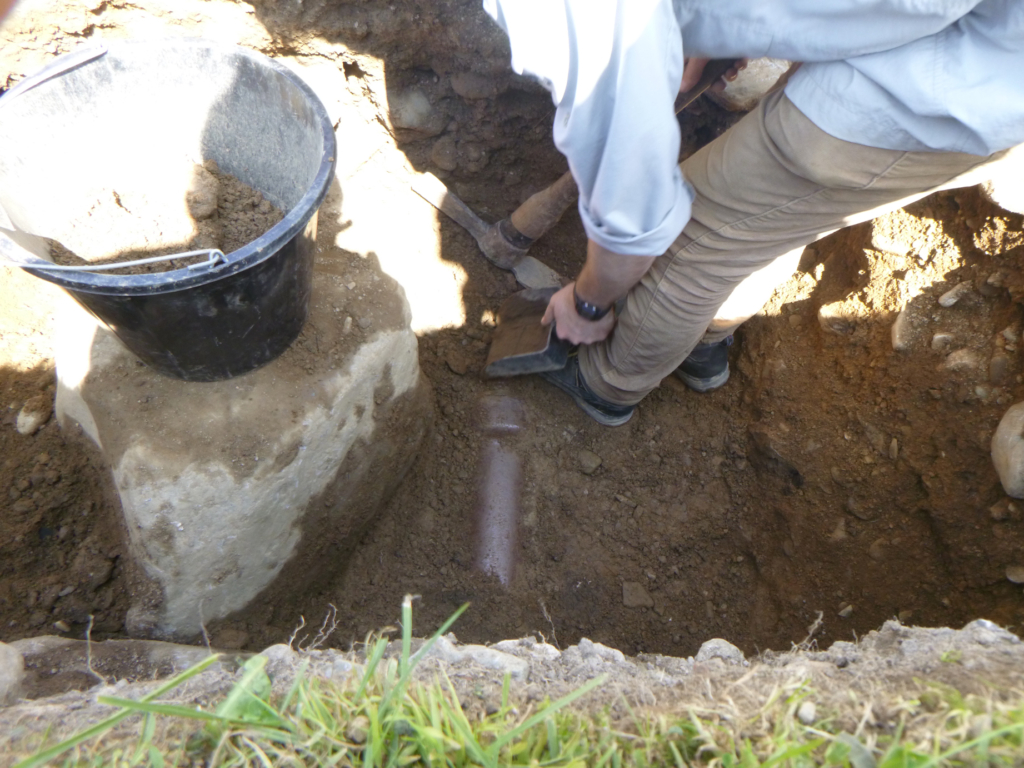
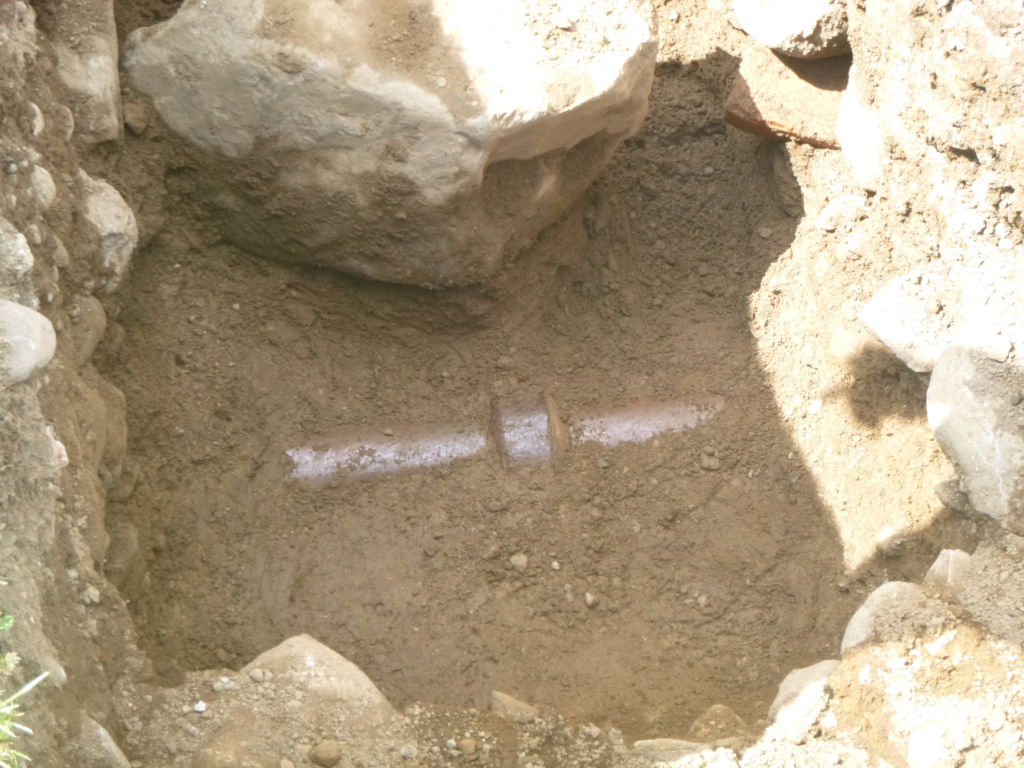
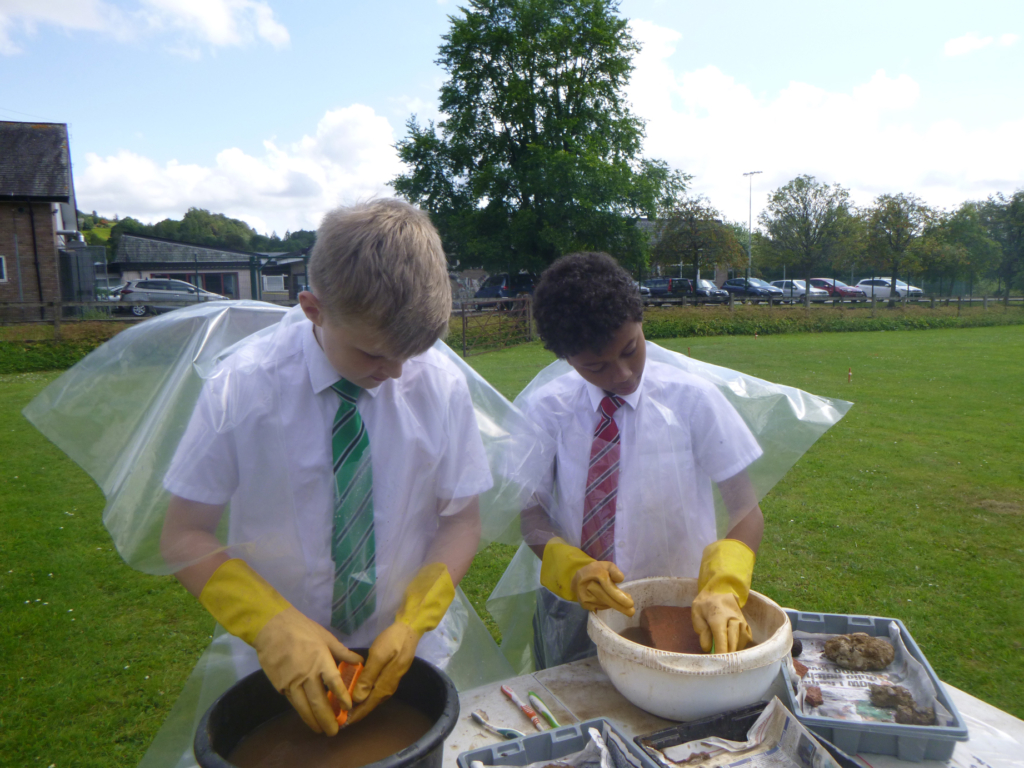
The water in the bowls rapidly turns to muddy brown, but at least this time the plastic sheets ensure no dirty shirts!
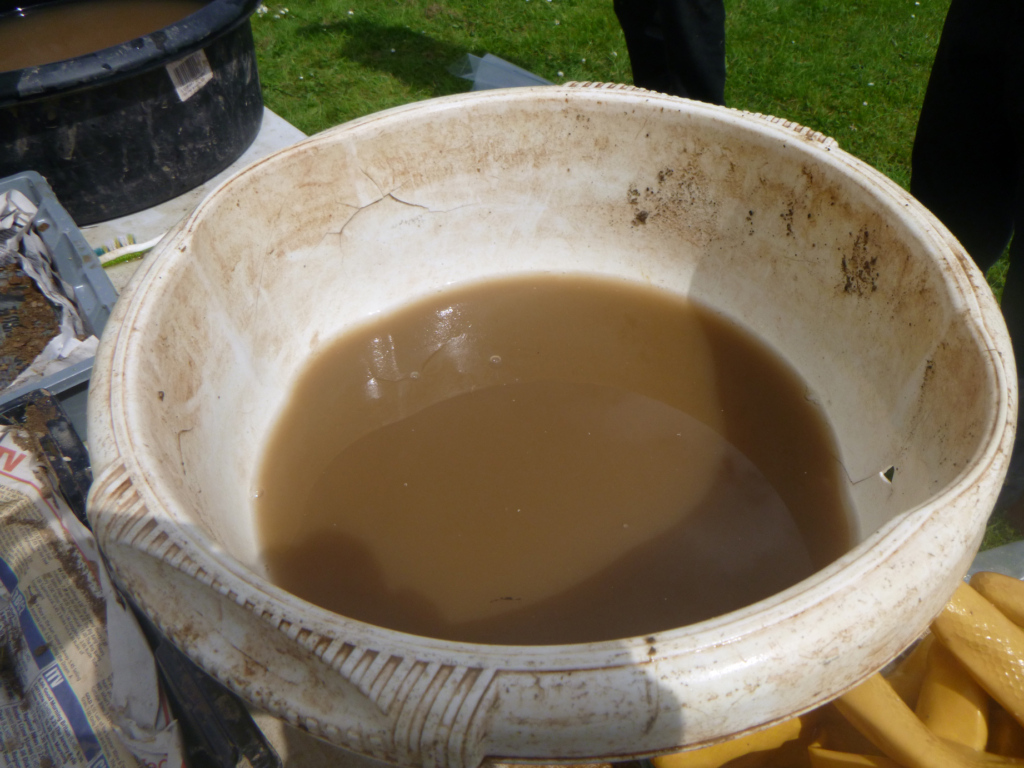
Towards the end of the afternoon, Ken brings a final group of students to the dig and they peer into the pit and listen to Will who describes the day’s progress.


And finally the youngest member of the family Sturdy Colls, Henry, arrives to add his approval! Whether it is for the dig or the biscuit, no-one is quite sure!
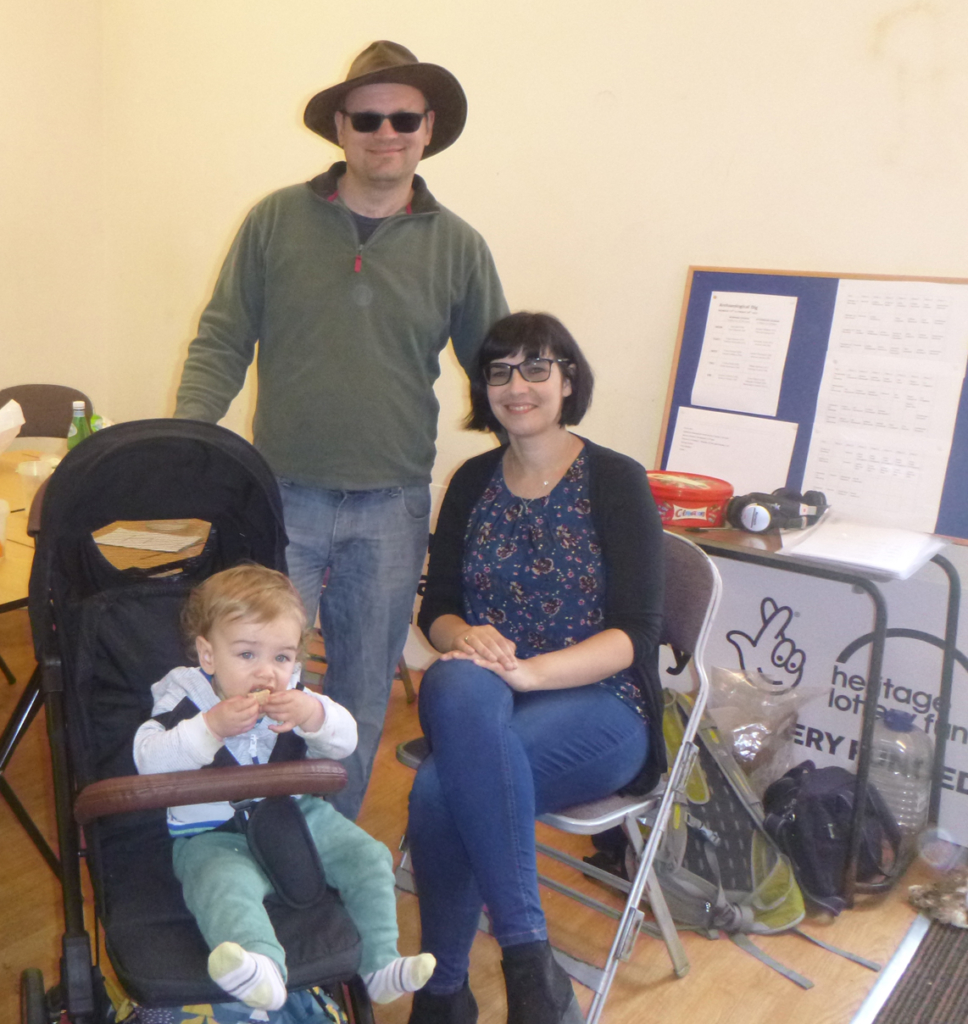
Day 5
Weather is deteriorating – it is much windier and rain is forecast for the afternoon. Still much activity. The area around the waste pipe is exposed and it becomes apparent that it is attached to concrete on its base.
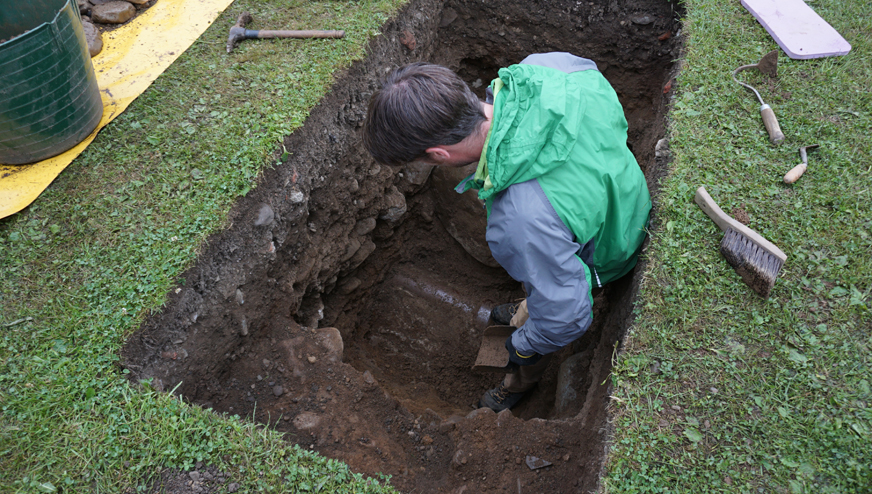
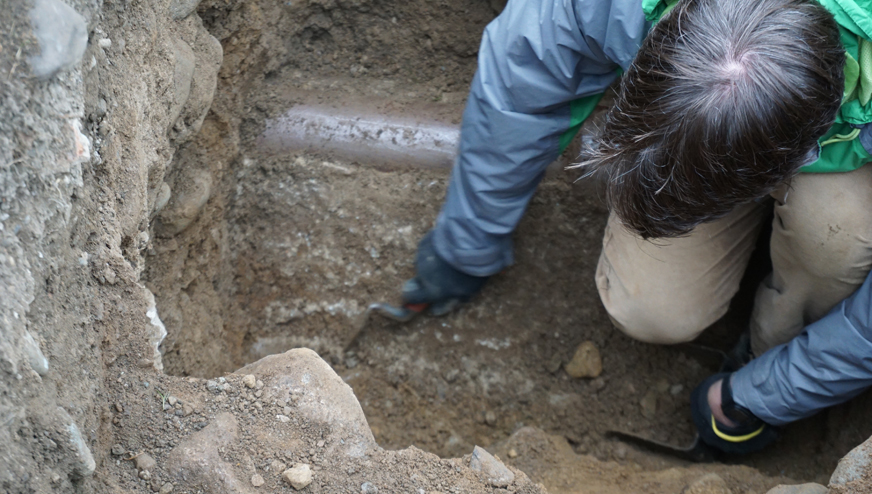
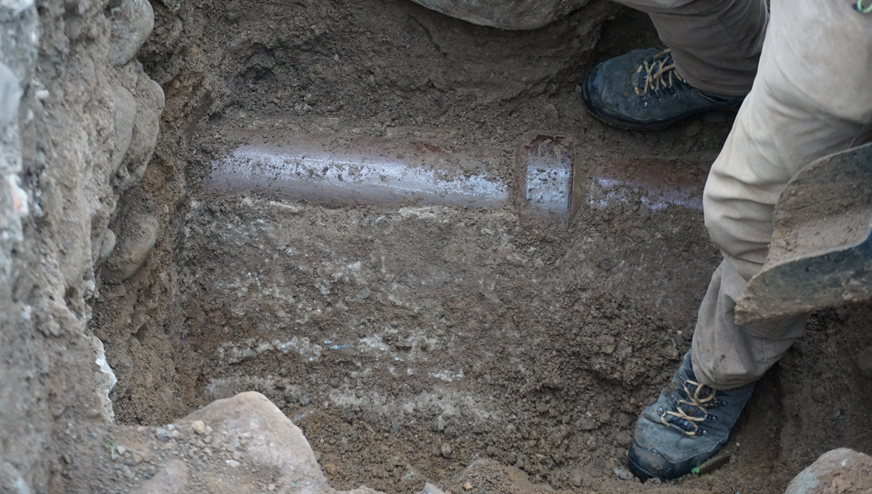
The pipe is evidence that a building was on this site and this field will continue to be excavated next week.
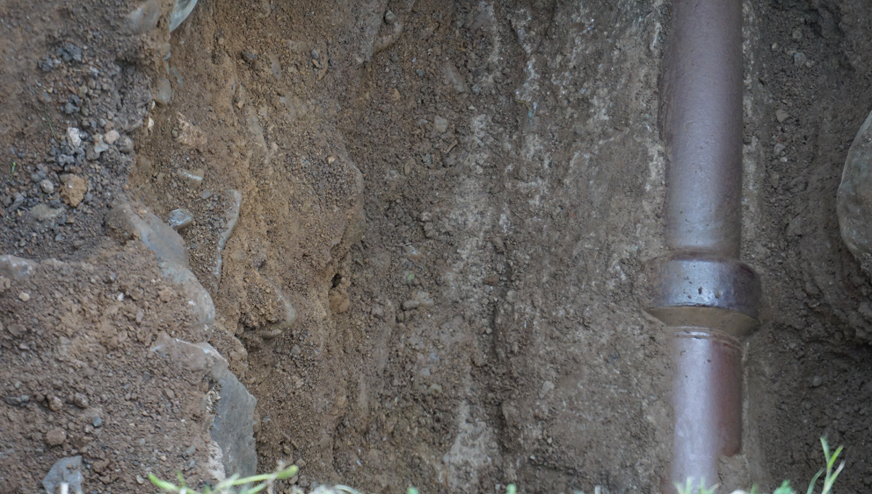
The depth of the pit certainly displays the difference between that of the rubble and the earth further down.

Before the pit is backfilled, a series of measurements are taken and precise drawings as to the position of various aspects of the pit are made on site…..
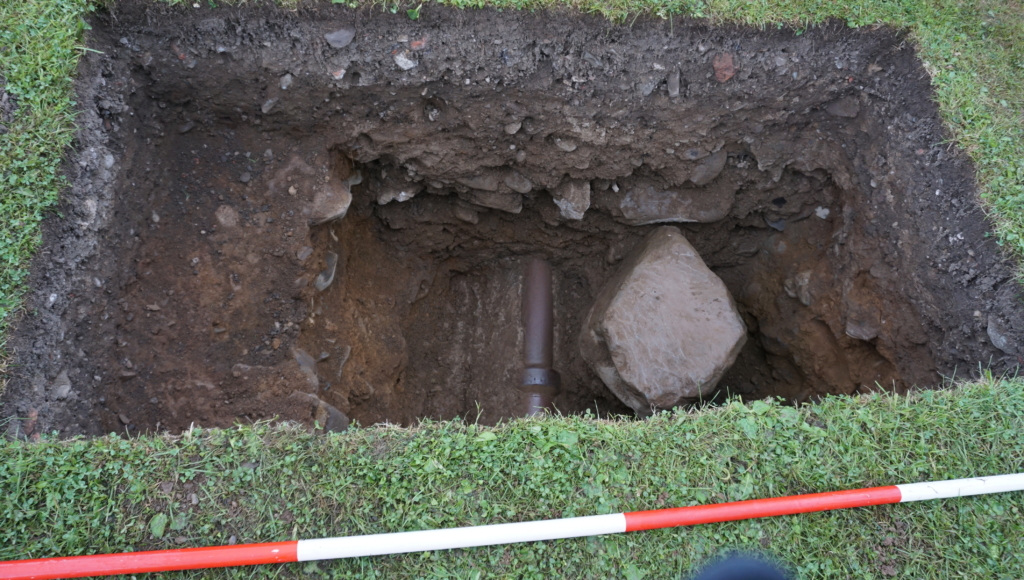

…….And Will talks to camera…..

Lauren Francis and Robert Porter, volunteers from the school, who came at 9am, are really helpful and do some of the heavy work filling the pit in.

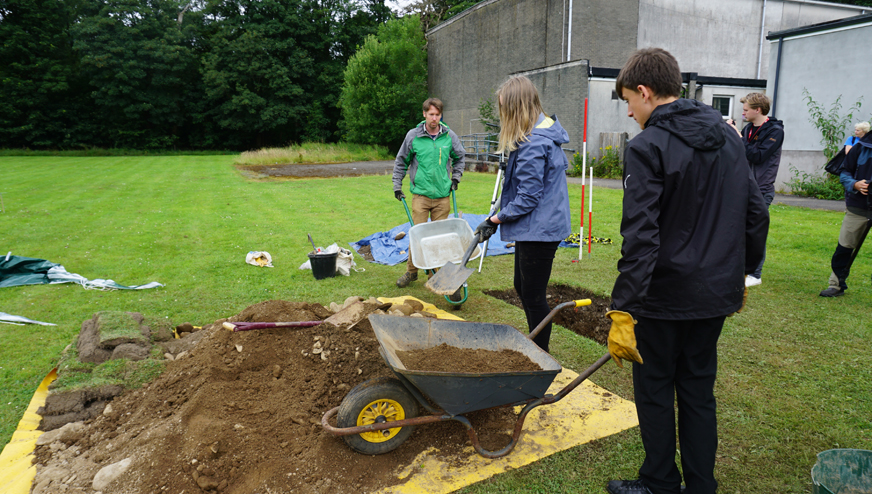


As a reward, Trevor shows them how to use the metal detector!
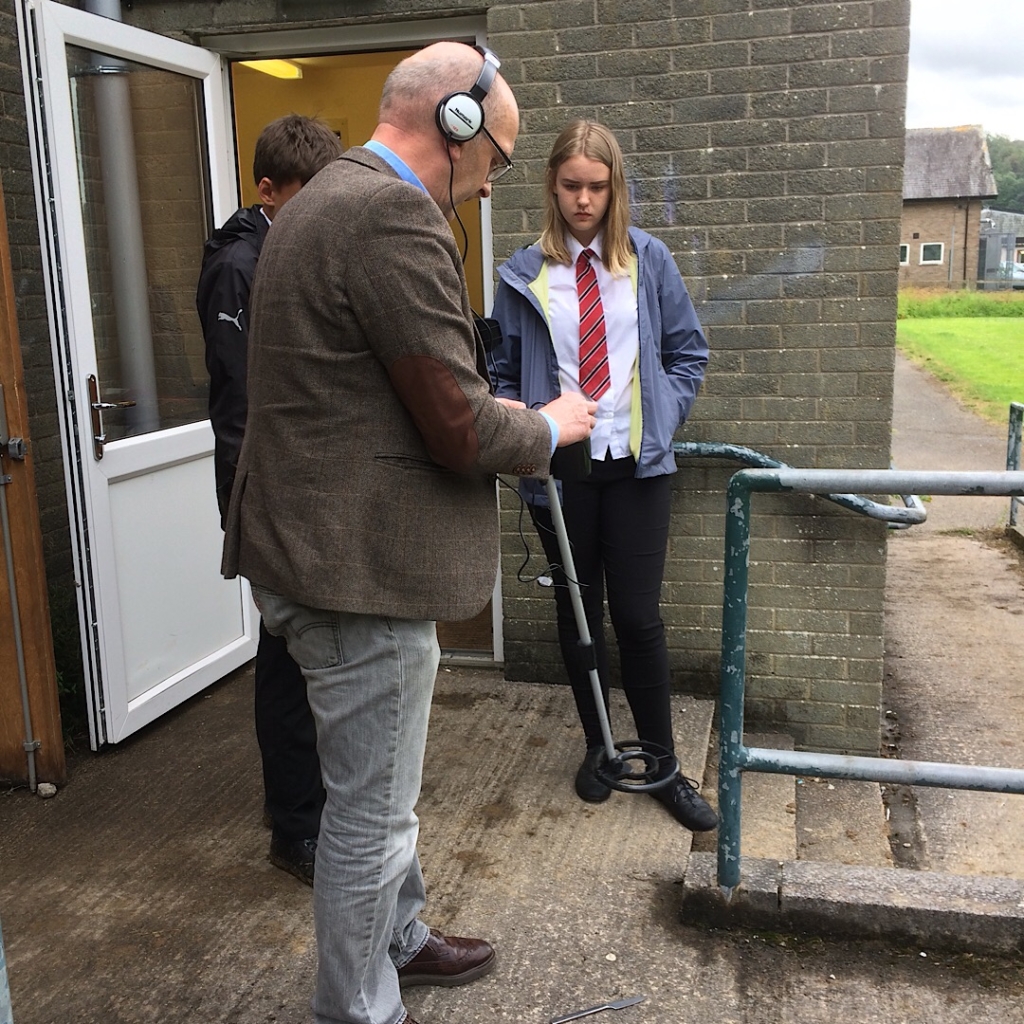
Back at the pit, the rocks are replaced first and then the earth…..
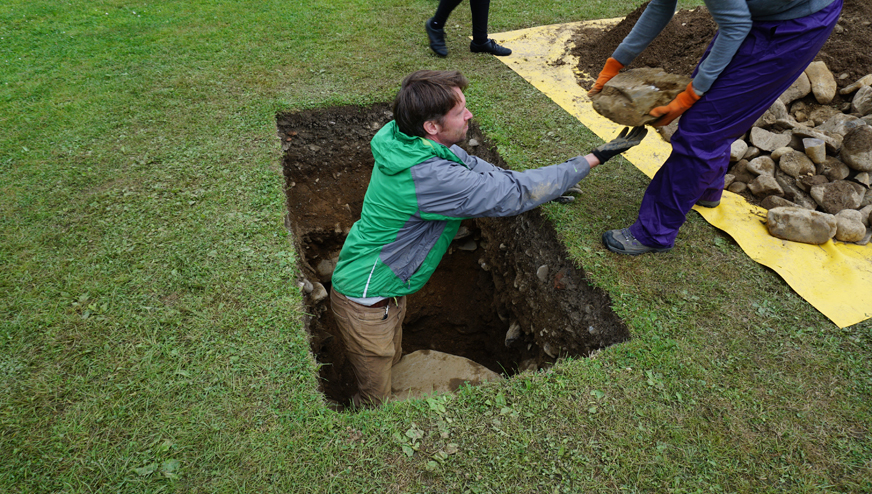
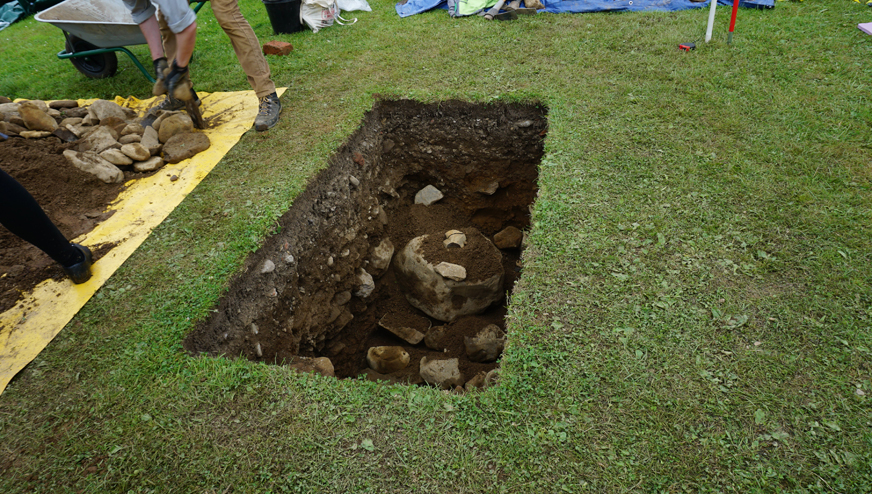
After lunch the final three volunteers from the school, Liam Myers, George Sinclair and Benjamin Jones, continue to help fill in the pit.


…..and finally place the turf.


Dave returns today and also photographs many of the processes, particularly from above, hence the long pole.
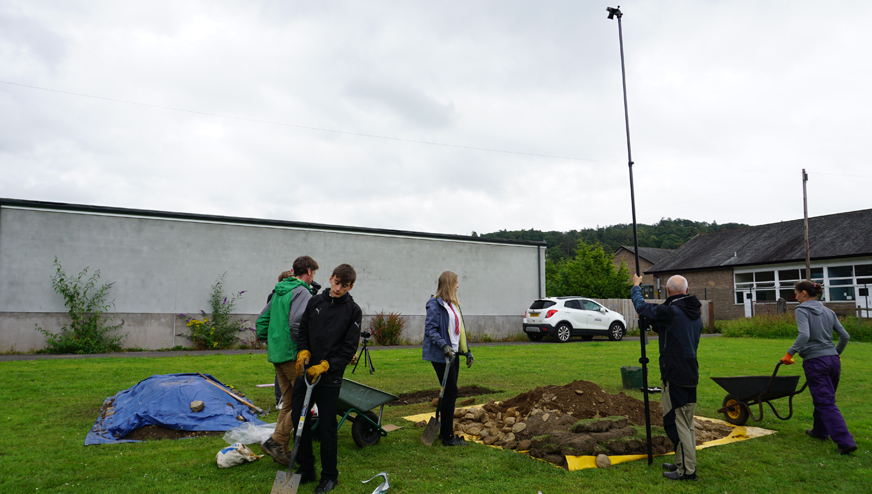


During the afternoon Katherine and Alex dig another small pit 4, to the depth of 60 cm, but after examining the contents, it is refilled since it reveals little.

Towards the end of the week John Harrison pays a visit and is intrigued to see the plan of the estate, and he describes his father’s farm a short distance away. He remembers his father telling him that some of the rubble was used as foundation for part of a new road near Windermere School.

Day 6
We are joined by Geography Lecturer Tim Harris with his students, John and Nicholas and Sam. Frankie, Emily, Thaleia, Lauren B and Lauren J are from Forensic Science, Forensic Biology and Forensic archaeology respectively. And Joshua from the History department . Also arriving are volunteers who have applied through the site: Linda Wilkinson, Frances Rand, Elise Johnson, Gillian Macleod and Tom Palmer. Katherine joins us for a second week.
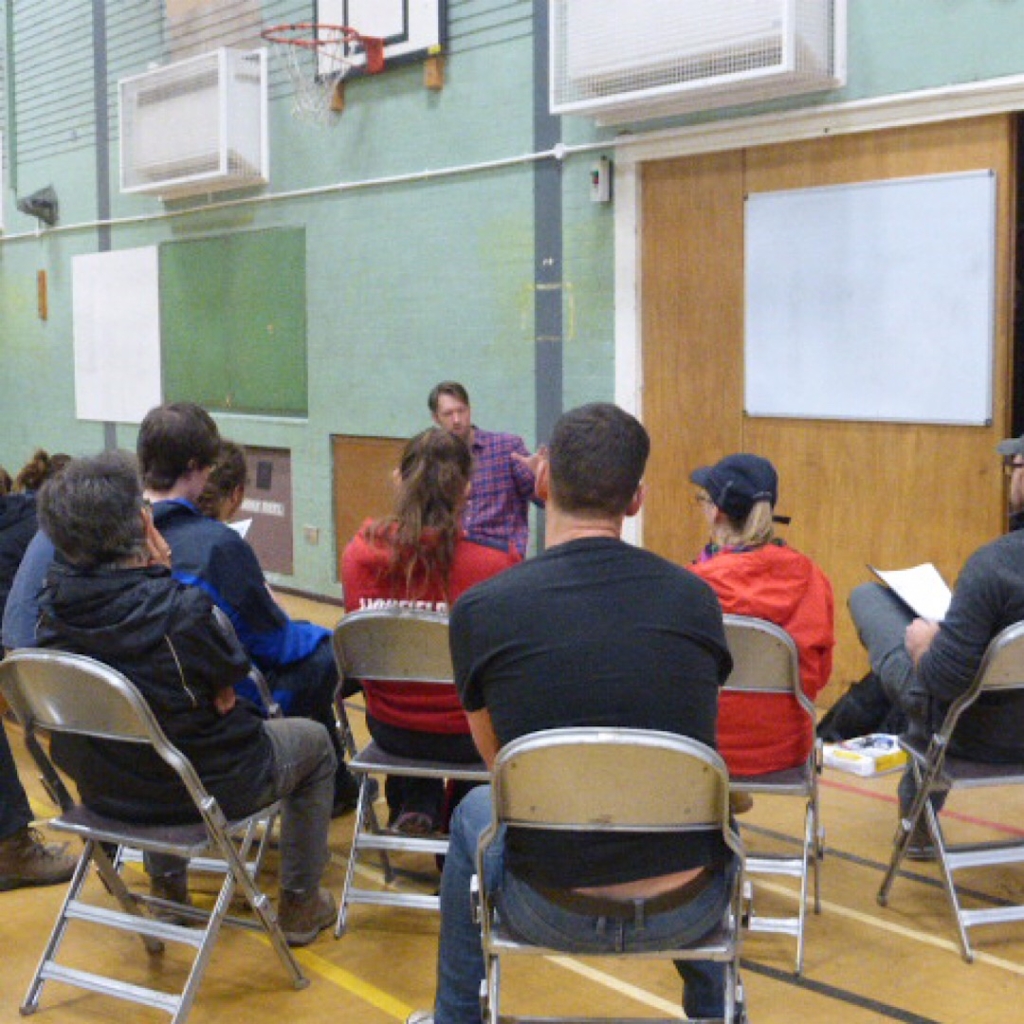
Will starts with a briefing in the sports hall and describes a brief history of the site, together with the story so far and for the newcomers, health & safety.

Trenches 5 and 6 are started in the sports field, directly in front of and behind the large test pit (No. 3) dug last week. The trenches are measured and the turf removed.
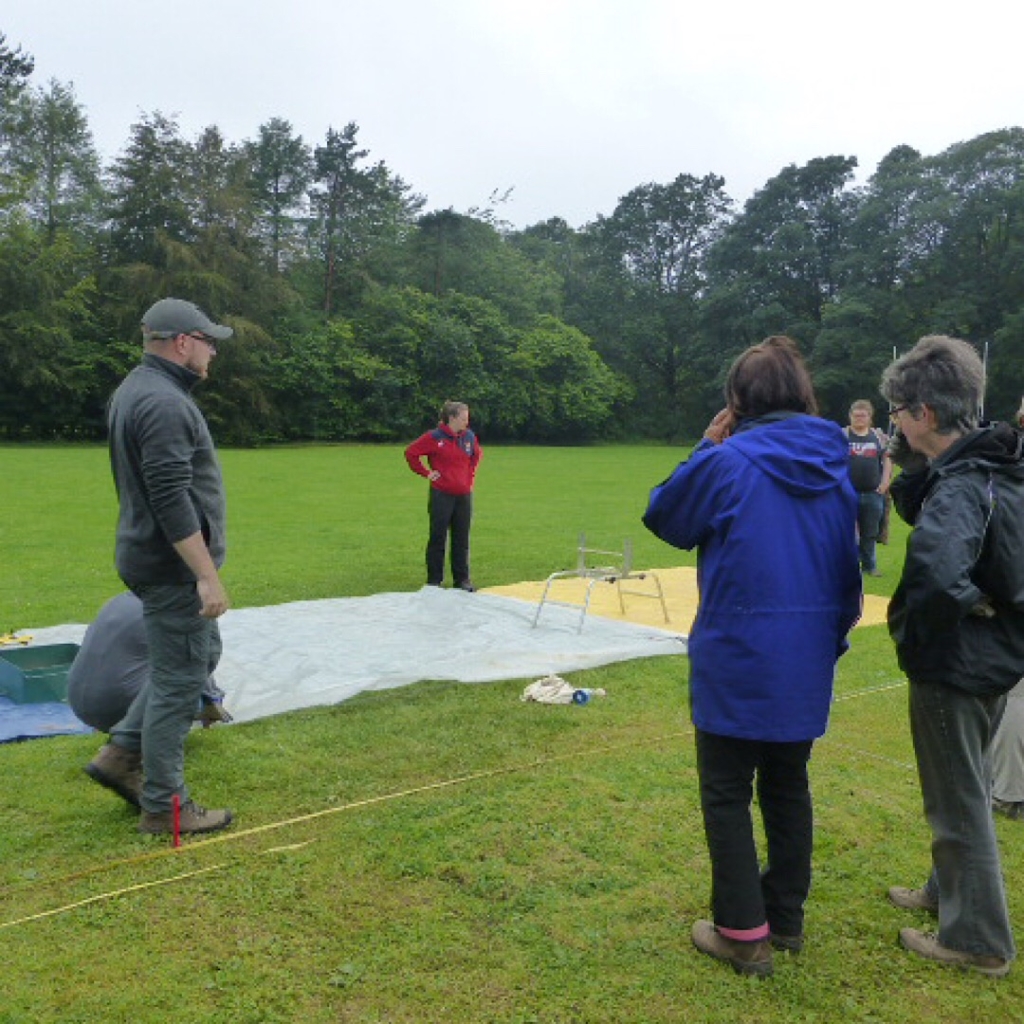

Once the turf is removed and the top soil exposed, it is carefully extracted from both trenches, placed in buckets and any possible artefacts of interest put to one side. Almost consecutively, sieving begins.

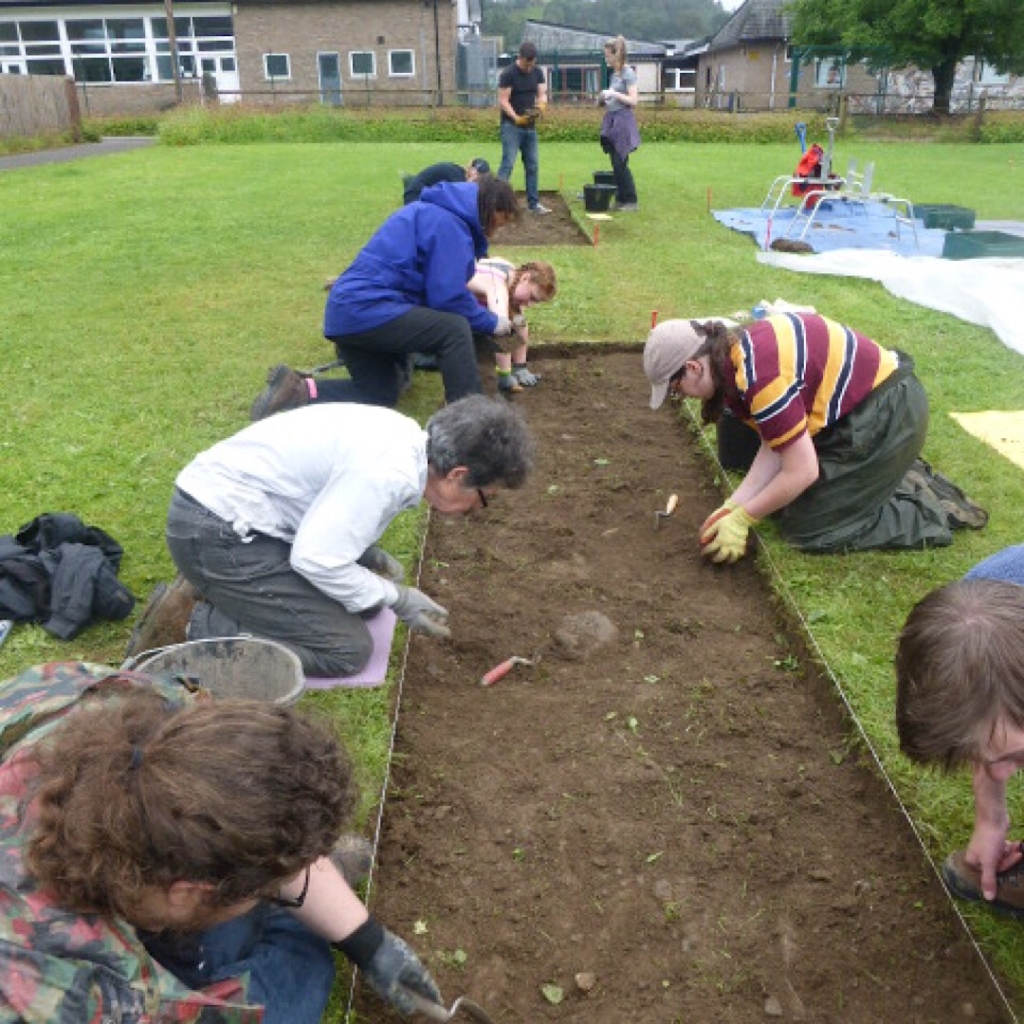
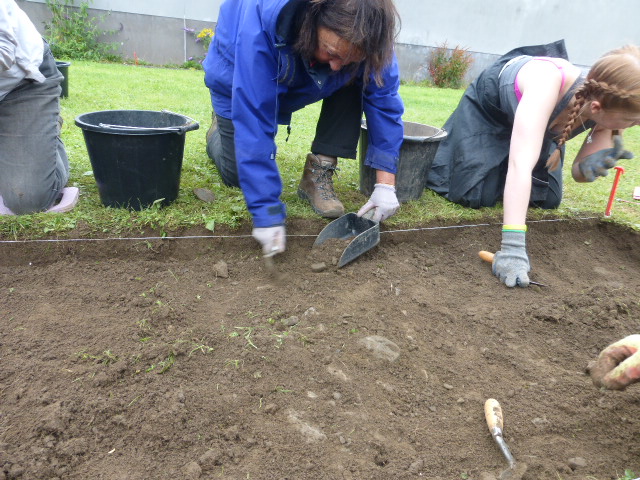
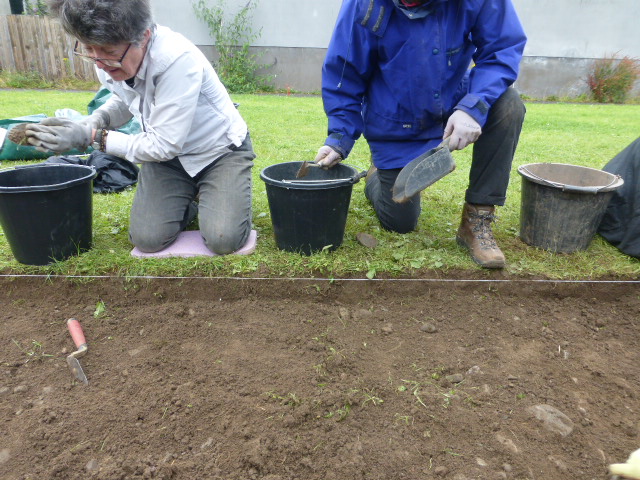

Whilst this is going on, Caroline takes some of the students into a different area of the school grounds, where the magnetometer recorded some possible areas last week that needed to be re-considered using the ground penetrating radar. This equipment “bounces” radar down below the ground and depending on what is below “picks up squiggly lines” that can be interpreted.

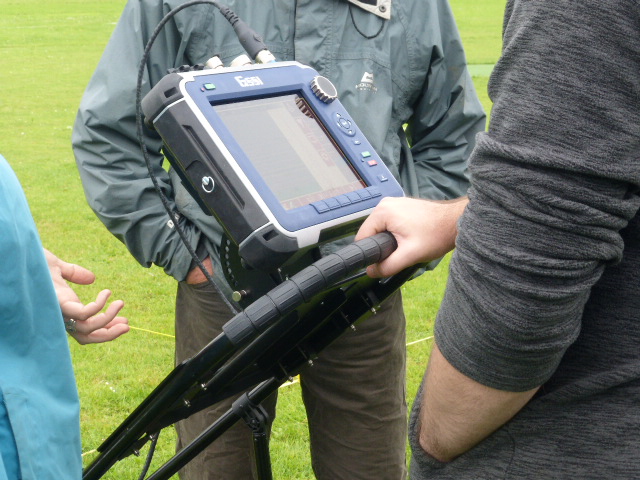
Accurate measuring is needed in order to pinpoint any constructions. In this case, an area of 25m by 75m is measured and Caroline explains how the information will be recorded and shows the students how to use the equipment.
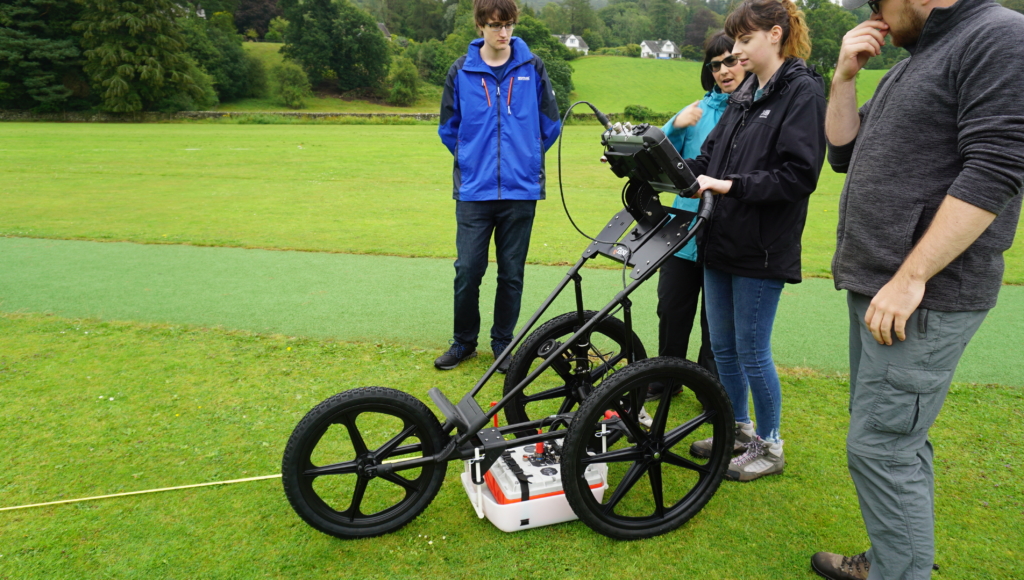

Linda Dugdale and Raymond Davis arrive. They are former residents of Calgarth Estate and a few minutes later Marion Fothergill and Joyce Denny, join them.
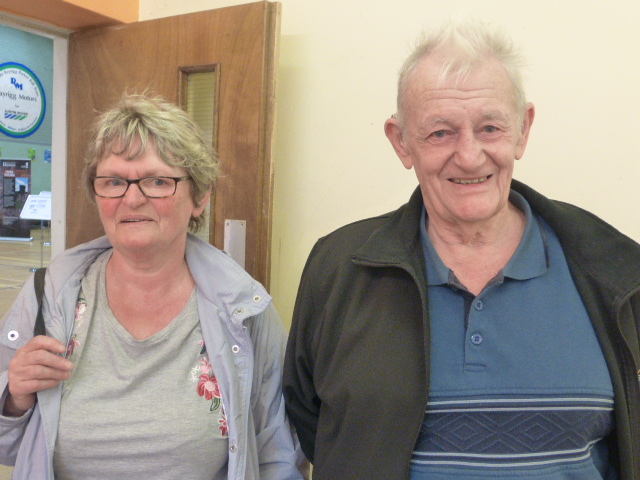
Linda lived at Calgarth until she was about eight. She describes inside the house “we did have a front door but we didn’t use it. We went in the back door into a little kitchen with a black leaded oven with a wash boiler in there. And then you went into the living room, which was quite a big one really…and then into the passage where there was the toilet and the bathroom – we were posh, we had a bath, then there was my brother’s bedroom, then my mother and father’s and then mine and my sister’s.”
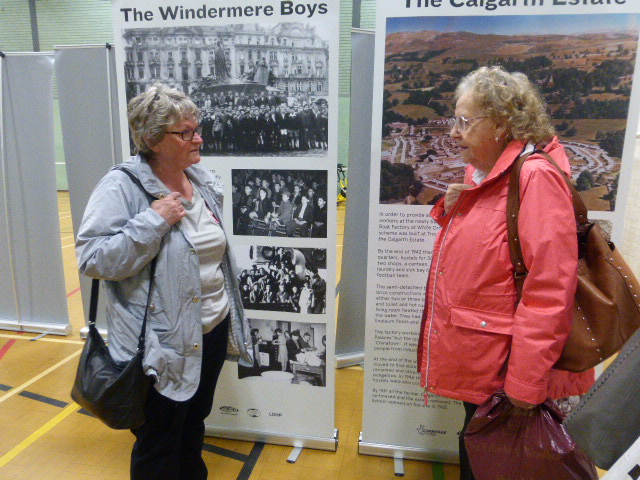
Marion Fothergill and Joyce Denny immediately continue to reminisce about both their lives in Calgarth. They hadn’t seen one another since they left!
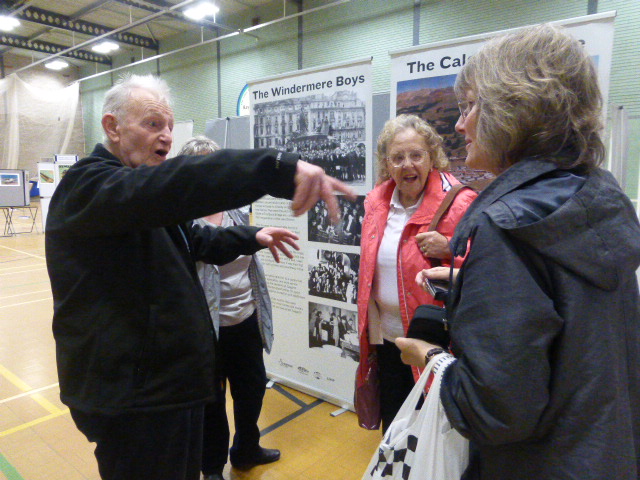

“That was the big hall there and that was where they did all the cooking and there was a pipe leaning out of one of those windows and we used to stand on the pipe and we used to say ‘give us a carrot’ to Mrs Warburton when she was peeling them”.
In the afternoon, Caroline interprets and explains the ‘squiggly’ lines, recorded in the morning, to some of the students. After much consideration, they decide that apart from a few very small areas that may be tested later, the main part of the foundation on the recordings is a further waste pipe.
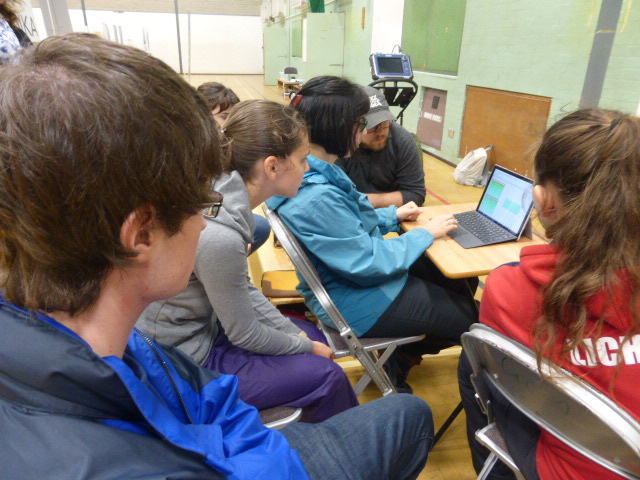
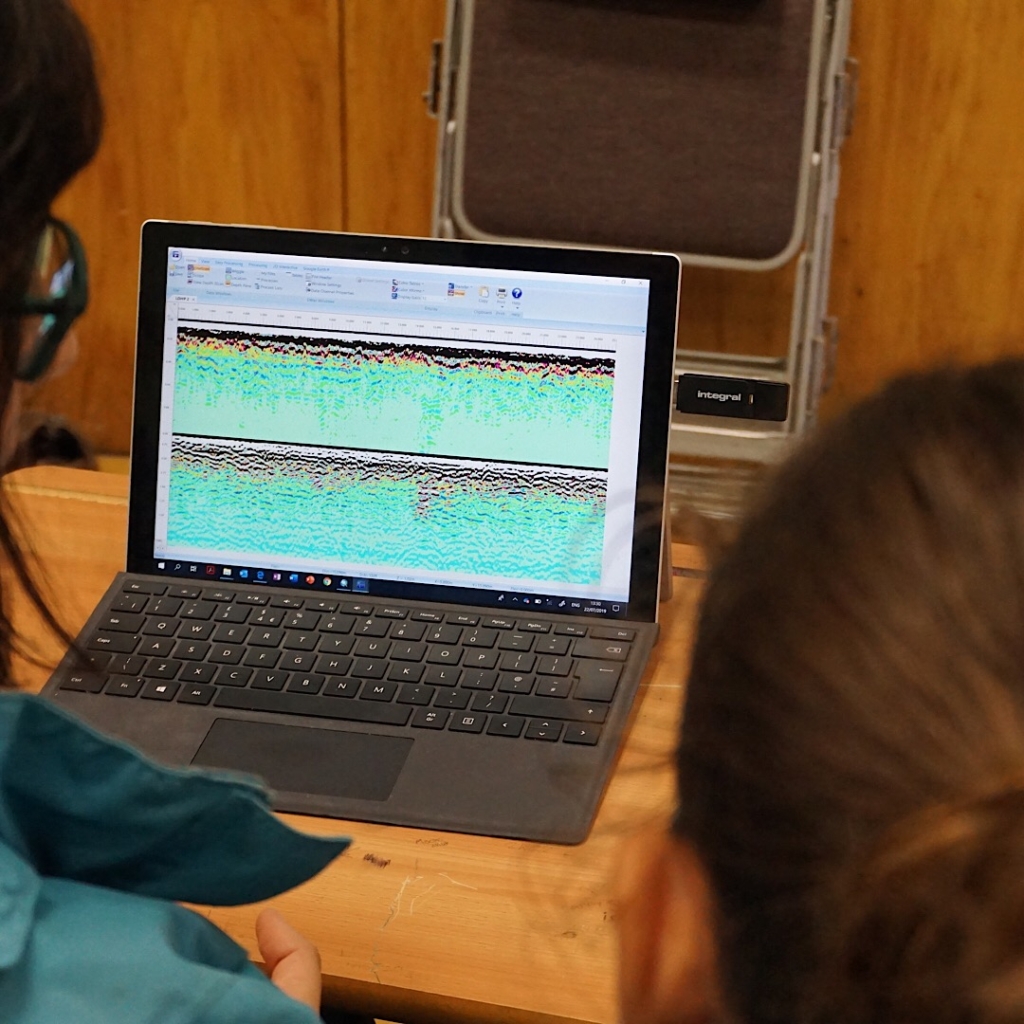
As the dig continues, it becomes apparent that approximately half of trench 5 must extend beyond the perimeter of a building, since only half of the exposed context contains demolition. That is the half that is nearest the now backfilled test pit 3. Near the end of the day some very large stones are uncovered towards the other end of the pit, suggesting these could possibly be part of a foundation wall.
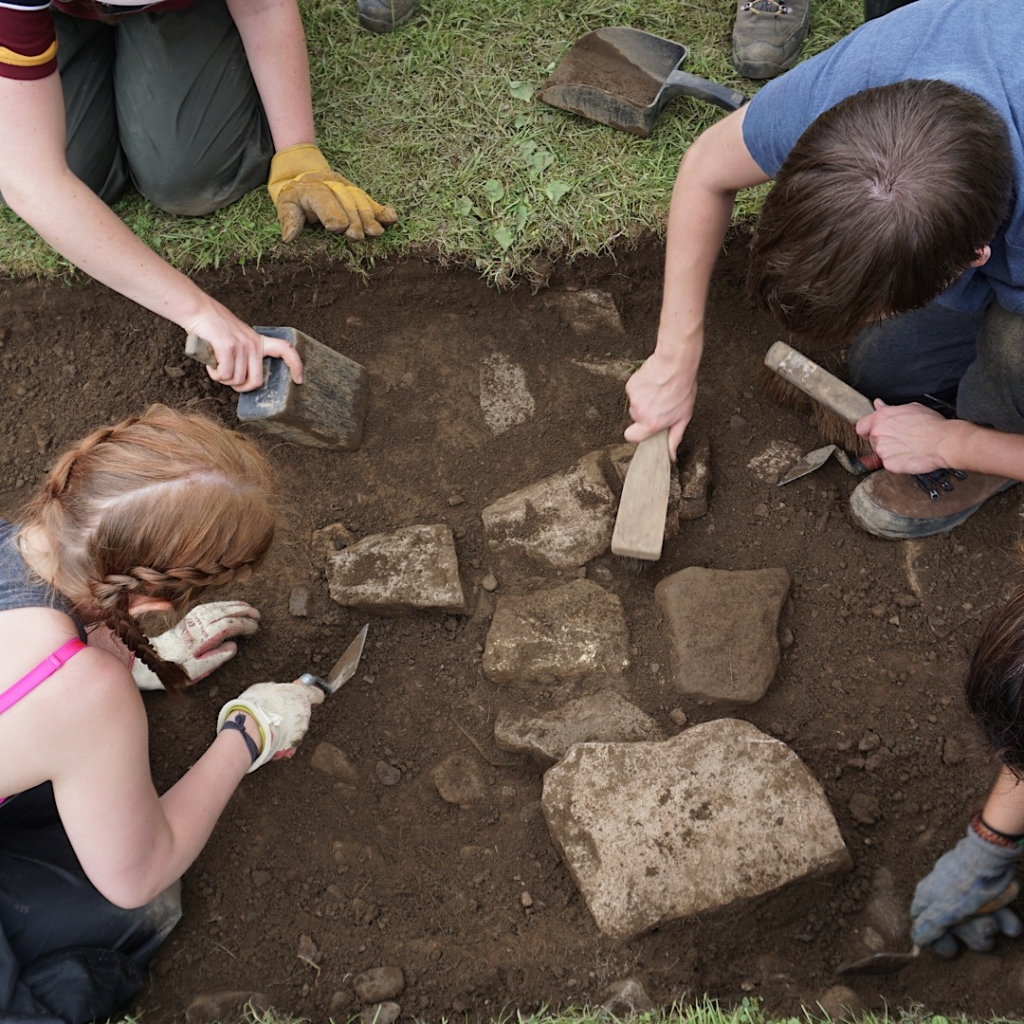
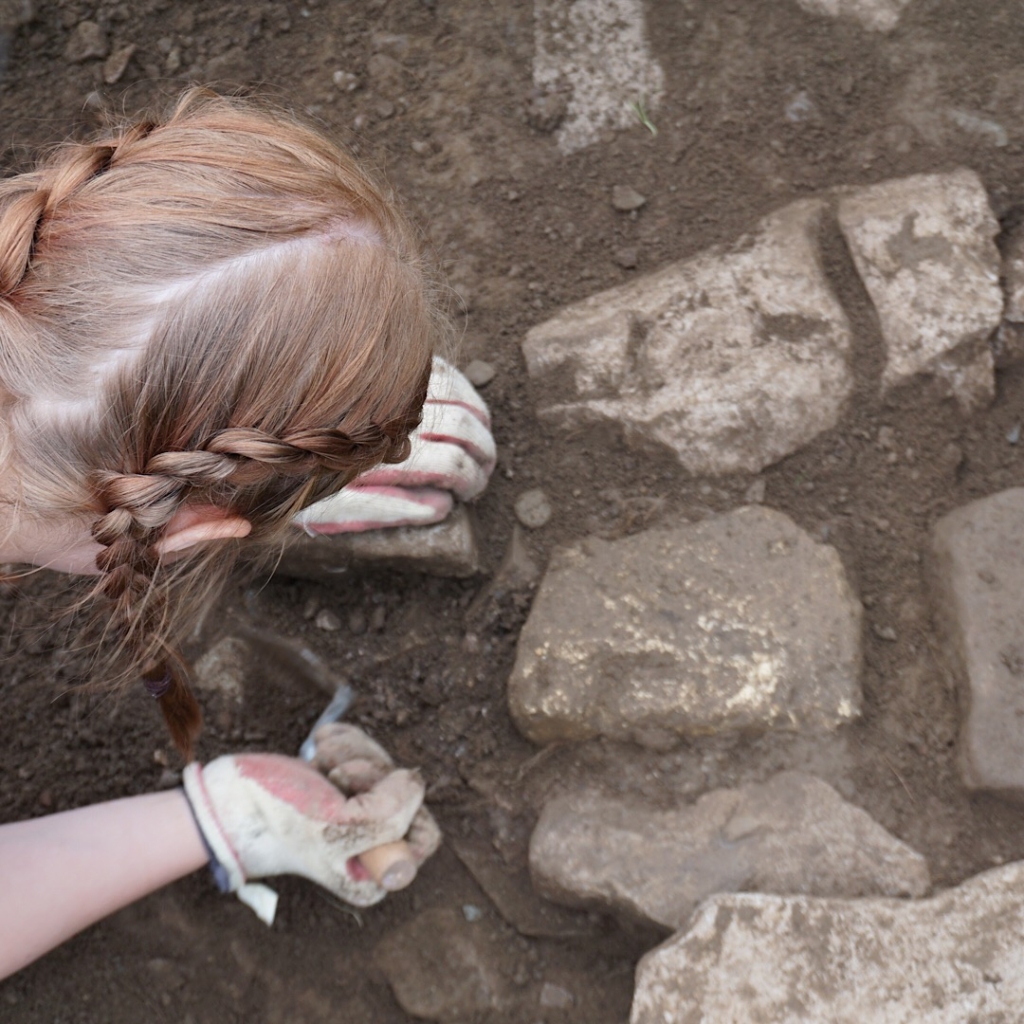
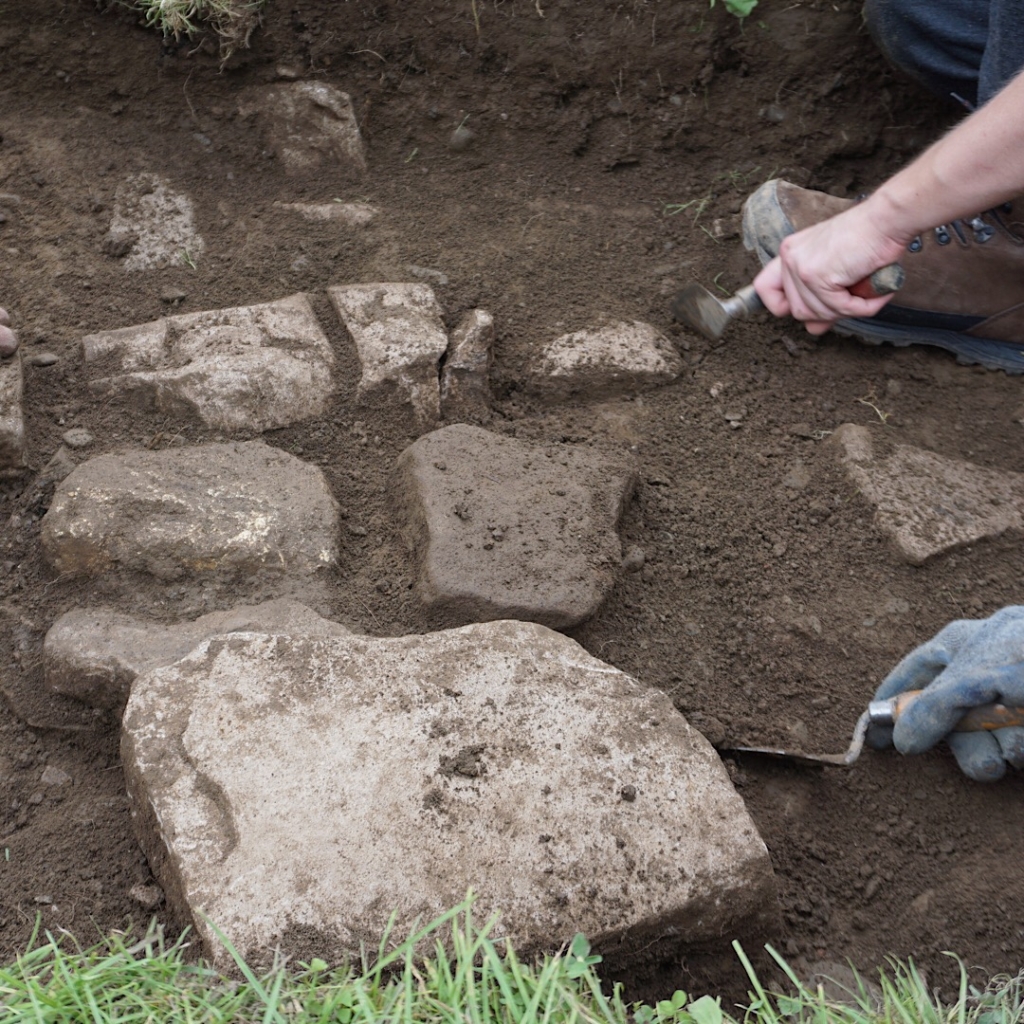
In trench 6 – the trench nearest Broadfield Road and the school – far more demolition extends over the whole area.
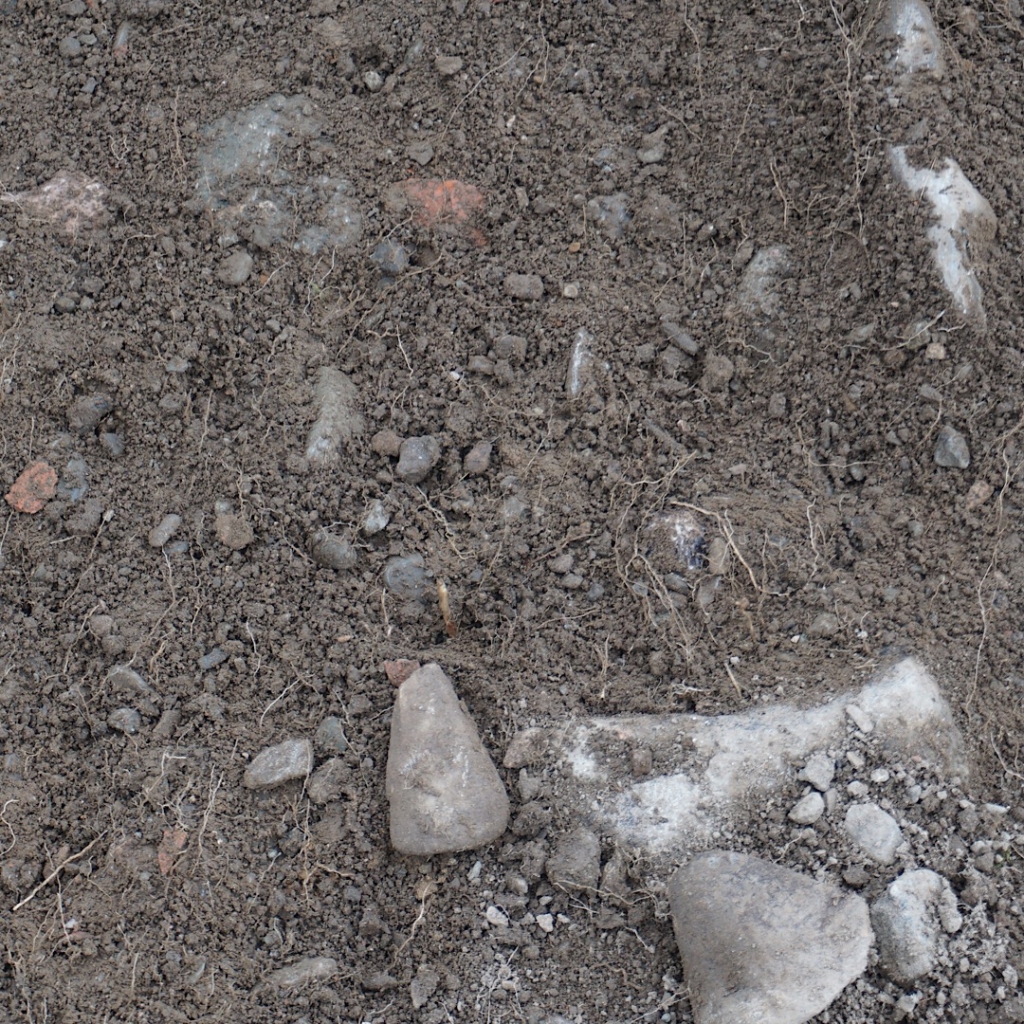
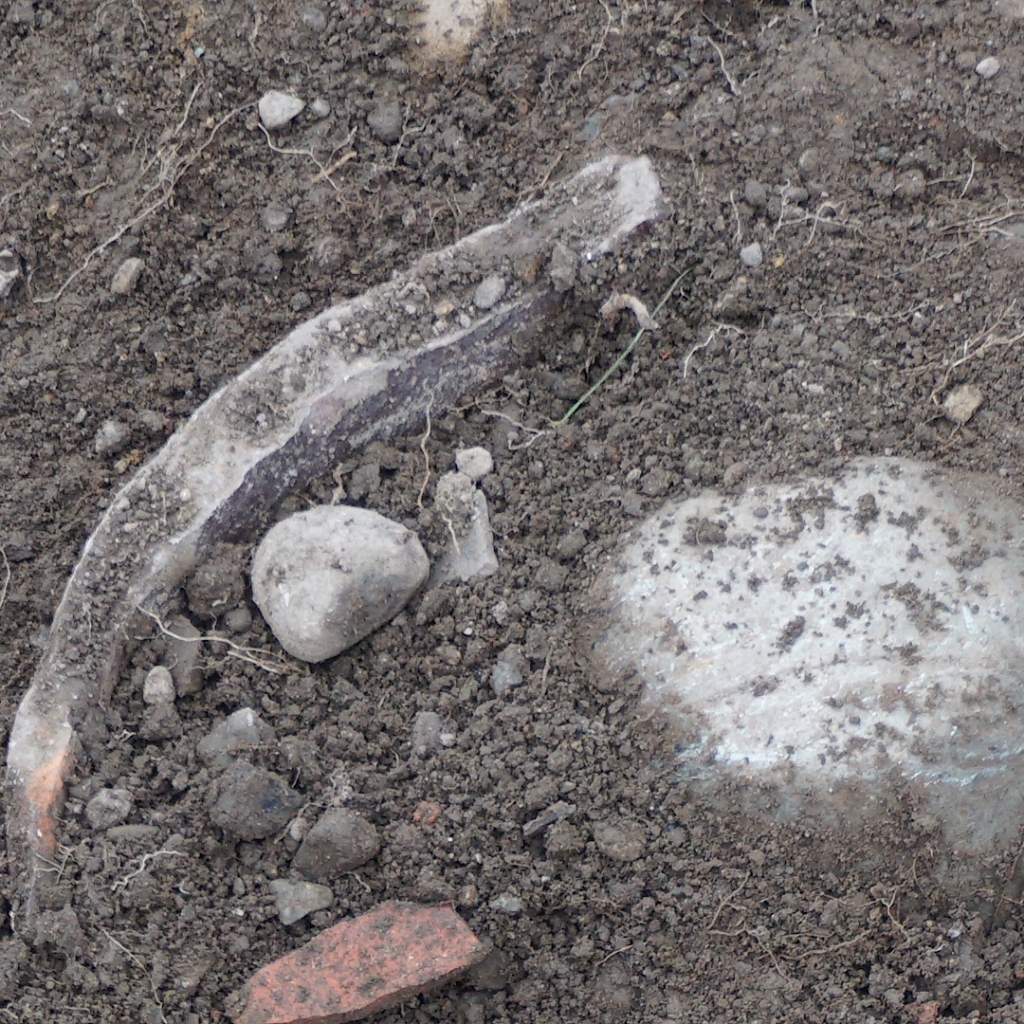
By the end of the day artefacts , amongst many, include bricks, different kinds of glass – some possibly from a toilet of bathroom window – and white tiles…….
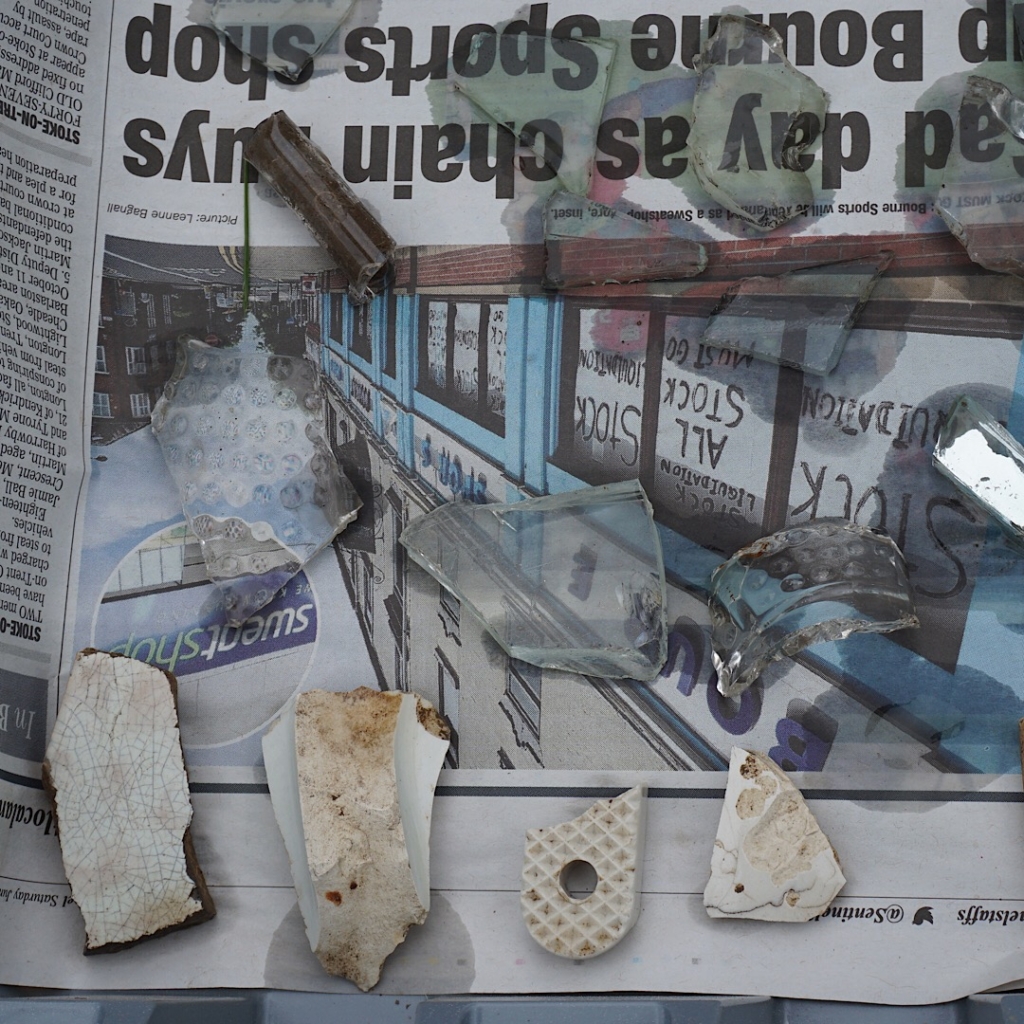
…..several pieces of piping and one in particular has the word ‘Rainford’. This must have come from Rainford Potteries Ltd, manufacturers of stoneware pipes, gulleys and chimney pots.
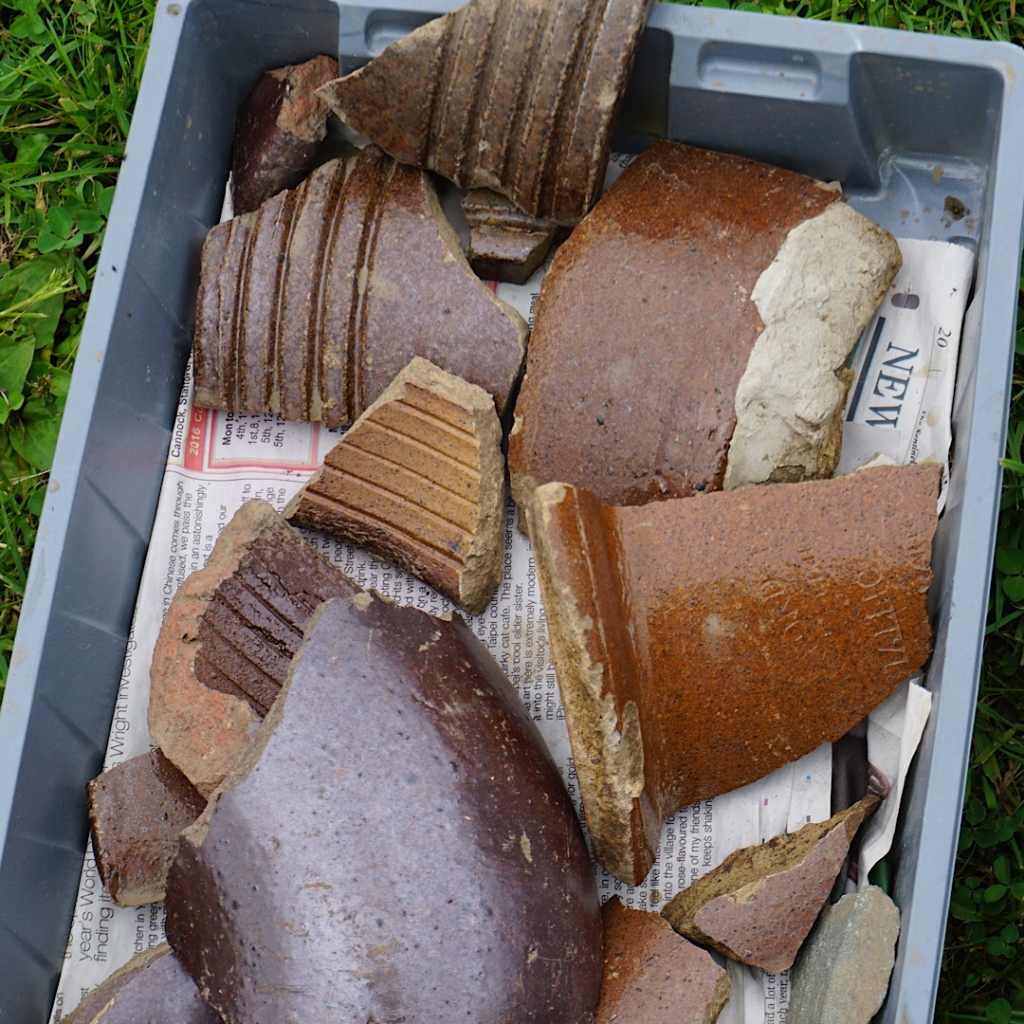

Many smaller and interesting artefacts include a keyhole, mirror glass and patterned china. Most of these have been found as a result of scrupulously scraping, sifting and washing and by going to extreme lengths – in some cases – too!
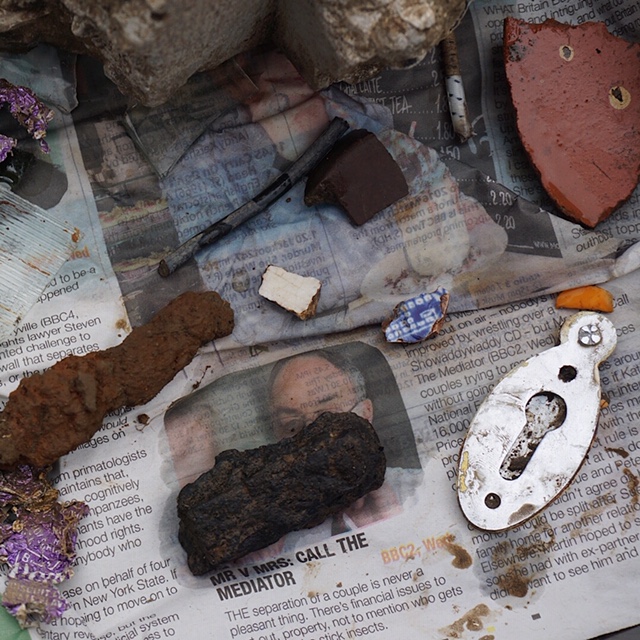
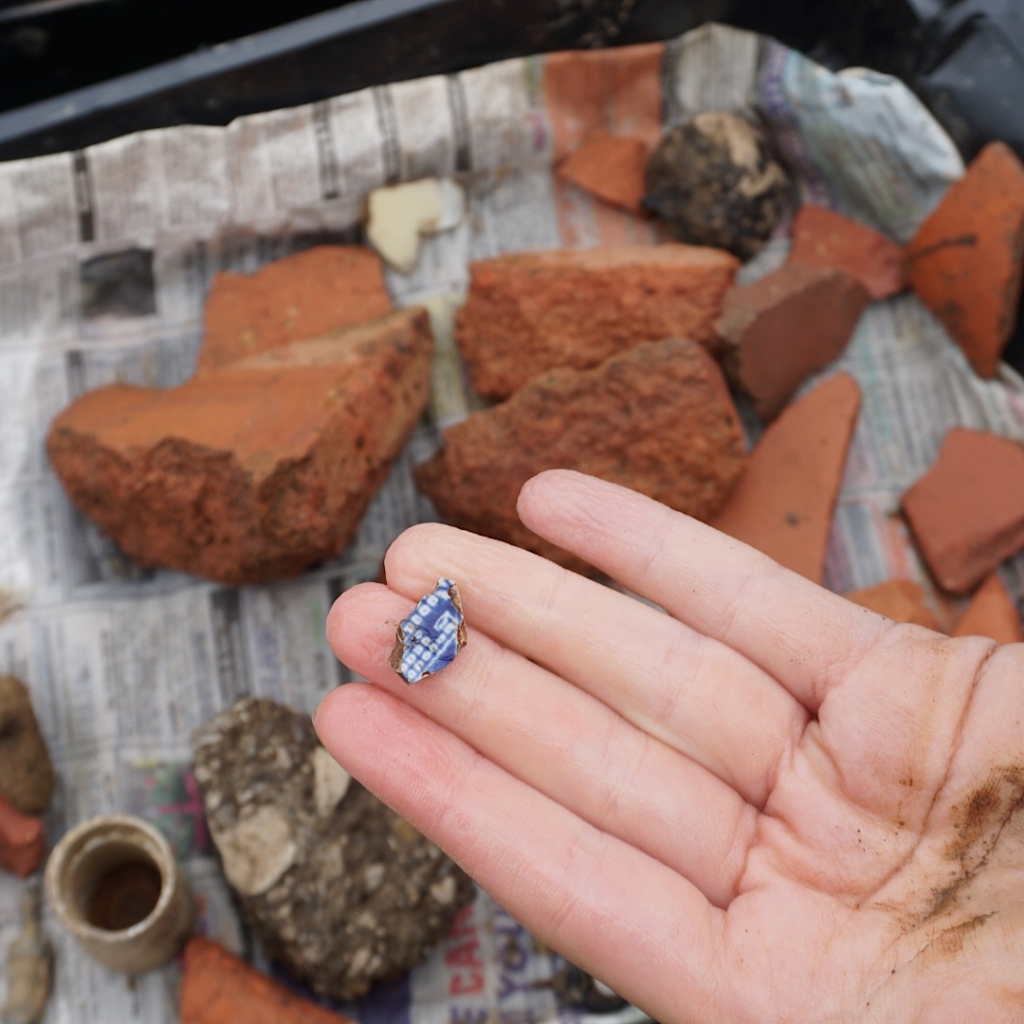
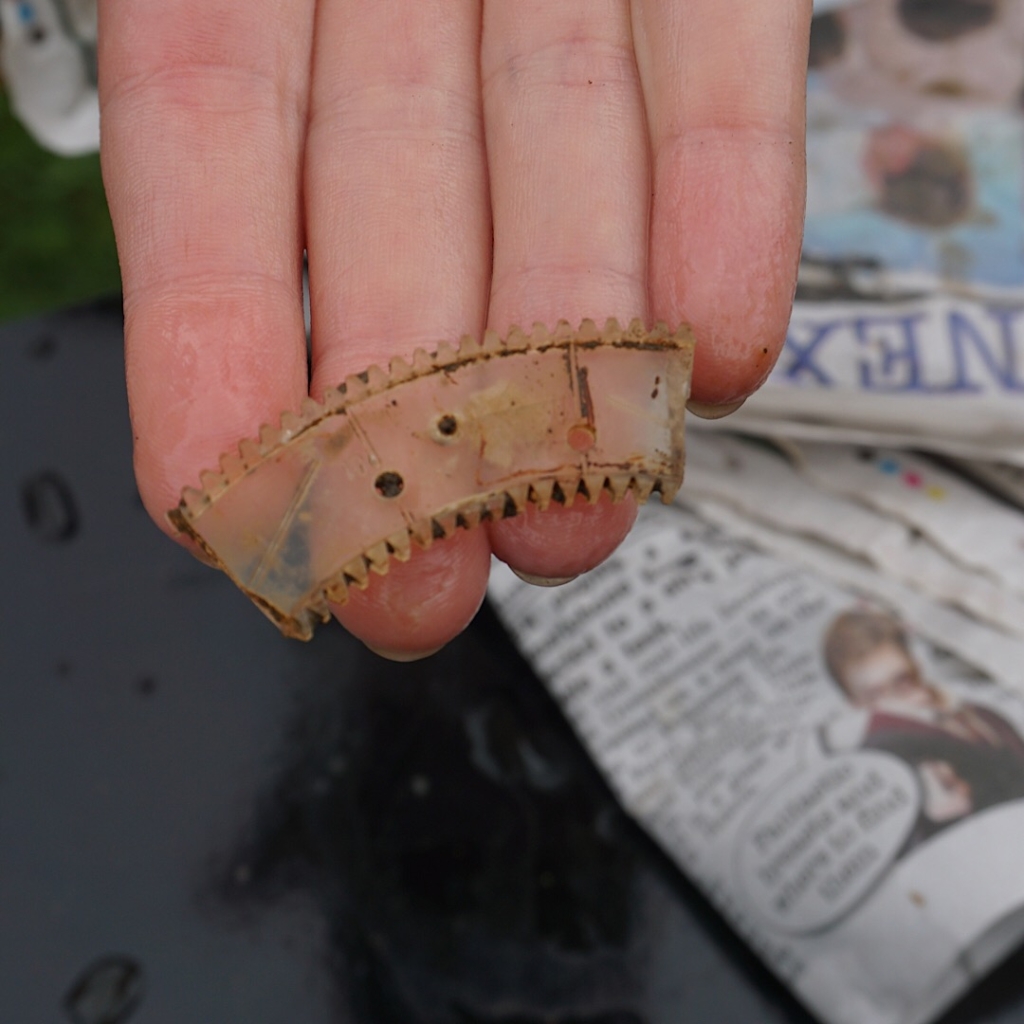
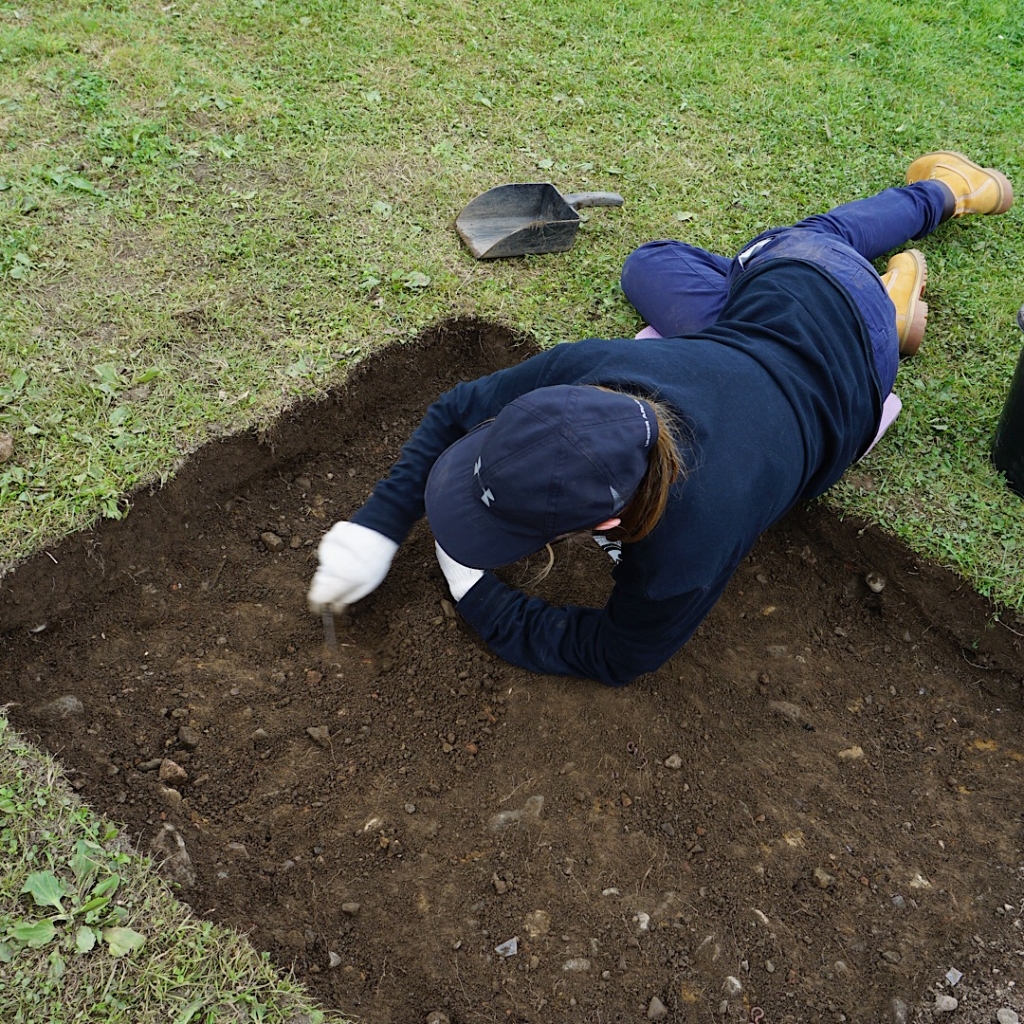
Day 7
After a briefing by Will, the new volunteers – Helen, Immy and Rowan Warwick and Susie Rendell start to wash some of the material already found this morning. Linda, Gillian and Elise have returned and continue scraping in trench 6. Rowan particularly likes washing because “I haven’t done it before”!
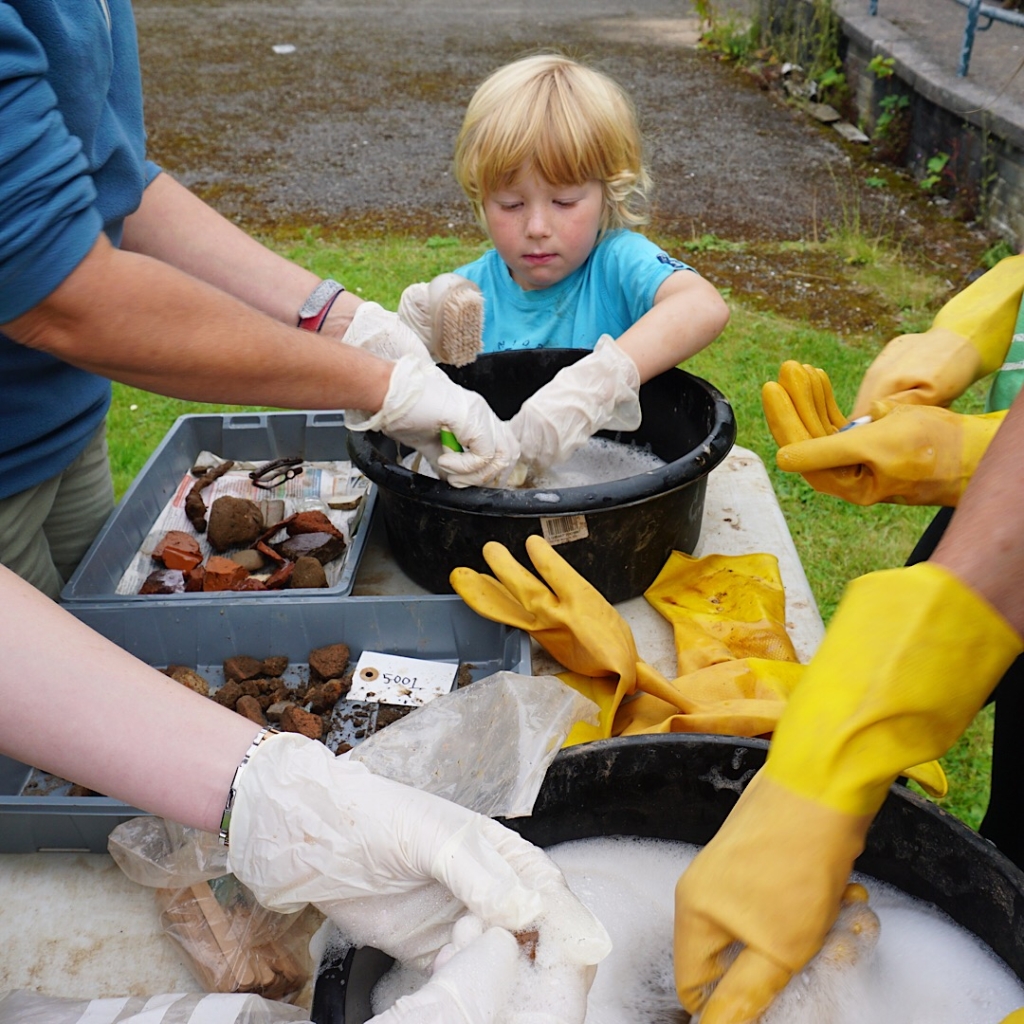
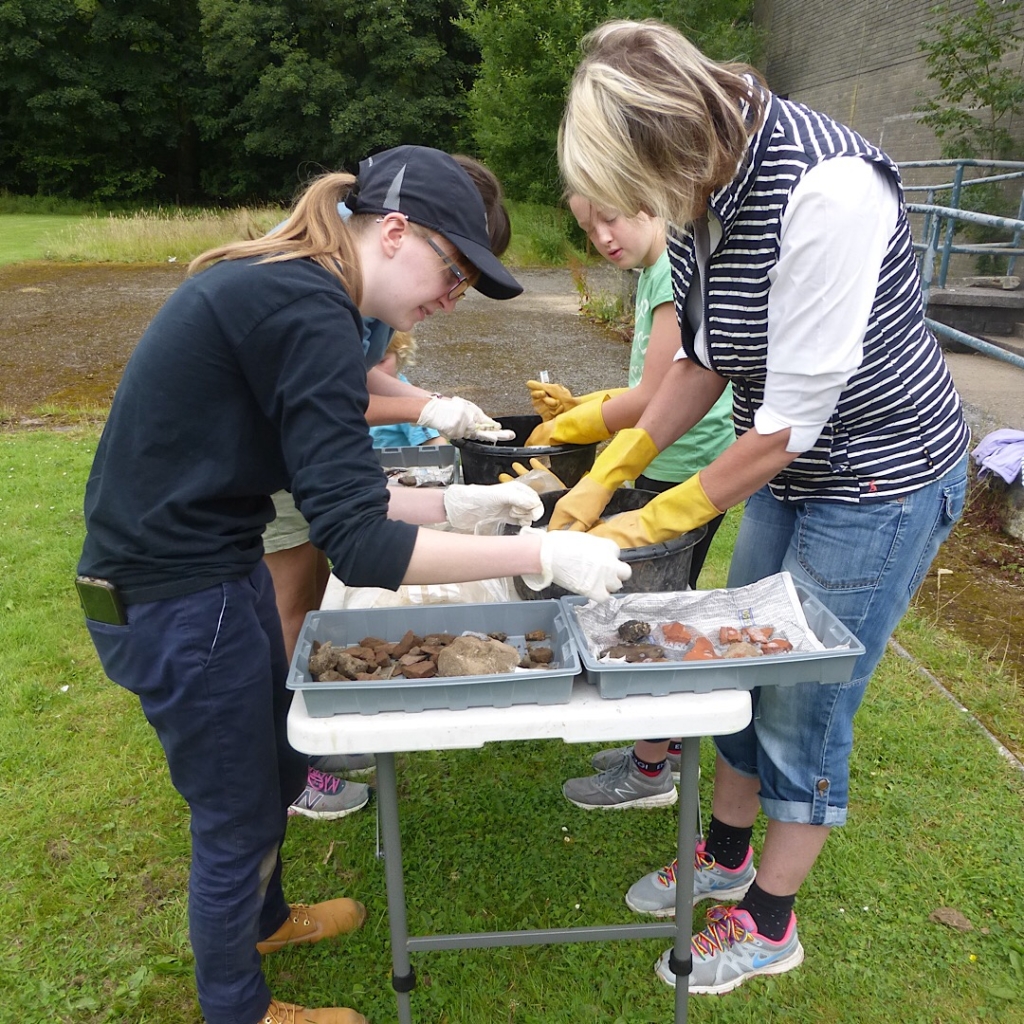
Kevin and the students are already busy also scraping in trench 6, and in trench 5 Will prepares a metal and string grid to make an accurate drawing of the possible foundation stones. If they form part of a possible foundation, an extension of the trench may be started at right angles.
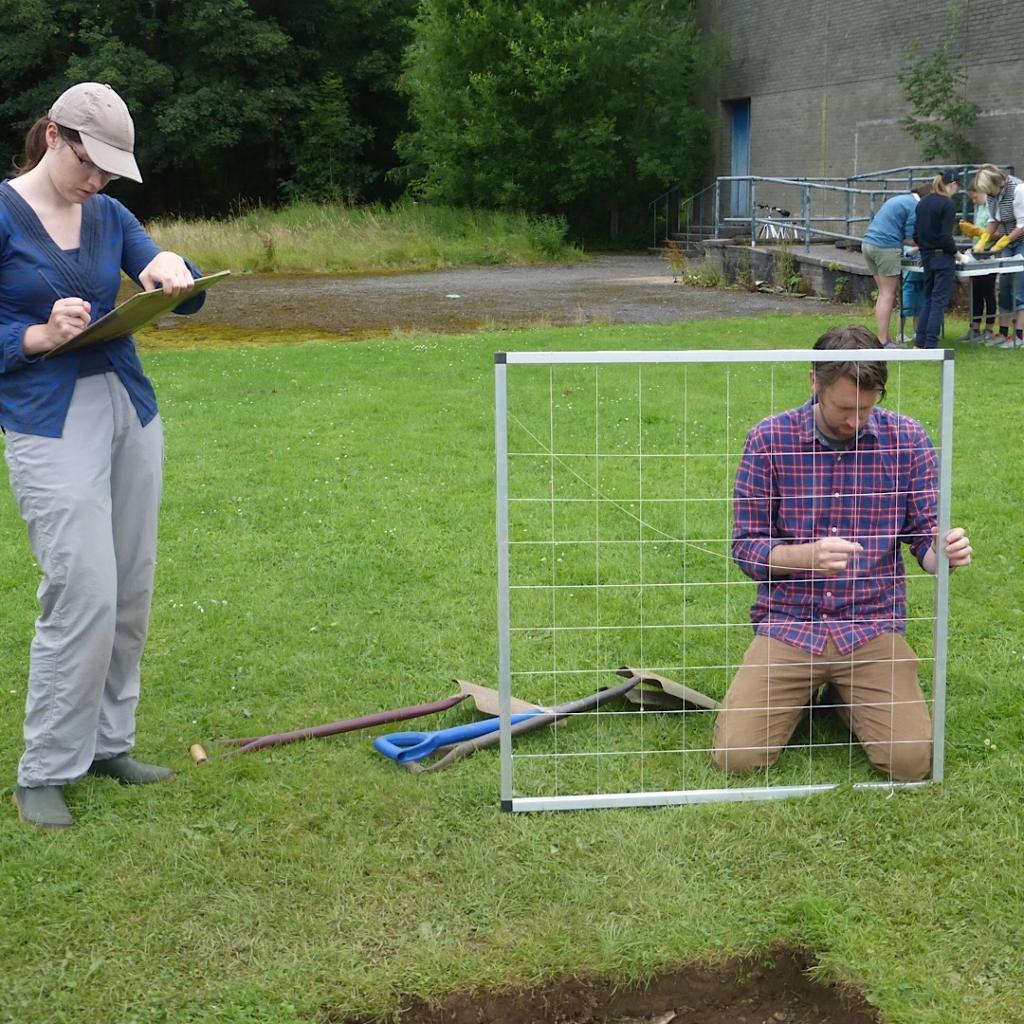
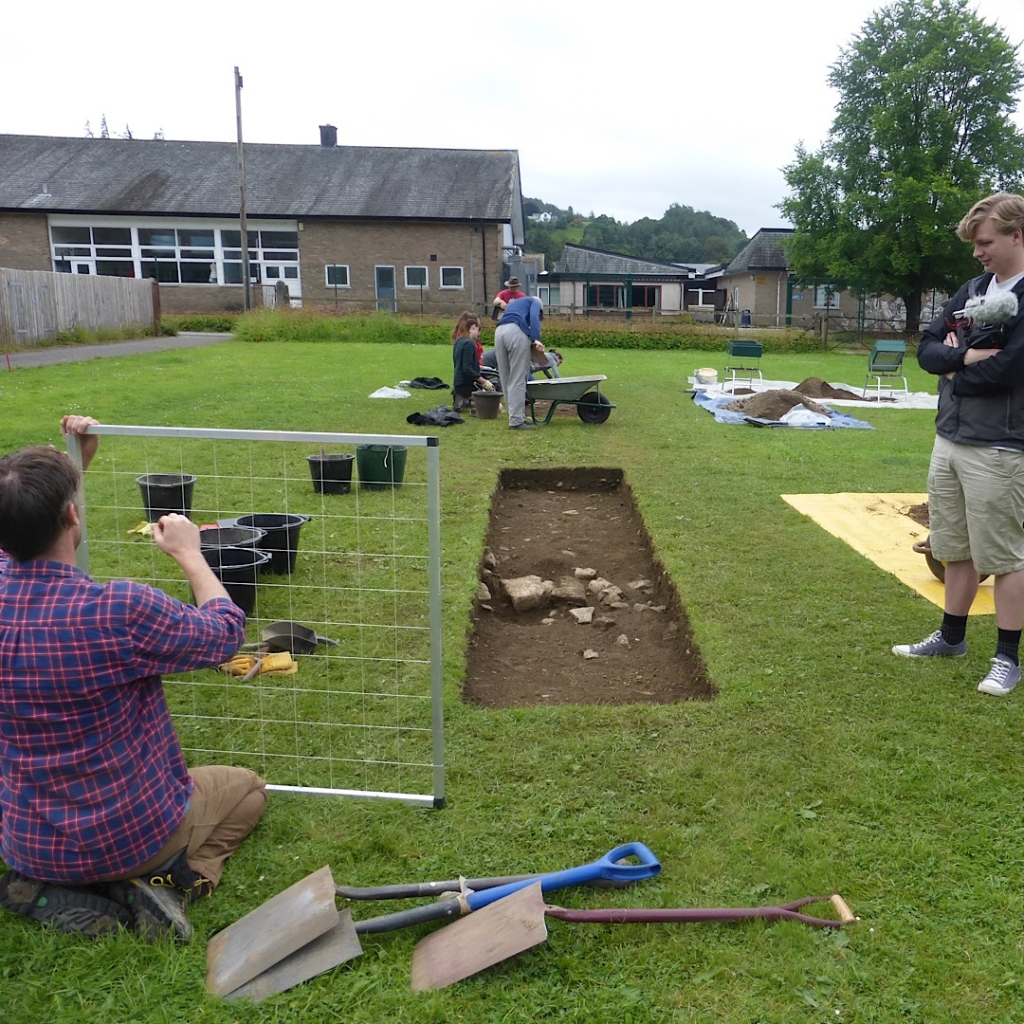

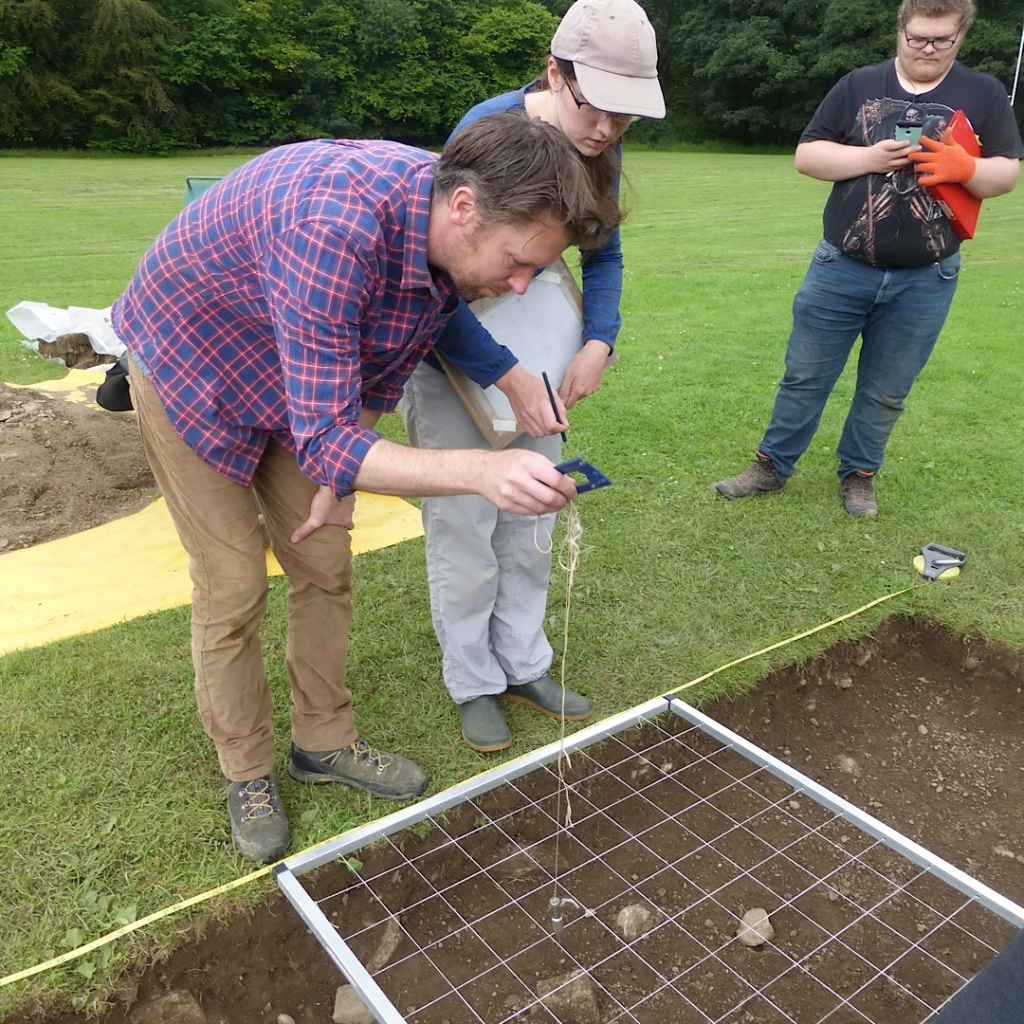
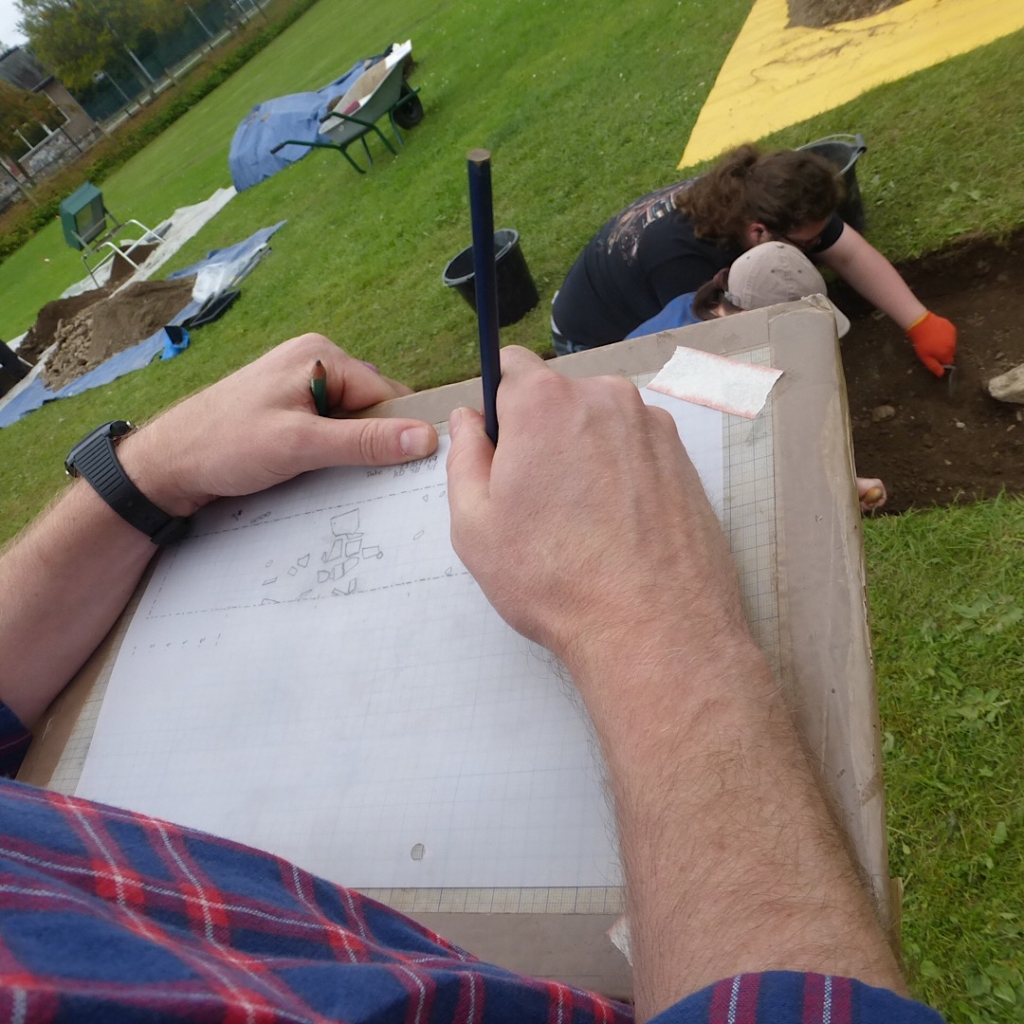
Caroline takes some students back to another part of the field that was surveyed yesterday, to measure out an area, 30m x 90m, that is nearer to the school, for ground penetration radar. She shows a different set of students the techniques involved using the equipment.


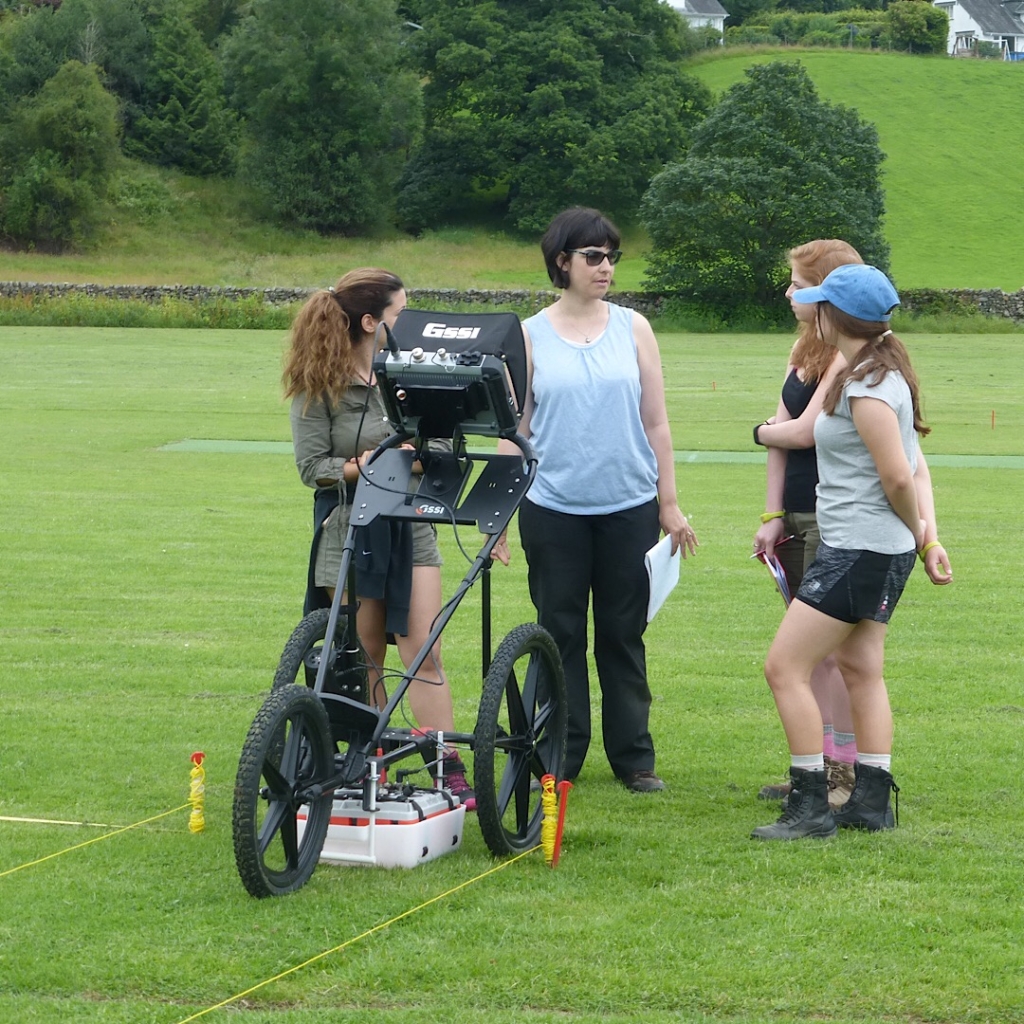


By lunchtime 62 ‘lines’ have been completed with 17 remaining.
Some new visitors arrive!
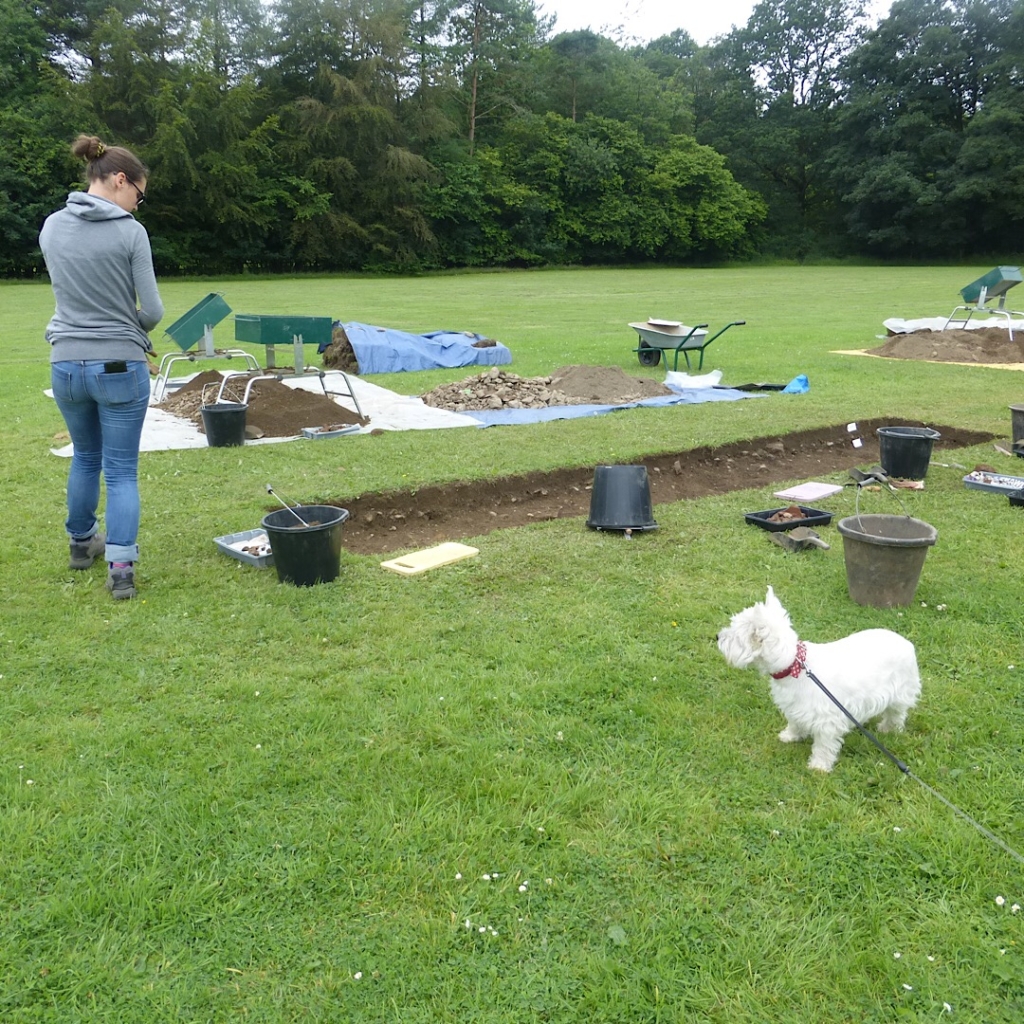
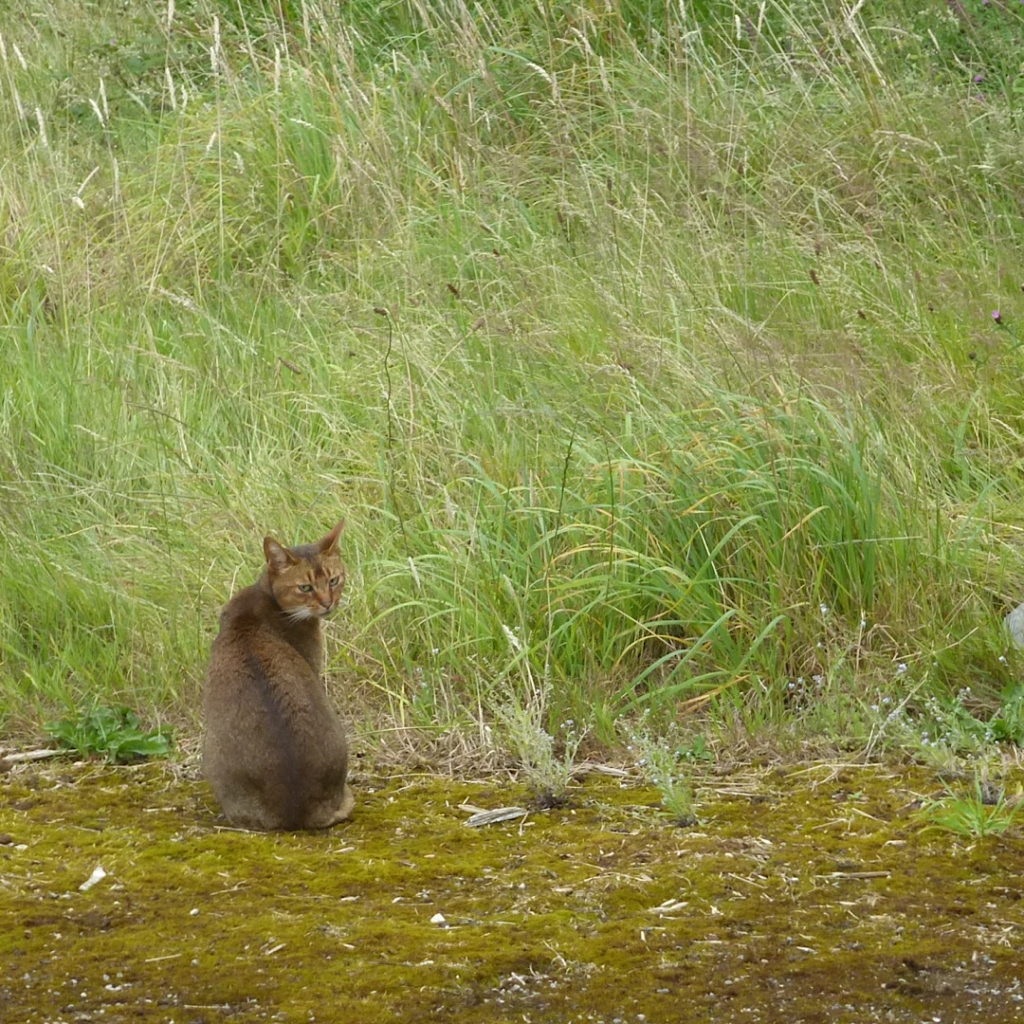
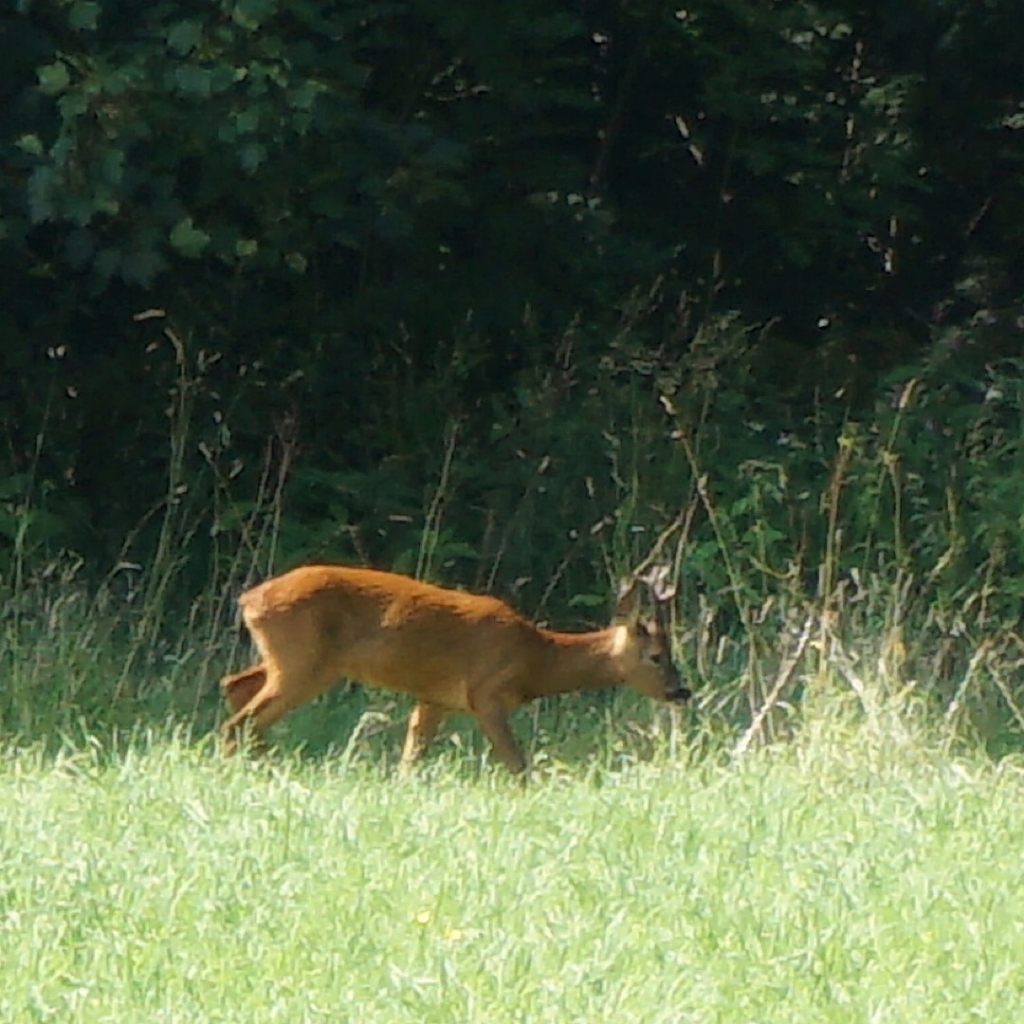
Meanwhile Joshua Wallace, the History student, is bagging artefacts from yesterday and today, and labelling the bags with the appropriate context for each trench they were found in.
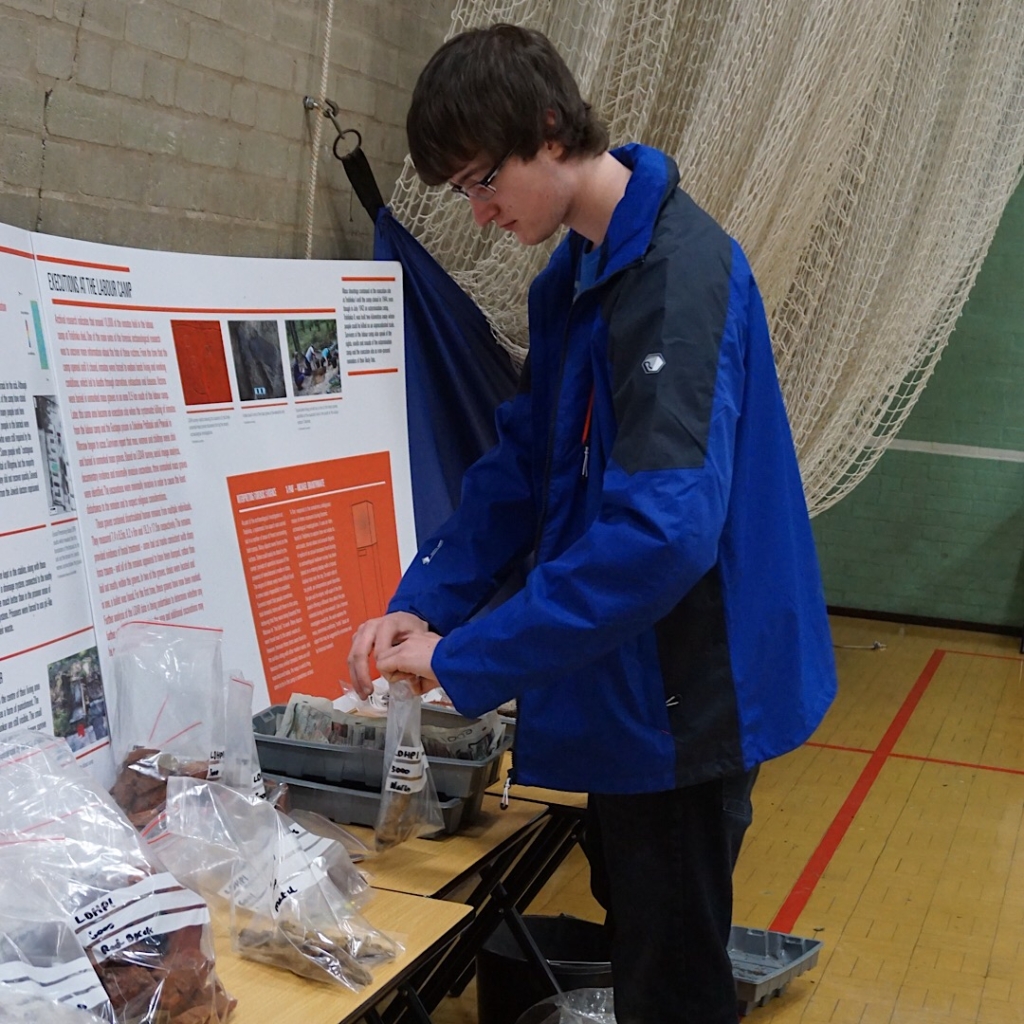
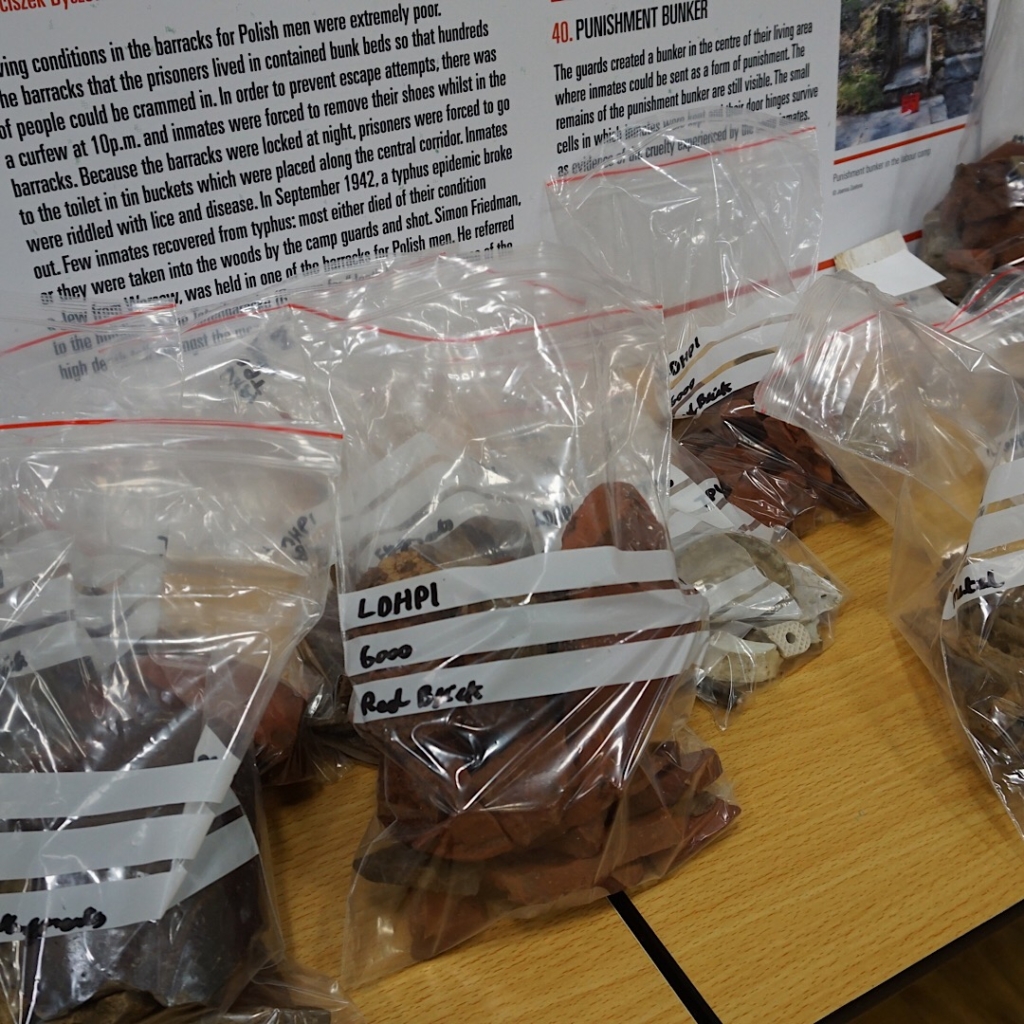
Some include a small tack, much brick, glass and piping as before. One of the more unusual items is a tube of baby curling gel. The weather has improved and by the afternoon it is very hot and everything can dry quickly in the sun and be bagged outside.
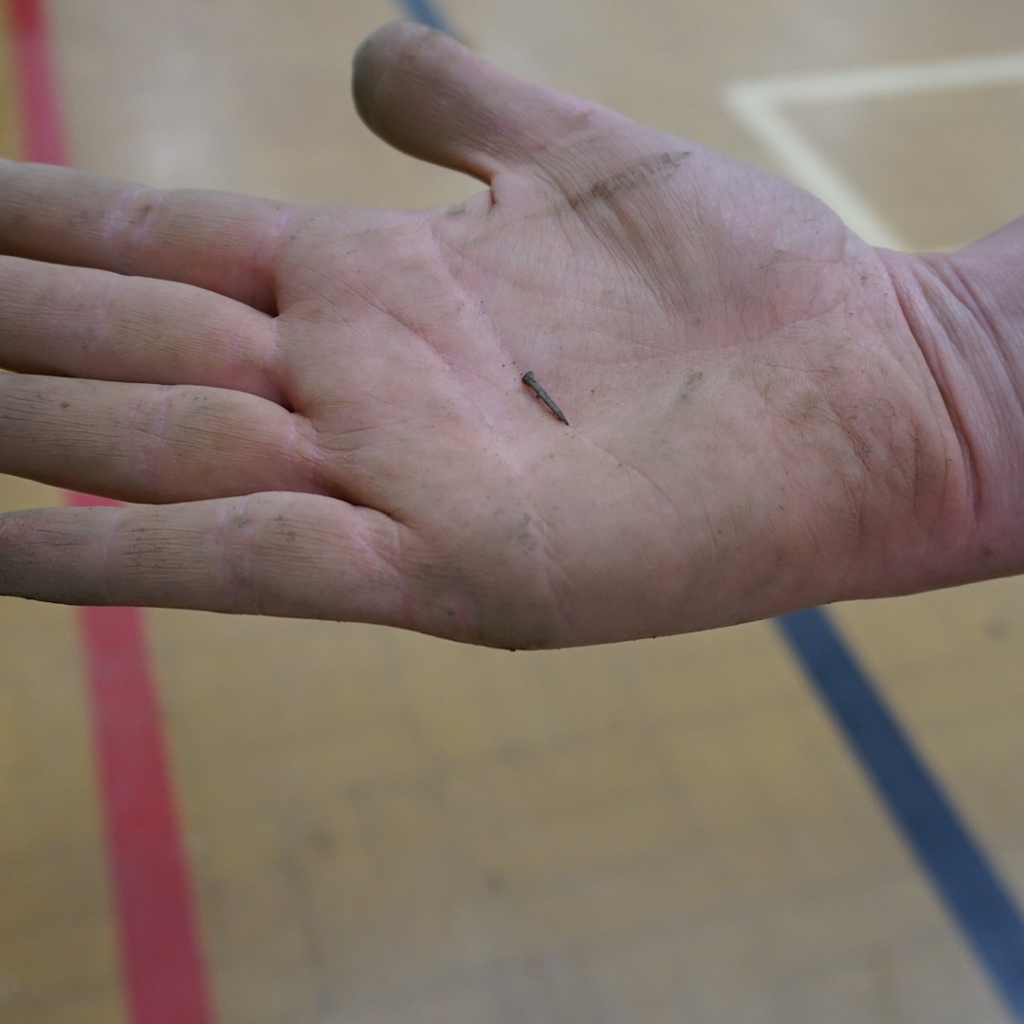
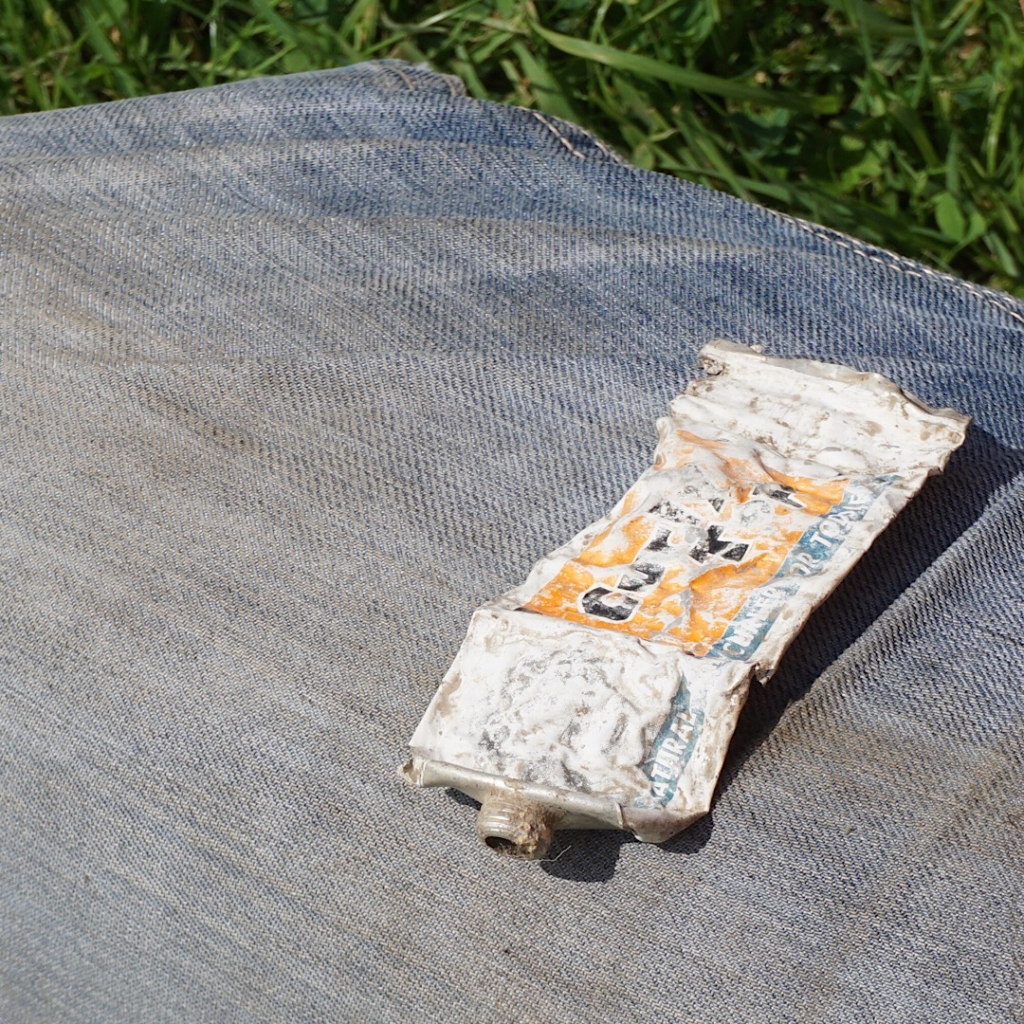


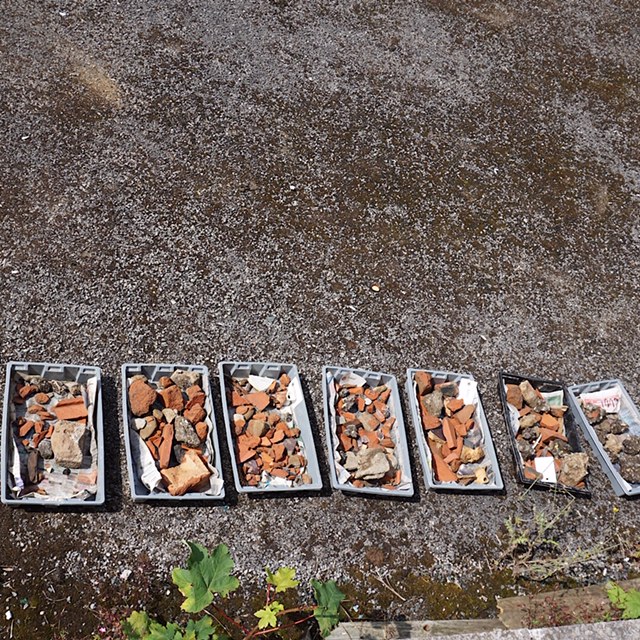

Caroline also shows the students how the digital data is displayed on the computer and how to interpret it.
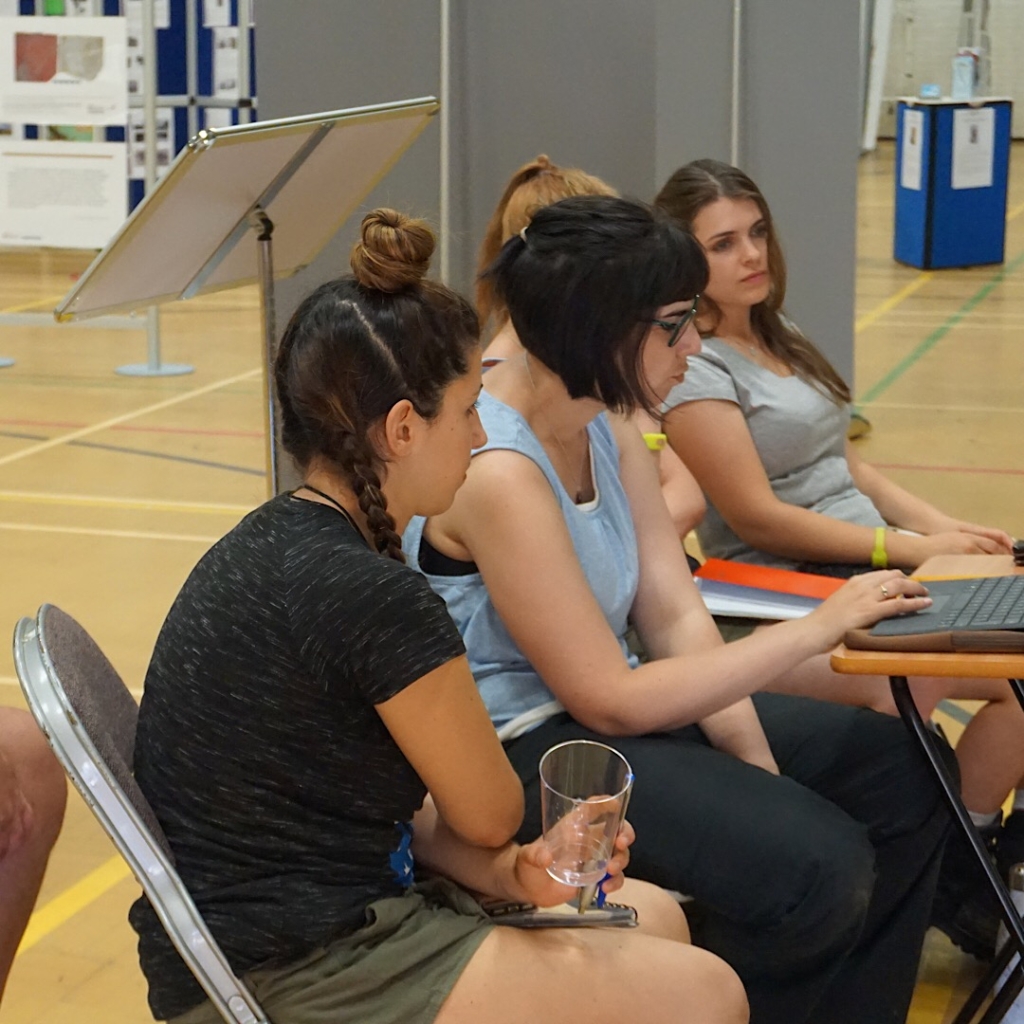
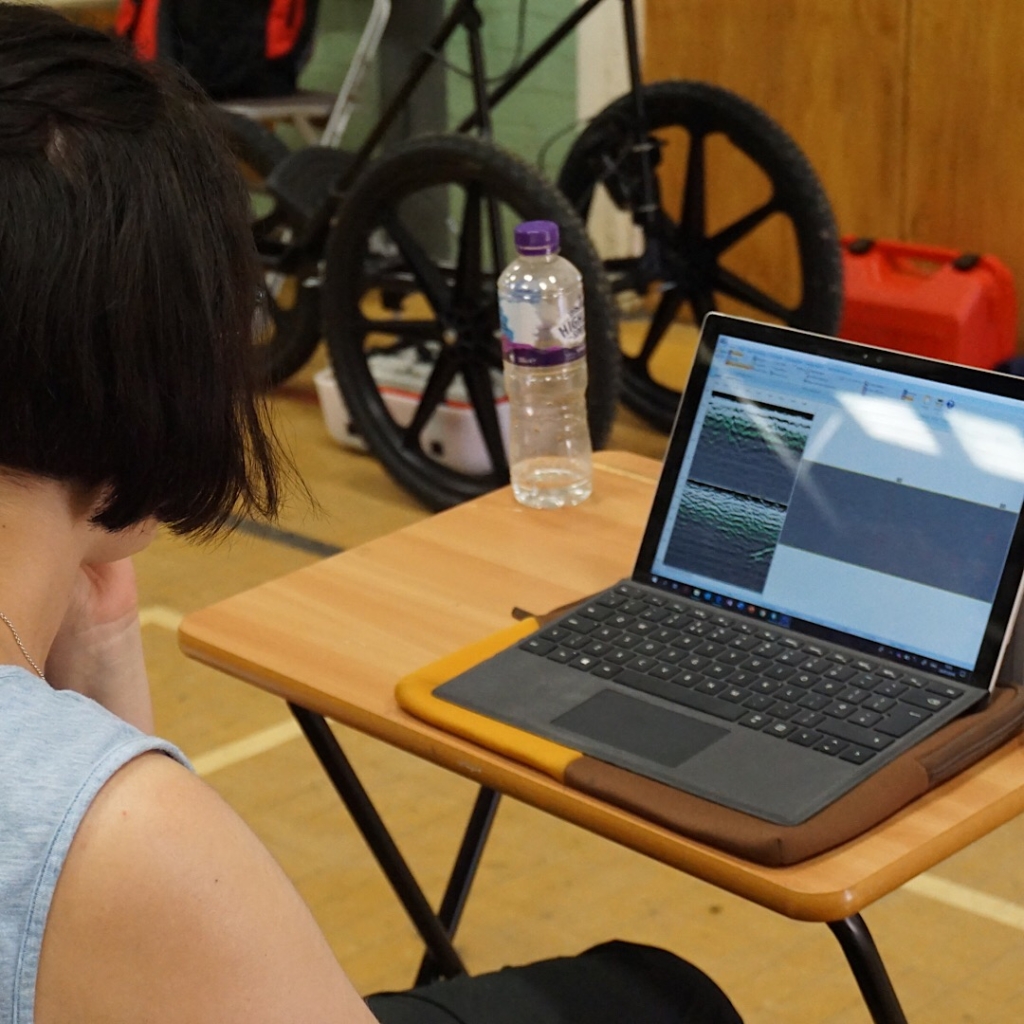
Peter Wilson visits. He lived at 20 Broadfield Road and thinks that one of the photographs on the banner is of him in the picture of the class at the school. Unlike visitors the day before, he “hated the school dinners…..The houses were single brick and we used to freeze in winter. There were icicles on the insides of the window!”

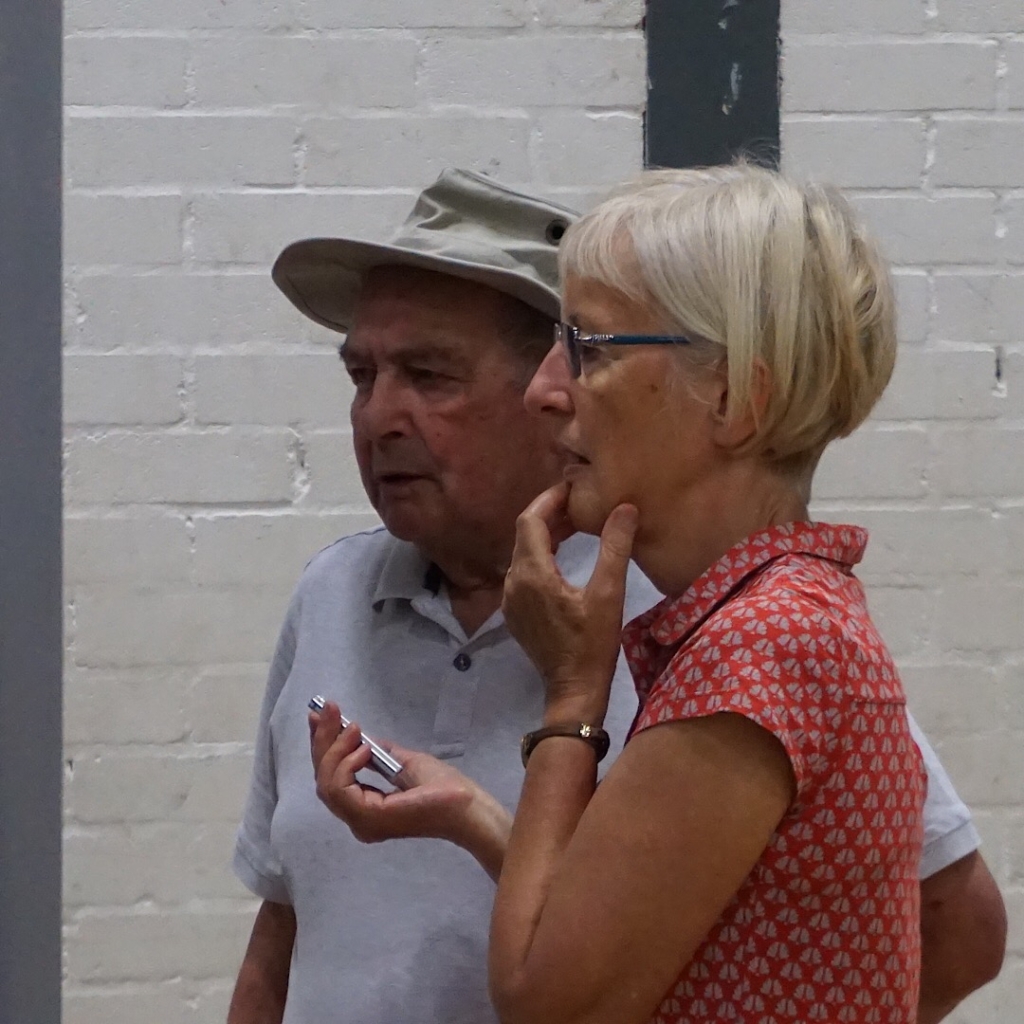
All the artefacts of the day are carefully separated and put into trays that are labelled with the stratification they were found in, For example the first part dug in pit 5 is numbered 5001 so anything found there is placed in the appropriate tray…..and so on.



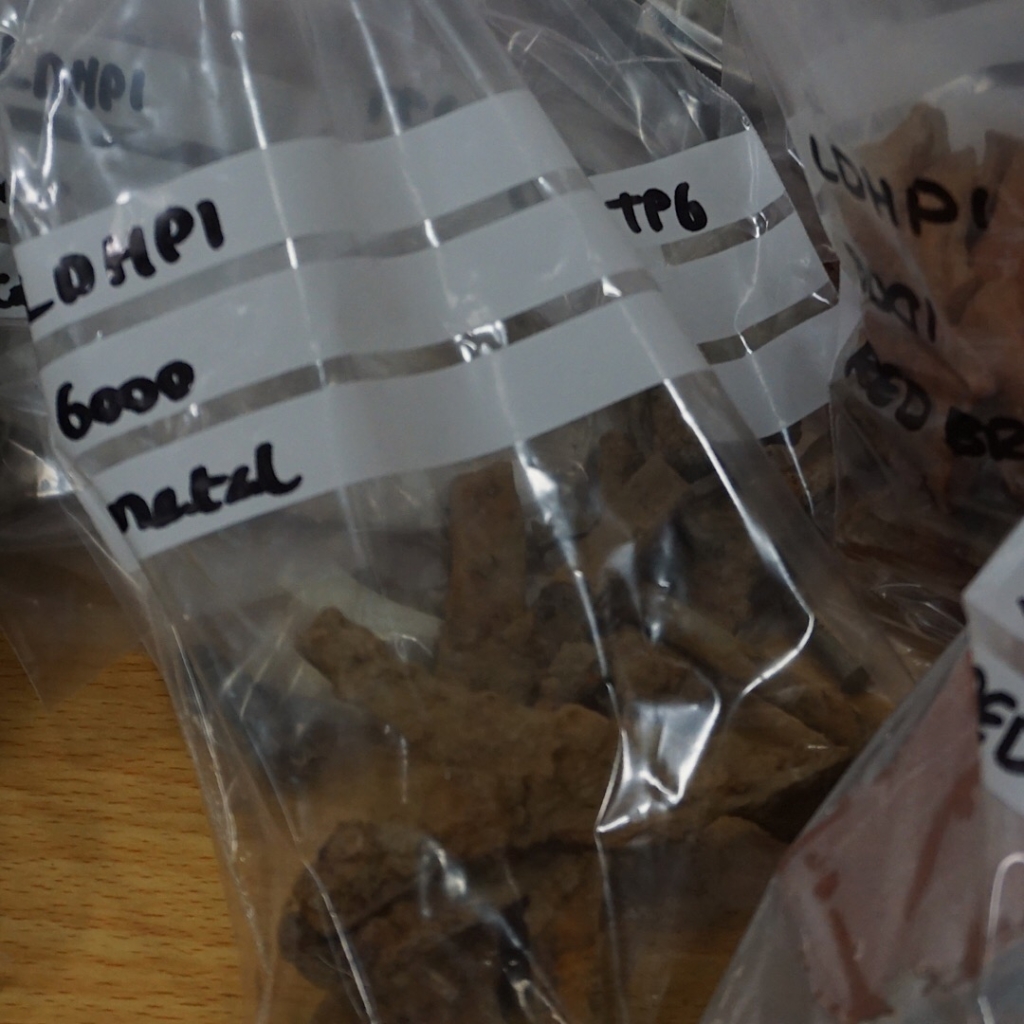
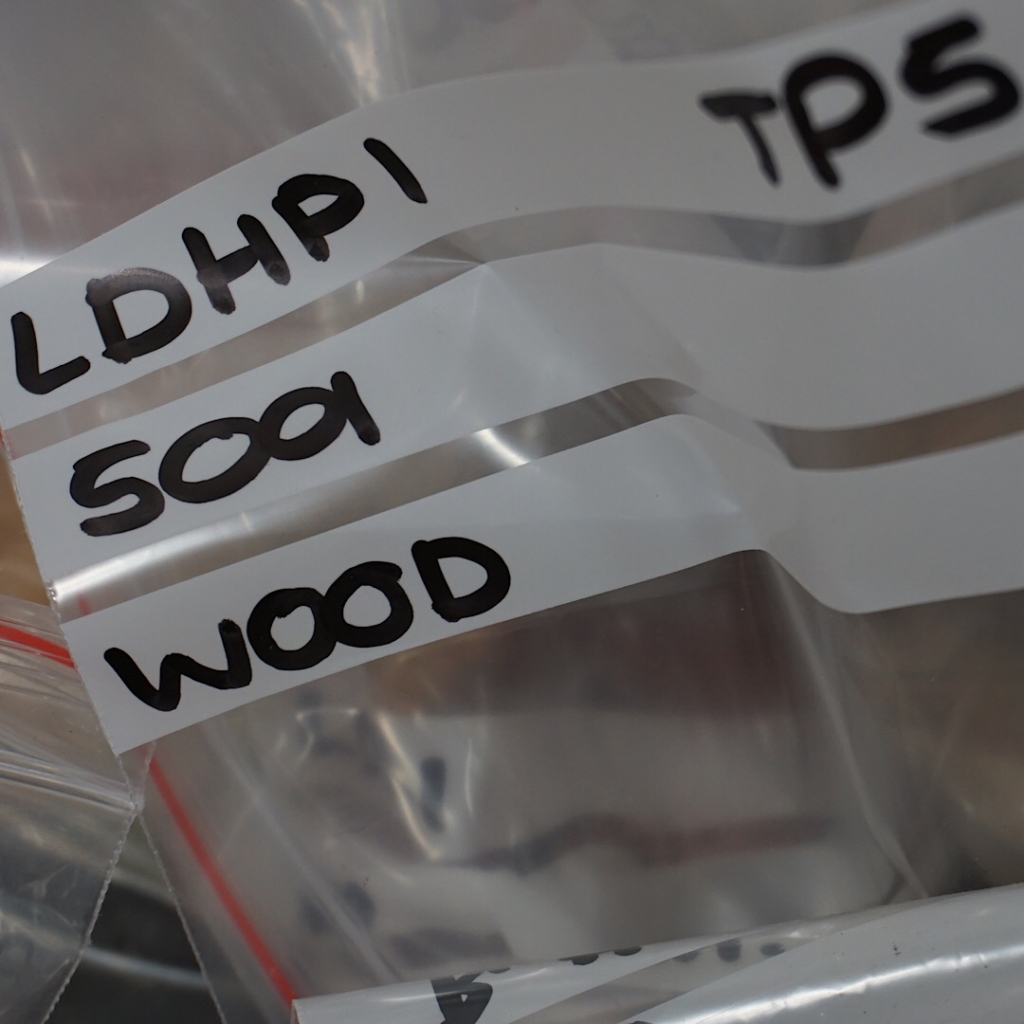
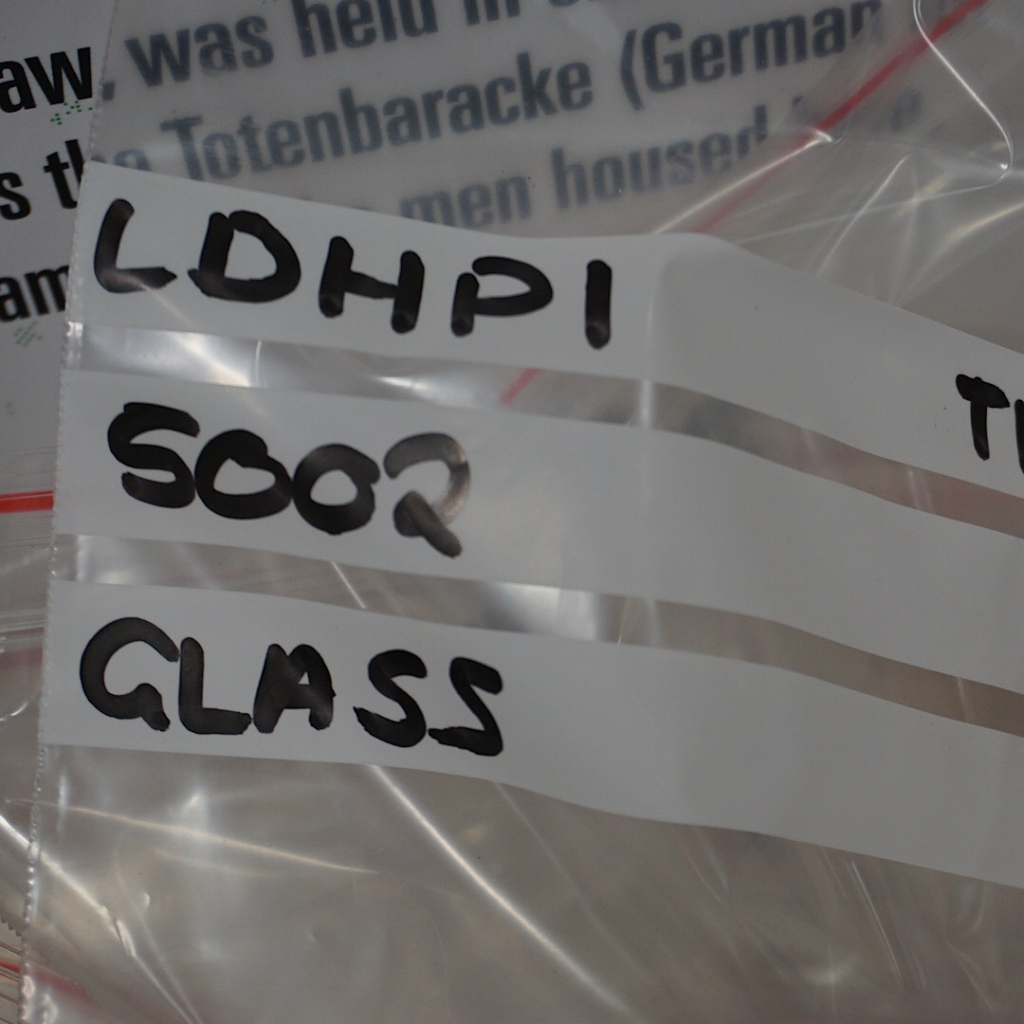
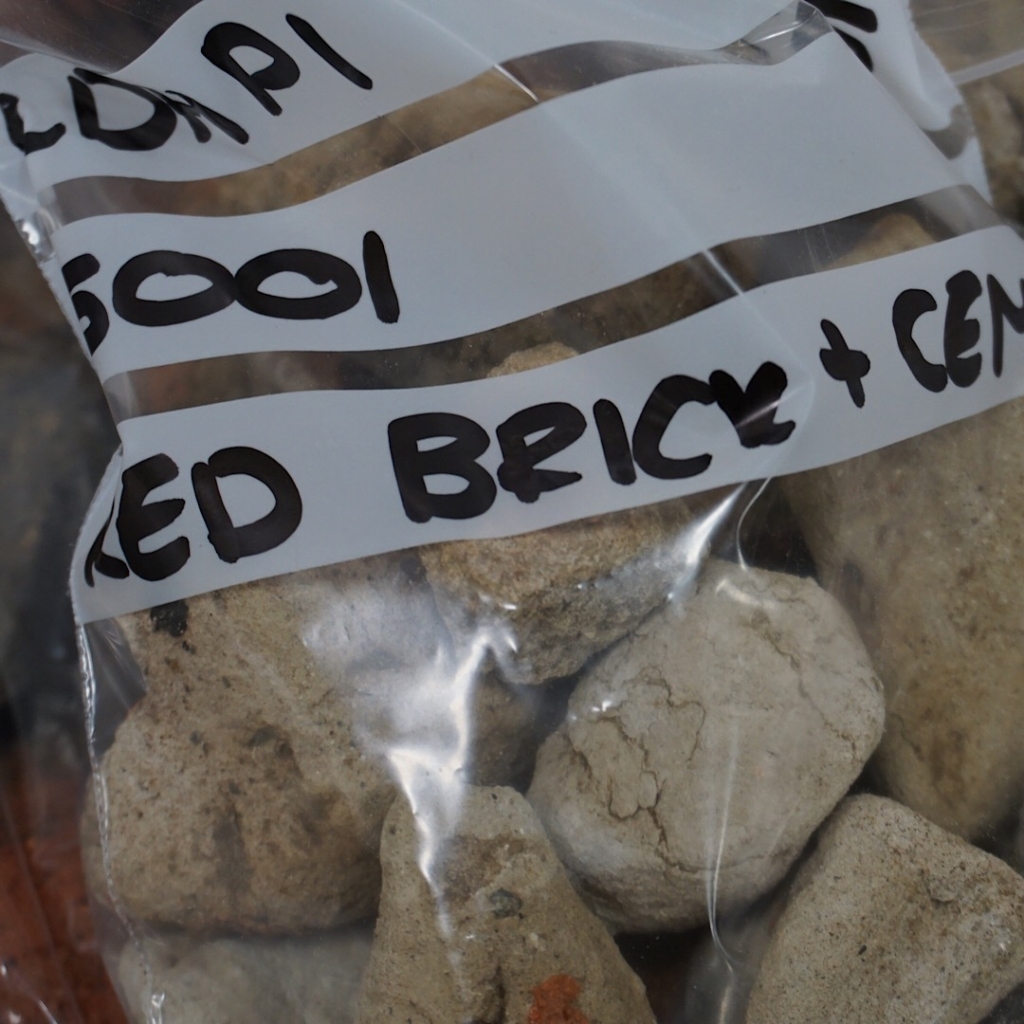
At the latter part of the day, Chris and Muriel Gerrish pay a visit. They live near Penrith and saw a news item on television about the dig, Chris lived at 73 Droomer Drive and his father, Billy (William Alfred) worked at the Flying Boat Factory. “Mother always used to talk about offering father a job on the engines…but he would have had to go out on the wings, so he turned it down.”
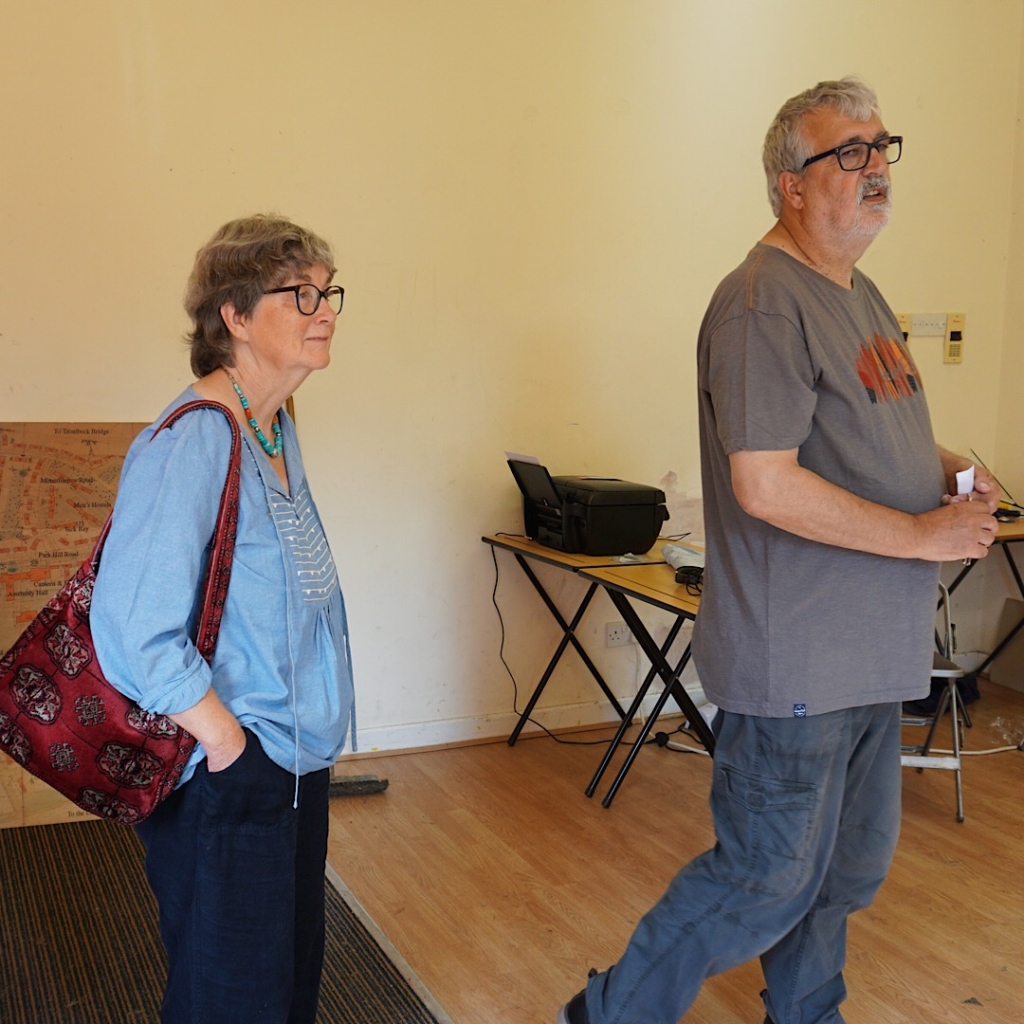
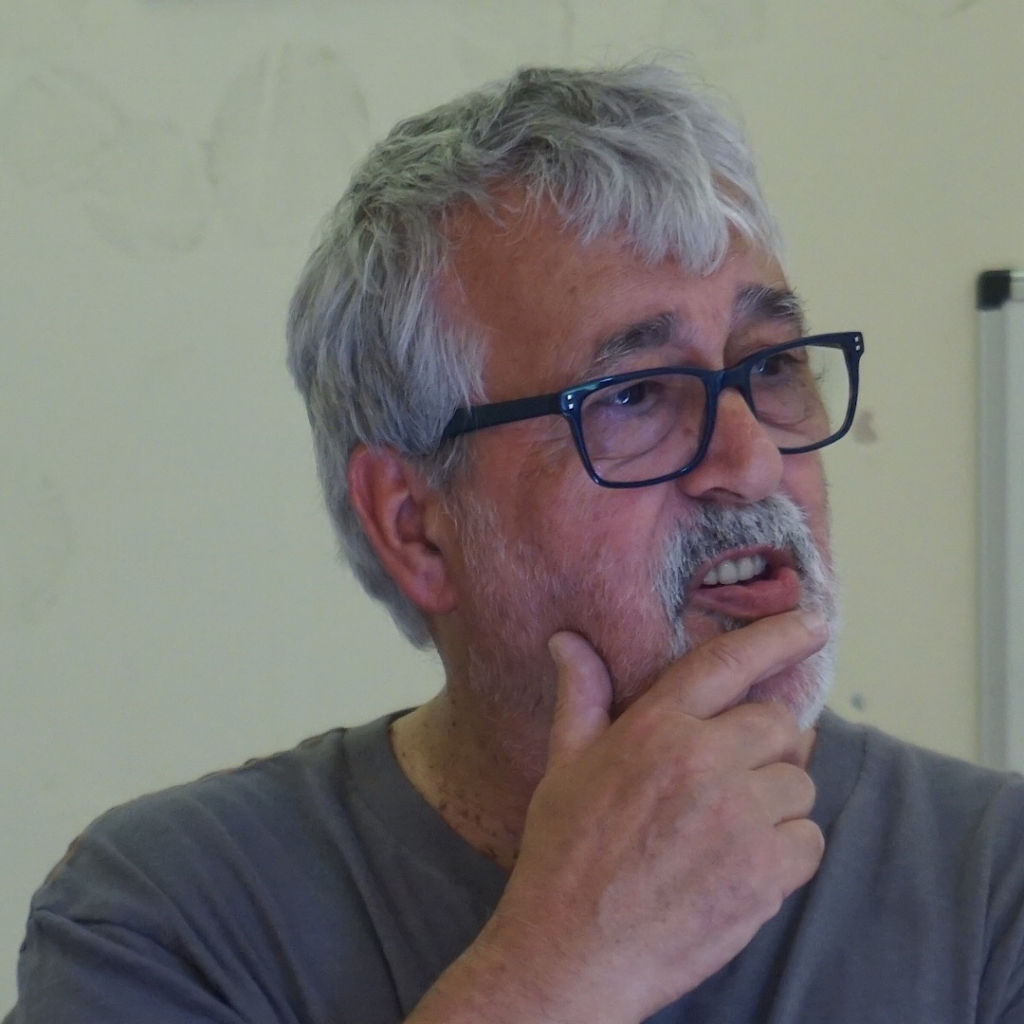
Chris remembers that he and his brother often used to play at archery in the nearby woods.

All the students and volunteers have worked incredibly hard in extremely hot conditions. The temperature is about 27 degrees. Immy, pictured above in the green t-shirt, prefers scraping to washing because “its interesting finding old bits”. Her mother, Helen, thought “it’s nice to have a go”.
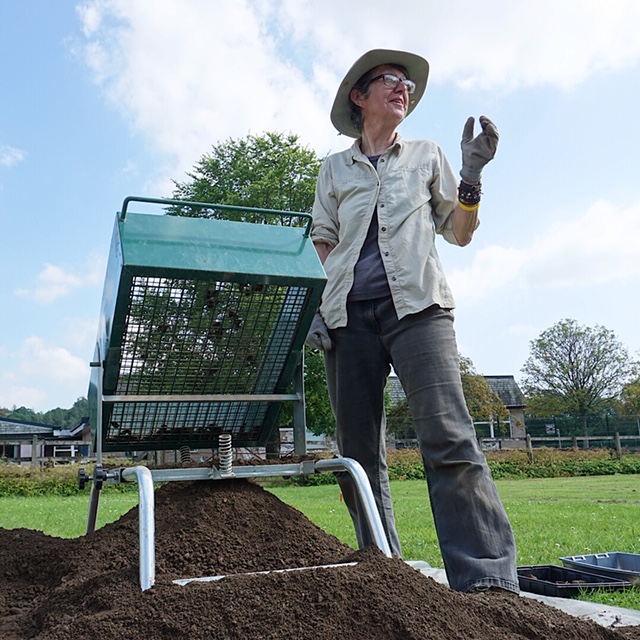
This is Linda’s last day but she is reluctant to leave. She heard about the dig via the Lake District National Park Authority’s Archaeological Society. “I’ve done things here I have never done before…sieving, pot washing. You have some very special archaeologists here”.
Finally the site is cleared for the night and marker tape is put round each trench.

Day 8
Will begins the morning session by giving a briefing to the new volunteers. He is joined by Denise and Eli Kienwald and their grandson Joshua Wakefield. Denise is the daughter of Minia Jay, one of the Jewish child Holocaust Survivors who came to the estate in 1945.
Roger and Liz Kingston, together with Dot Yates have come from the Lake District National Park Authority Archaelogical Society and Hayley Shaw is a postgraduate student. Part of her thesis is about ‘The Windermere Boys’.
Will is also joined by his daughter Freya.
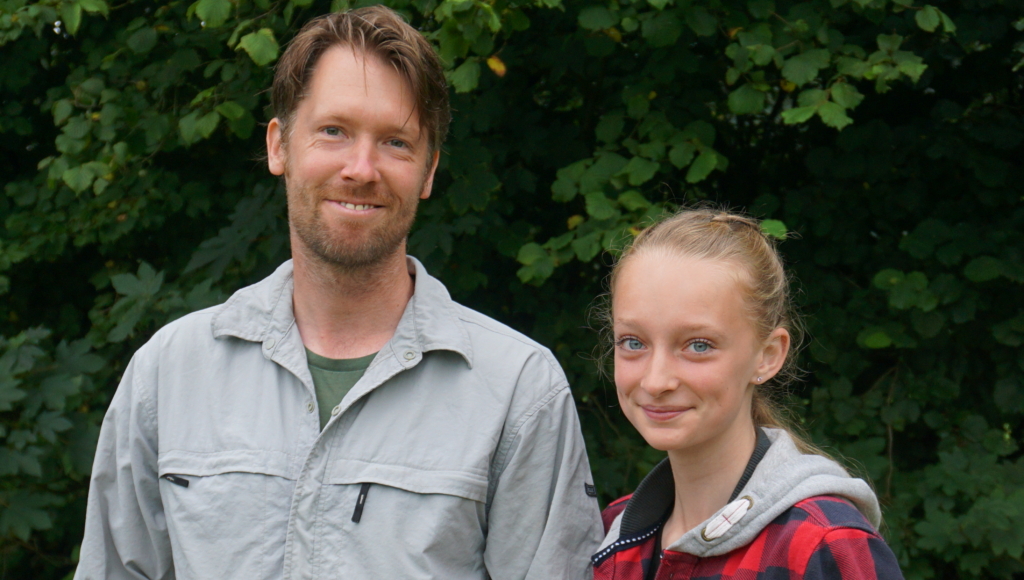
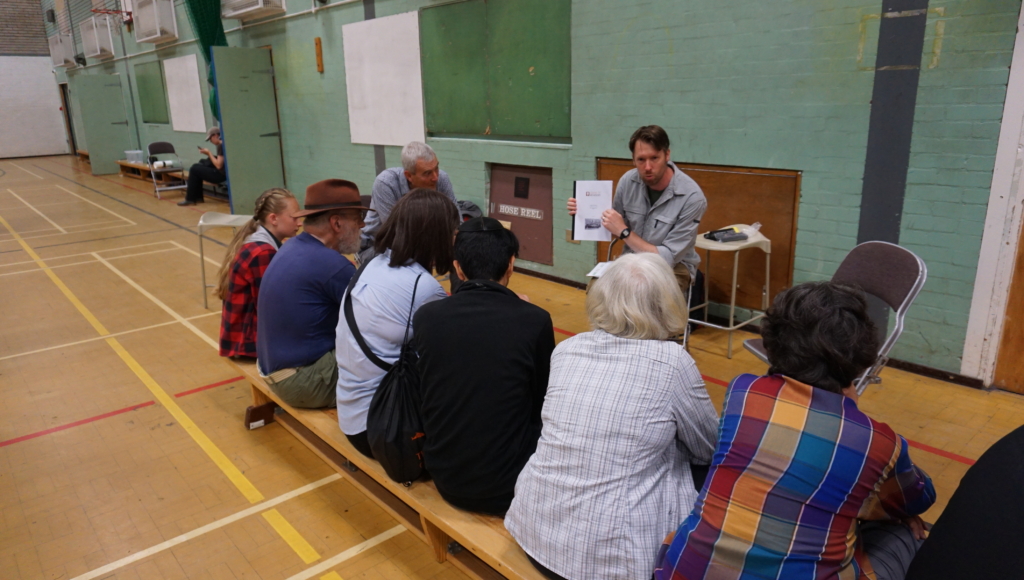
At the same time, trays with artefacts from the previous days’ finds are laid out in the sports hall.
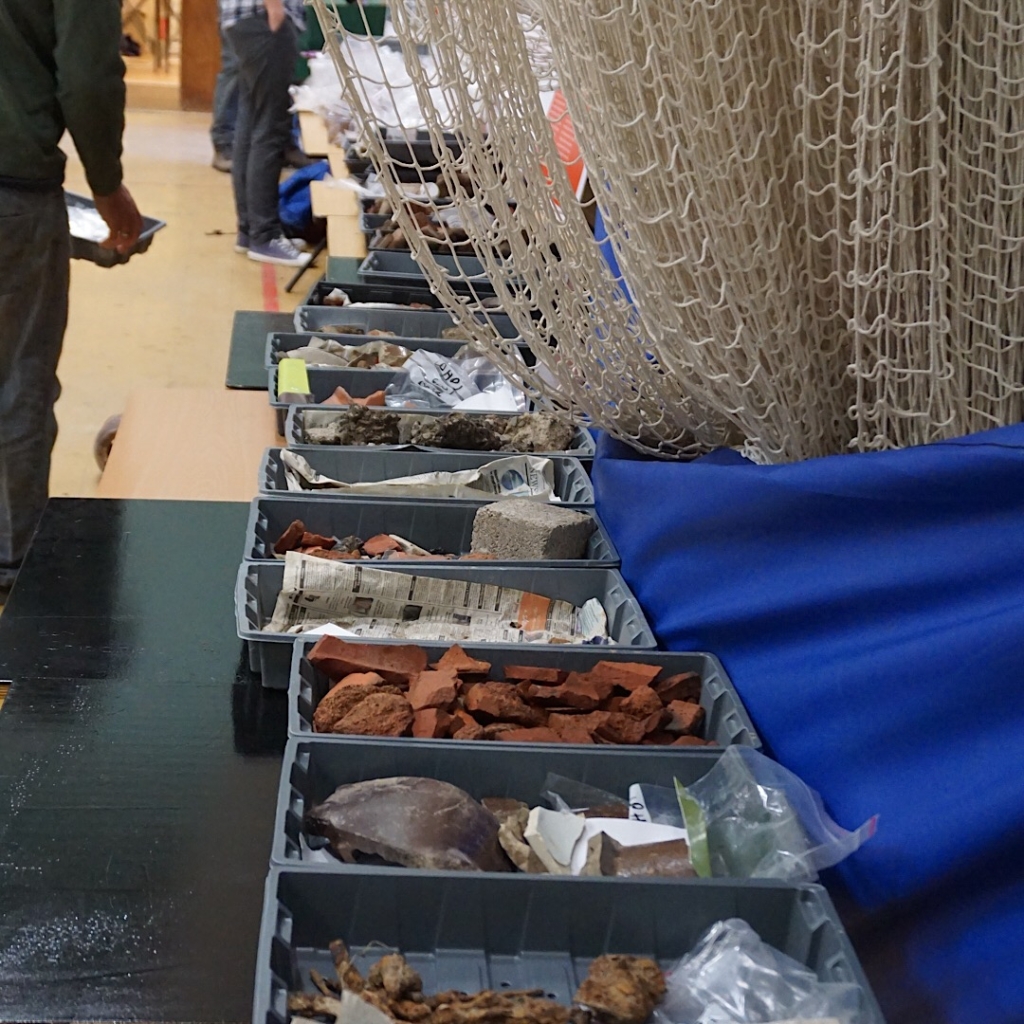
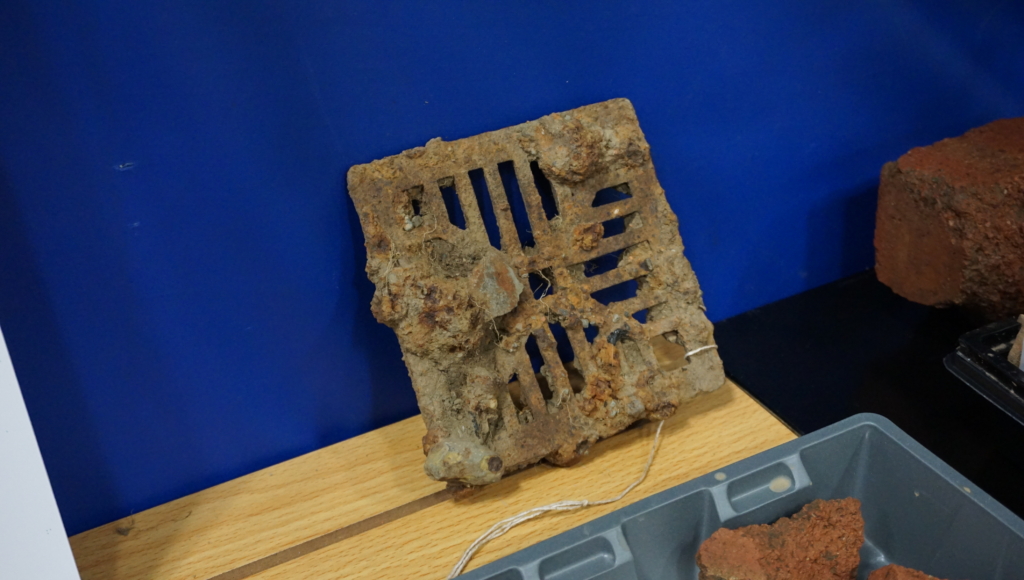

The heavy rain overnight has cleaned both trenches, making clearer the two levels and colours of the soil, that differ from a reddy brown to grey. Last night a fairly large piece of asbestos was found in trench 6. This and an area around it at the north end of the trench, is left in situ.
The remaining half and that of the south end of trench 5 will be dug. It is suspected that there will be natural soil stratification only.

The remains of a waste pipe can be seen in trench 6.
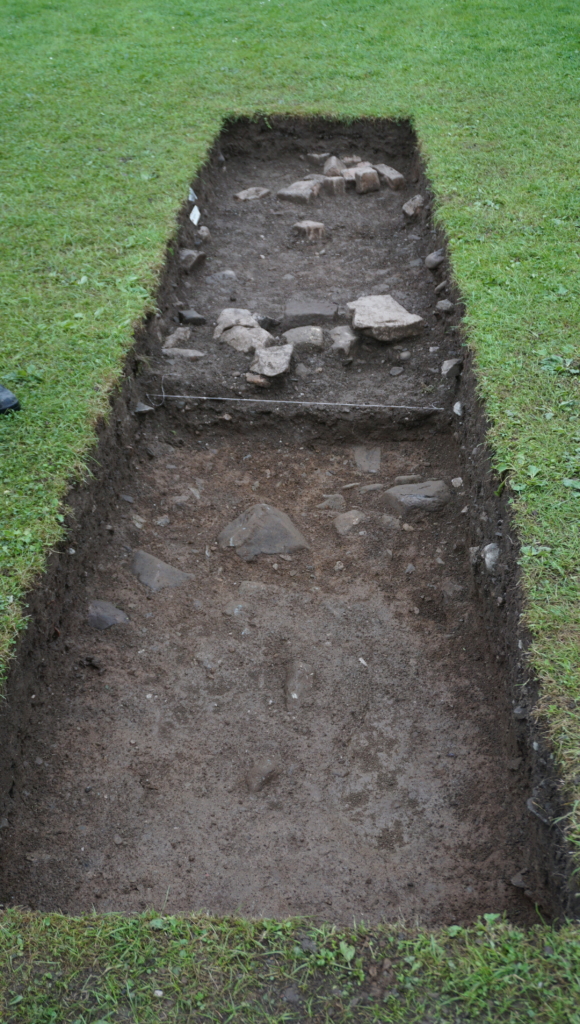

Caroline takes some of the last students to the field nearer their school and shows them how to measure and plot out areas to scan. After lunch they use the ground penetrating radar with a different antennae to re-scan the same area as yesterday.
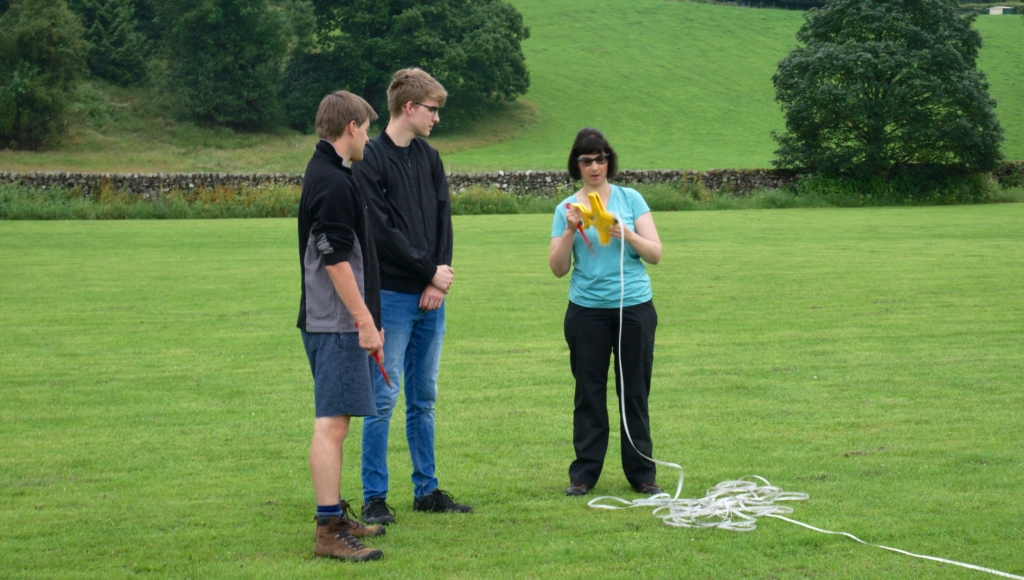
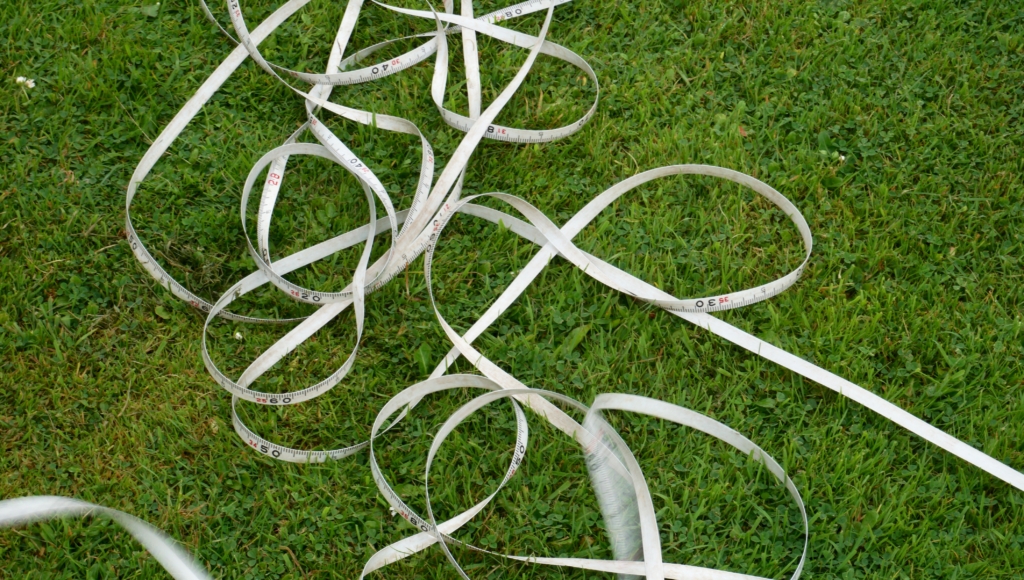

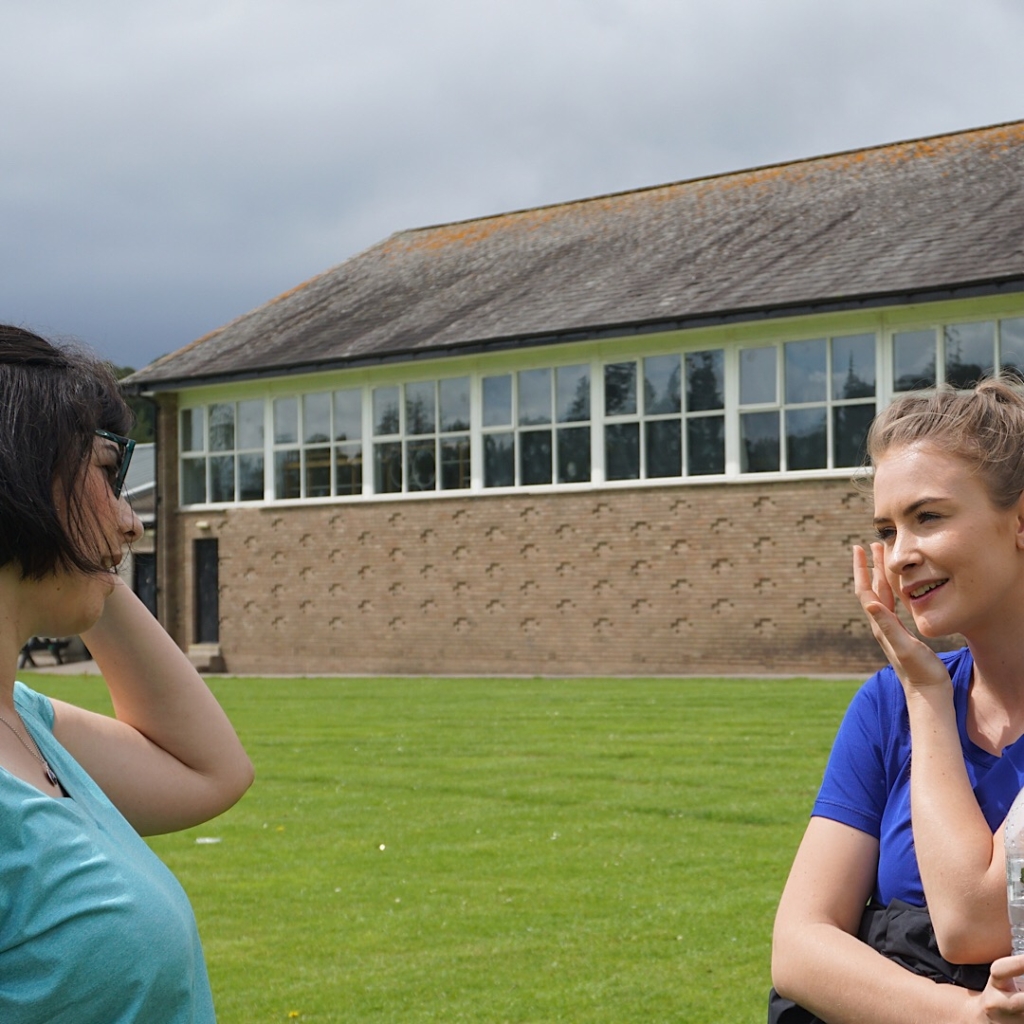
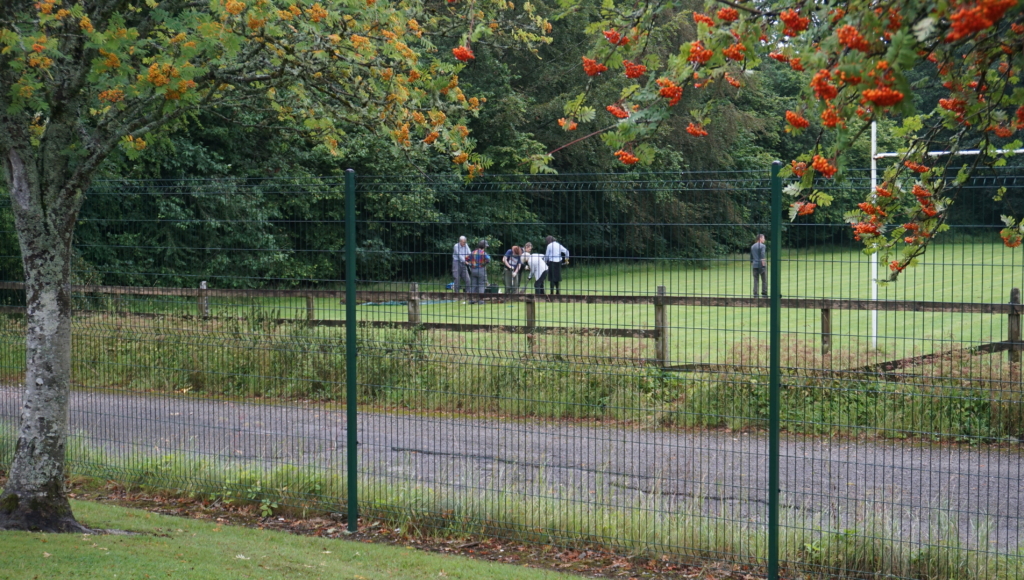
Today’s volunteers are taken over to the far side of the field to start trench 7. They measure the size of the trench and then take turns to cut and lift the turf and then begin to scrape away the soil with the trowels.
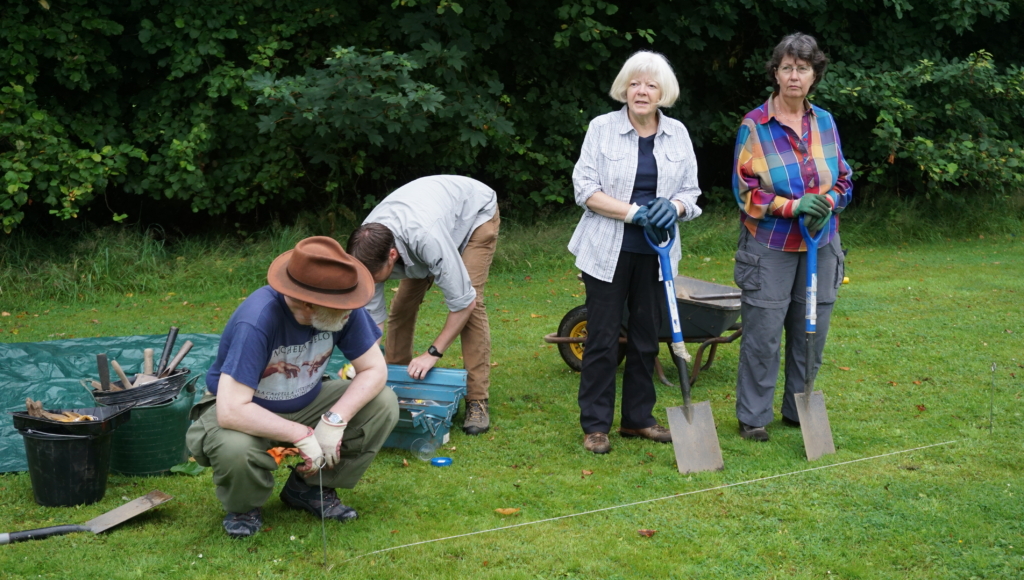
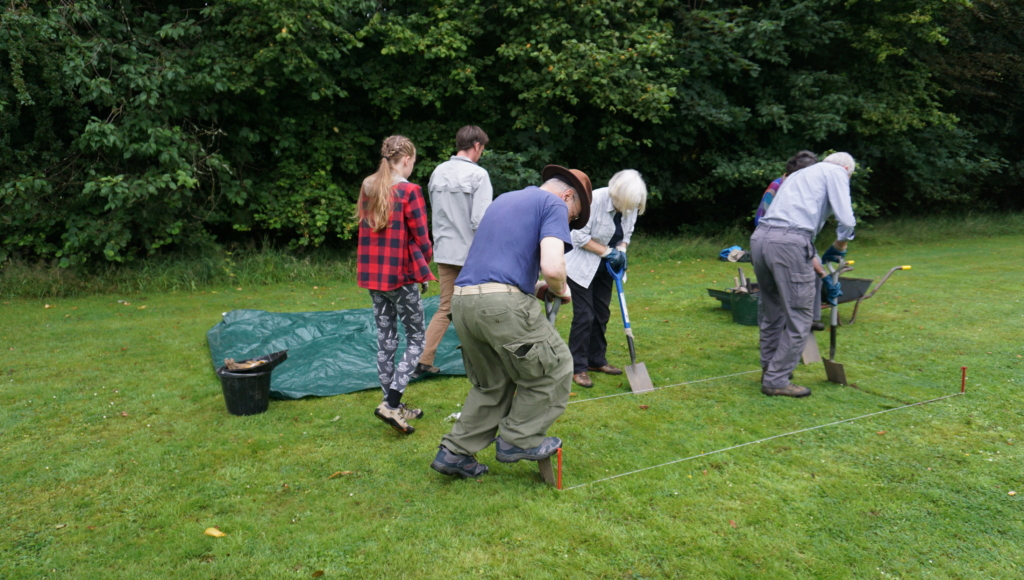
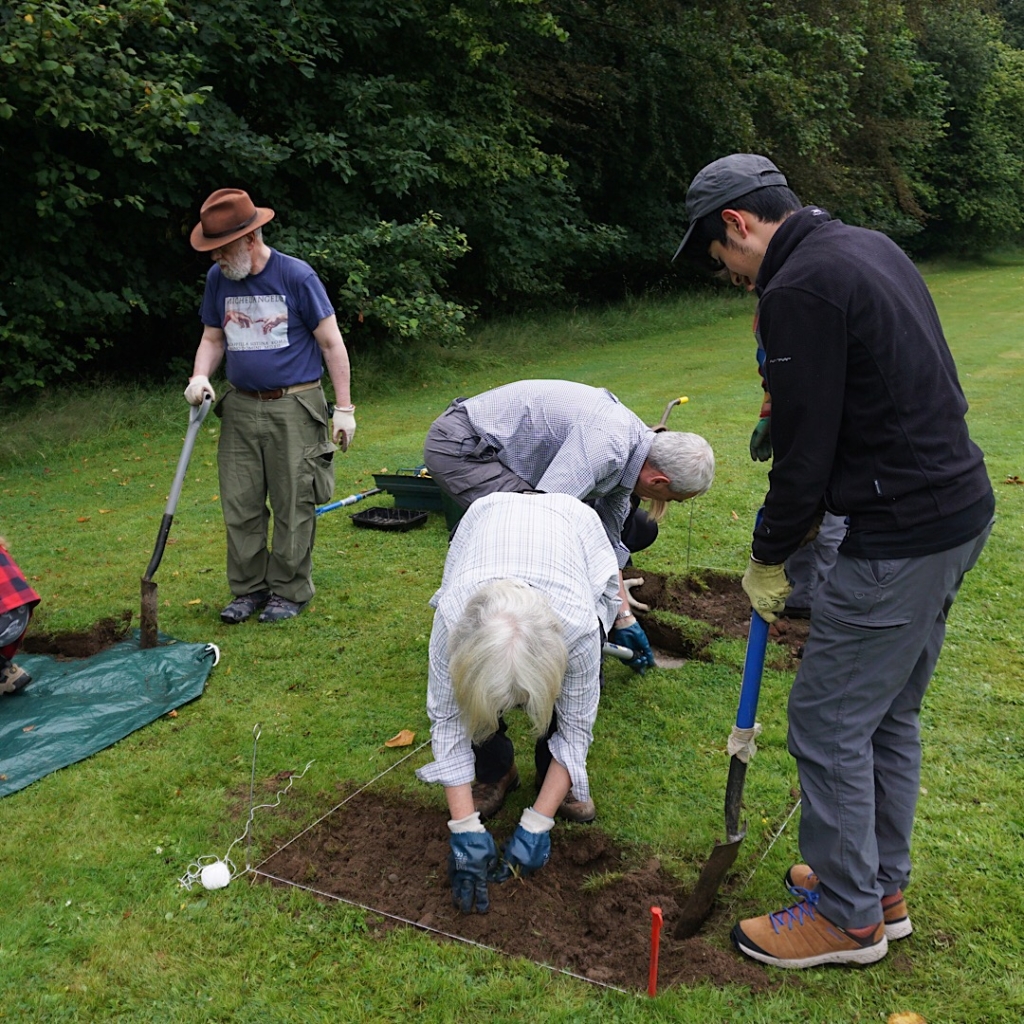
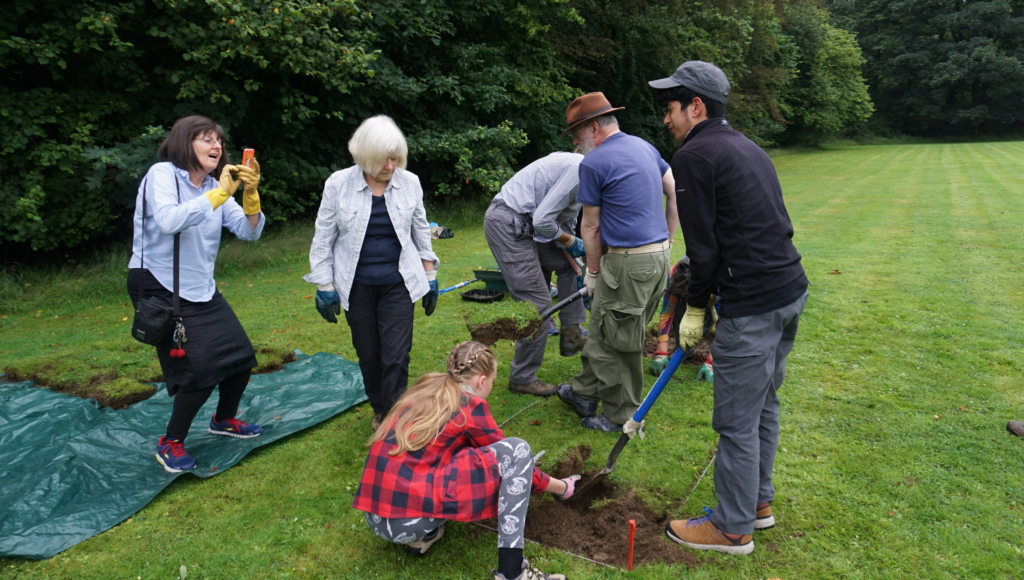
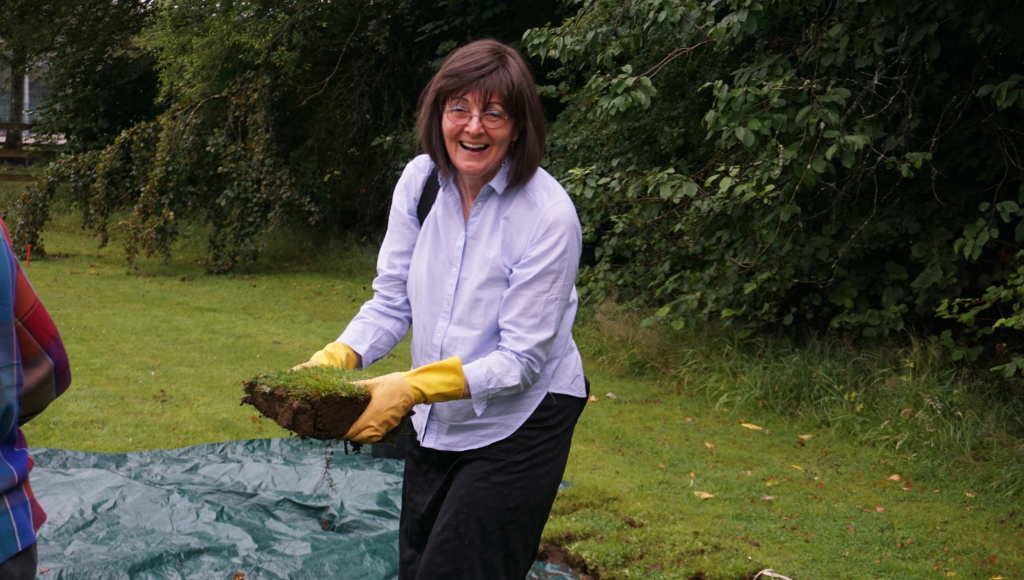
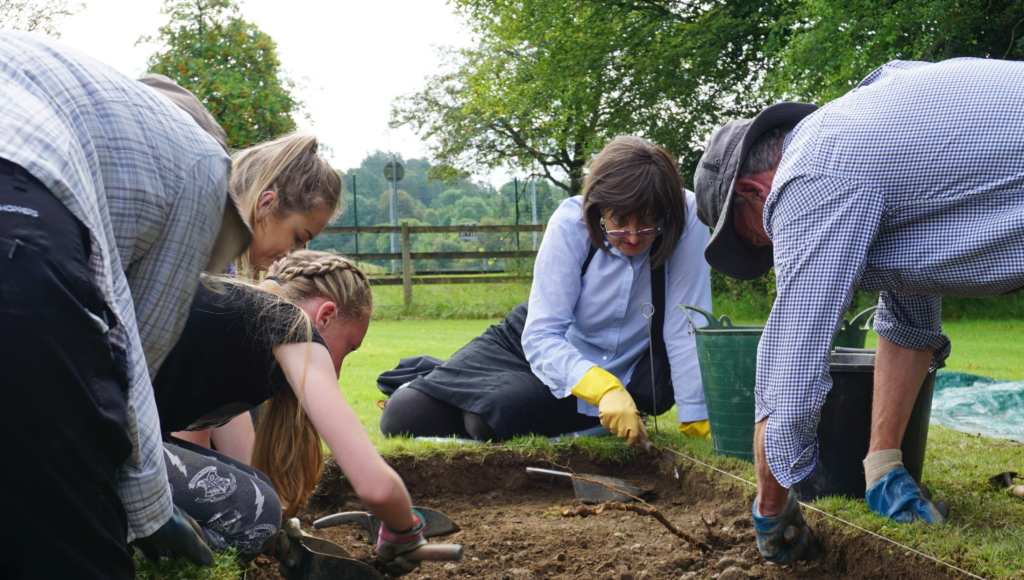
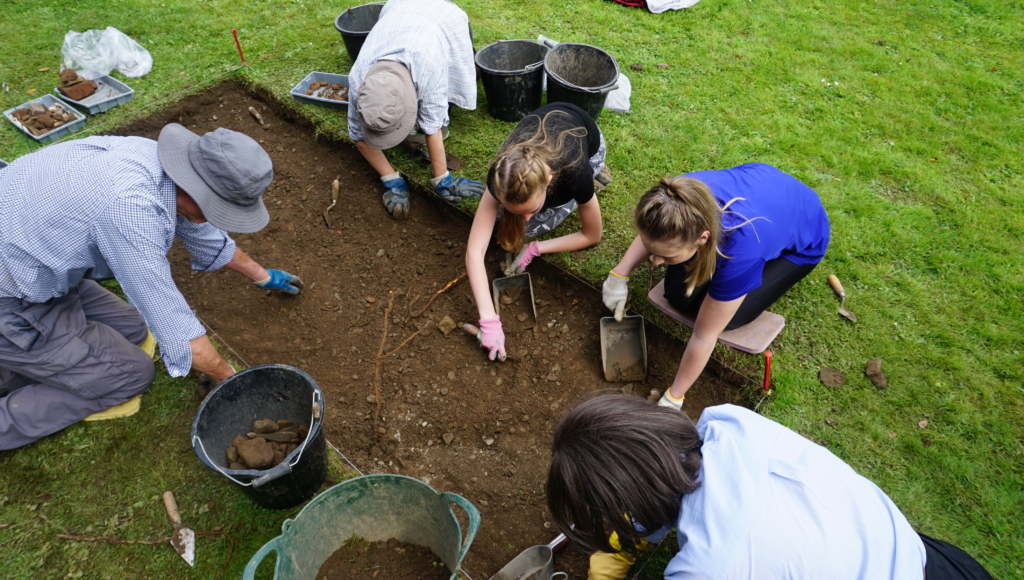
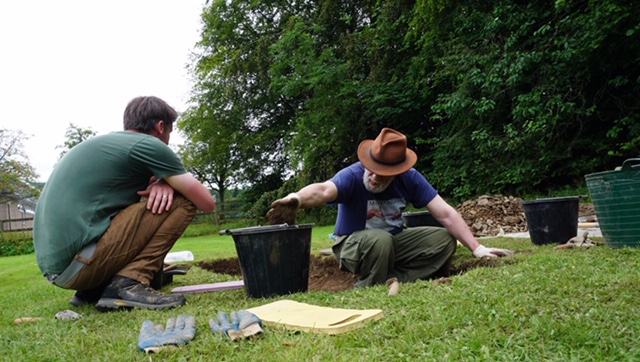
By lunchtime quite a large number of artefacts have been found including pipes, bricks, glass and tiles and these are then brushed and washed.


Morning visitors include Eleanor and David Blezard and Brian Salisbury, former residents of Calgarth Estate. Brian remembers that “in 1965, when the school opened, the bricks were still coming up in the playing fields. Detention was to pick up the bricks!”.
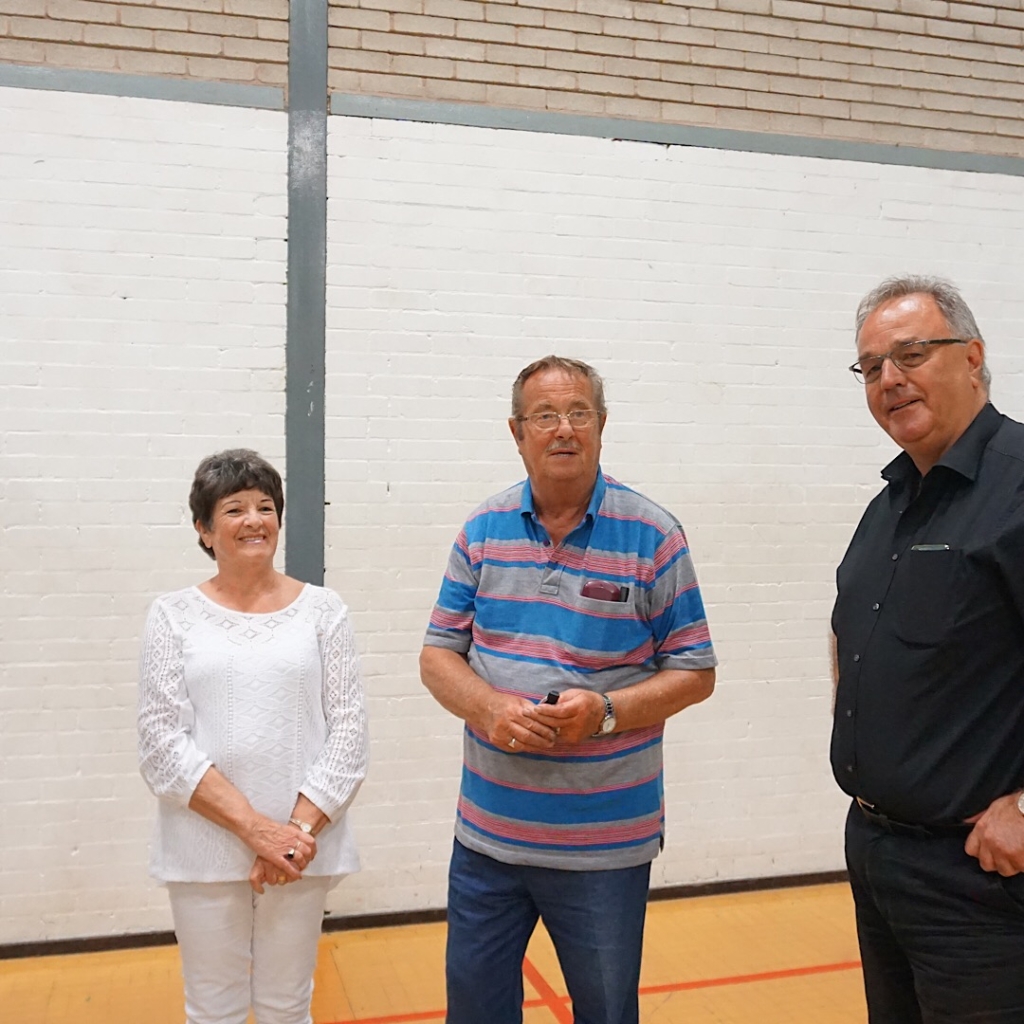
Brian’s father, Wallace, worked at Fells all his working life, and was a well known local footballer and cricketer. The family left Calgarth in 1954, and were one of the first families to move to Orrest Drive, on the Droomer Estate.
Brian had brought a photograph of himself with his brother David and Wallace in the garden of 5 Beck Island Road in 1953.
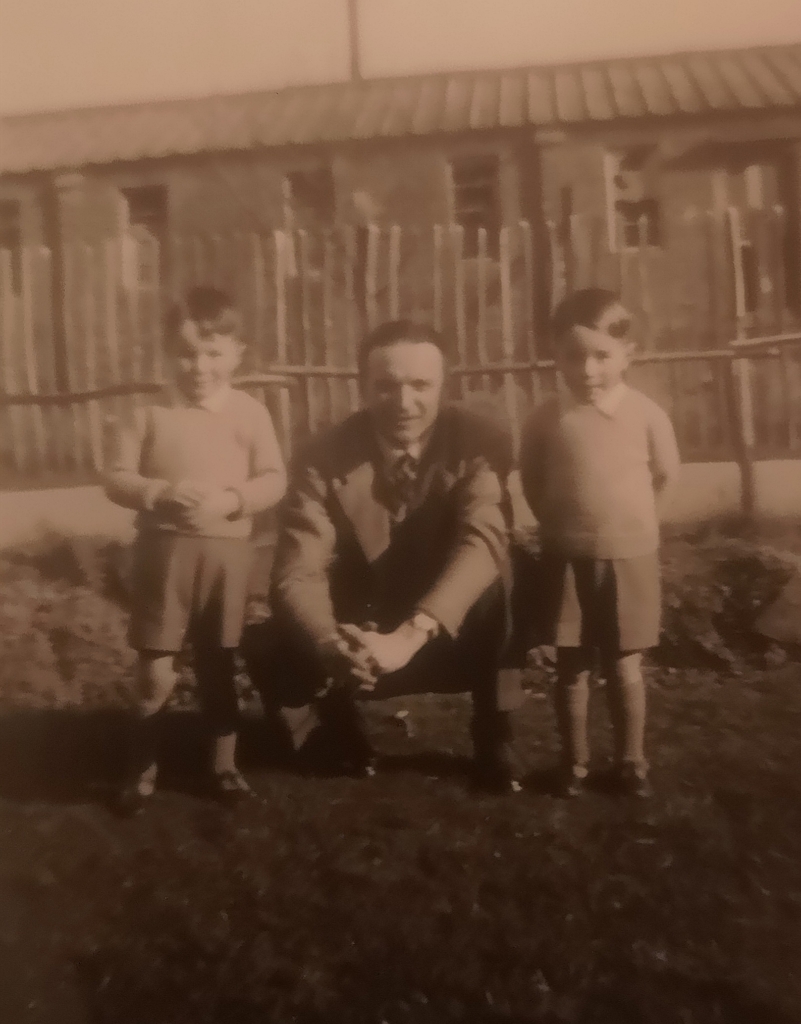

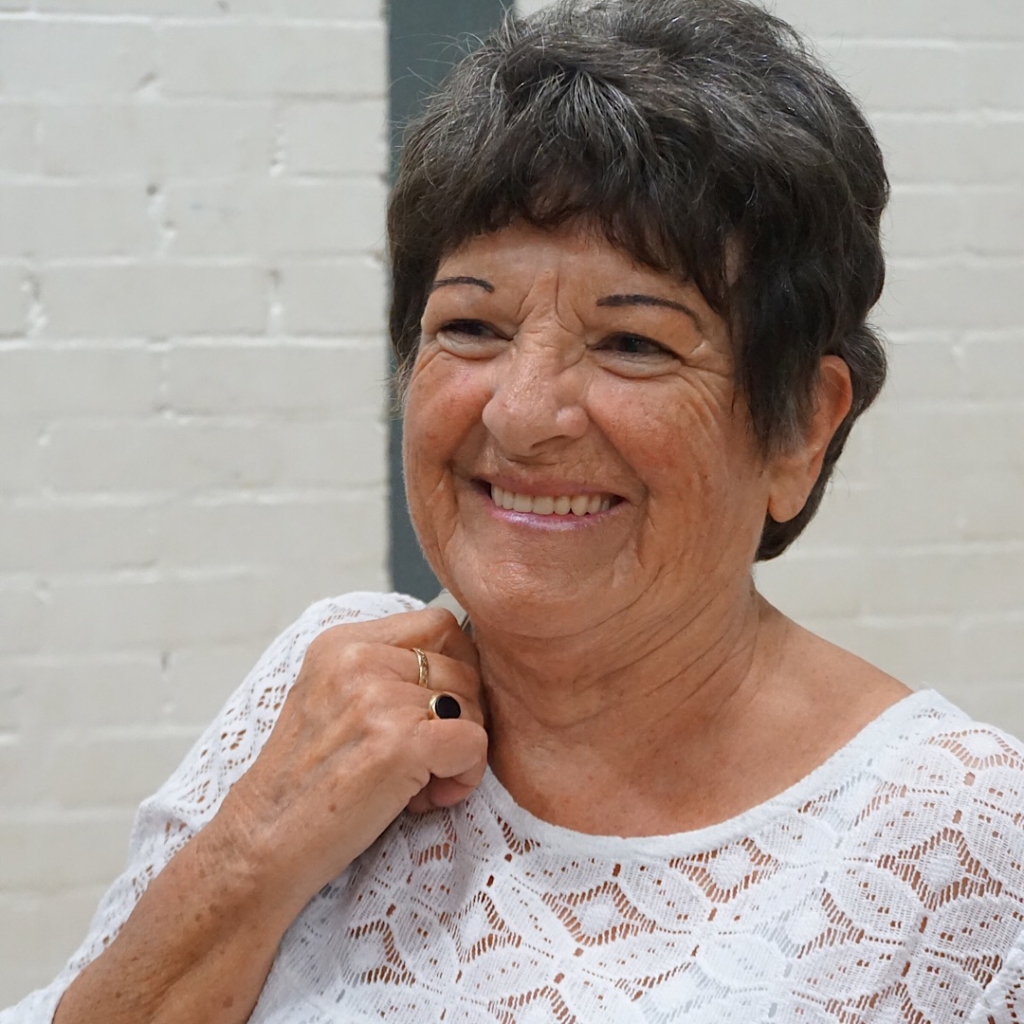
Janett and Sophia from Flock PR & Events, call in to see the progress…….

And Lorna Brunstein, the niece of Perec Zylberberg, one of ‘The Windermere Boys’ and daughter of Esther Brunstein – a Holocaust Survivor, stayed for the day. Lorna will be exhibiting with LDHP in 2020.
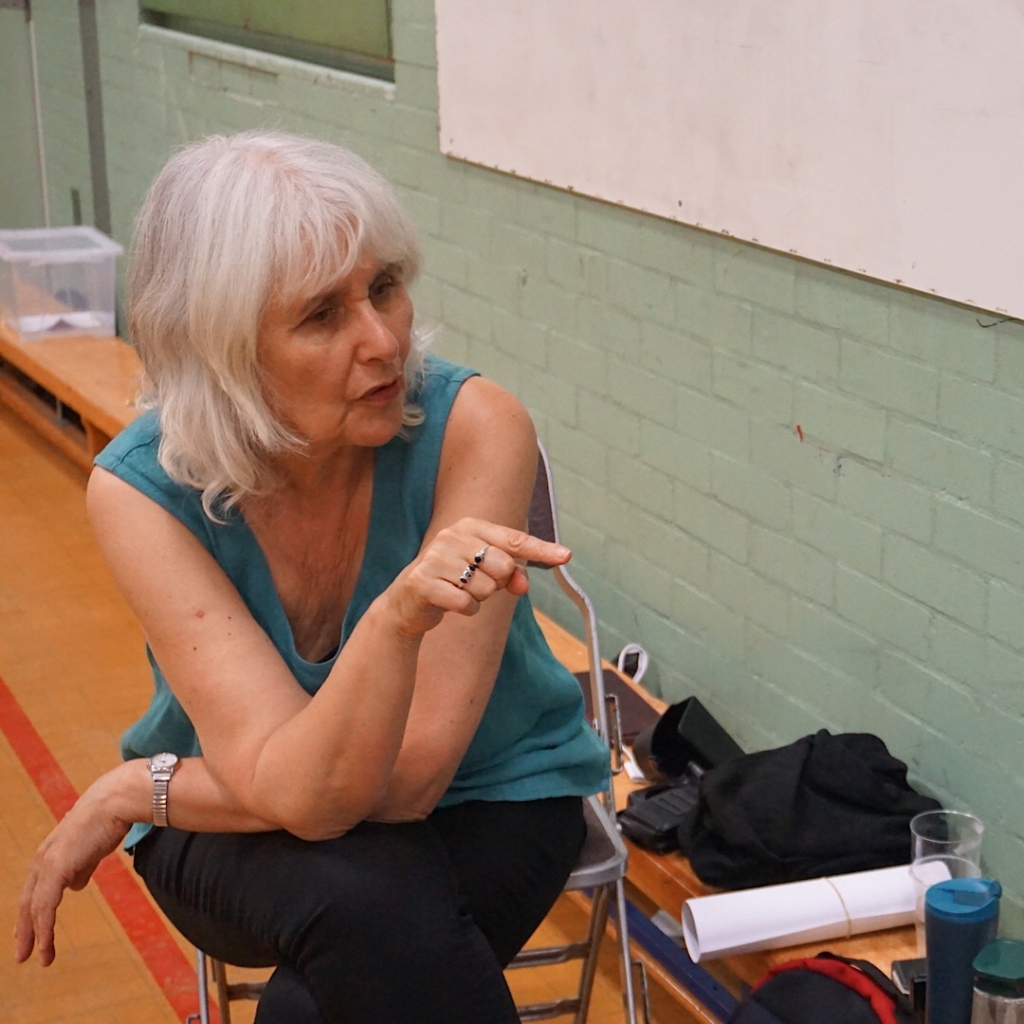
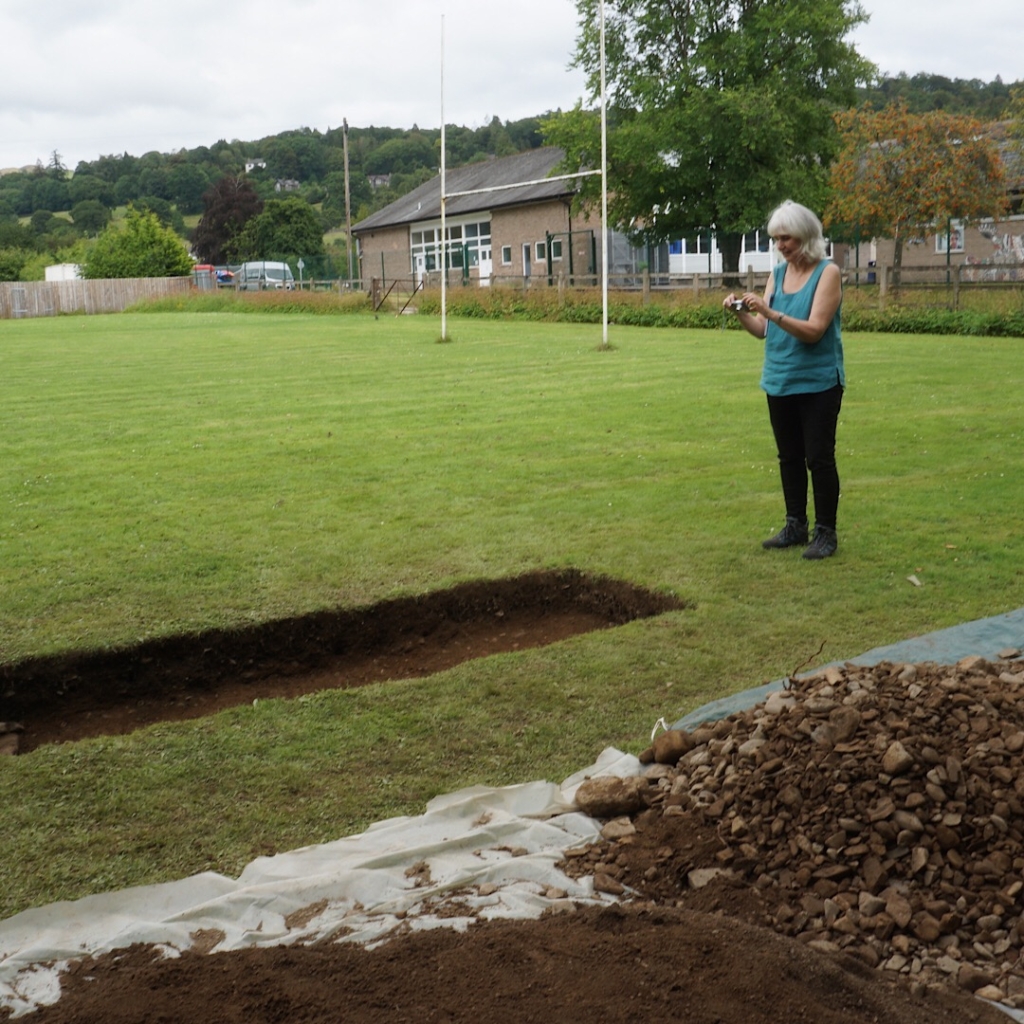
During the morning some small artefacts from trenches 5 and 6 had been washed and cleaned. One item of interest is an empty packet of Burton’s potato puffs, but it isn’t clear how old this might be. It is decided to continue digging for a while in trench 6 at the north end, and both are measured and drawn in the afternoon.
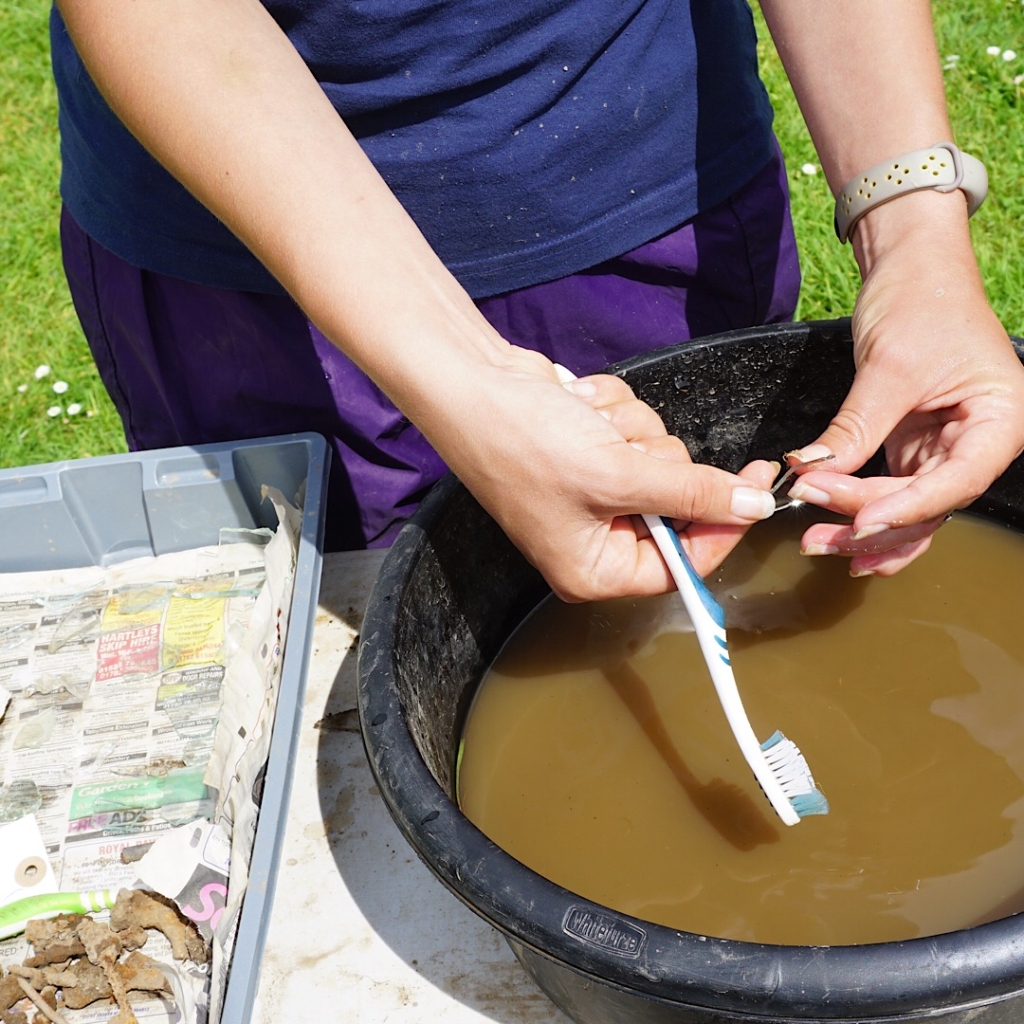
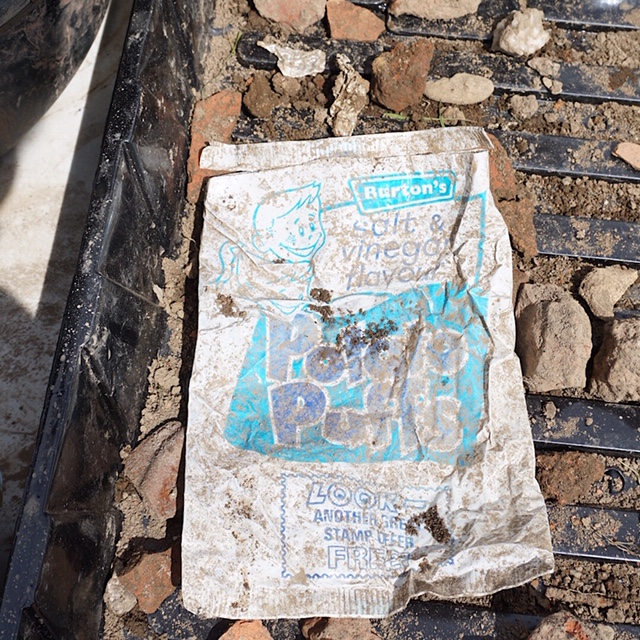
In trench 6, the stratification layer to the right of the area where the asbestos had been found, is dug and natural soil exposed. The trench is then measured and drawn, and similarly trench 5.
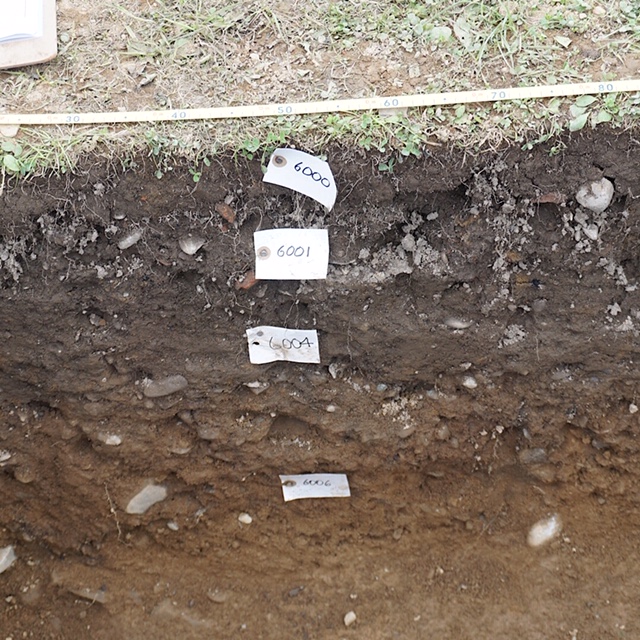
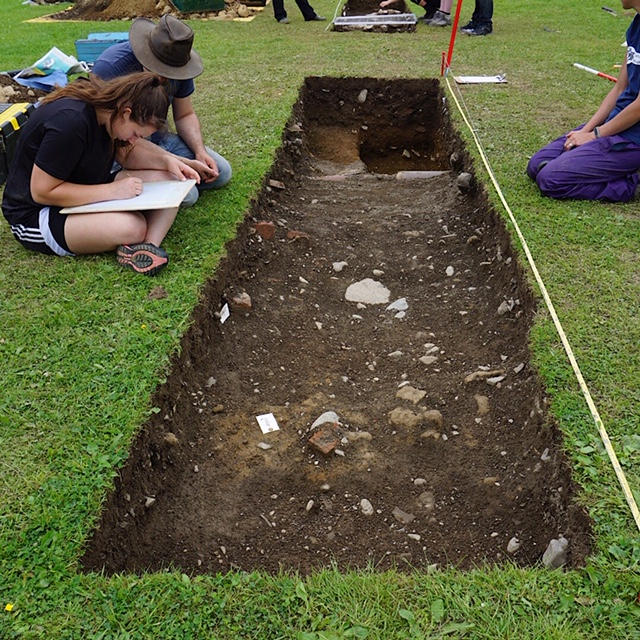
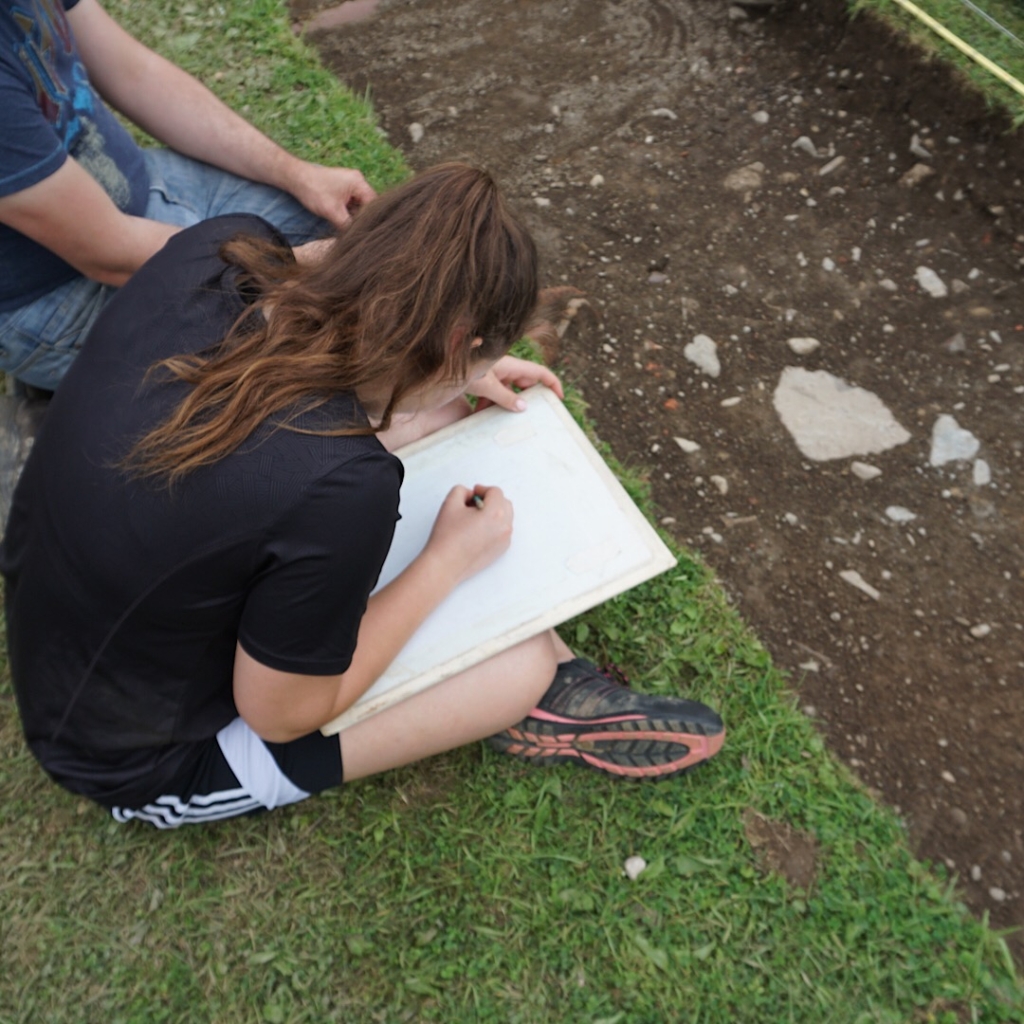
In trench 6, the stratification layer to the right of the area where the asbestos had been found, is dug and natural soil exposed.


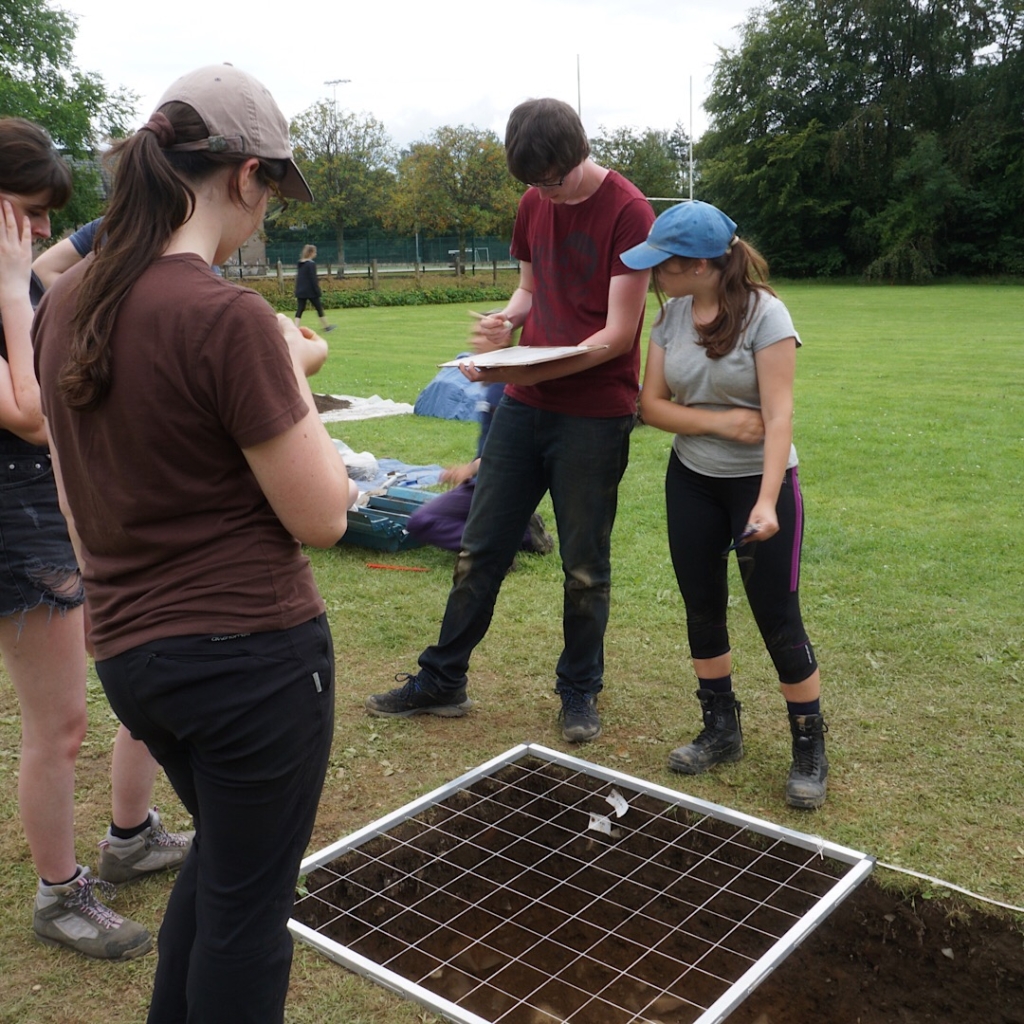
Meanwhile in trench 7 (at the opposite side of the field), further digging has exposed some pipes and is undoubtedly part of the pipe on the other side in trench 6. This could possibly be the pipe that was in the ablutions section of the former hostel.

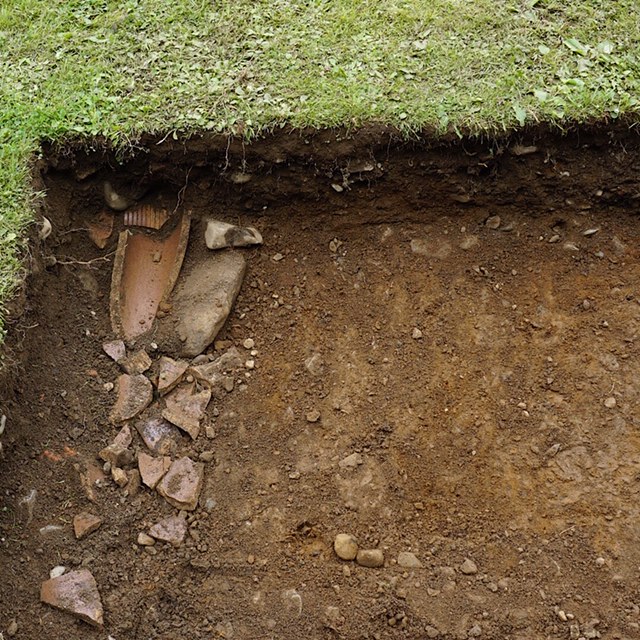

Towards the end of the afternoon, some of the students experiment with using a 3d scanner with some of the larger objects found this week.

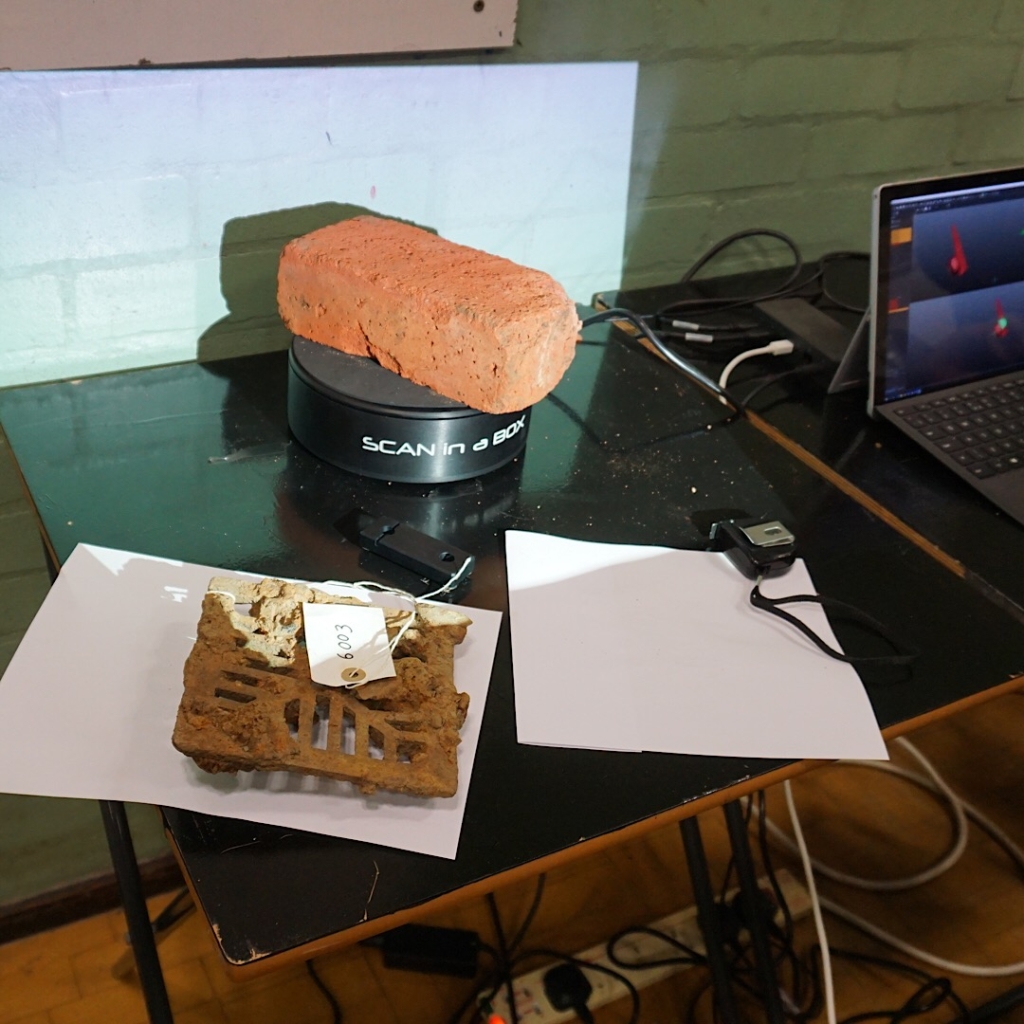
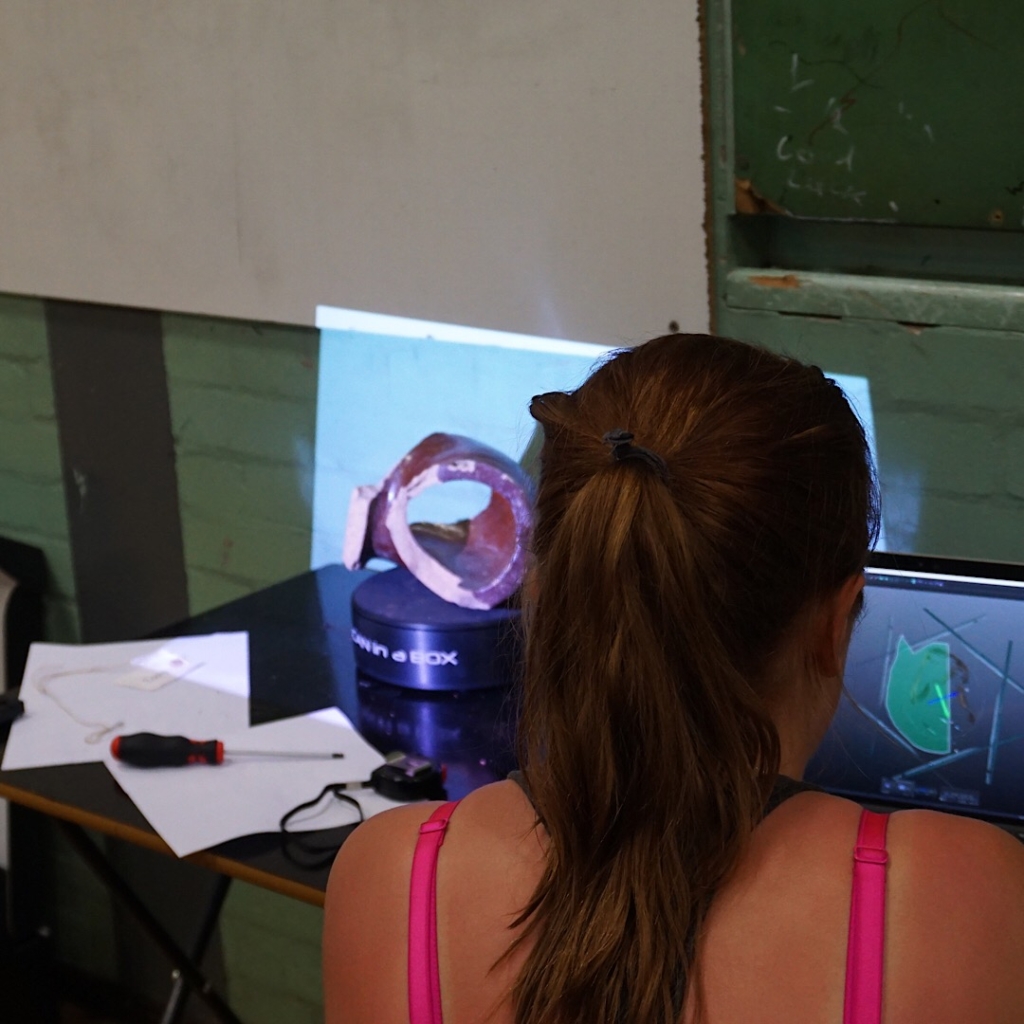
Denise would like to see the path her mother, Minia, had taken when she visited the school in 2010 with Trevor and so they take a stroll down Broadfield Road that is still in existence today.
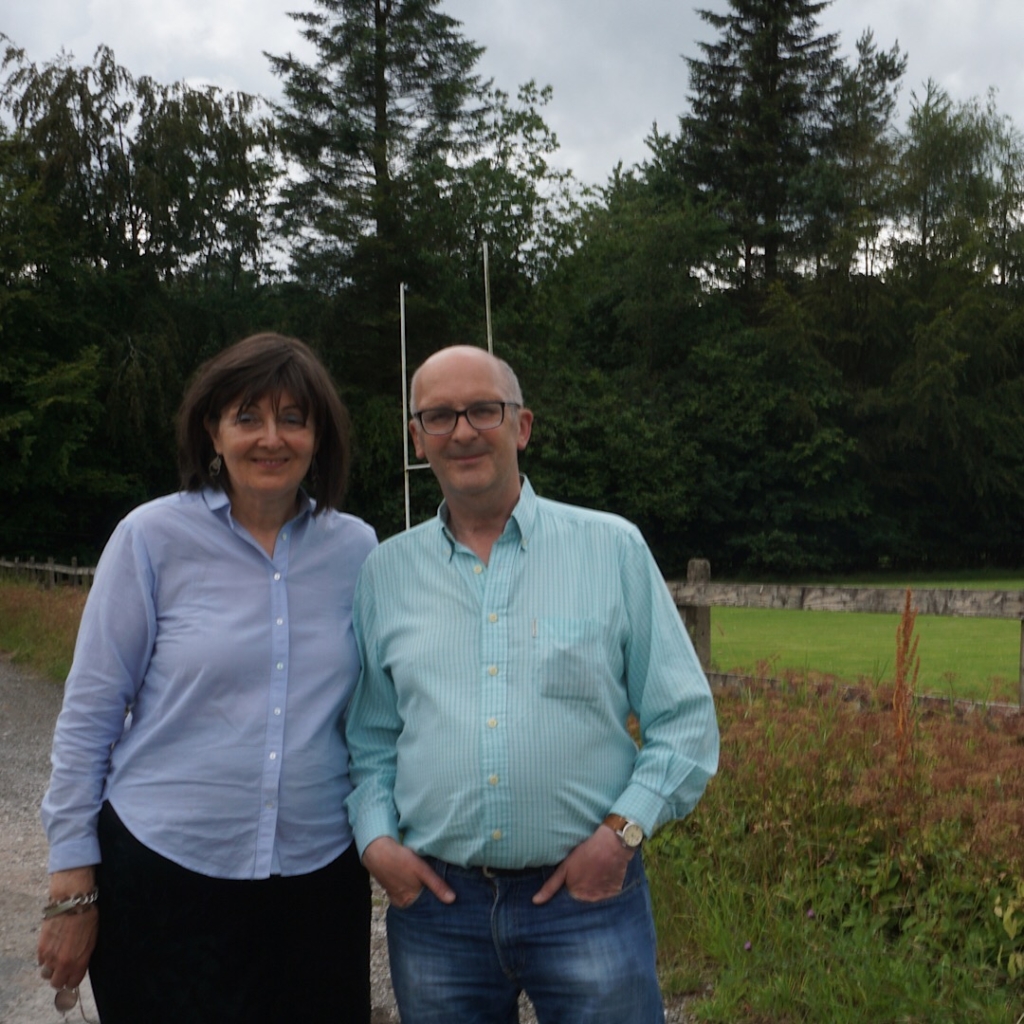
Day 9
An early start again. Sophie Smith and Alfred Glenn have already started some filming for ‘Digging for Britain’ before the archaeologists, students and volunteers begin. The programme will be part of a WW2 series.
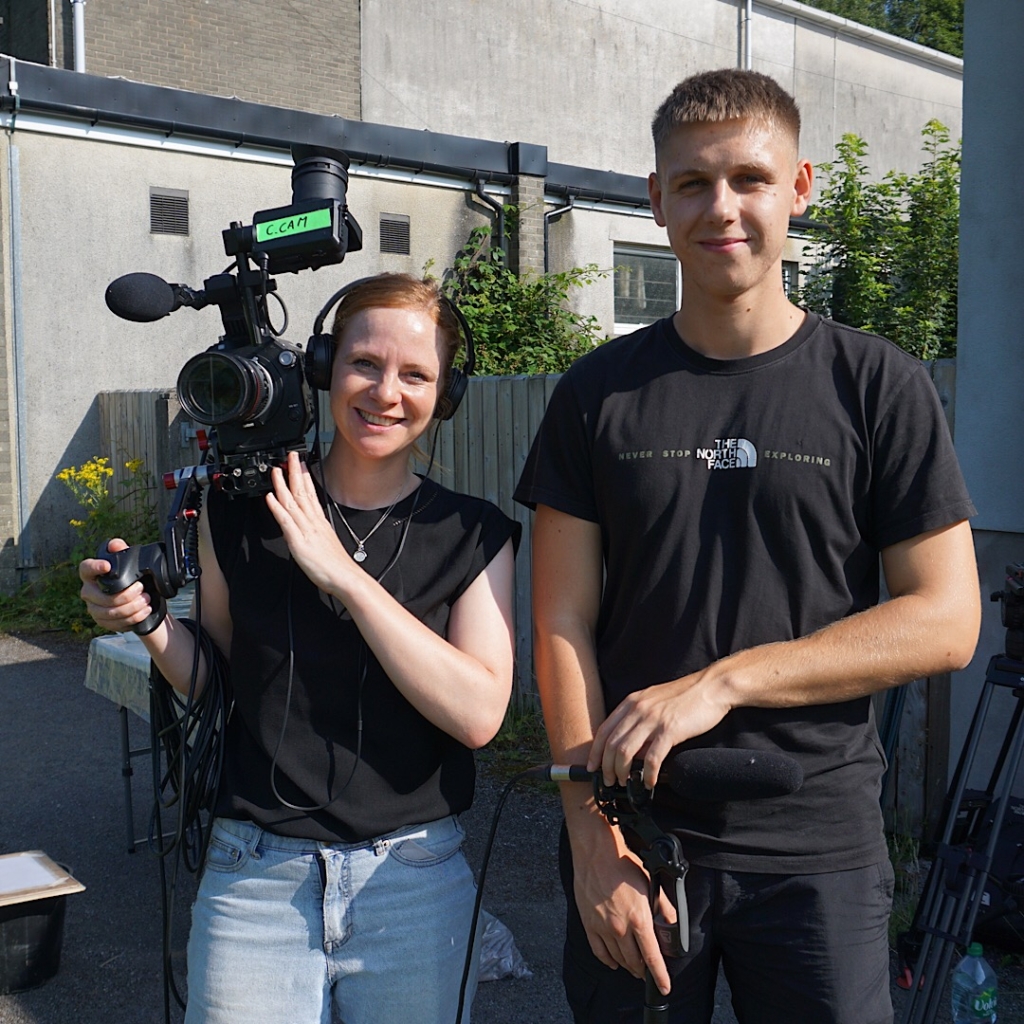
The weather is fine and forecast predictions suggest a temperature of 30 degrees today!
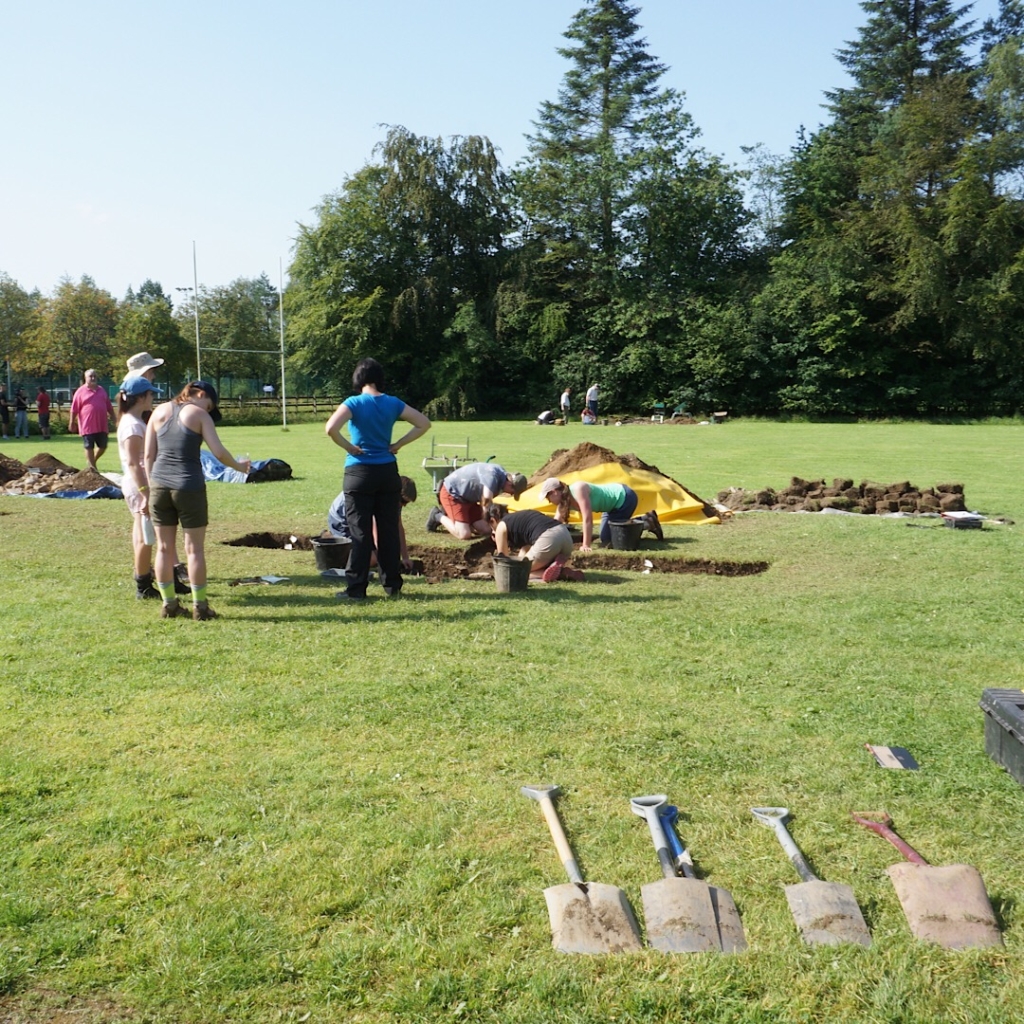
Kieron has returned as a volunteer and he is again joined by Eli, Denise, Joshua and Freya. Will has decided to extend trench 7 towards the school to see if there will be any differences in the stratification layers. Denise is happy to wield the mattock!
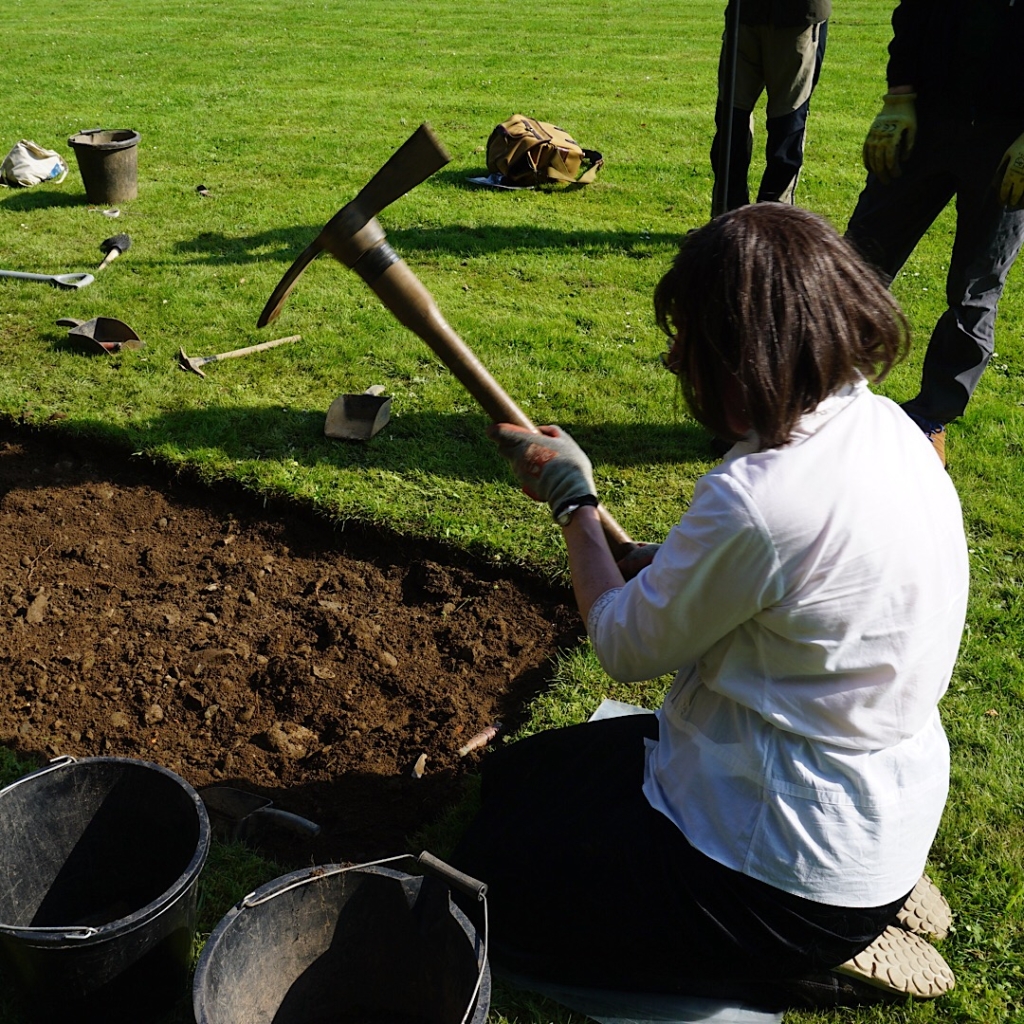
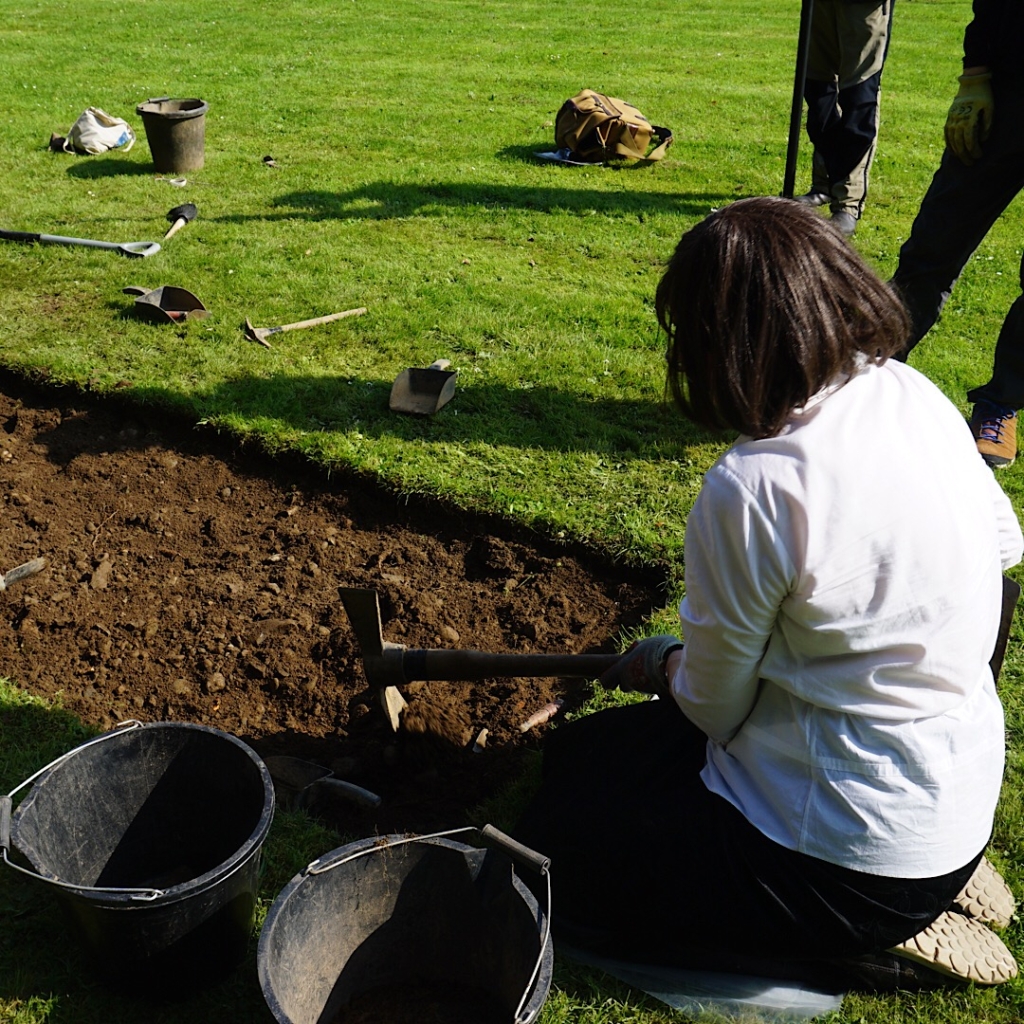

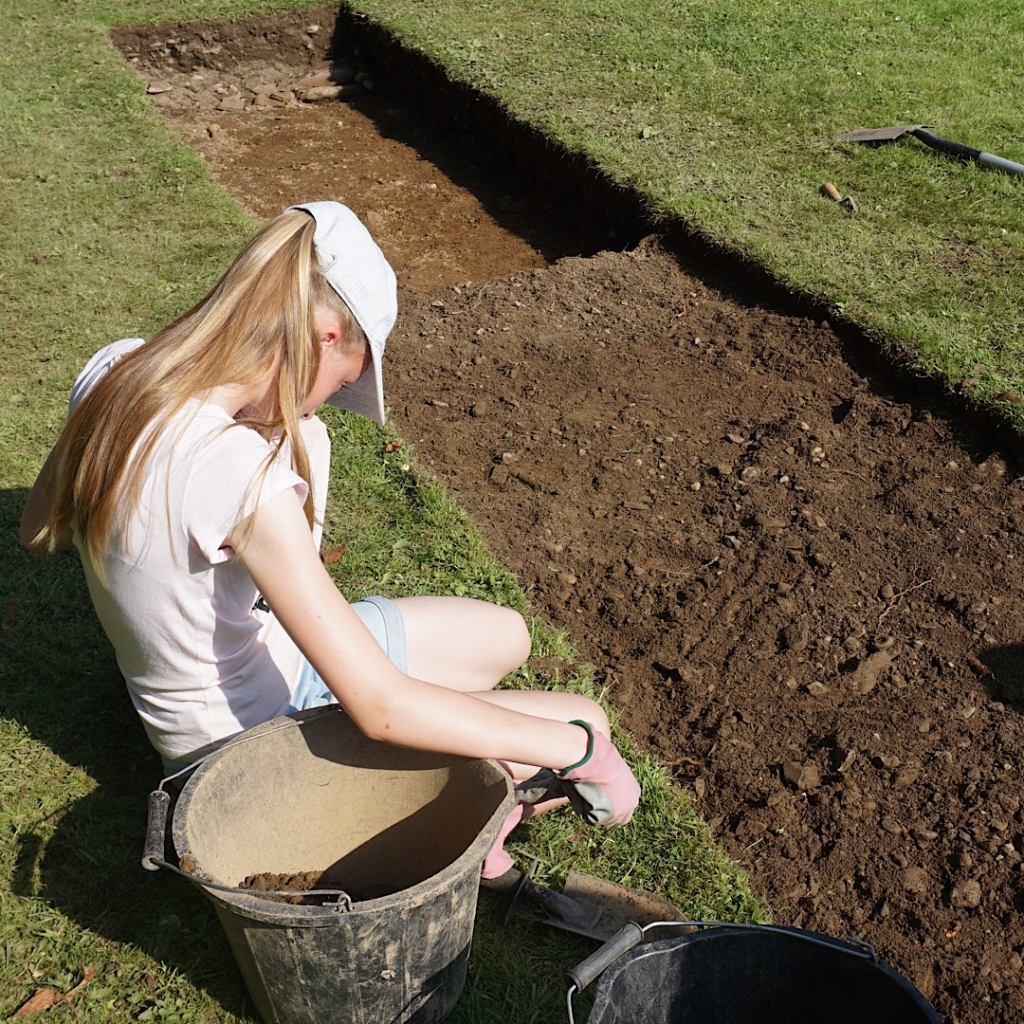
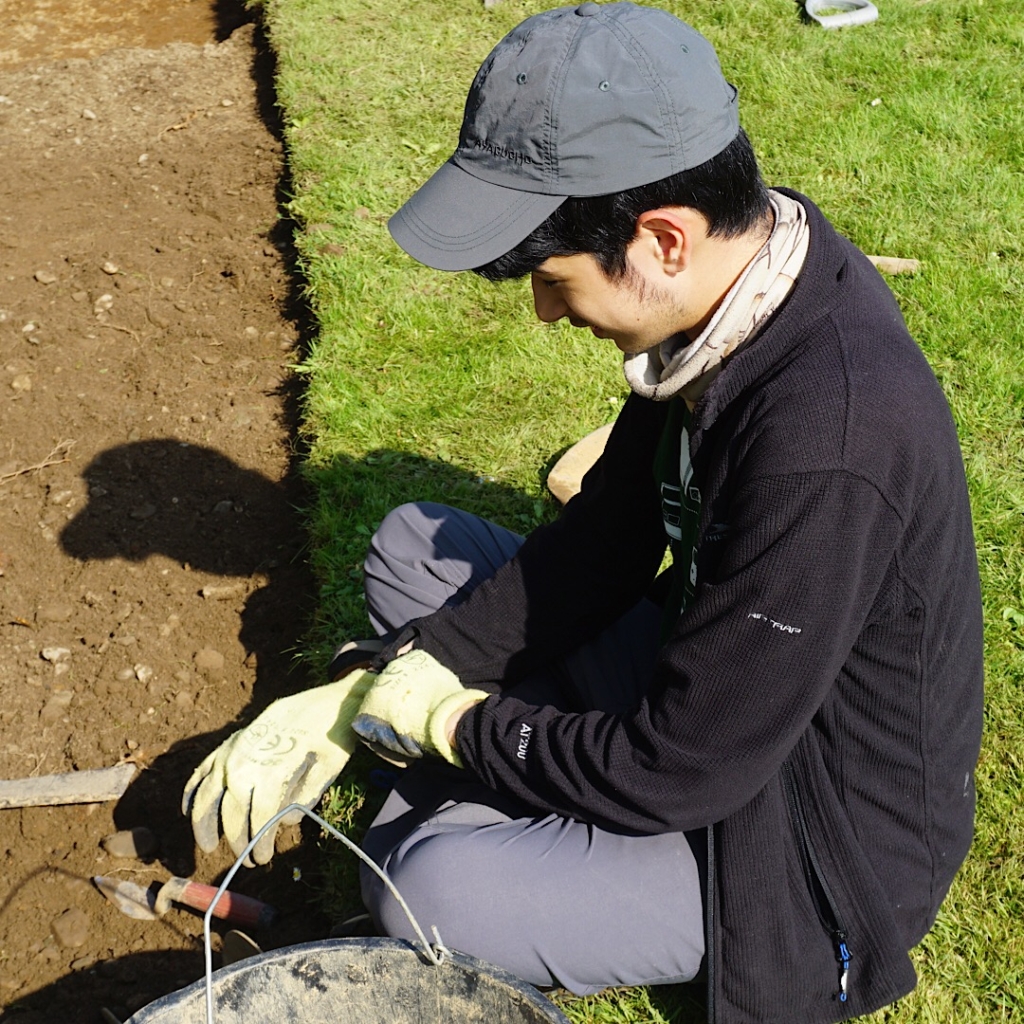
Trench 6 is being left for today and may be revisited tomorrow.
Alex starts to scan some of the artefacts with the 3d scanner again today and demonstrates to some of the students how to do this.
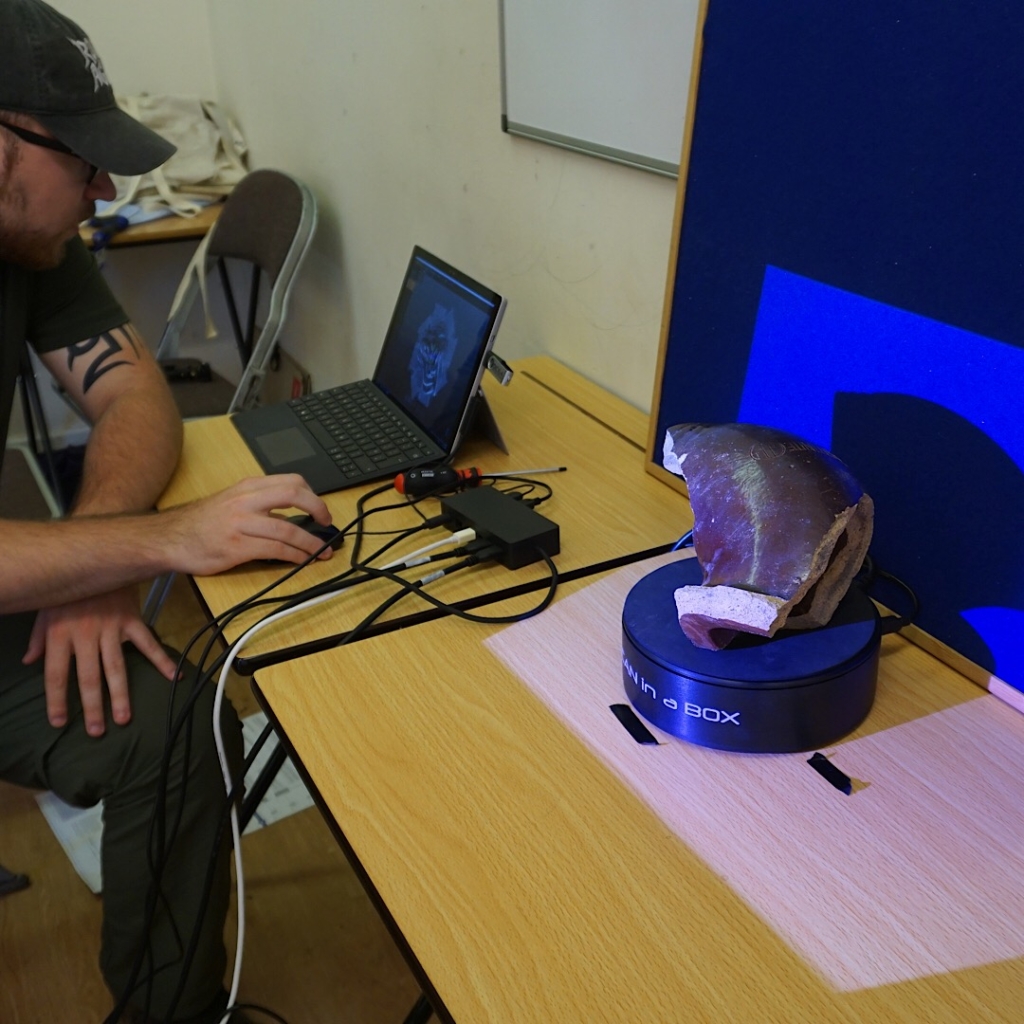
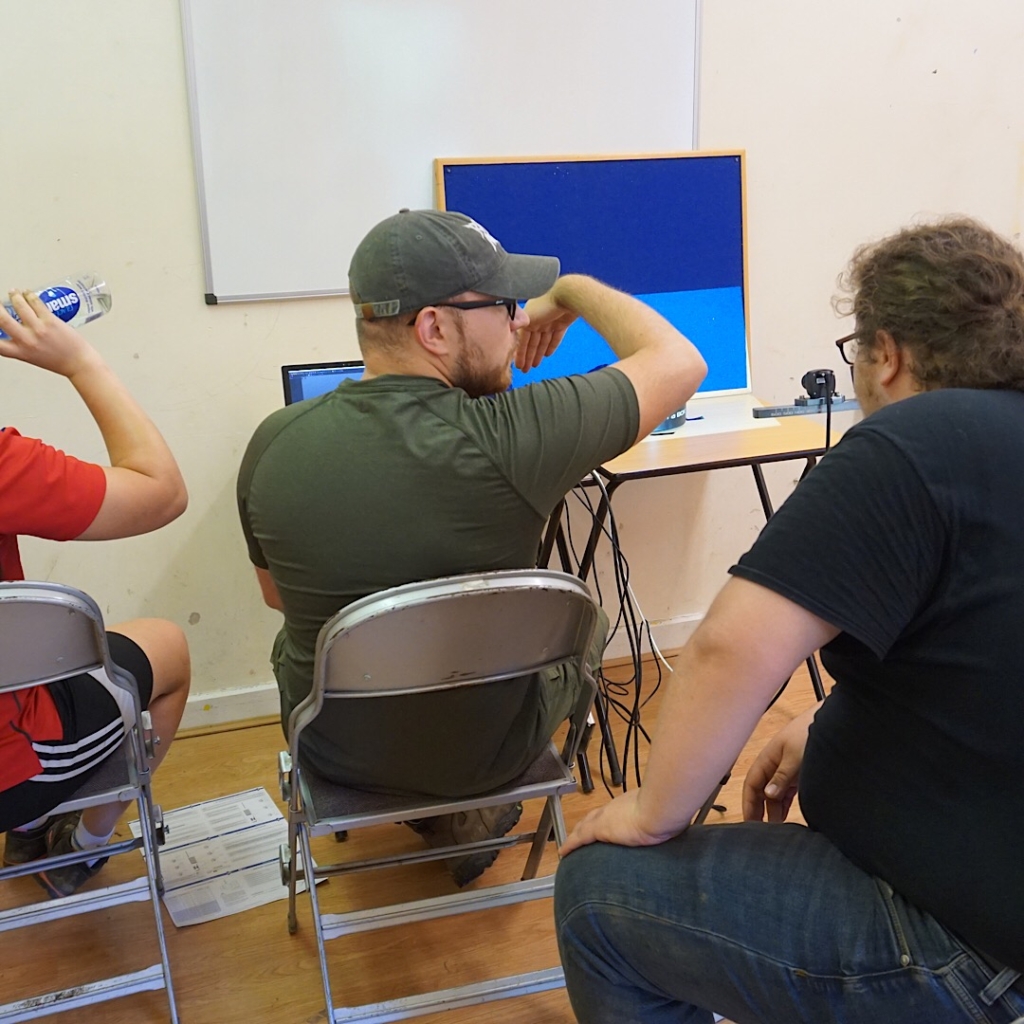
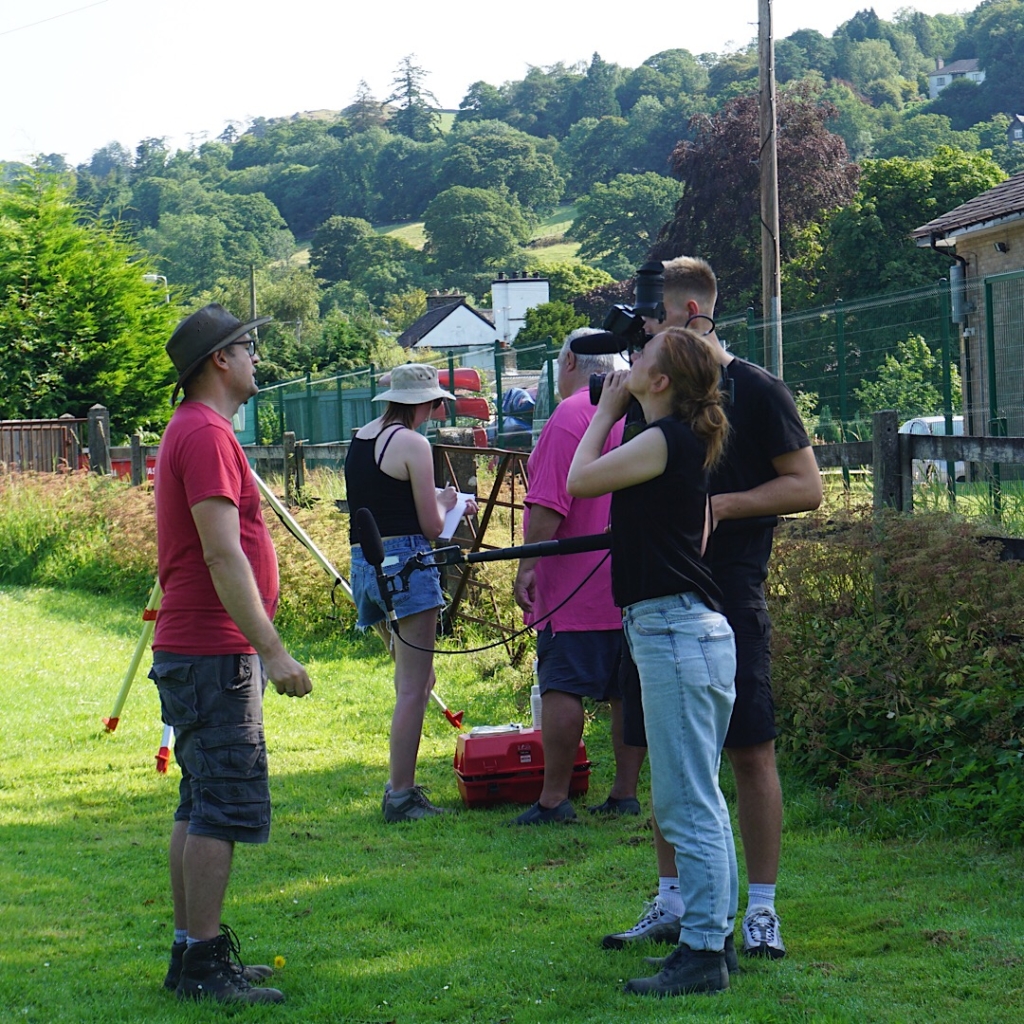
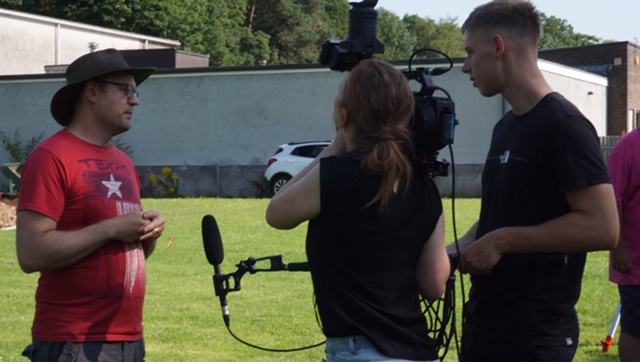
In between filming, Caroline and Kevin are supervising the excavation of trench 5 and this is being extended at right angles either side. They want to determine whether there there is an extension of the large stones, already excavated, which may indicate that they are part of a foundation wall. They take photographs and recordings of the stones already excavated.
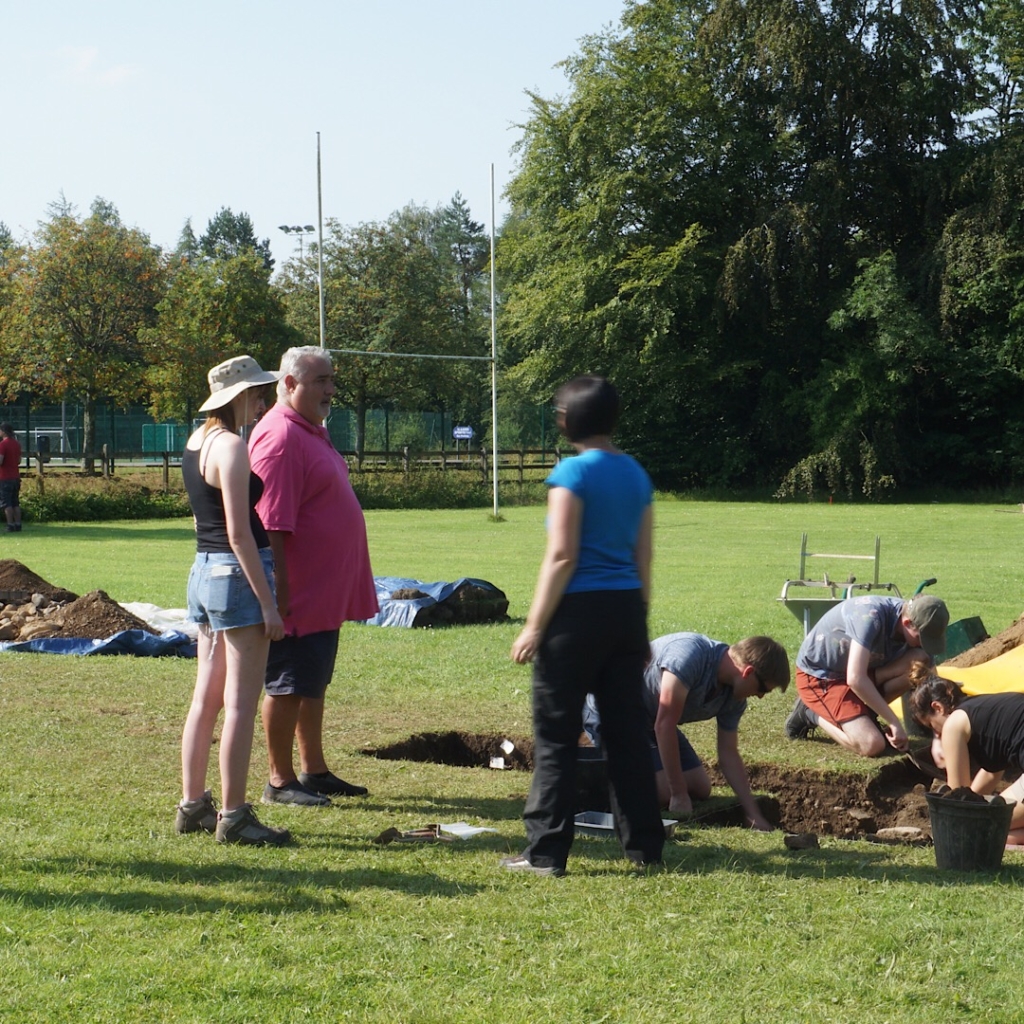
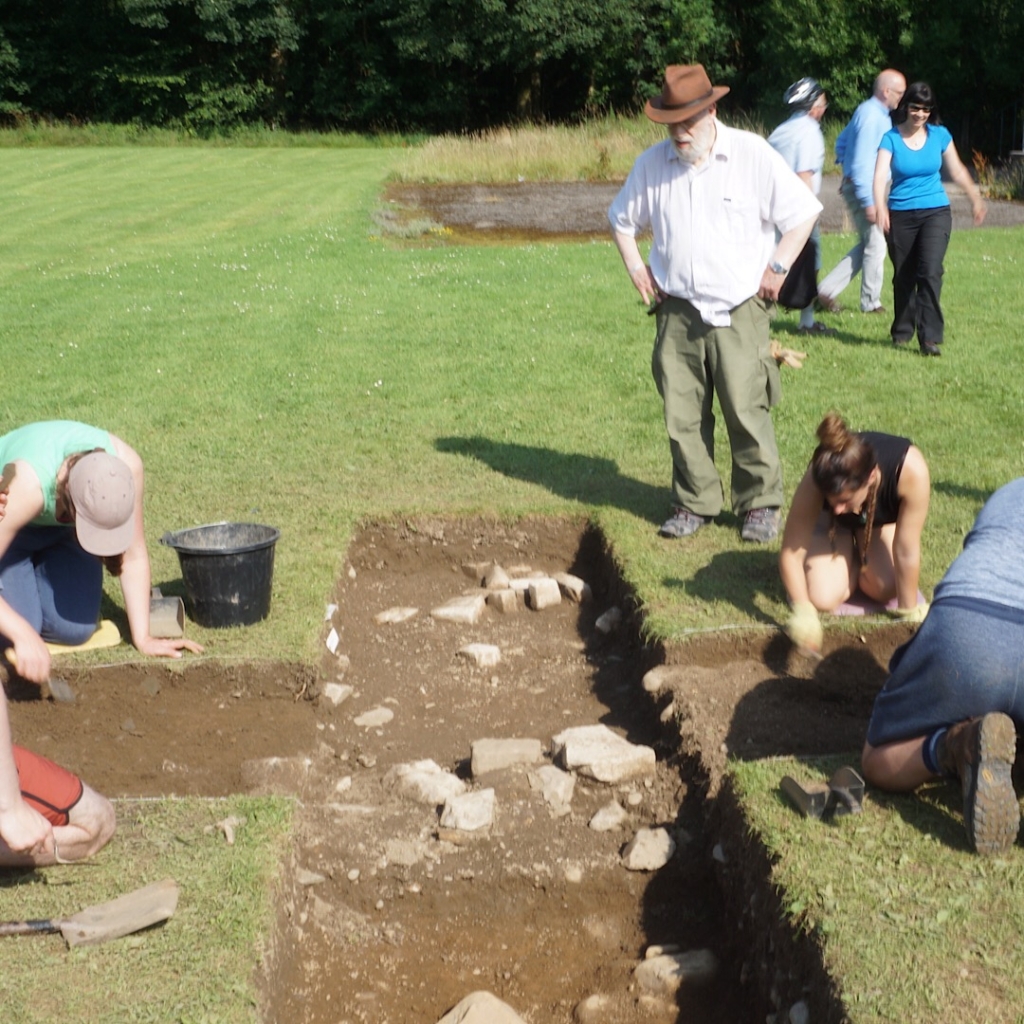
Before long some more artefacts have been found, including a nail, more bricks and parts of pipes. Daria starts to brush and wash these.
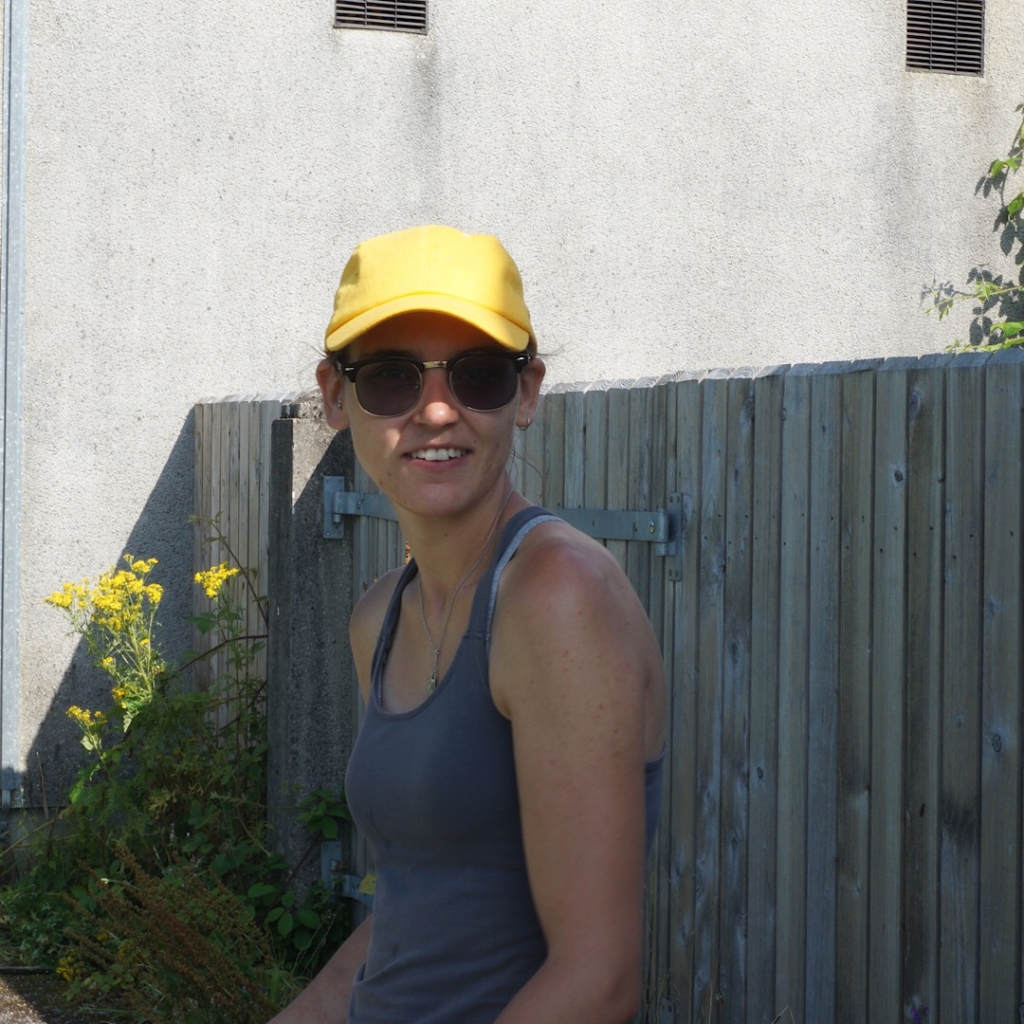
It appears that the western part of the trench does contain some very similar stones, so it is thought these and those excavated yesterday may indeed form part of a foundation wall.

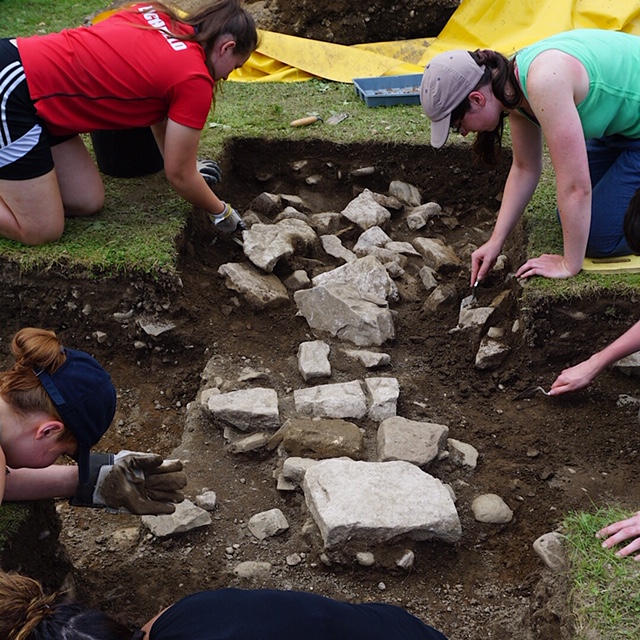


Dave Ward returns to take photographs of some of the found artefacts, and to use the extended pole for the camera outside so that he can photographs of the trenches from above.
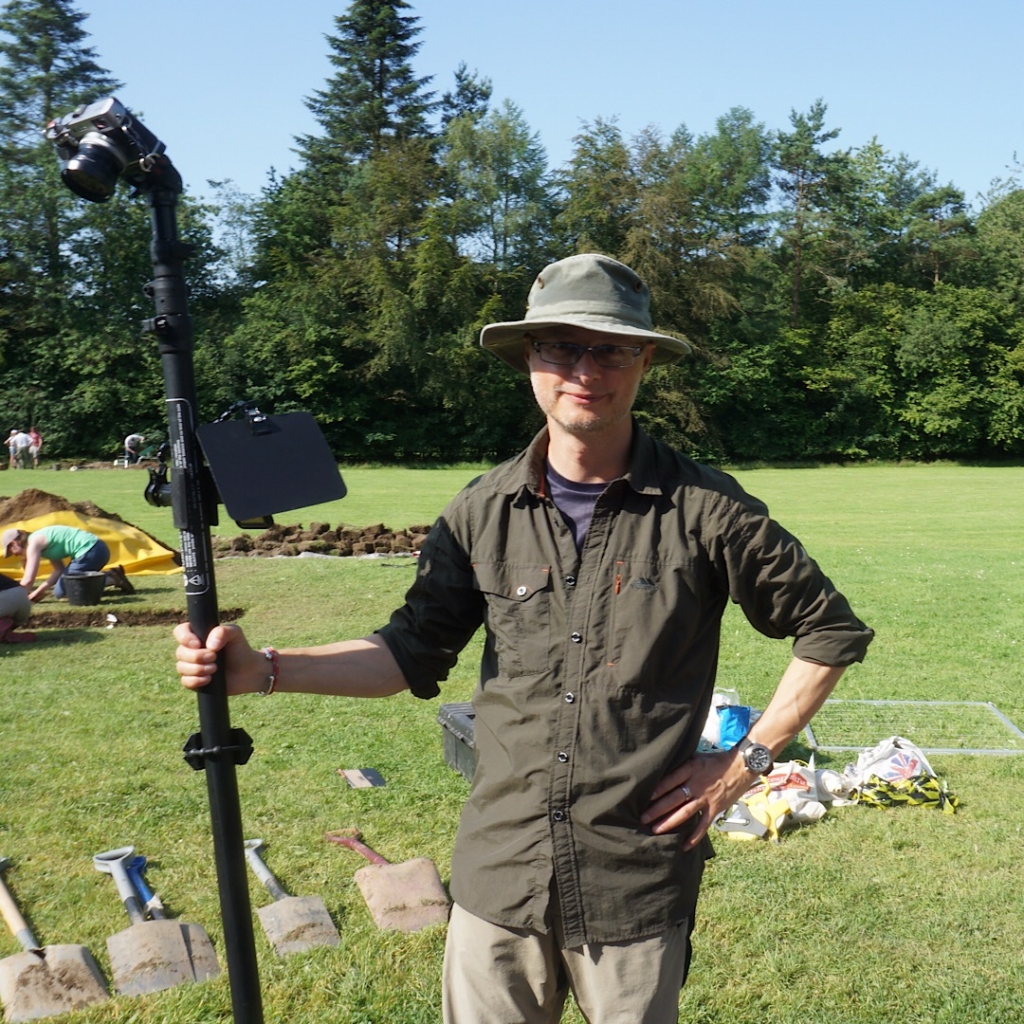
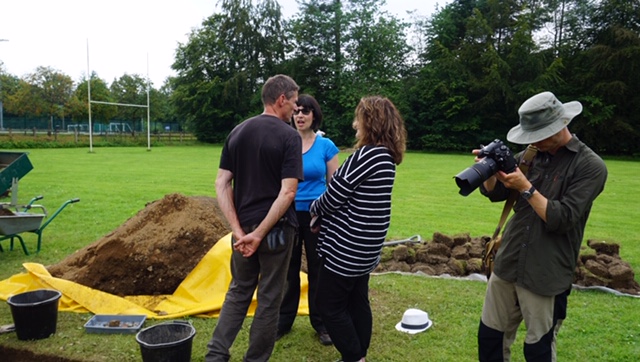
In trench 7 everyone continues to dig. To Eli’s surprise, he finds a small, and possibly very old, penknife whilst scraping and digging.
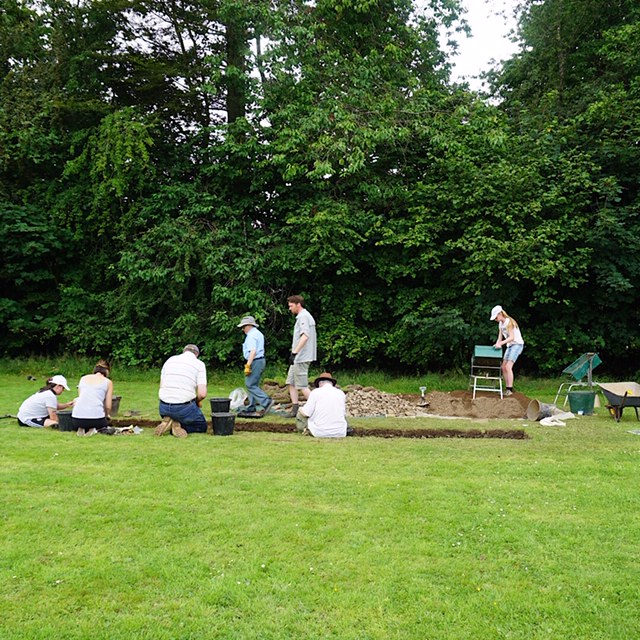
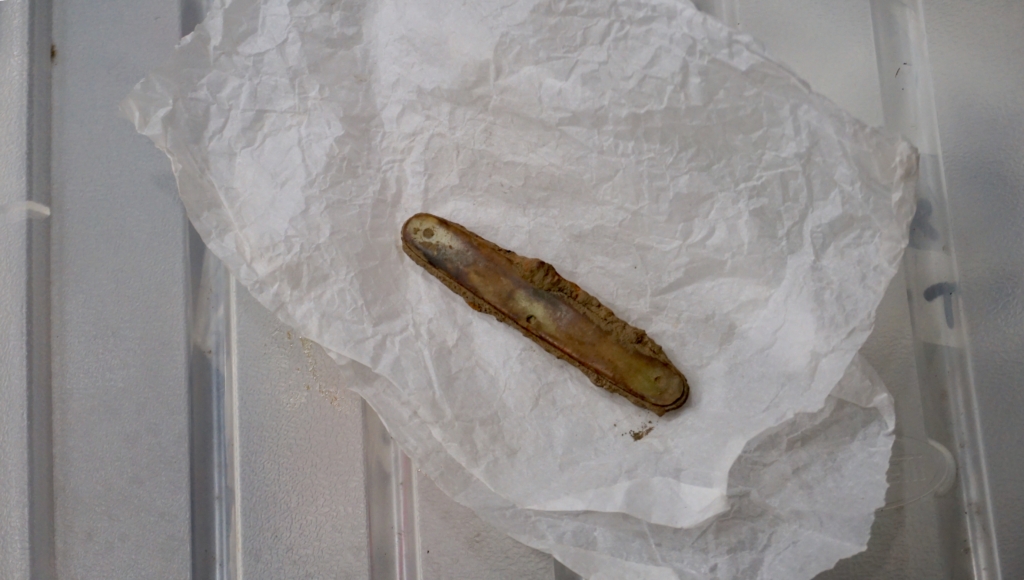
The temperature has increased and lunch is a welcome break, especially for the archaeology, geography and history students.
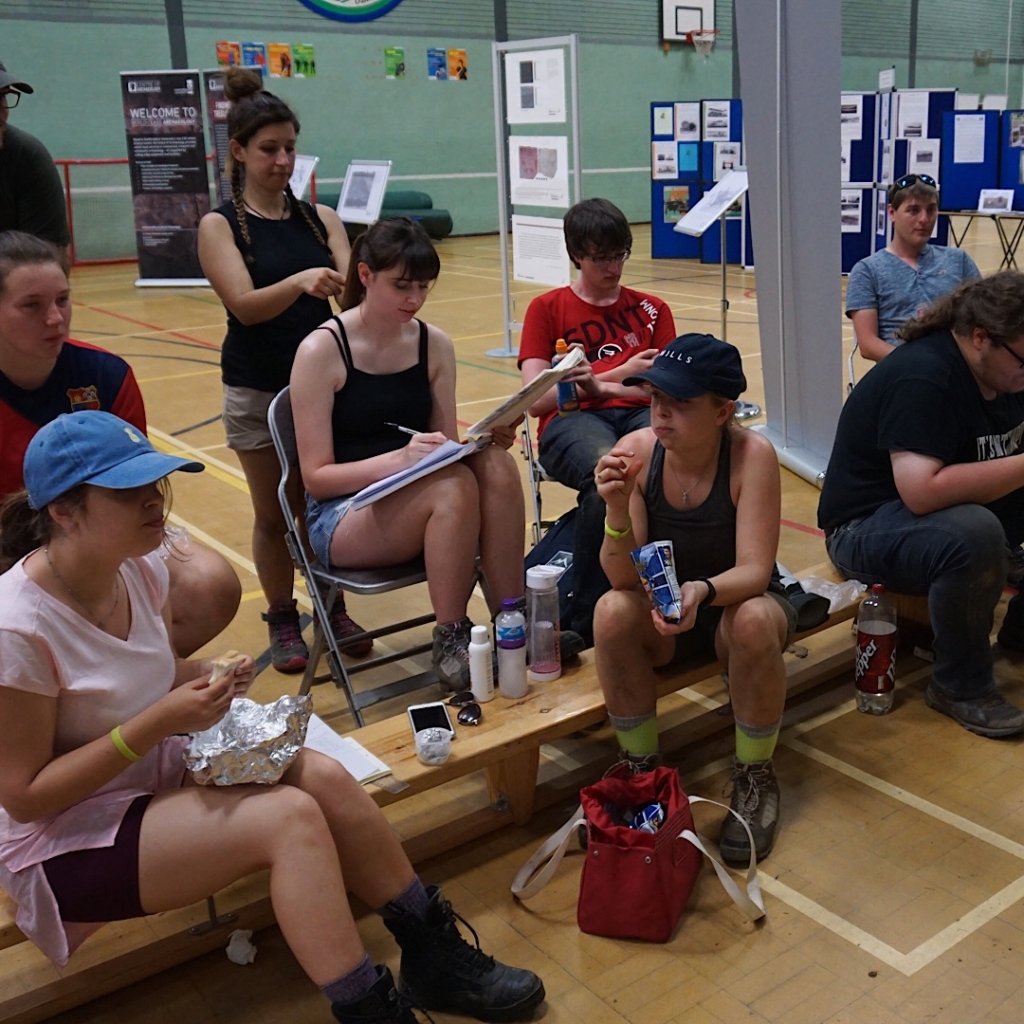
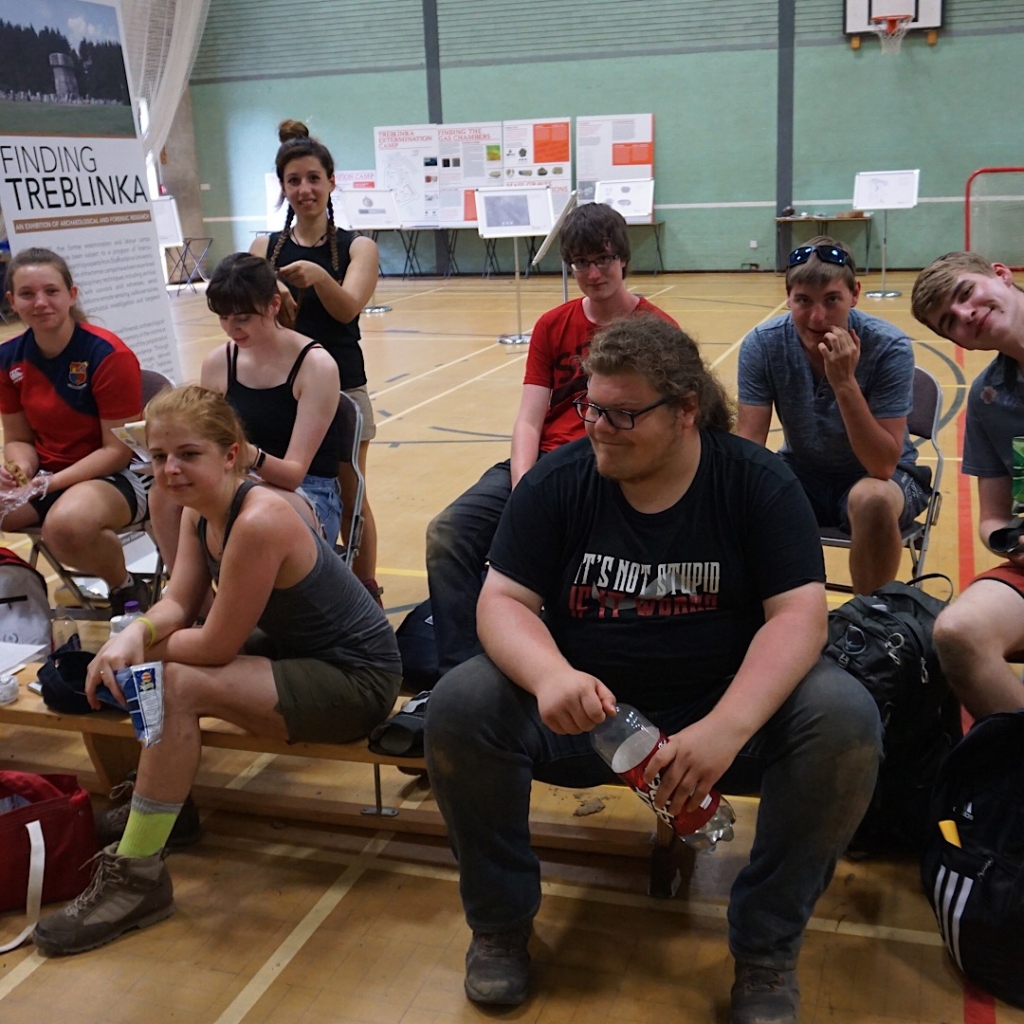
It is very unusual to see Kevin, Caroline and Will sitting down together!……

…. and it is decided to take a group photograph so everyone starts to assemble. This takes some time!
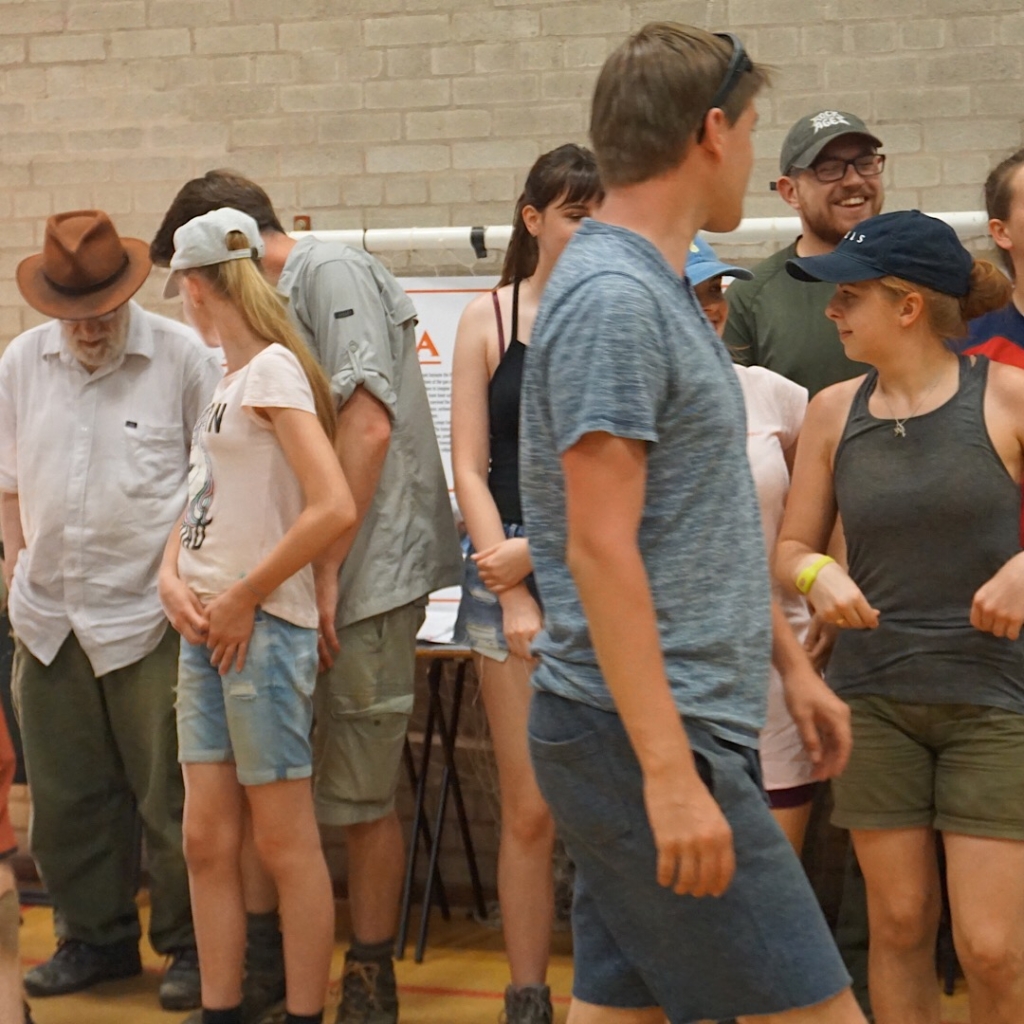
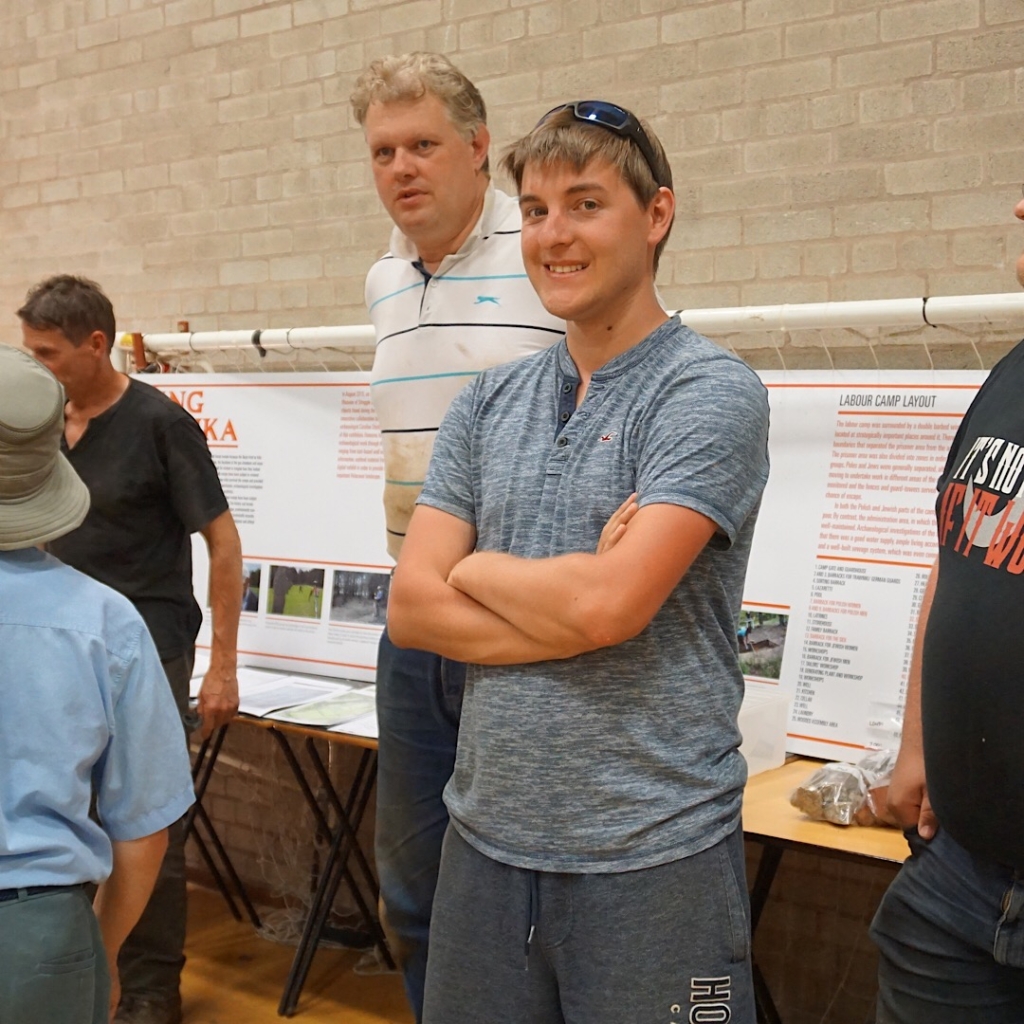
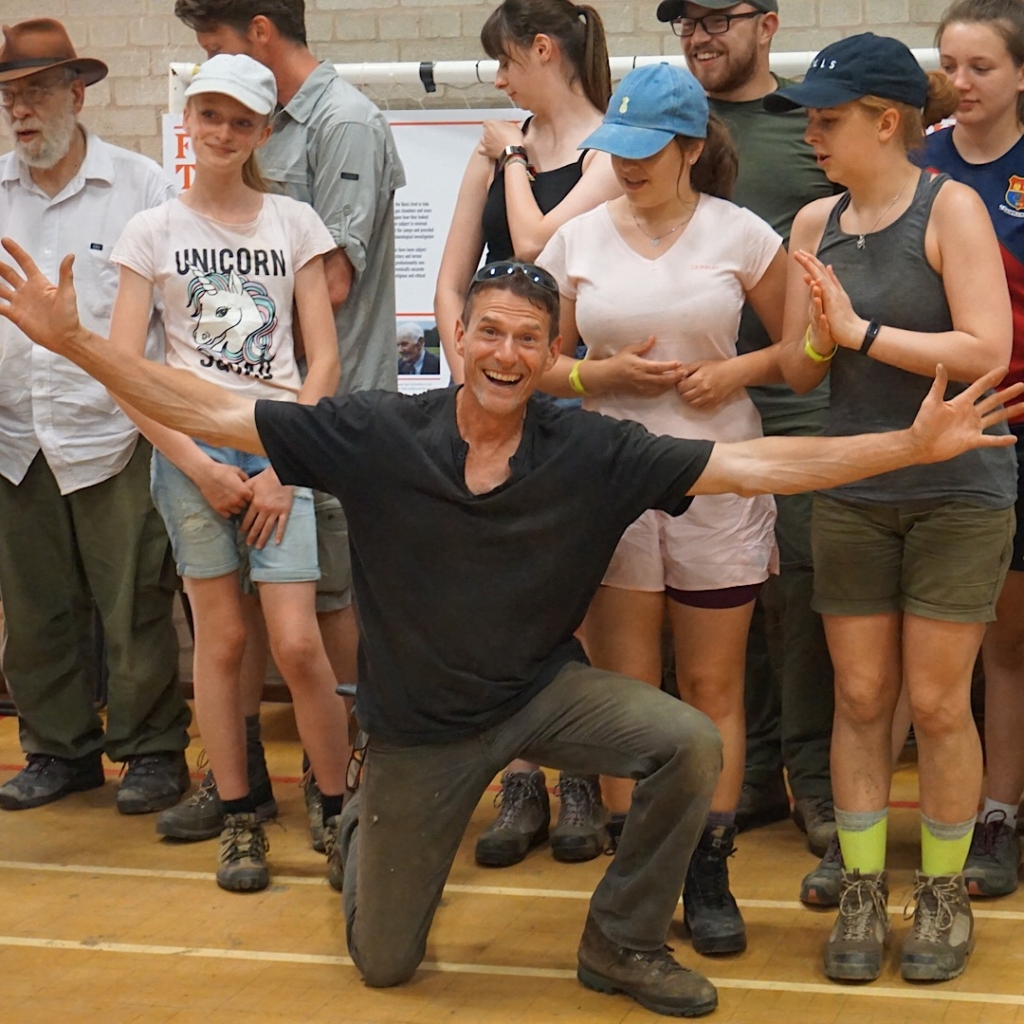
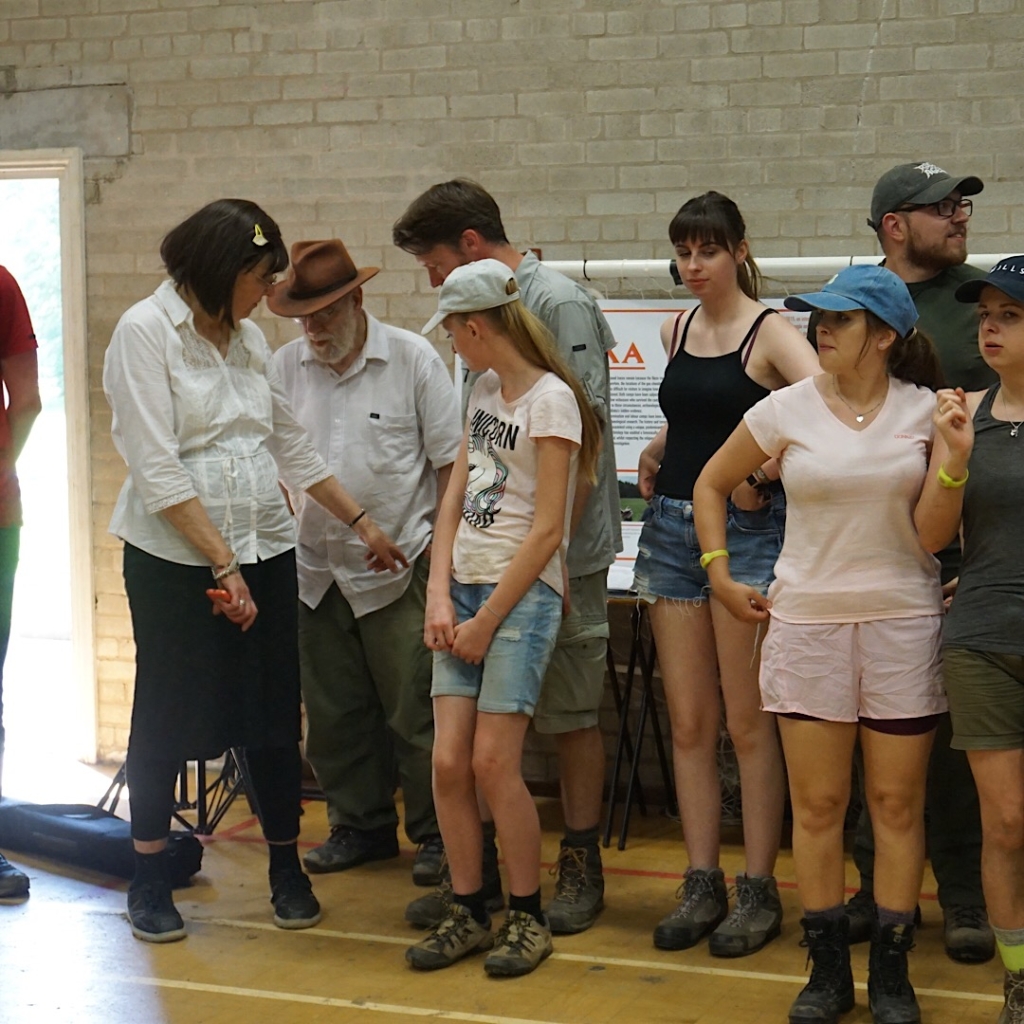


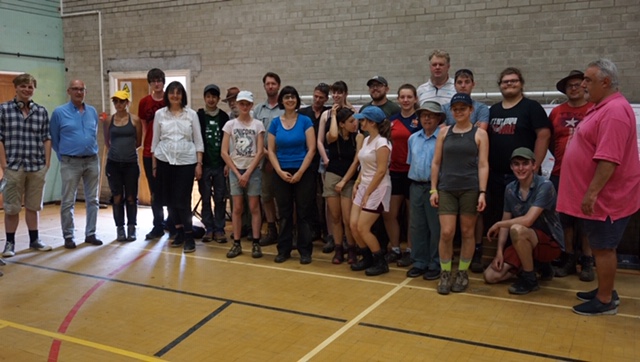
After lunch the volunteers are joined by Paul Sargent and Debbie and Sophie Sorrenson.
It appears to be a day for photography and interviews. Two Holocaust Survivors and Windermere Boys’, Sam Laskier and Ike Alterman, arrive for the afternoon.
Tim Farron MP arrives and after chatting with Kevin, promptly offers to take part in the dig at trench 7. He stays to talk to Denise, Ike and Sam.

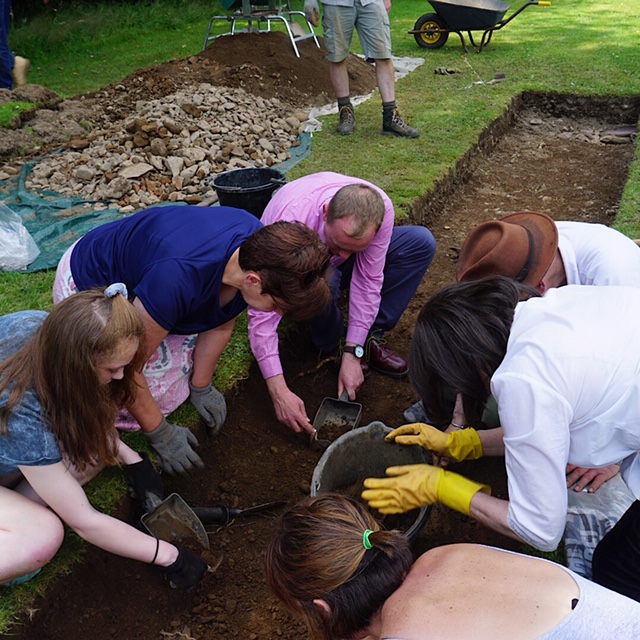

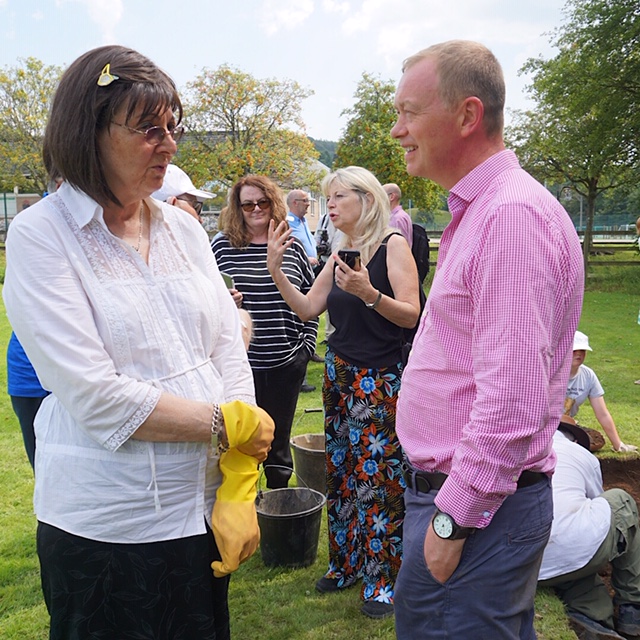


Ike and Sam are interviewed by Neil Smith for Radio Cumbria, and Mike Glover, a freelance journalist, is writing an article for the Sunday Times – Glen Minikin takes a series of photographs for this.
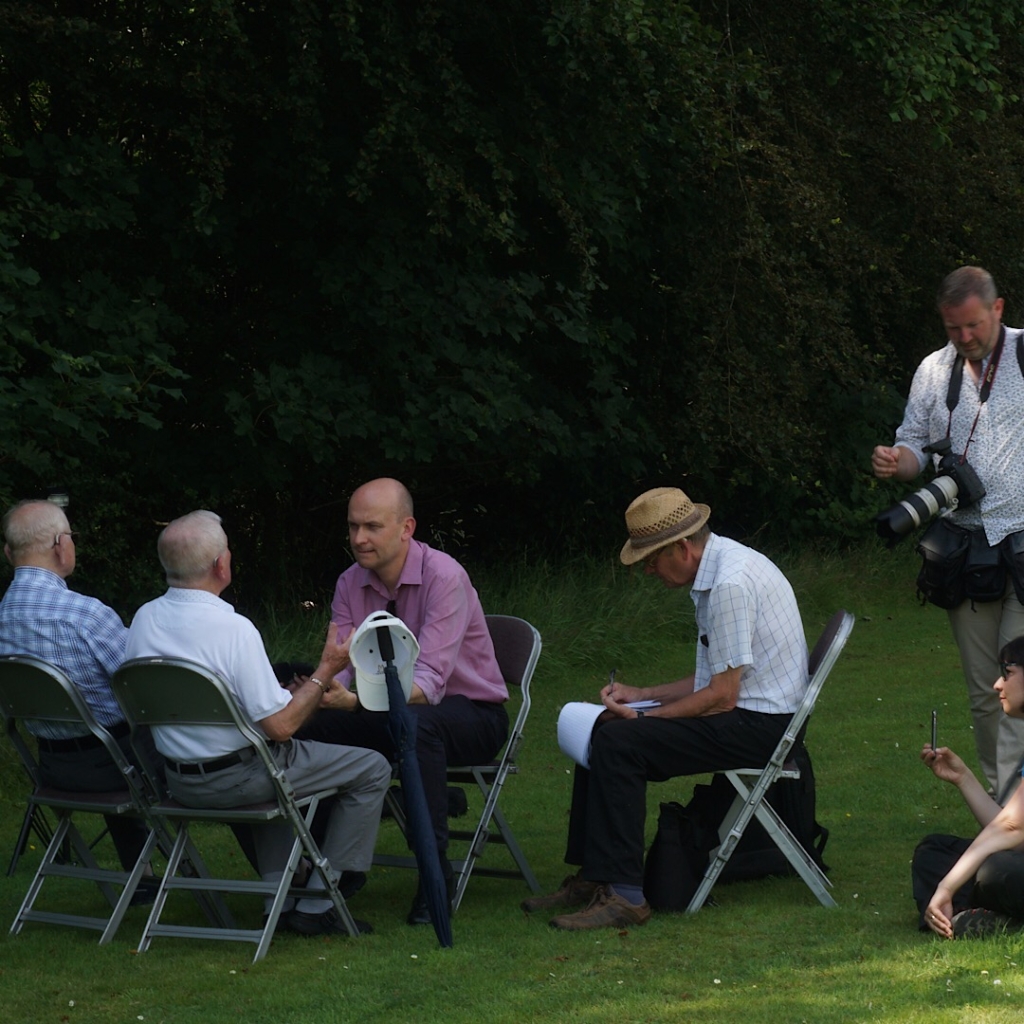
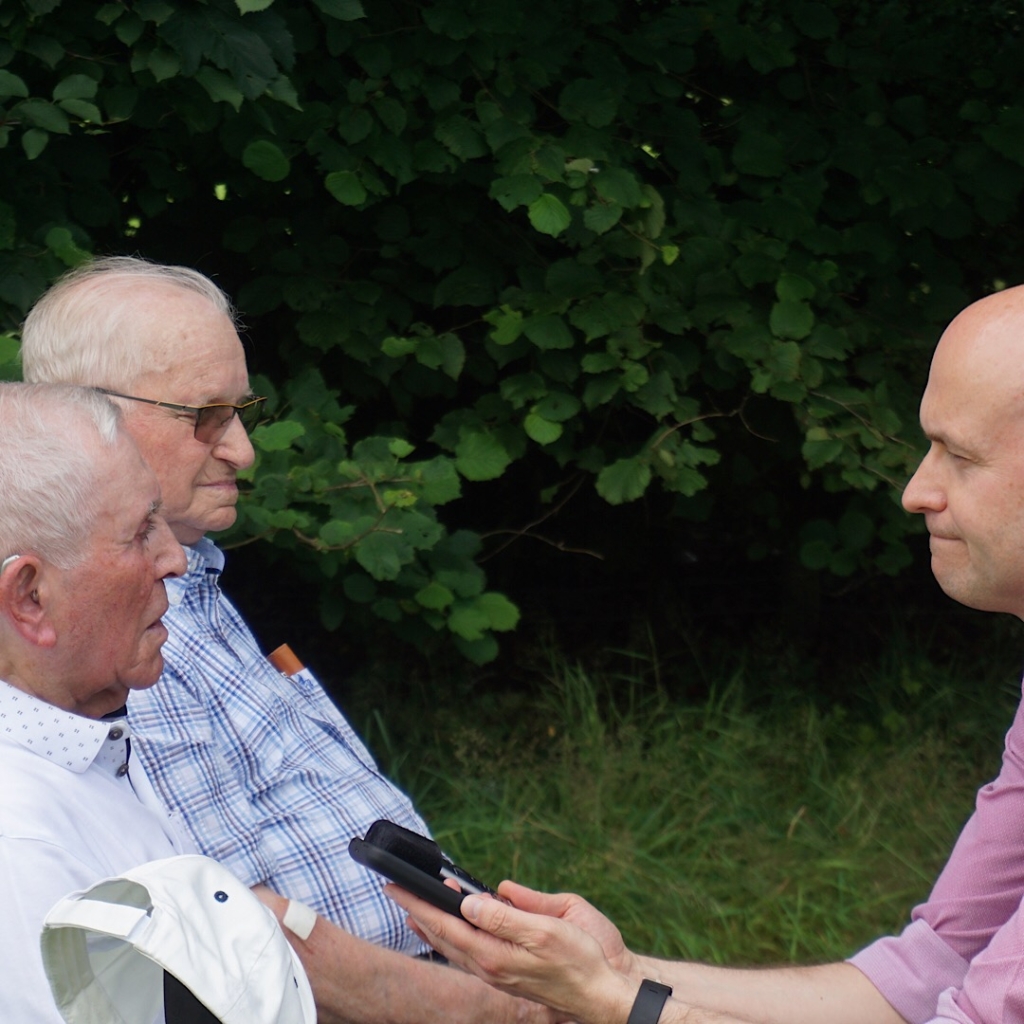
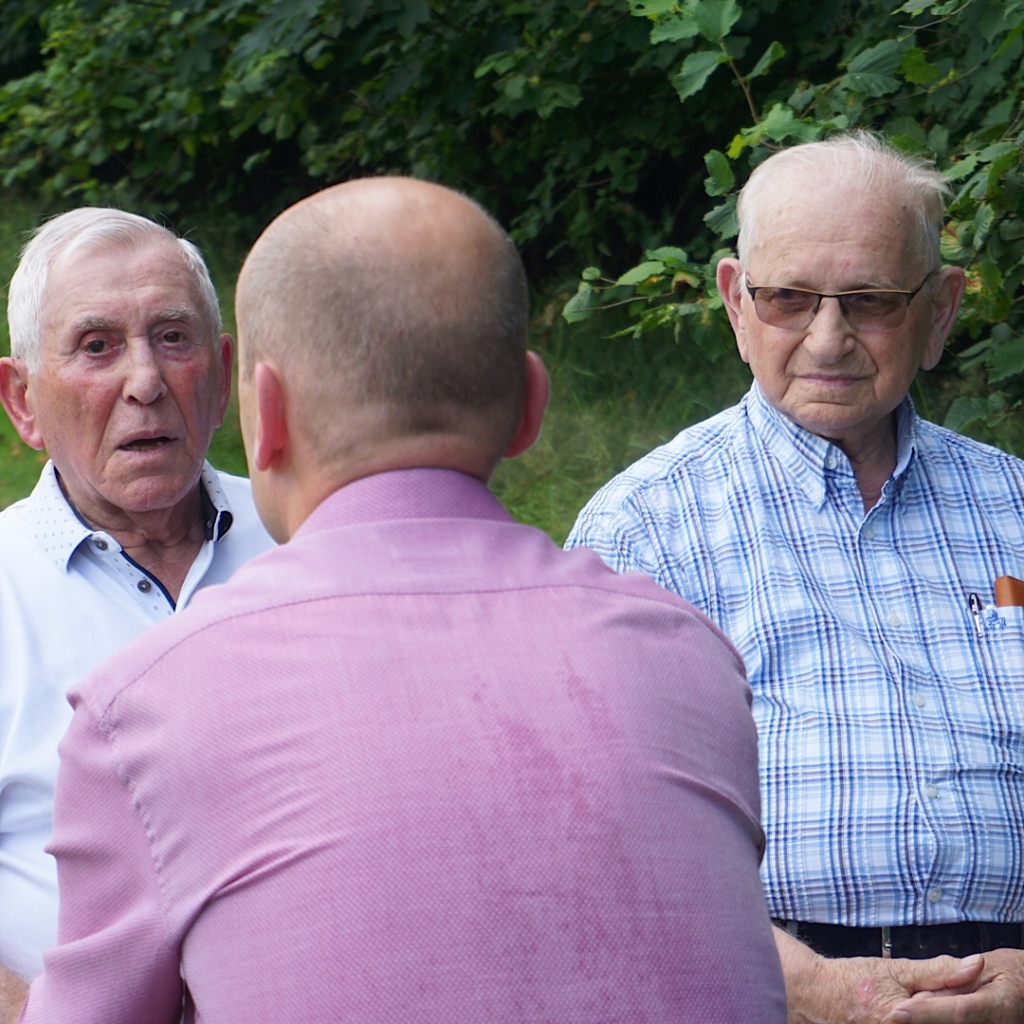
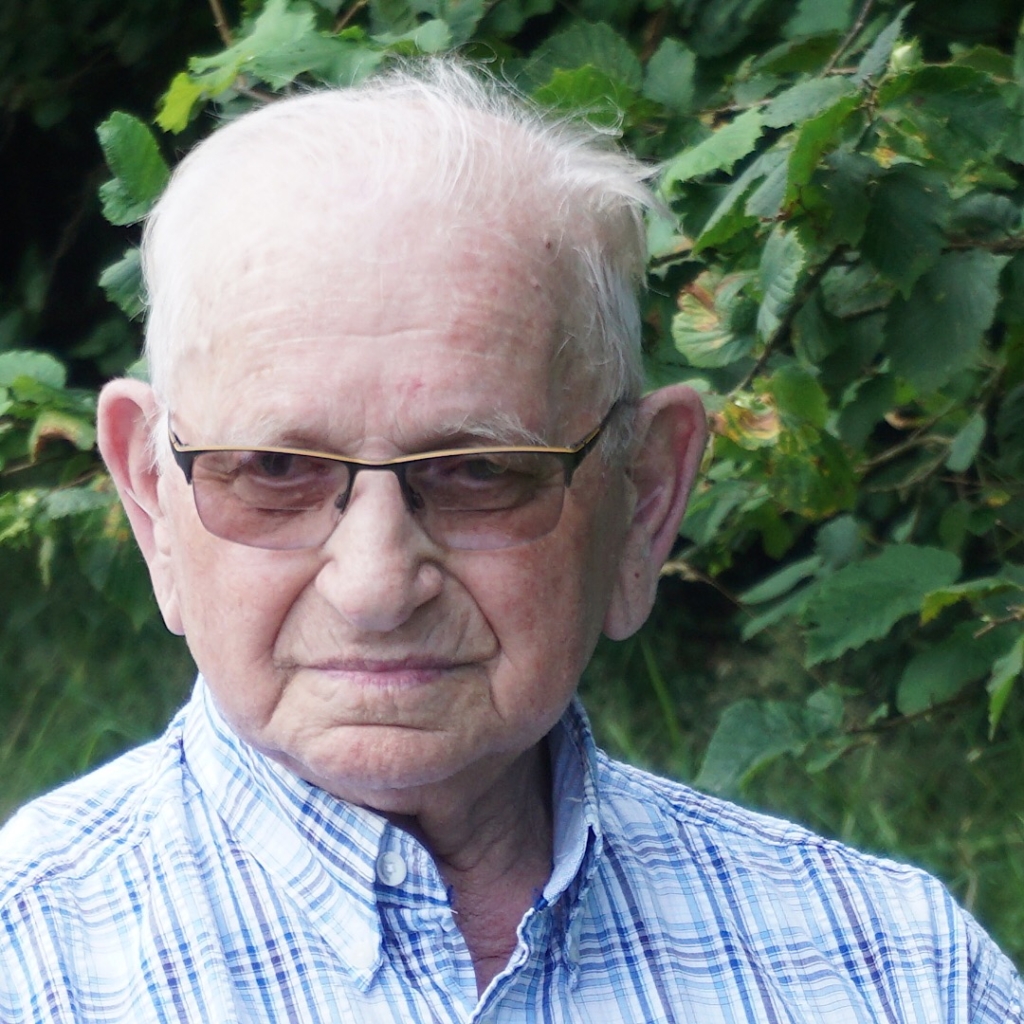
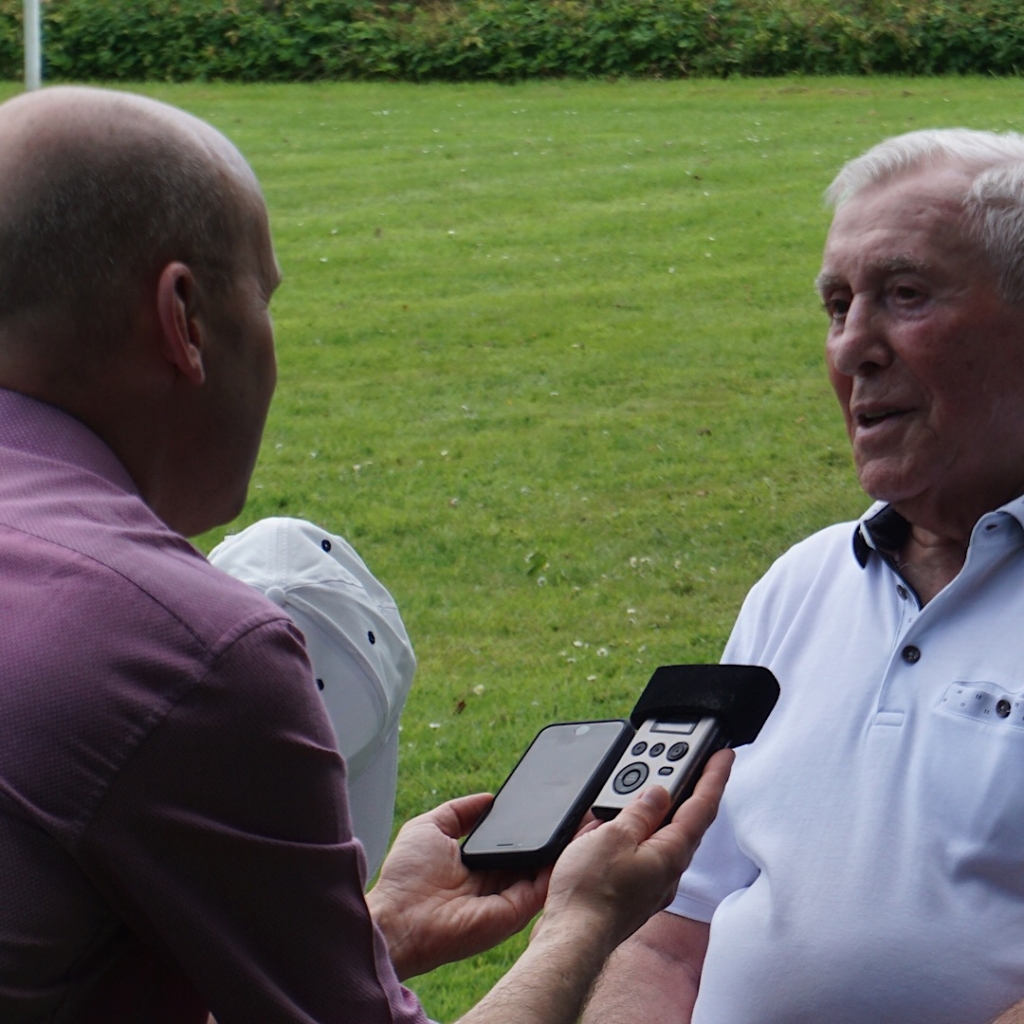
Glen also photographs Ike and Sam by trench 5, although it is touch and go as to whether they push one another in!
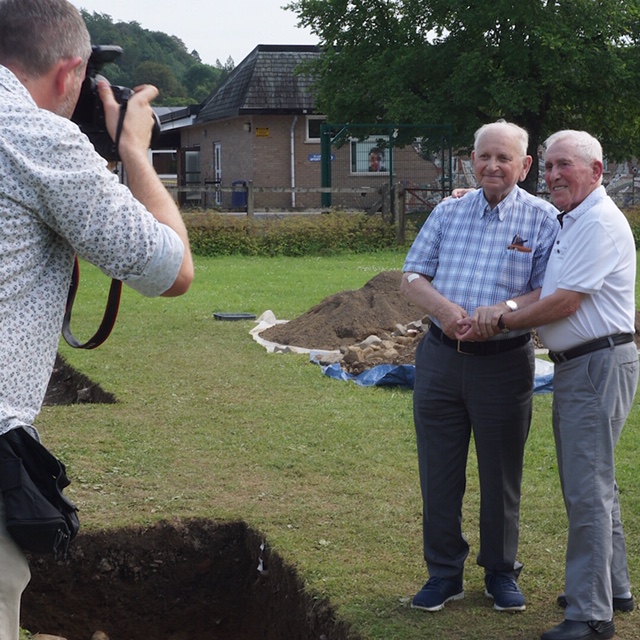
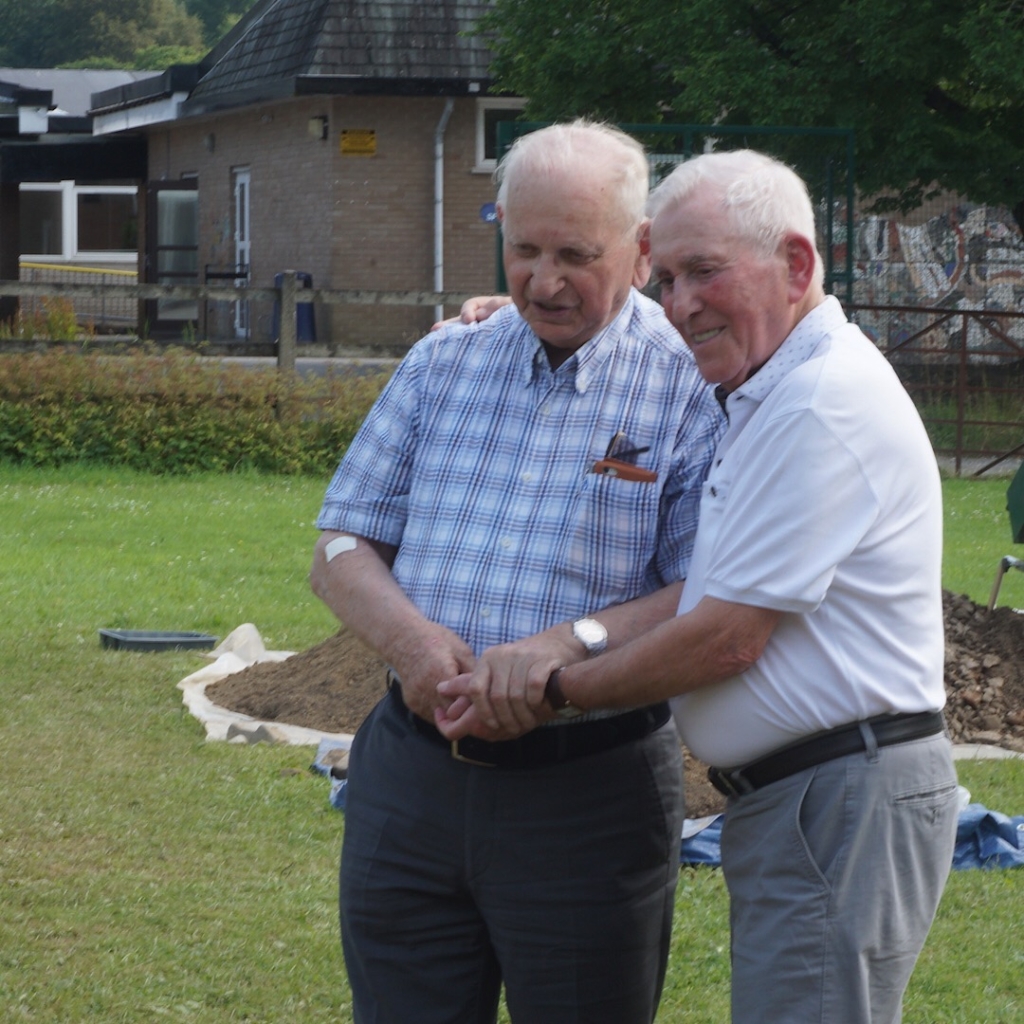
Towards the end of a fascinating day, work finishes on trench 5 with measurements and drawings; Thalia explains her drawing to Sam; Ike is filmed by Sophie for the ‘Digging for Britain’ programme; Tom discusses with Trevor the final shots for his documentary and a tired but happy Denise returns her tools to the sports hall!

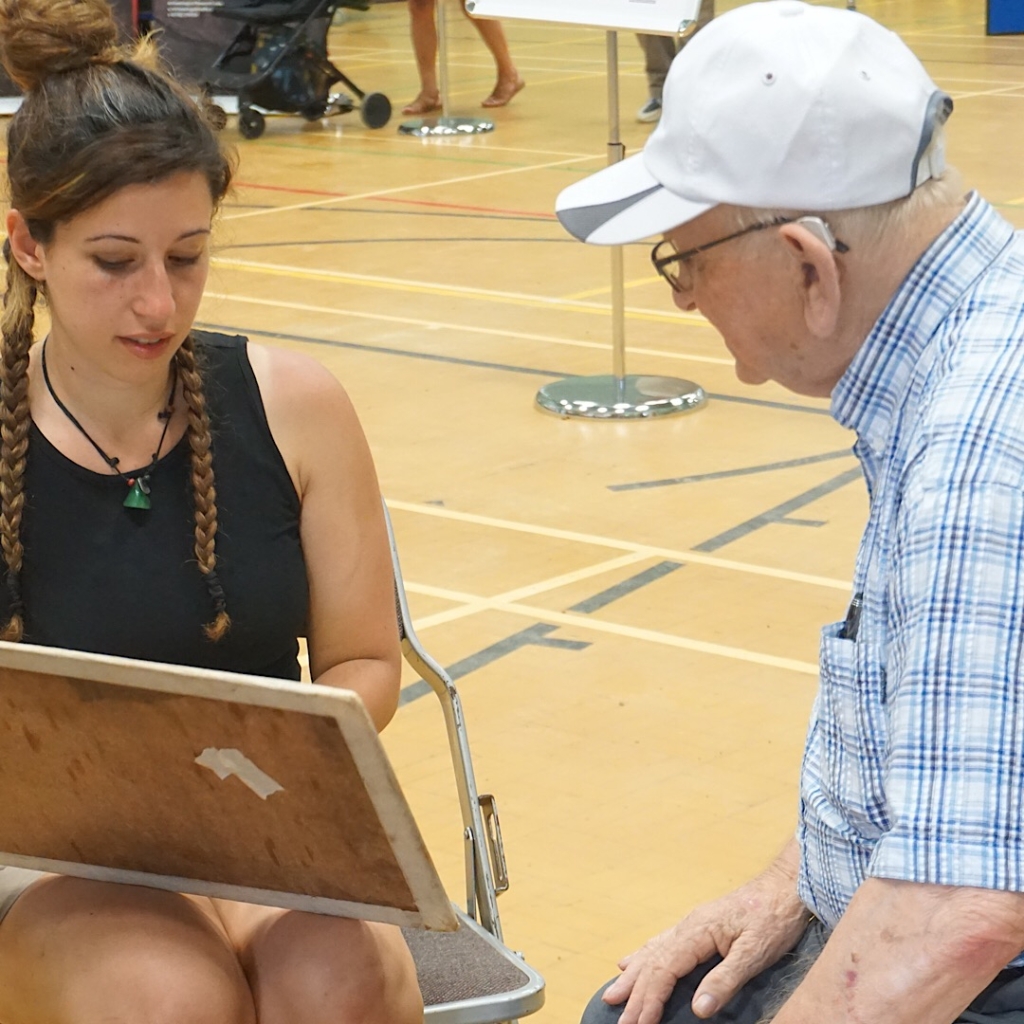

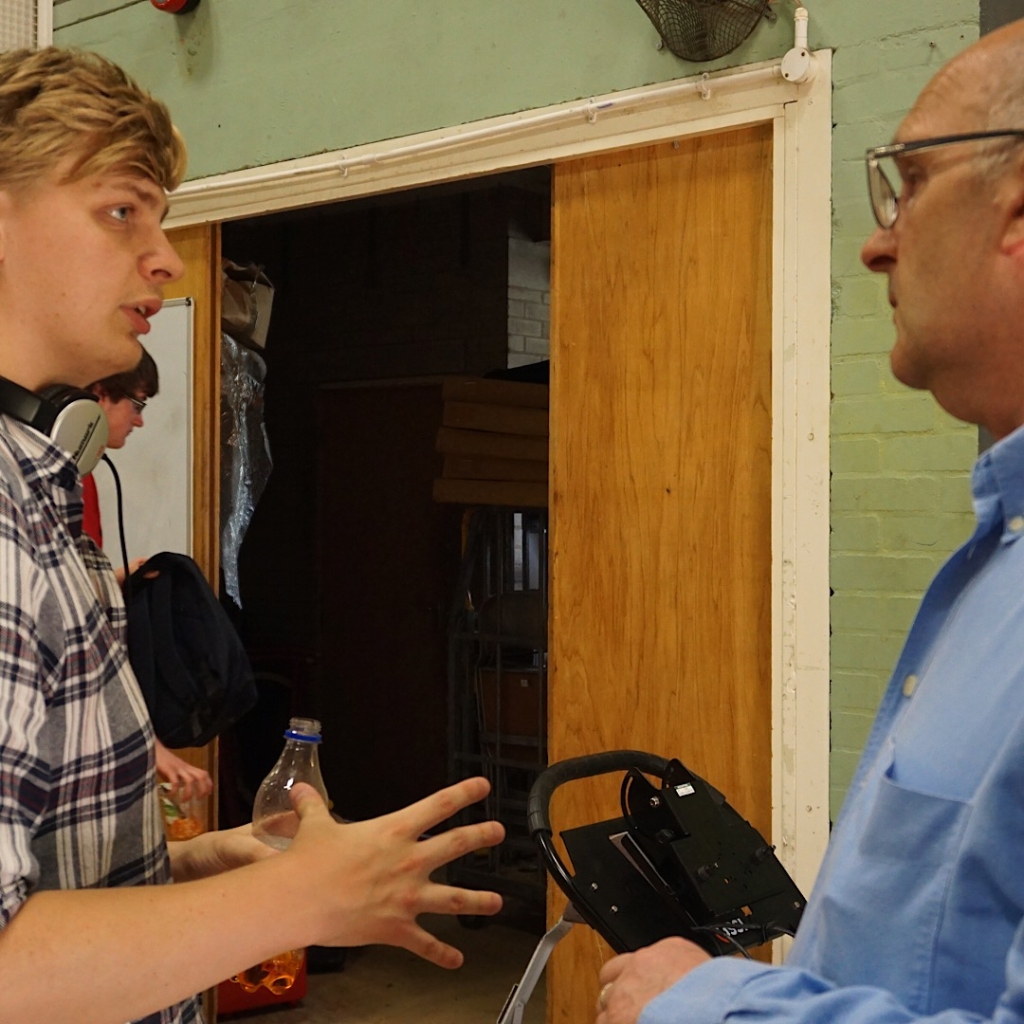

Day 10
Anna Todd and Lynne Murray arrive from Maryport and Barrow with members of their Youth Councils: CJ Birchall, Isabelle Bridgman, Elspeth Dennison, Joss Perie and Clare Rodger. They will be working with Will on a new trench and after the intense heat of yesterday, have come prepared!
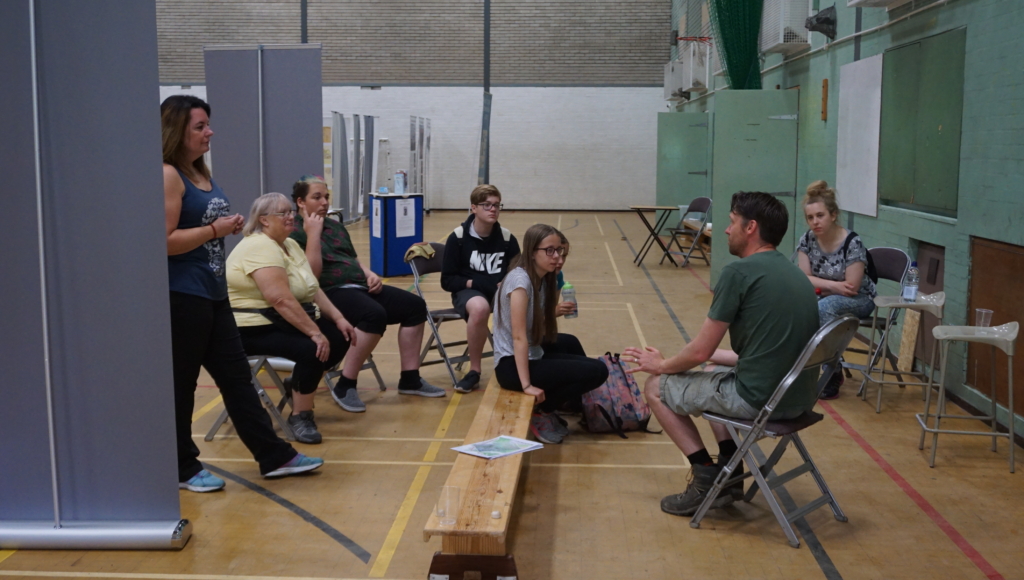
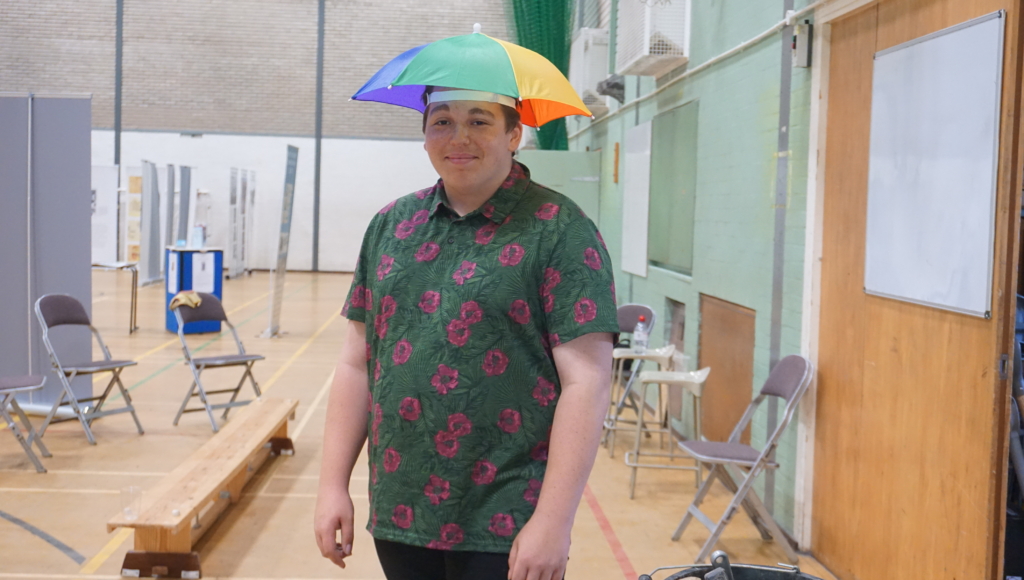
Trench 6 back filled late Thursday.
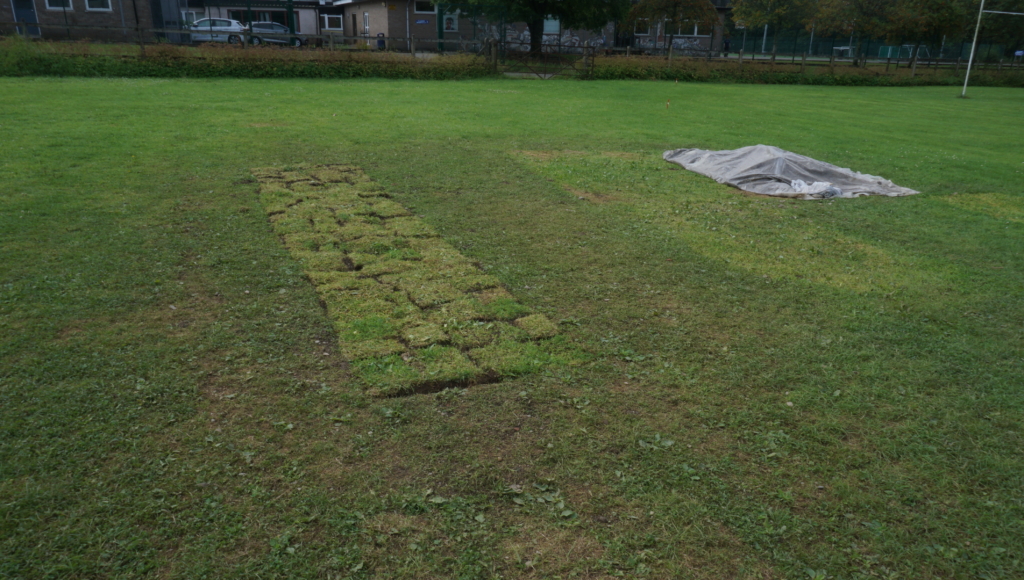
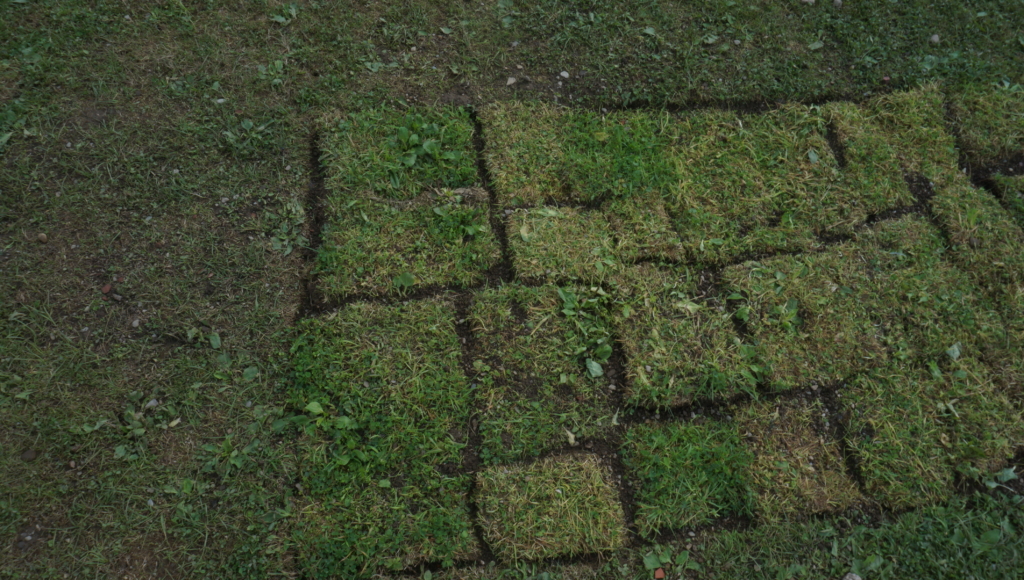
Thaleia and Alex begin to catalogue the artefacts. Each one from each context, and trench or test pit is counted and listed.
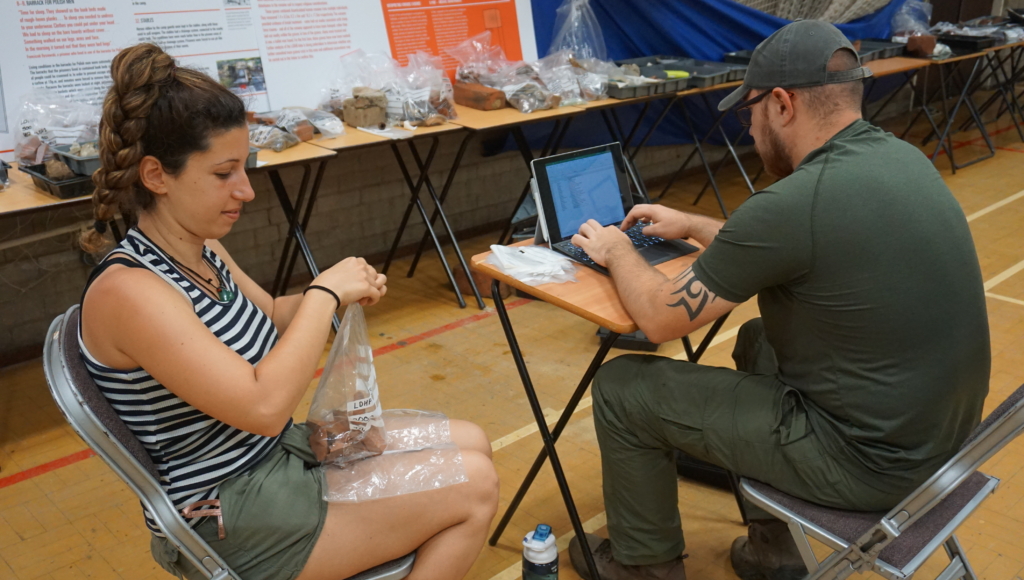

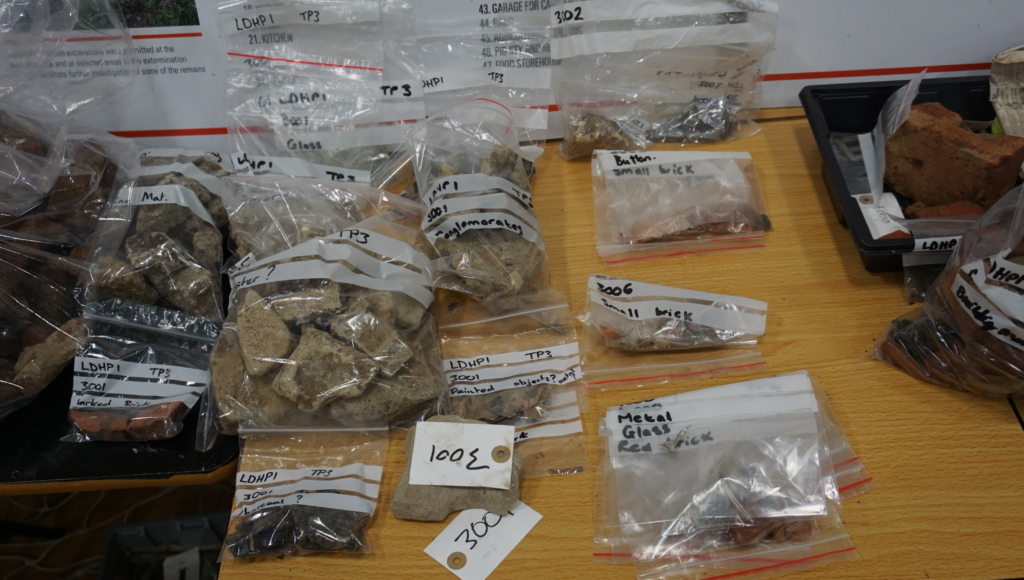
Caroline and some of the students have gone to start a new test pit 9 adjacent to the cricket pitch and find, to their dismay, that all the pegs from a previous measurement and scan the day before have been removed and placed in a neat pile by the school. So they have to start again and Caroline has to check computer readings from the GPR. They are particularly keen to dig in this area as it is probably at the site of another hostel.
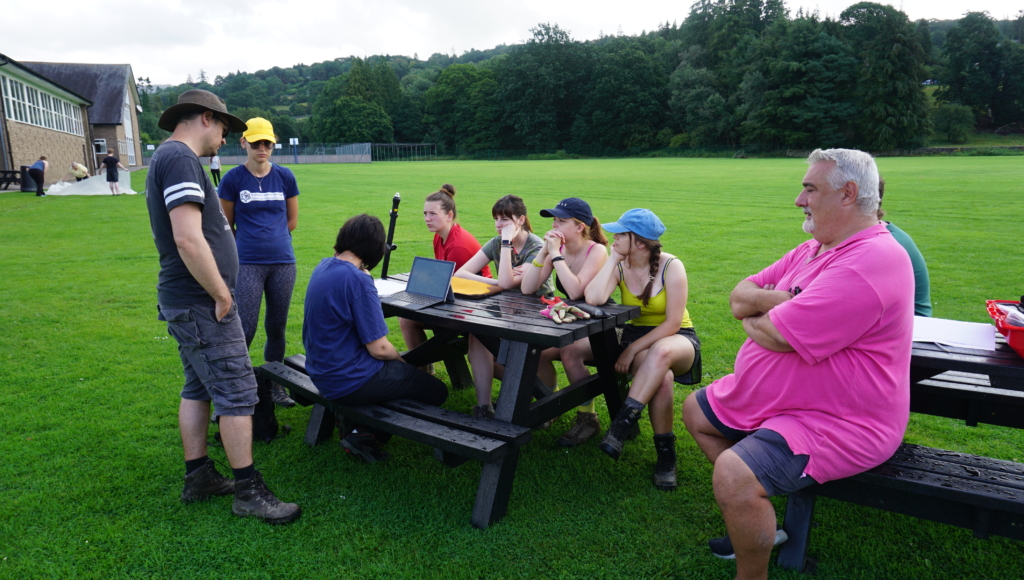
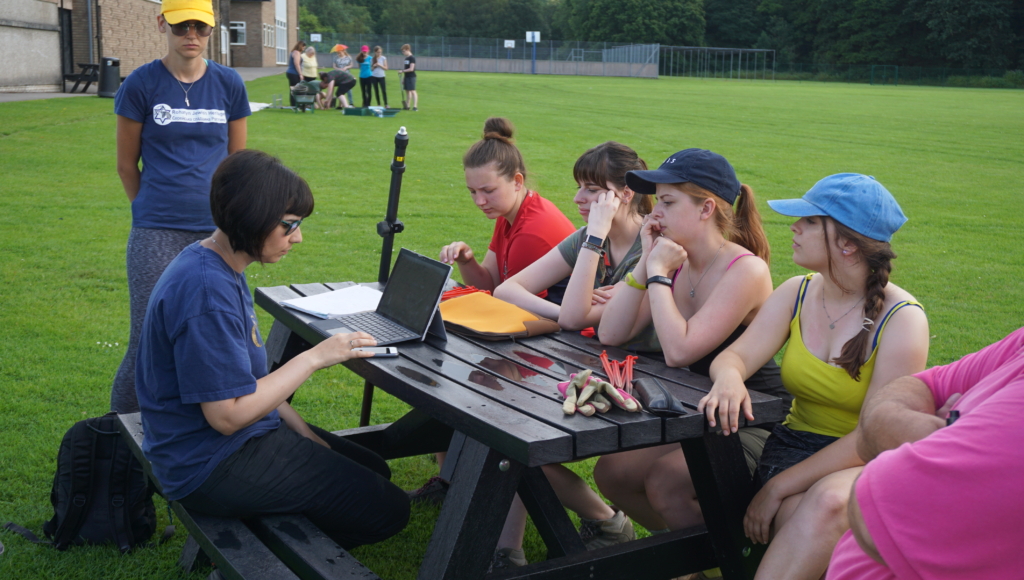
At test pit 8 Will is demonstrating to the volunteers how to cut and remove the turf. This proves to be harder than they realised, but with much effort CJ shows the others how to do it – and avoid killing the worms!

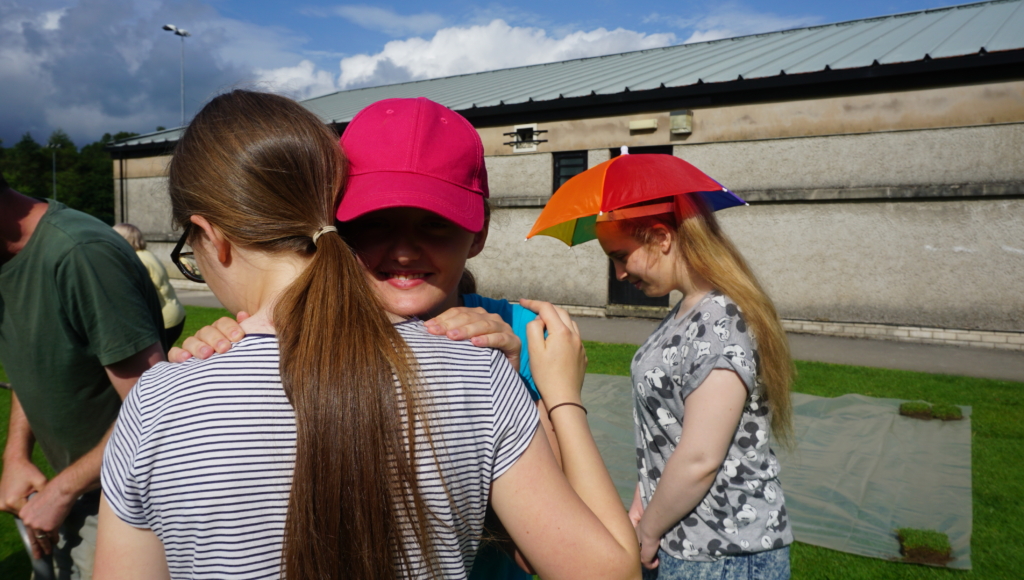
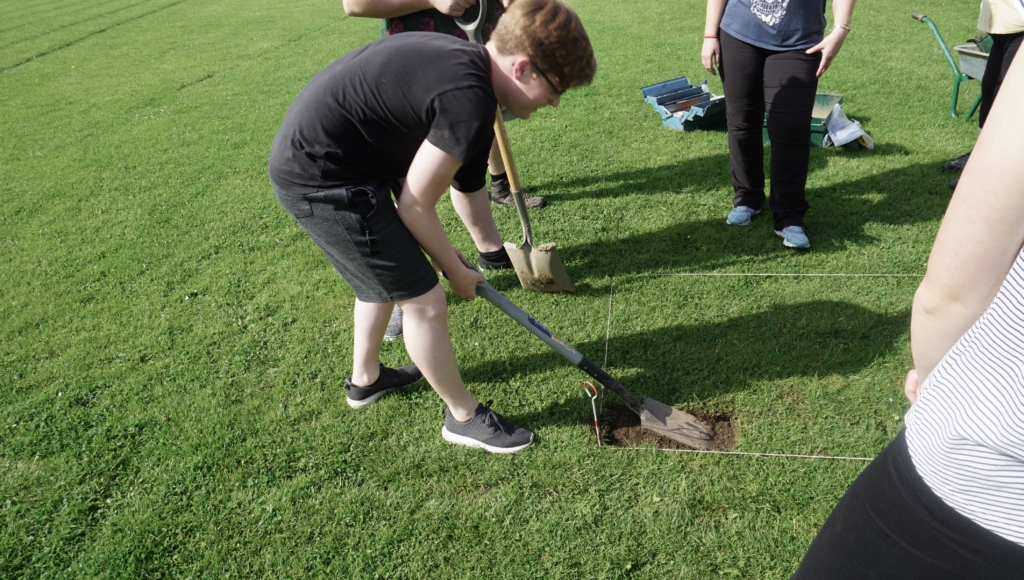
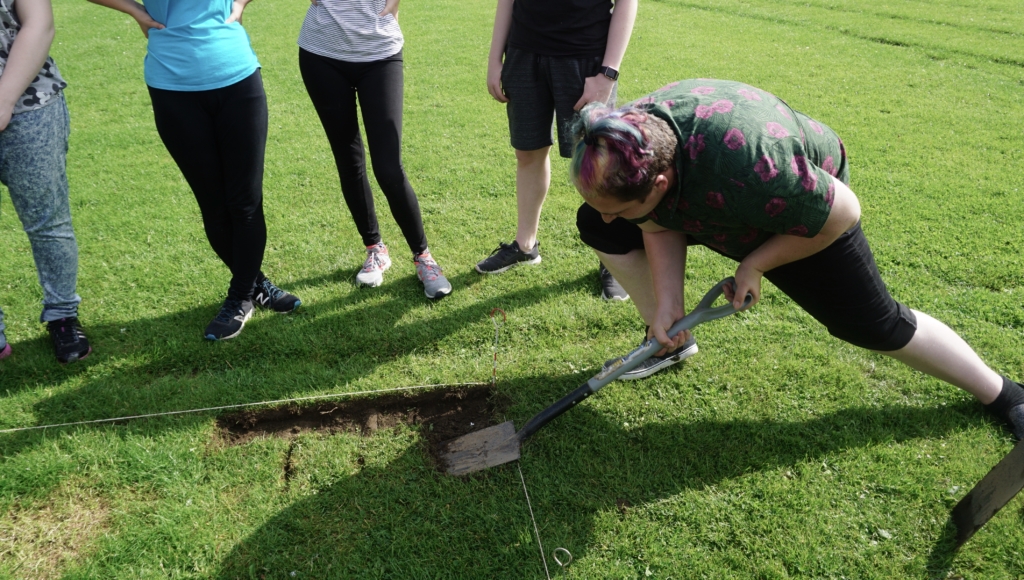
Will and Mick observe, but also decide to speed up the process, and help by starting at the opposite end of the trench.


Meanwhile back in the sports’ field, Katherine and the geography students are starting to backfill trench 7. The larger stones are placed first, then smaller ones mixed with soil, topsoil next and followed finally with turf. To ensure the turf is placed correctly when the trench is filled in, it is always placed, next to the trench in order when removed.
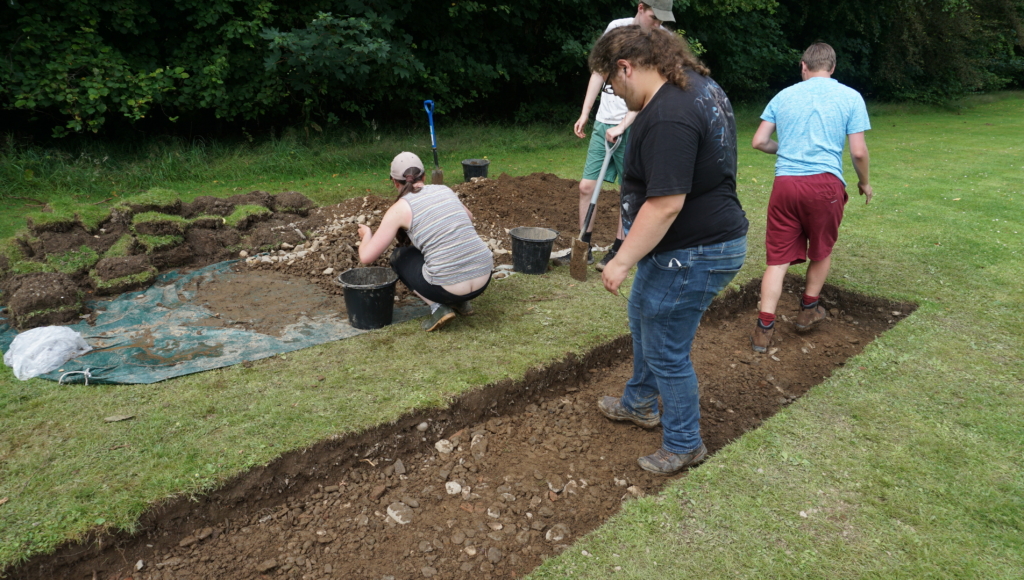
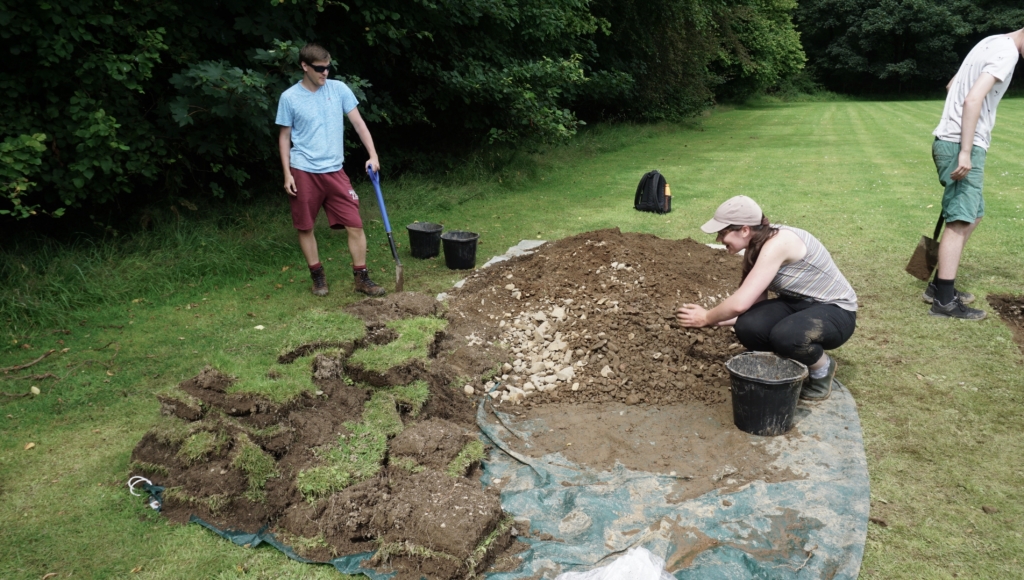
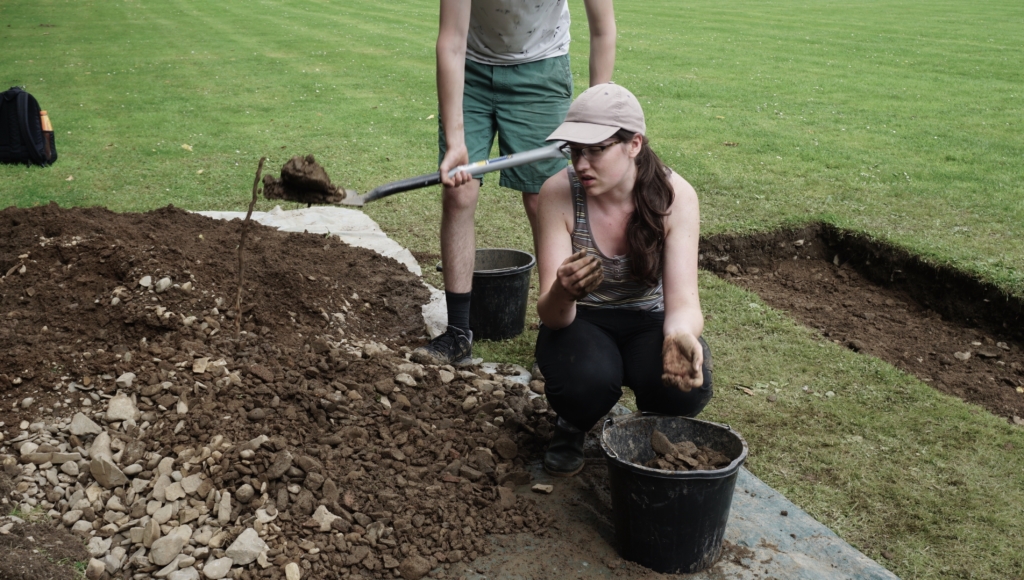
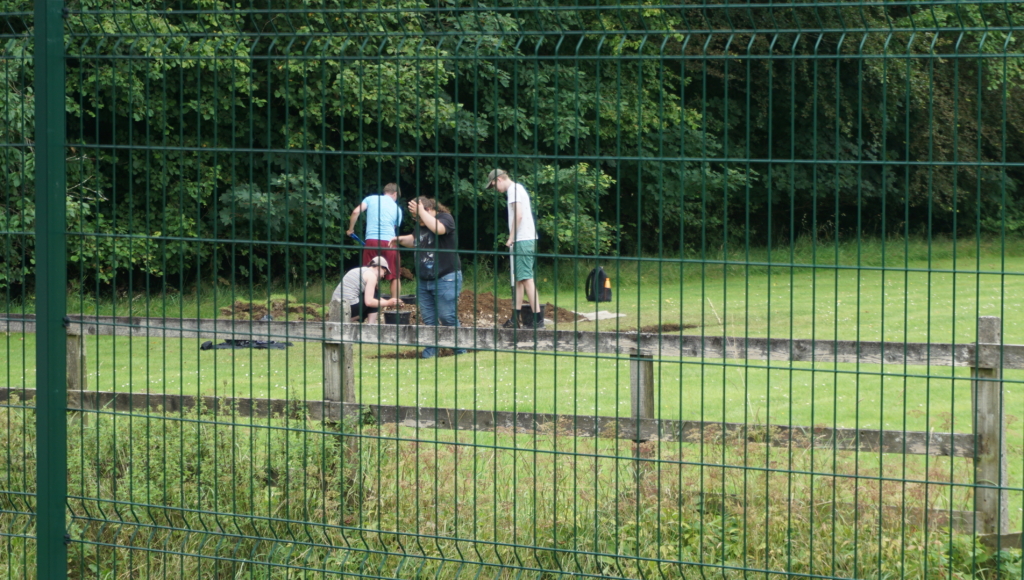
In the other field both the archaeological students (and Joshua from the History department), and the members of the Youth Council have started scraping, removing the soil and sieving at their respective excavations.

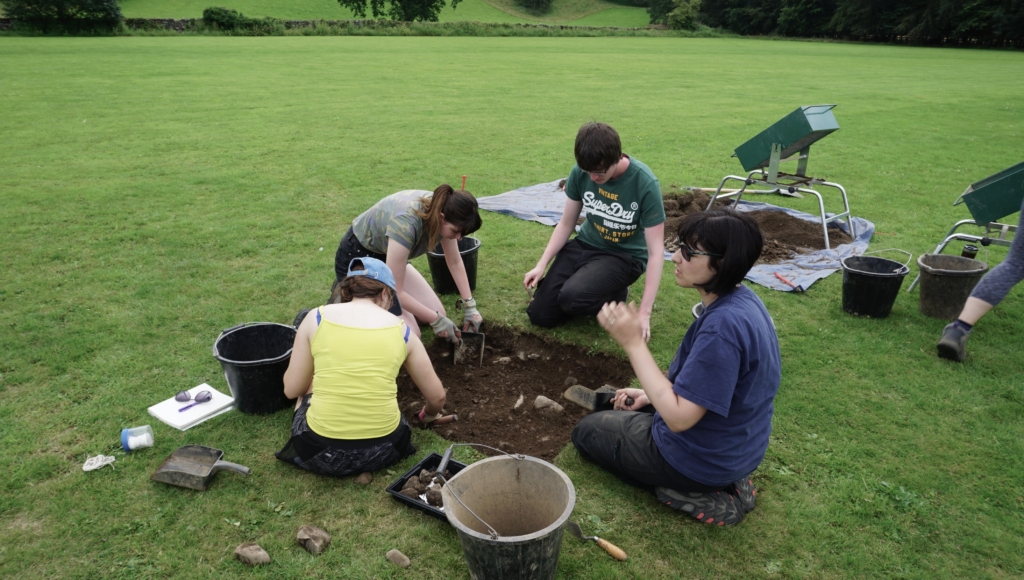
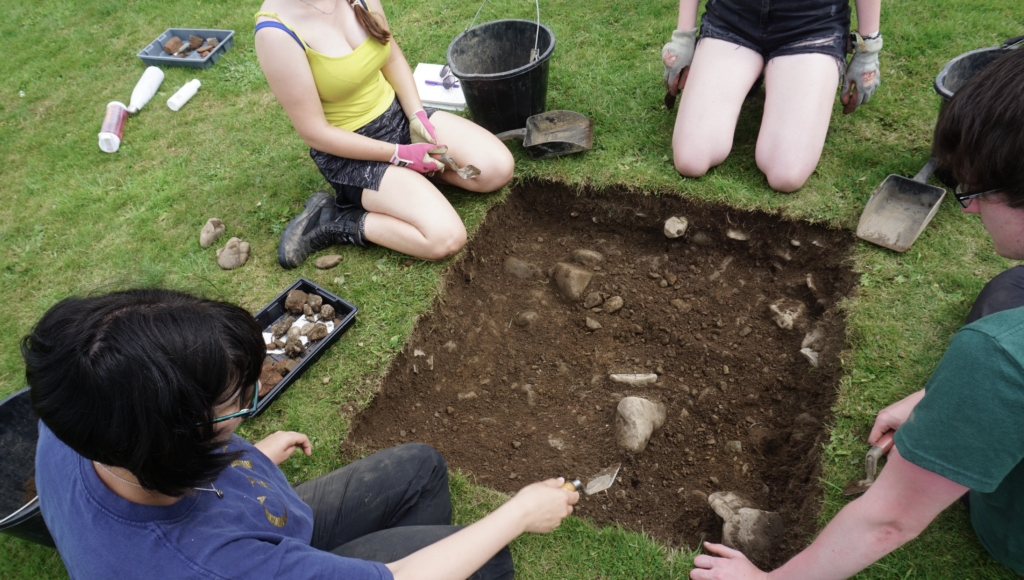
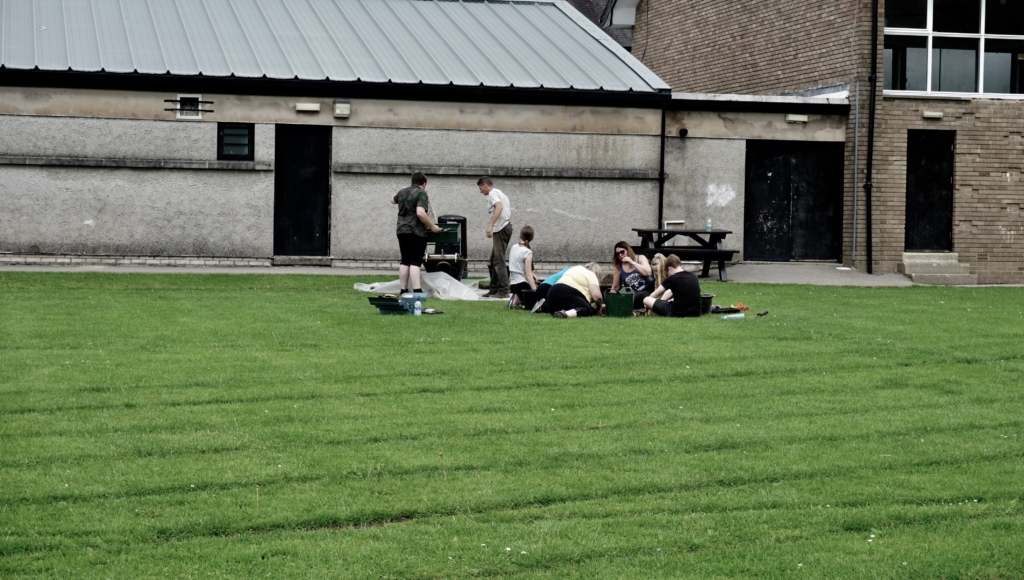
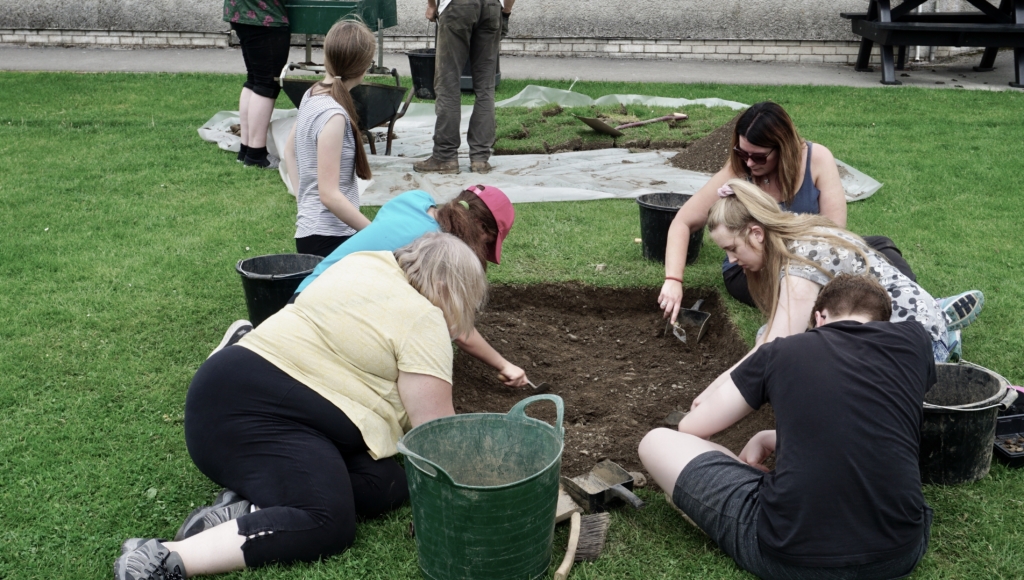

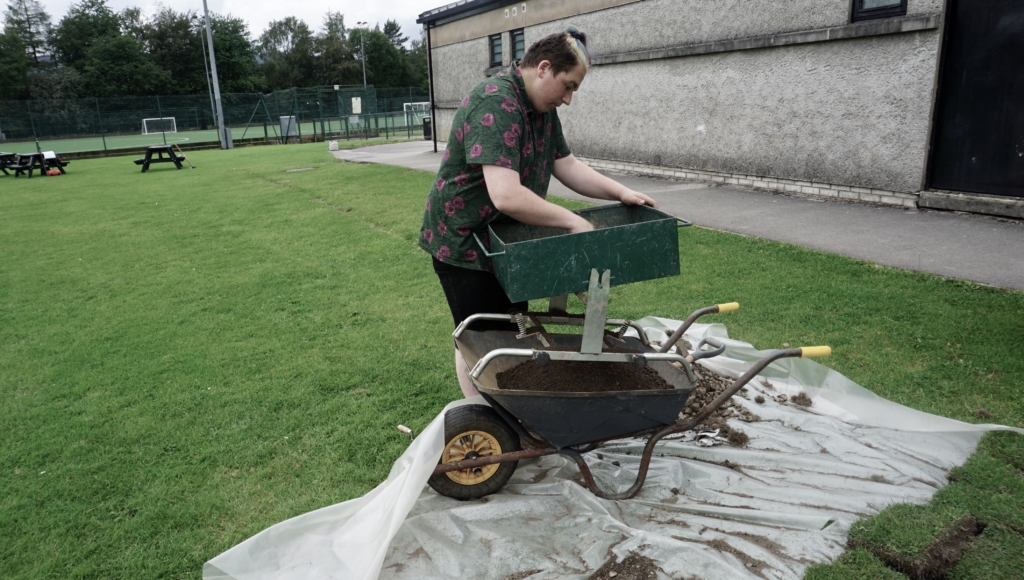
While Mick is lending a hand at both test pits.
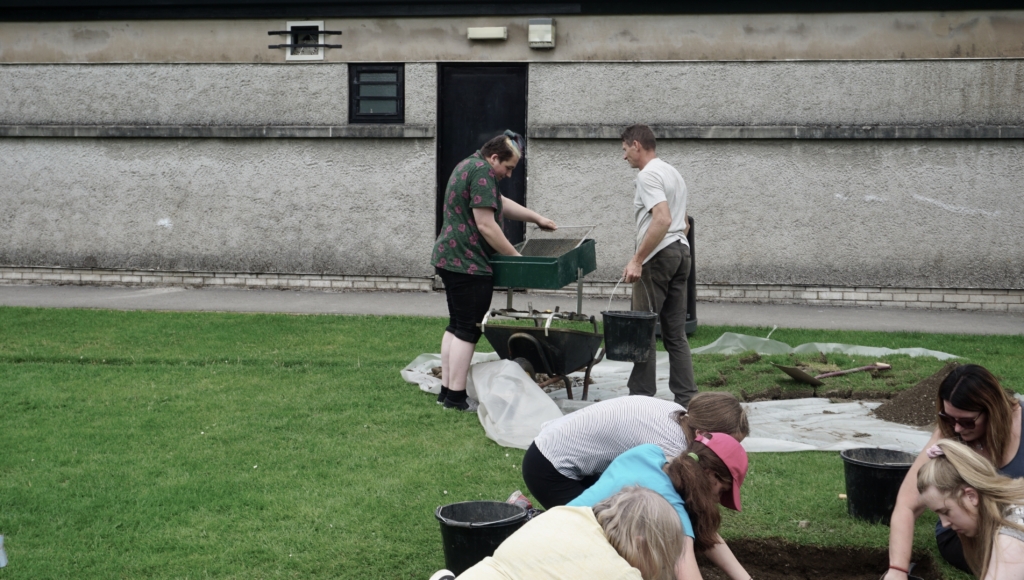
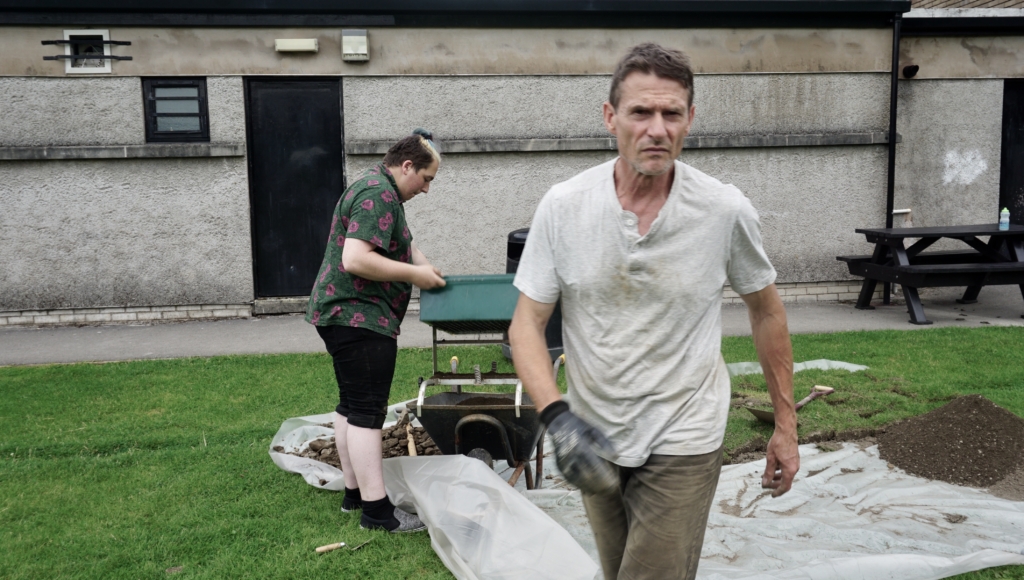

Mrs Elleray returns for another site visit and has a look at the new excavations. There is evidence of broken bricks and other foundation materials.
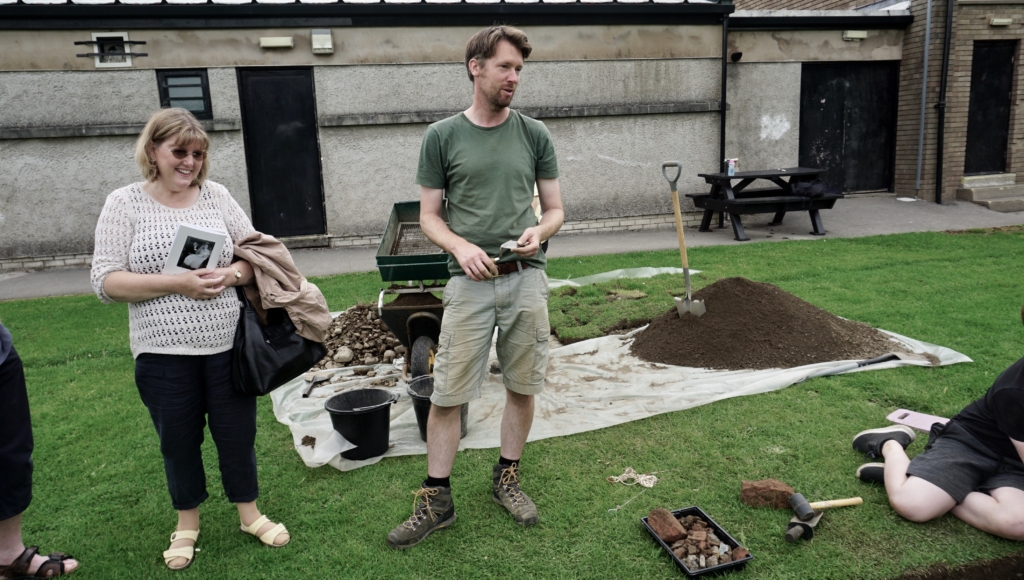
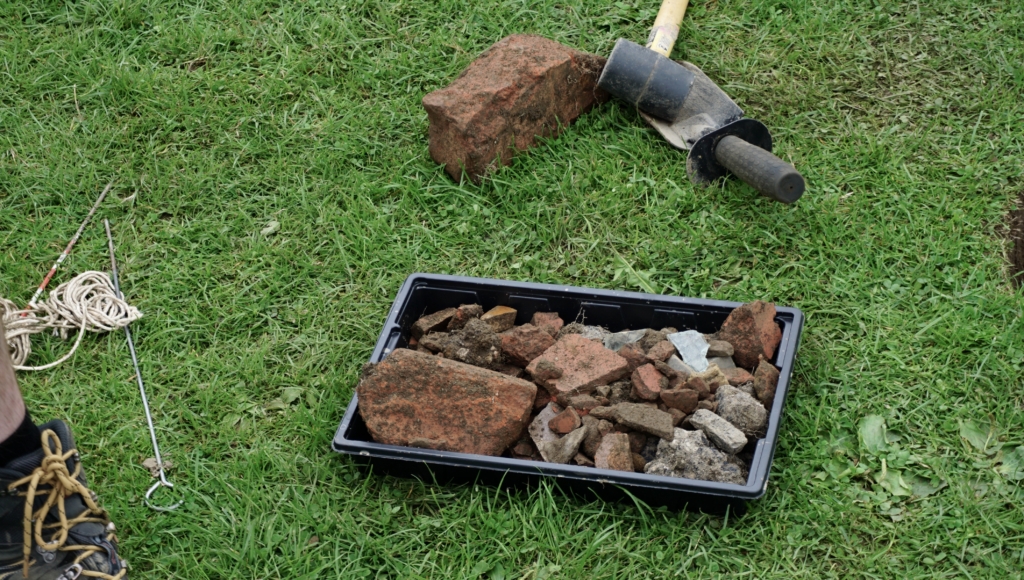
Billie Moffat and his wife Mavis arrive. Billie, with his father, was the agricultural contractor who ploughed and reseeded the land after the demolition of the houses and hostels. “One week there were all bungalows, the next week there was nothing”. Billie meets with Brian Salisbury, a former resident, who returns with more photograph. They reminisce about Calgarth and are photographed by Dave.
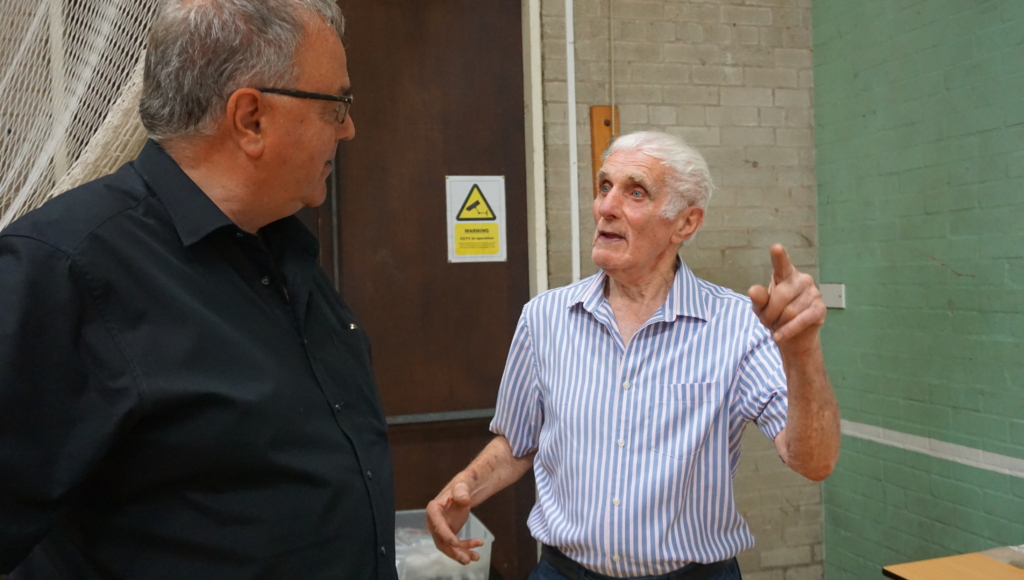

Mr and Mrs Pullin also come to visit the dig and talk with Billie and Mavis. Brian Pullin used to reside at 34 Calgarth Road. Trevor shows the plan of the Estate to Billie and they discuss the sites where the excavations have taken place in the last two weeks, and where the hostels were originally.
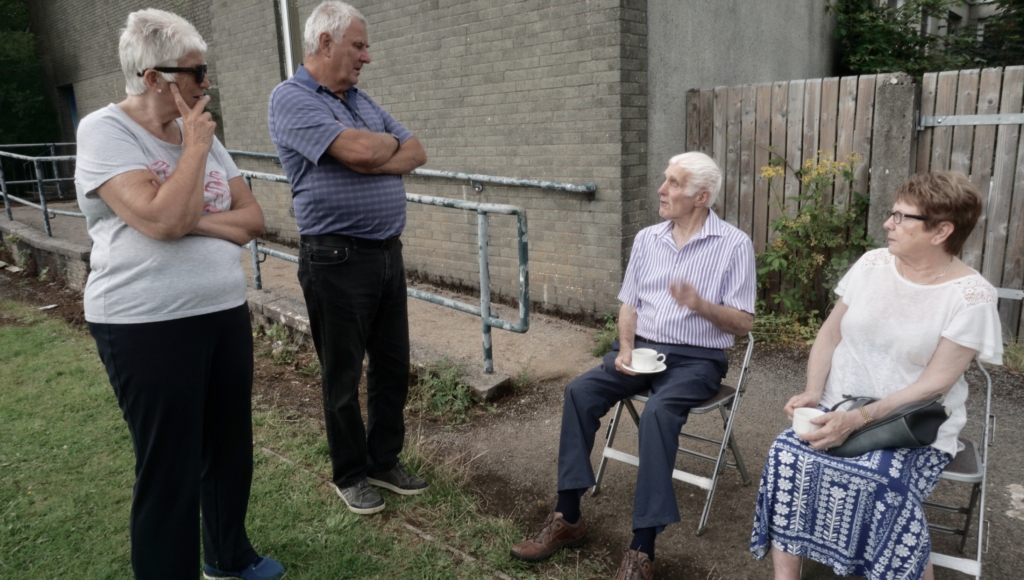
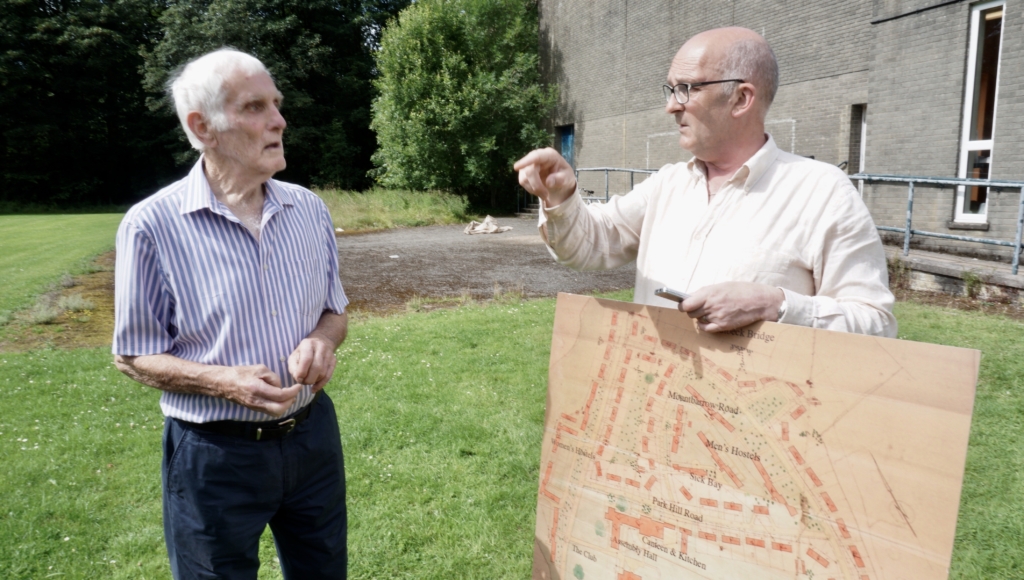
Will and the volunteers return to the sports hall field with the artefacts they have found. Whilst they feel that the 1917 penny is the most exciting item Elspeth found in the morning, they are pleased to learn that the evidence of other foundation artefacts are equally important. CJ holds up one of the large bricks.
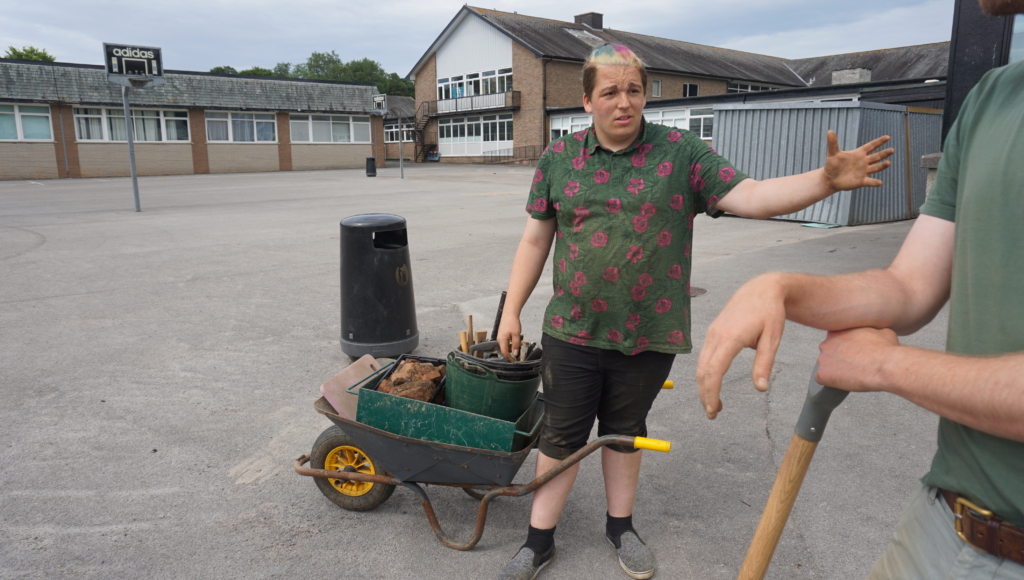
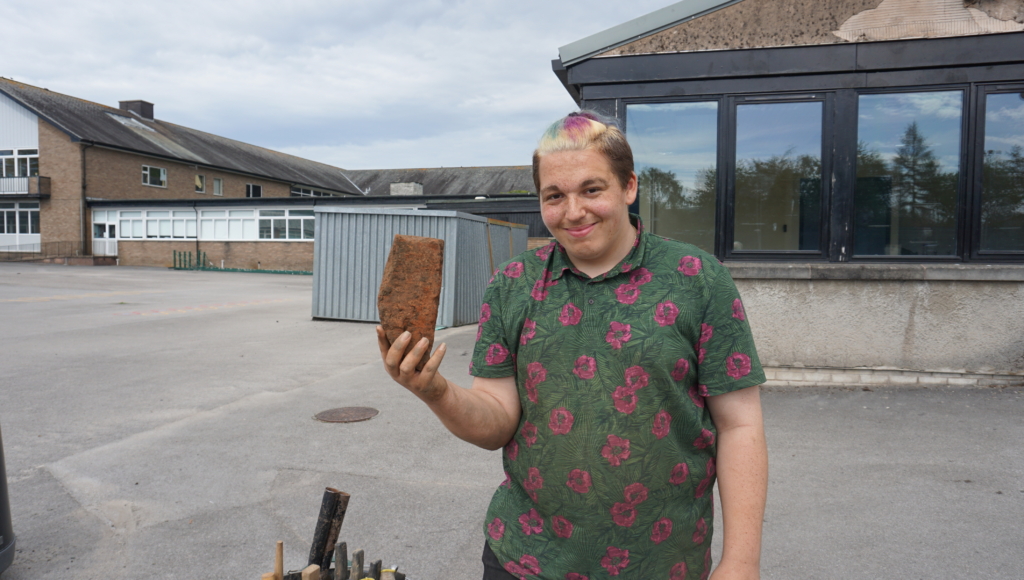
James, the Lakes School’s site manager, meets Billie and the volunteers are hard at work brushing, cleaning and washing the artefacts.
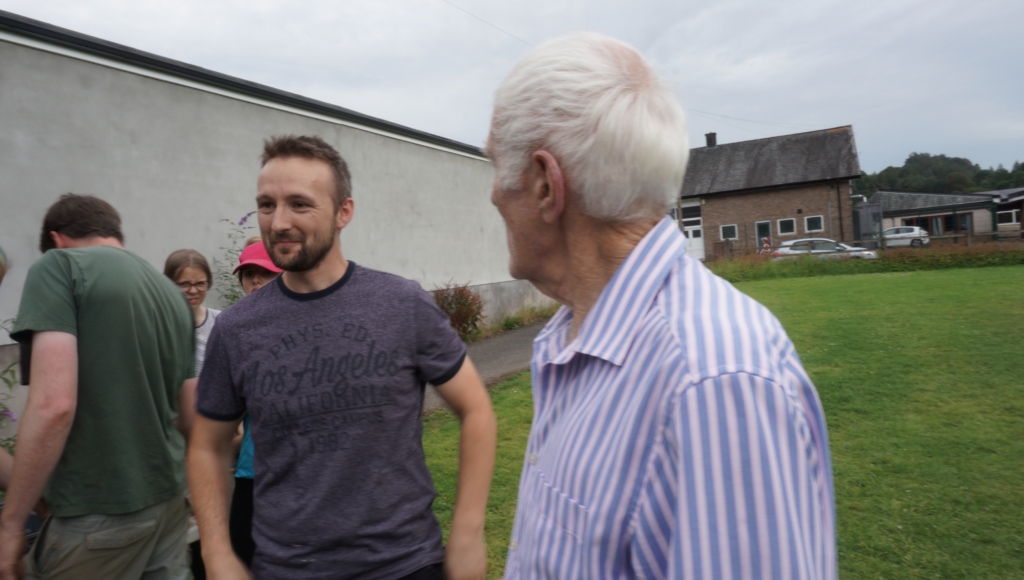
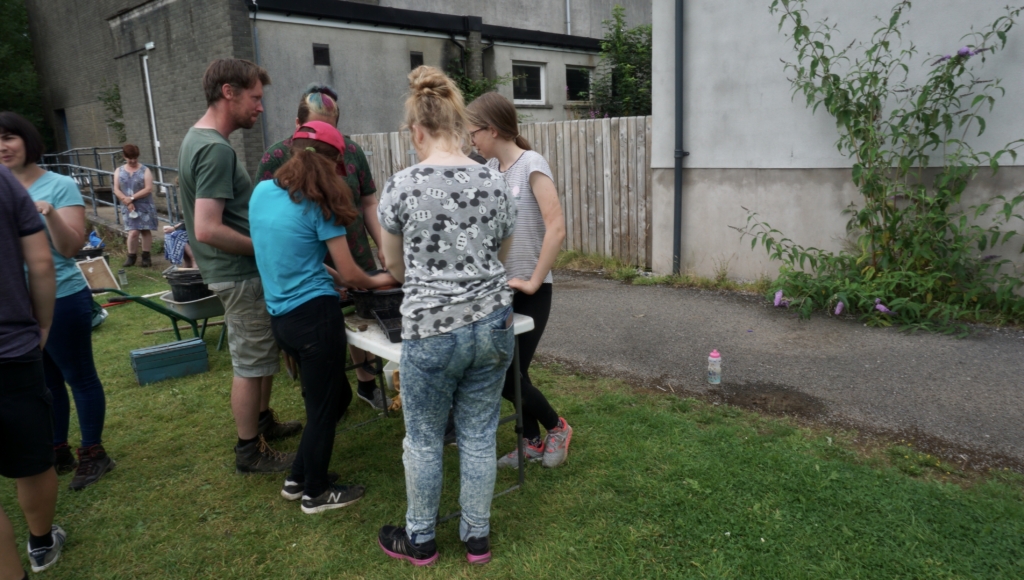
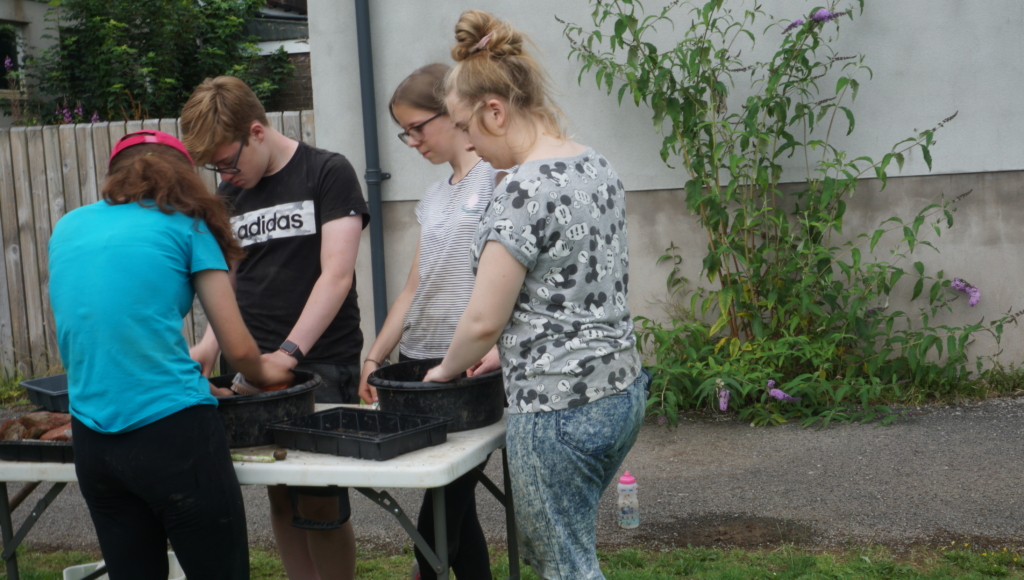
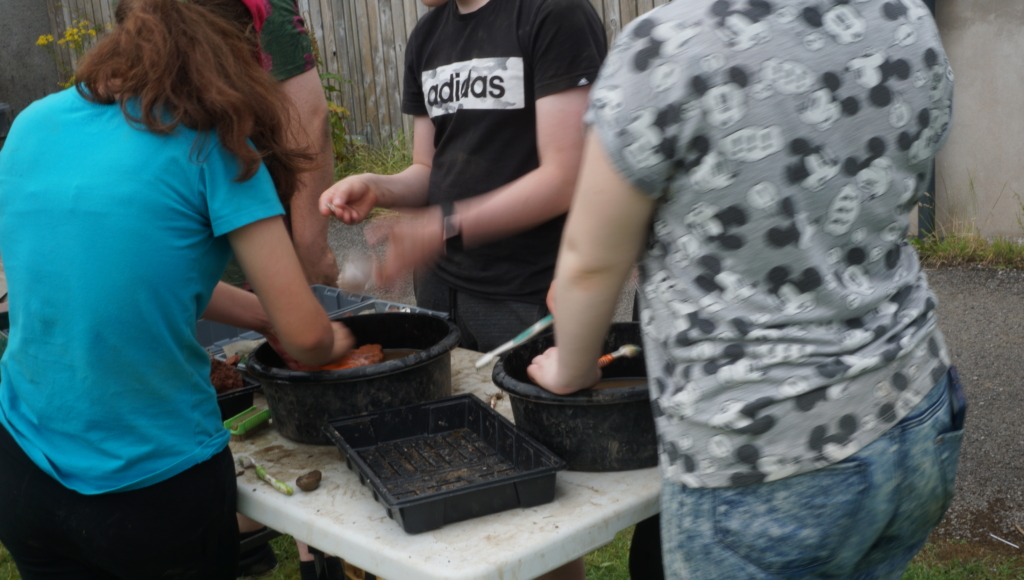
It’s late afternoon and Caroline takes the students to visit the Lake District Holocaust Project Exhibition at Ellerthwaite House in Windermere.
Day 11
Saturday morning and the final day of the excavation. Test pit 9 was finished late yesterday and further excavating continues at trench 8 with Daria, Will and the geography students.
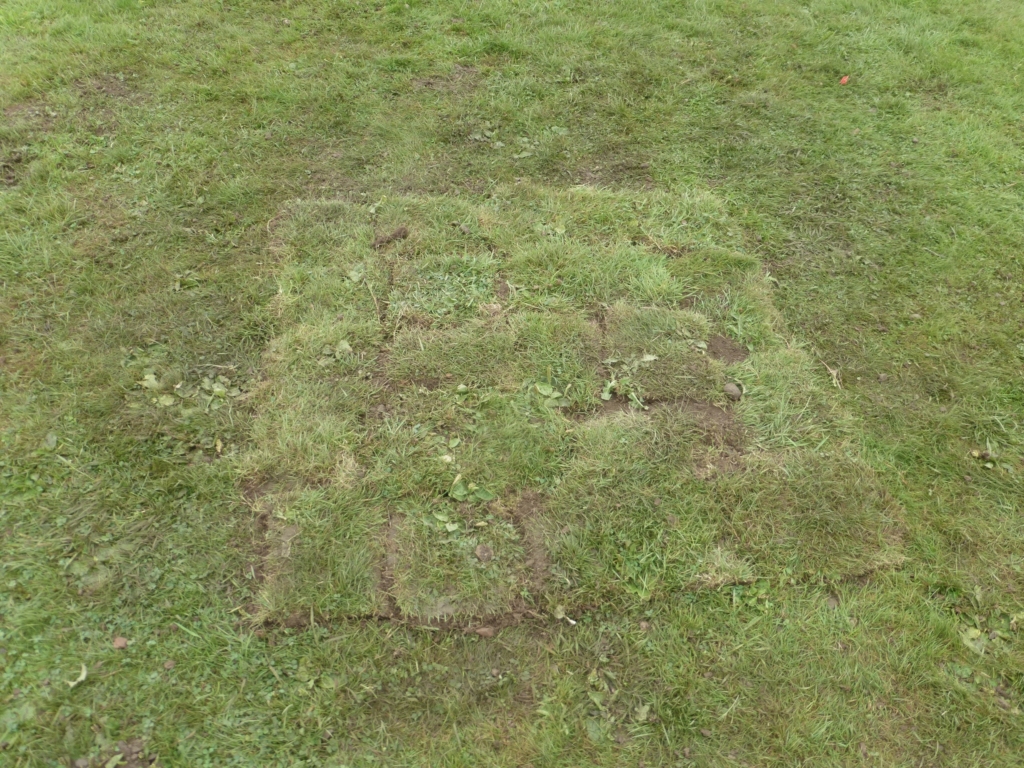
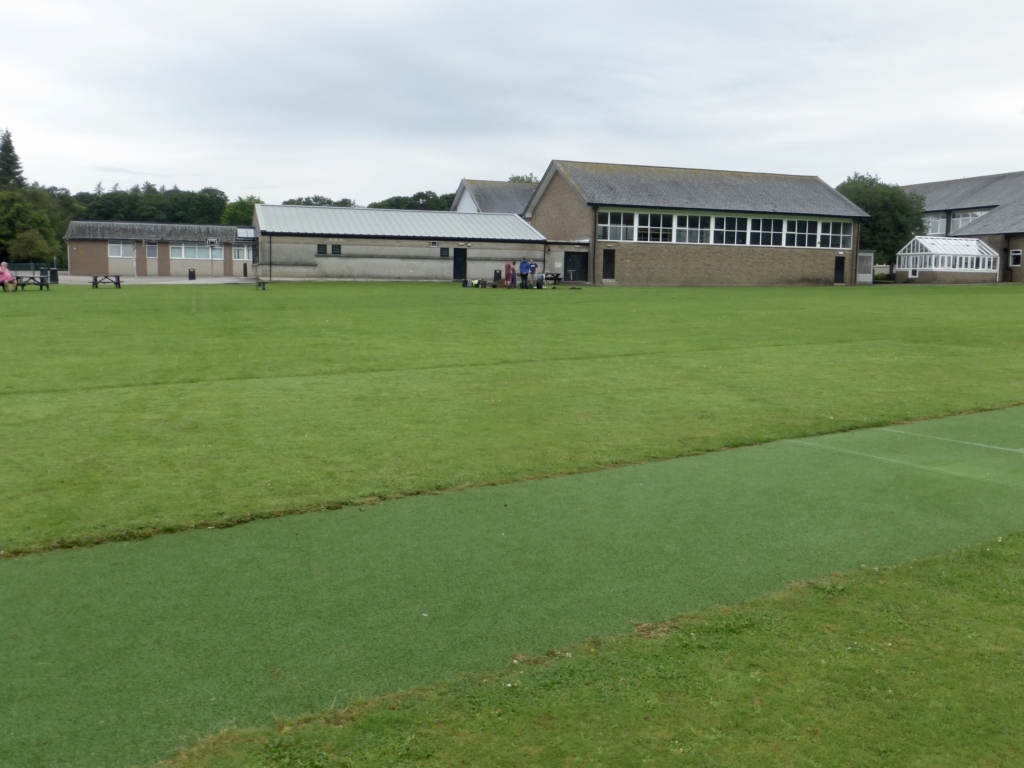
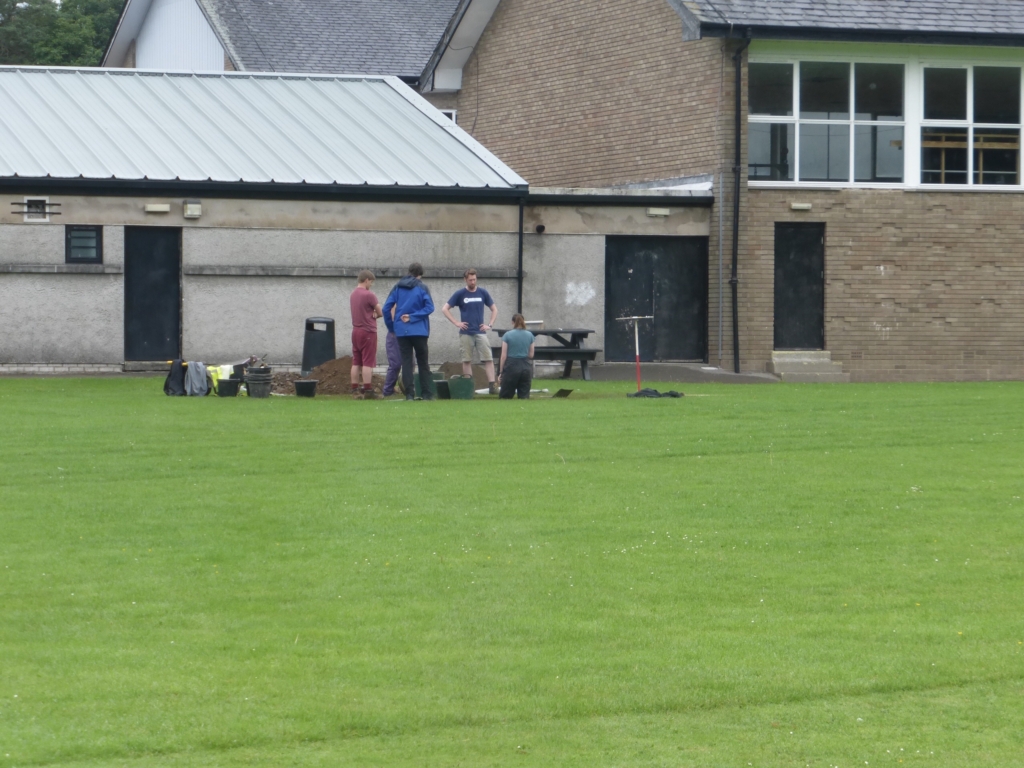
Will is having to work hard to loosen the soil and Daria demonstrates how she removes it with a shovel.
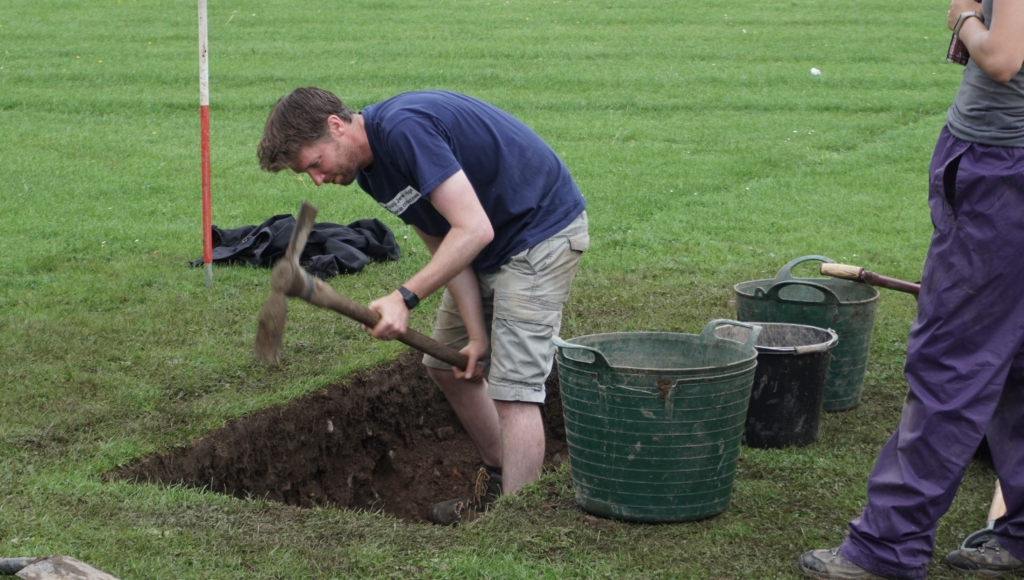
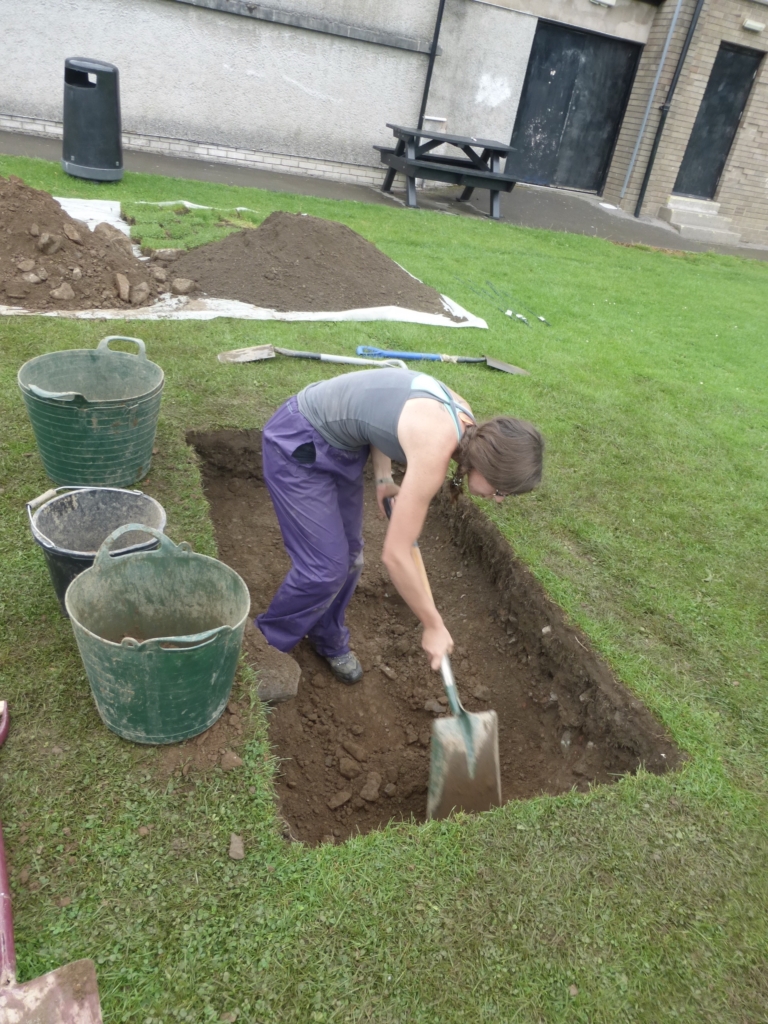
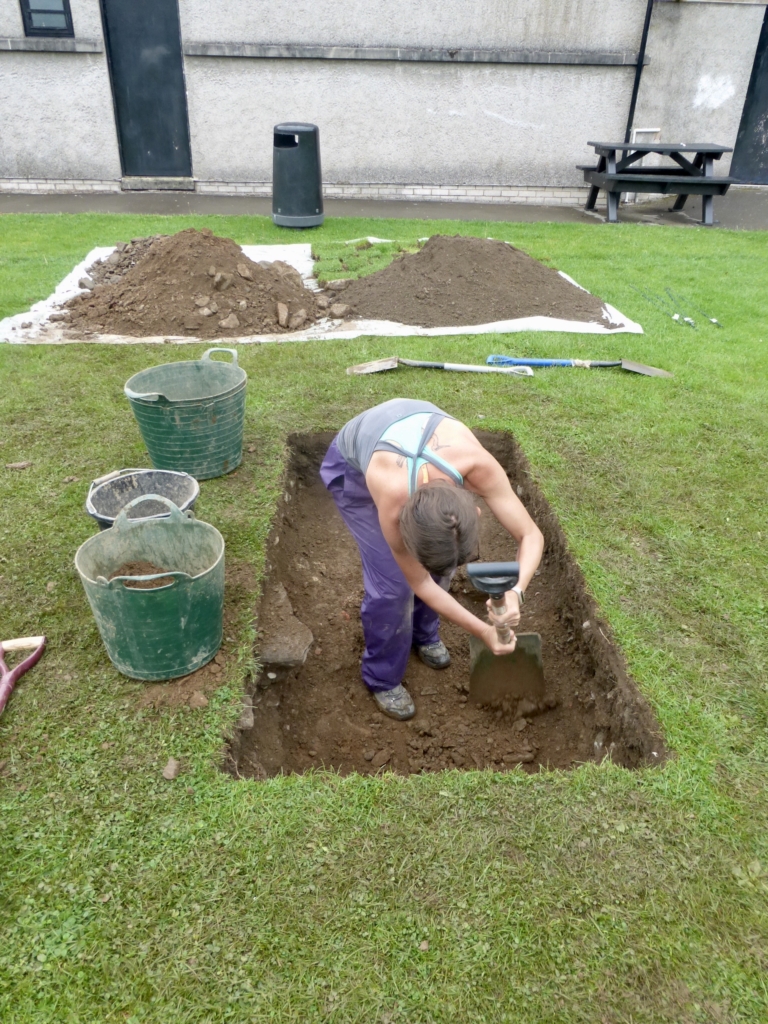
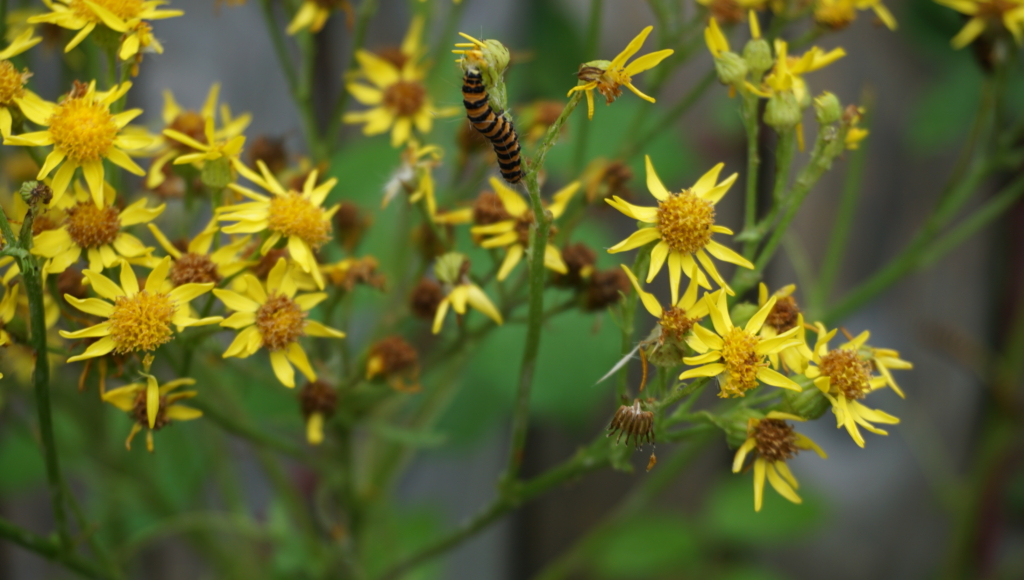
The cinnabar caterpillars have returned to eat the ragwort, but at archaeological HQ all the artefacts have been sorted and displayed into similar materials/artefacts found in different test pits, trenches and context……

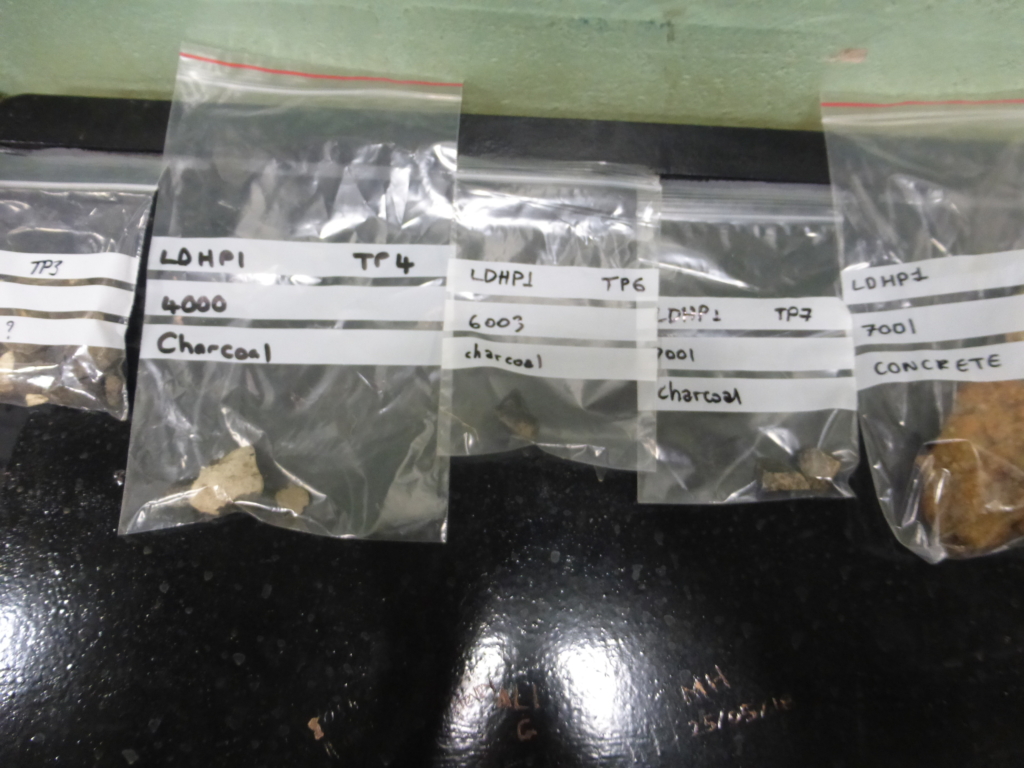
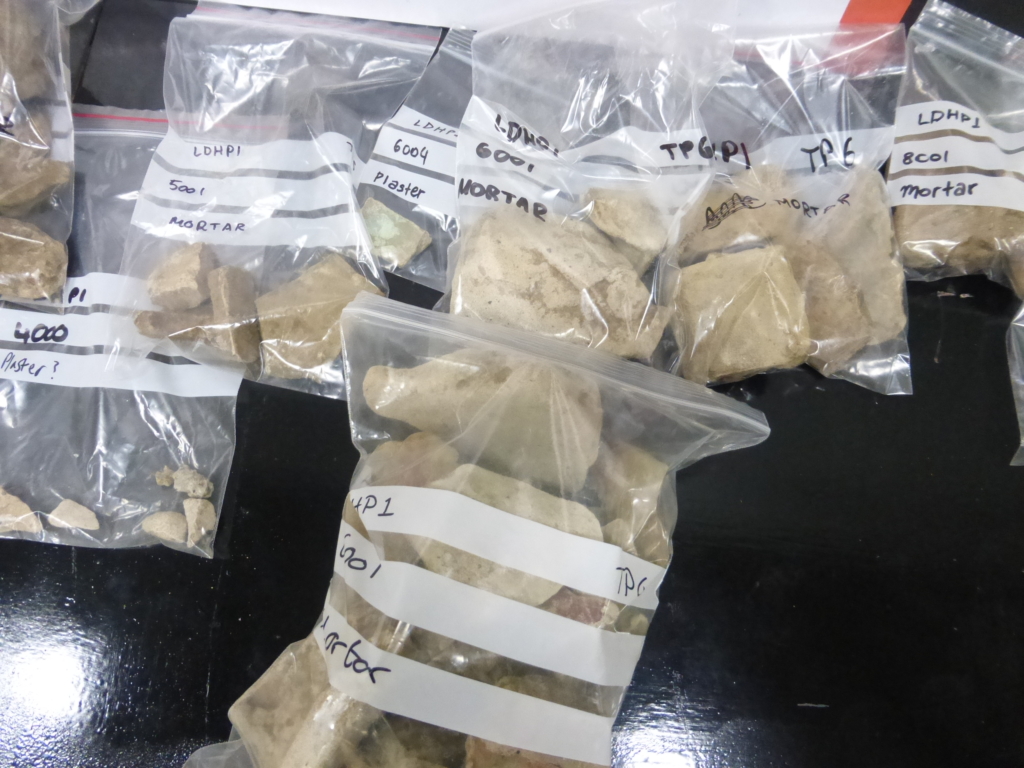
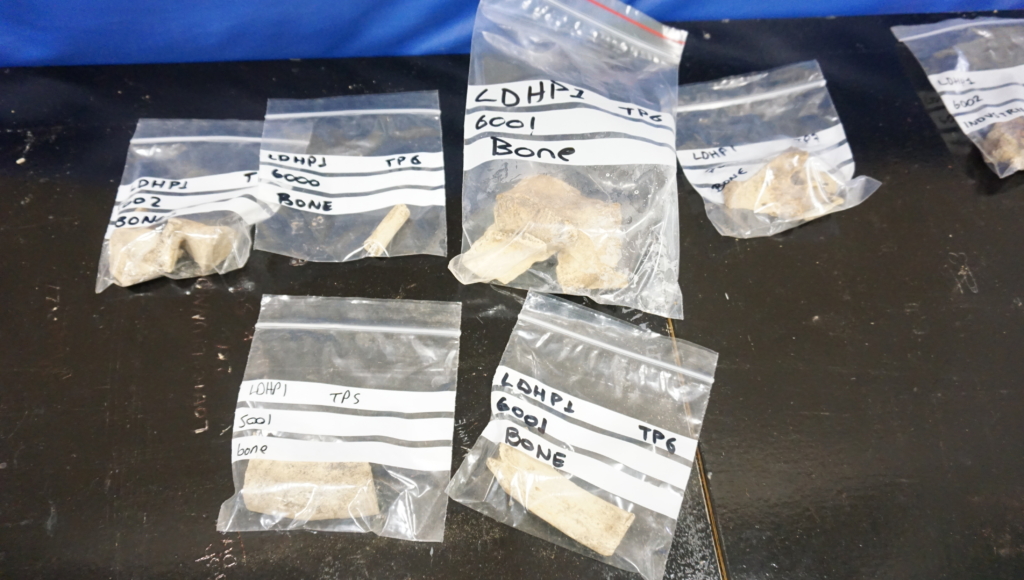
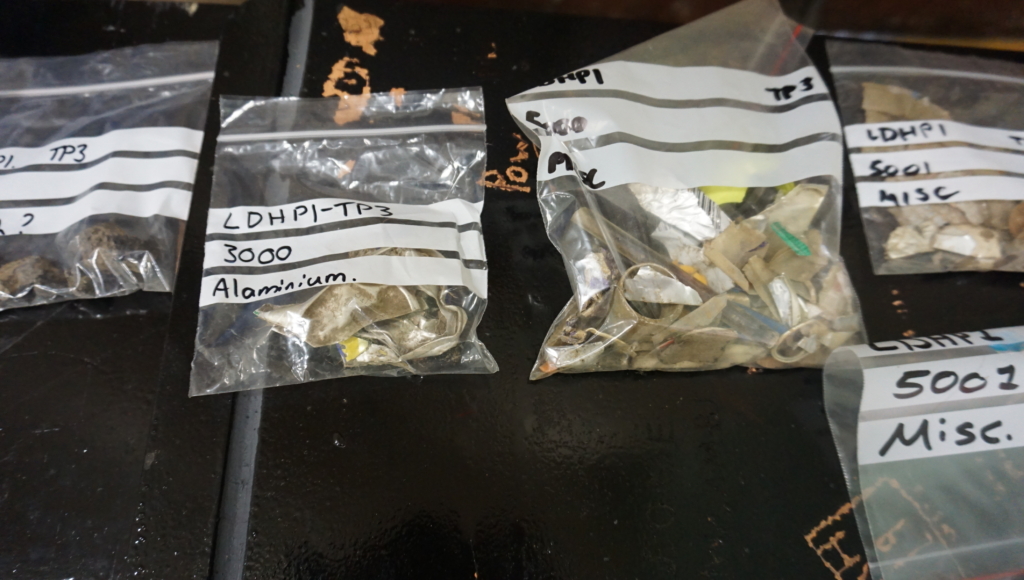

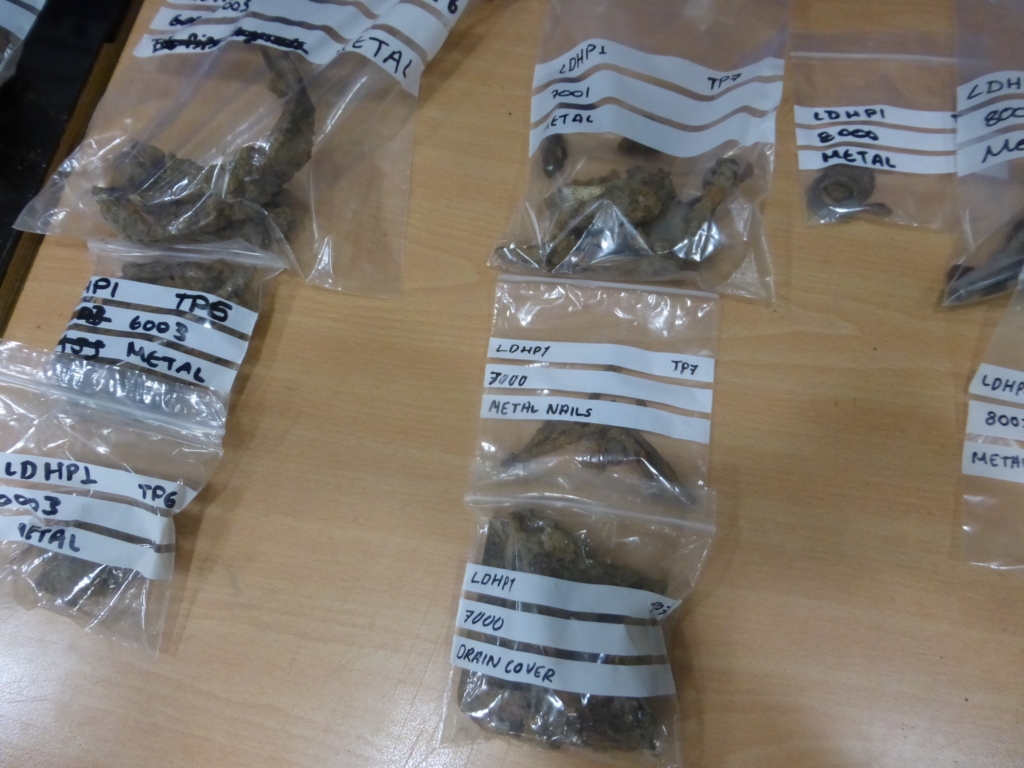
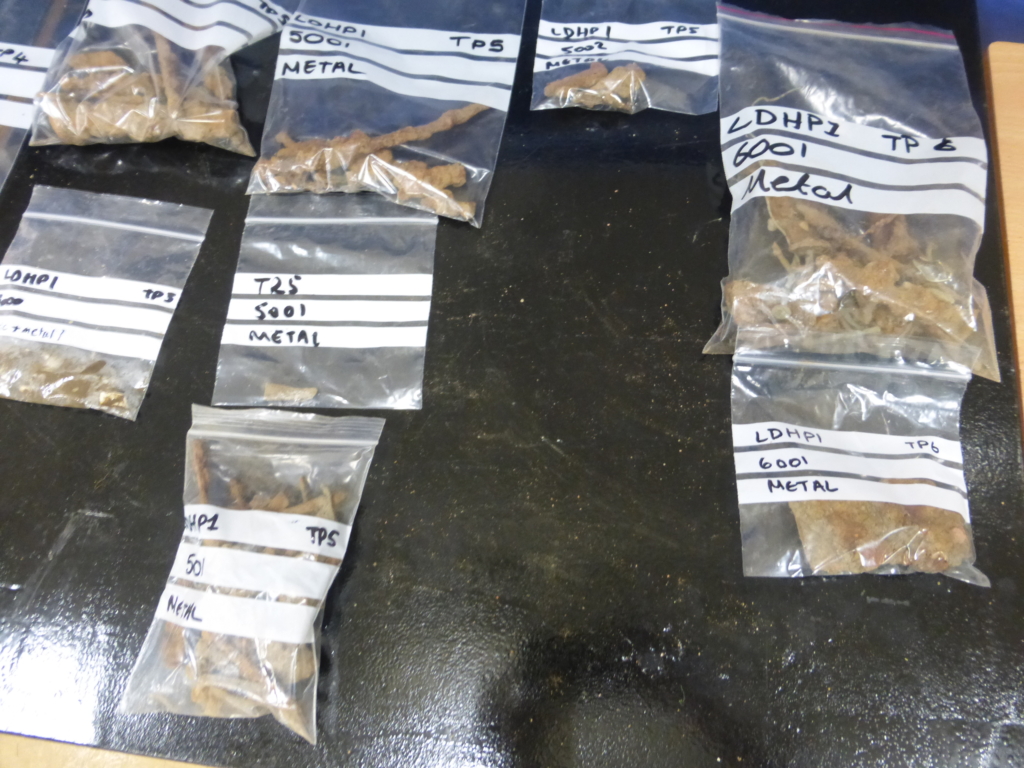
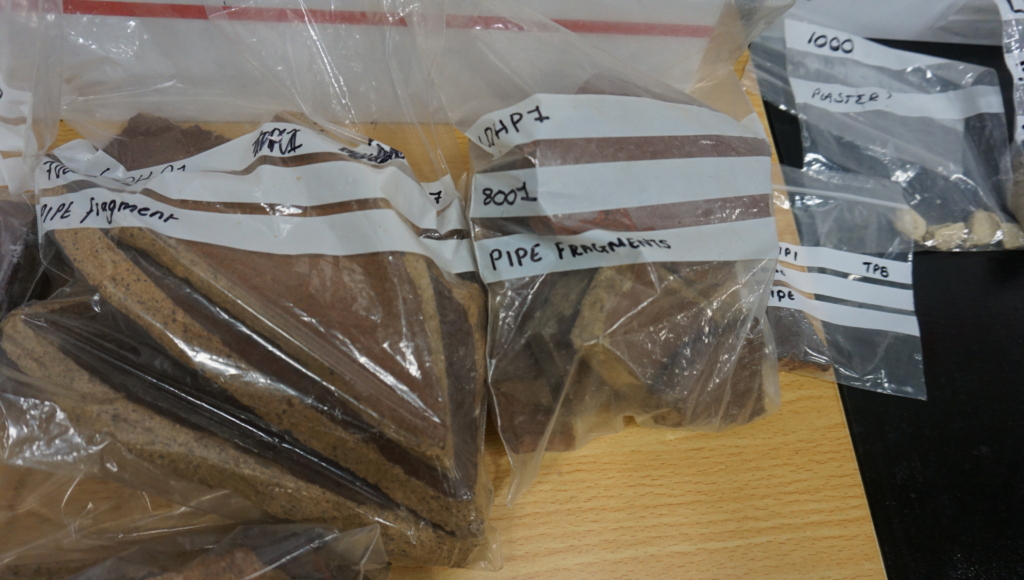

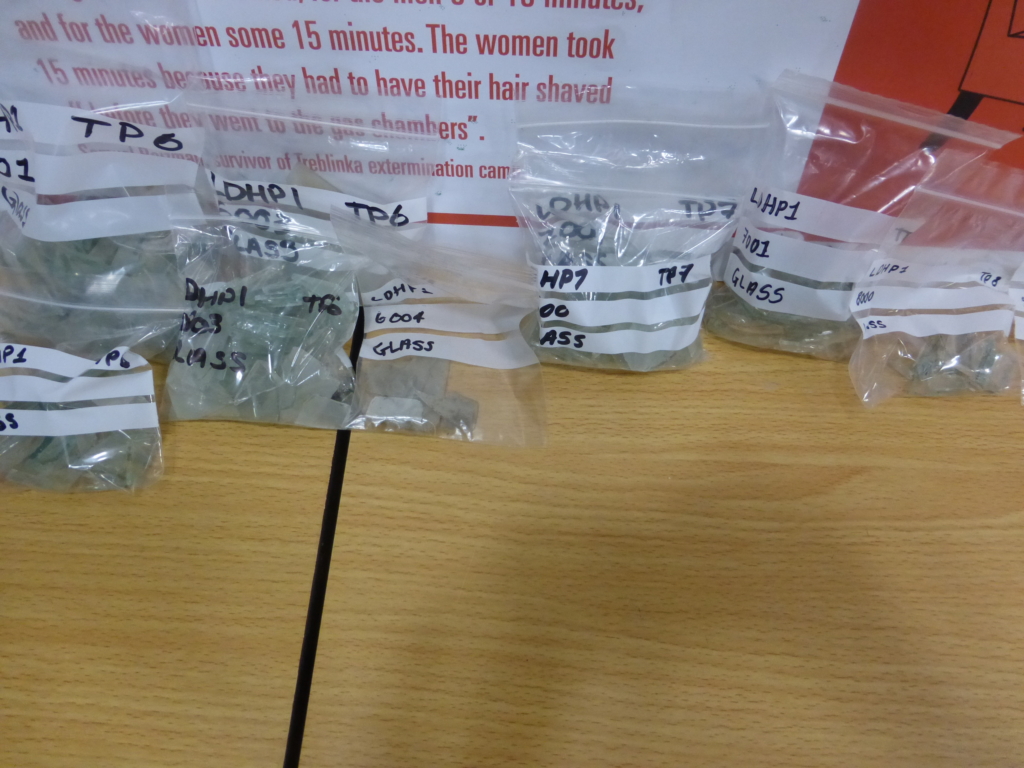
…..Tom is filming Kevin for his documentary….
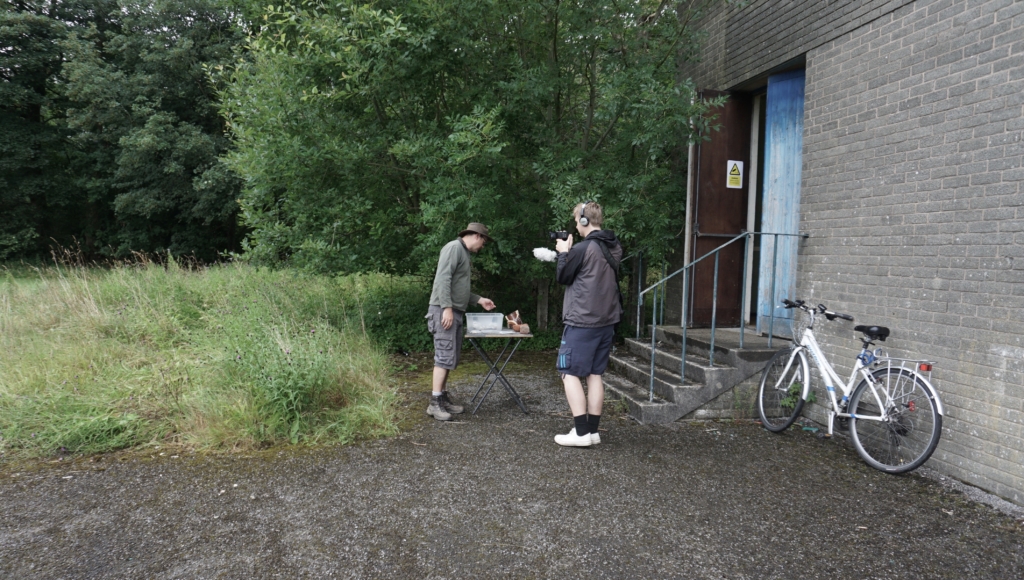
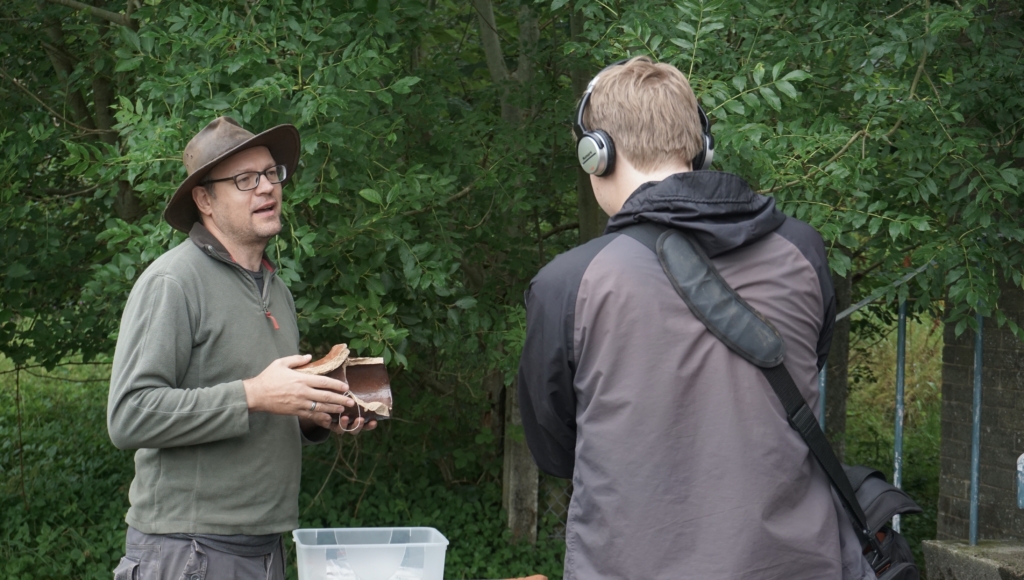
….further artefacts are being scanned with the 3D scanner, including the keyhole and metal buckle……
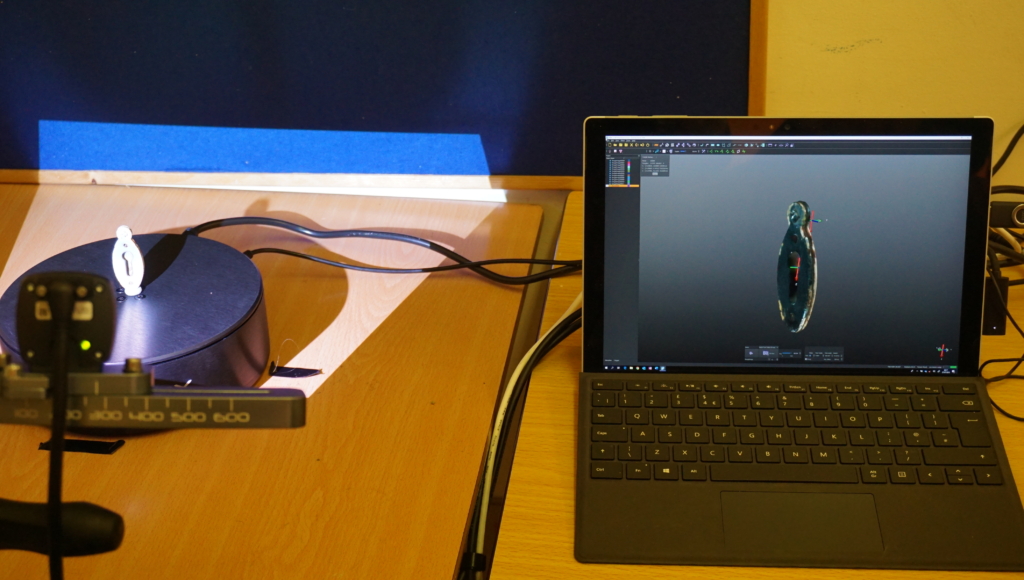
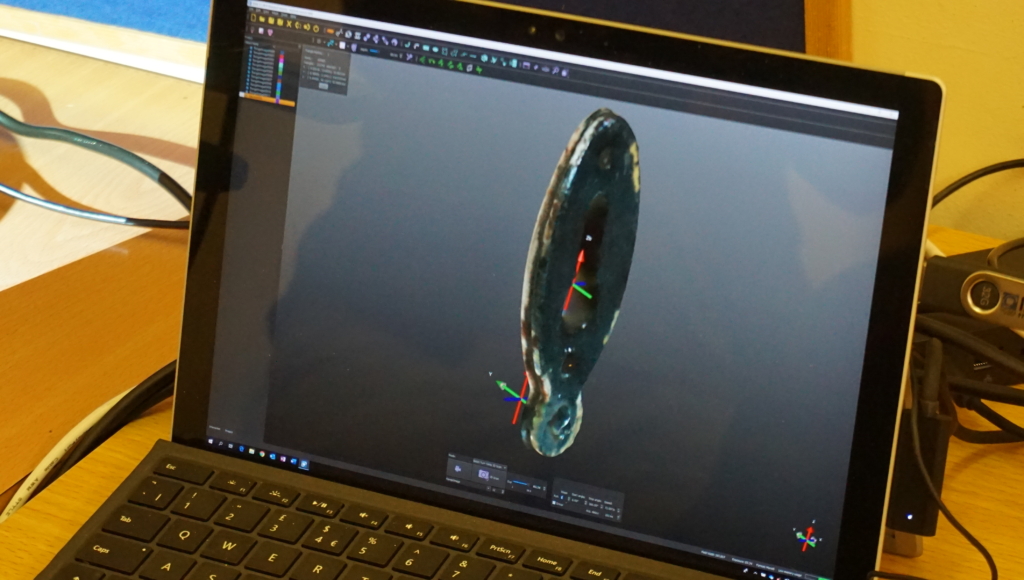

….and some of the final artefacts catalogued.
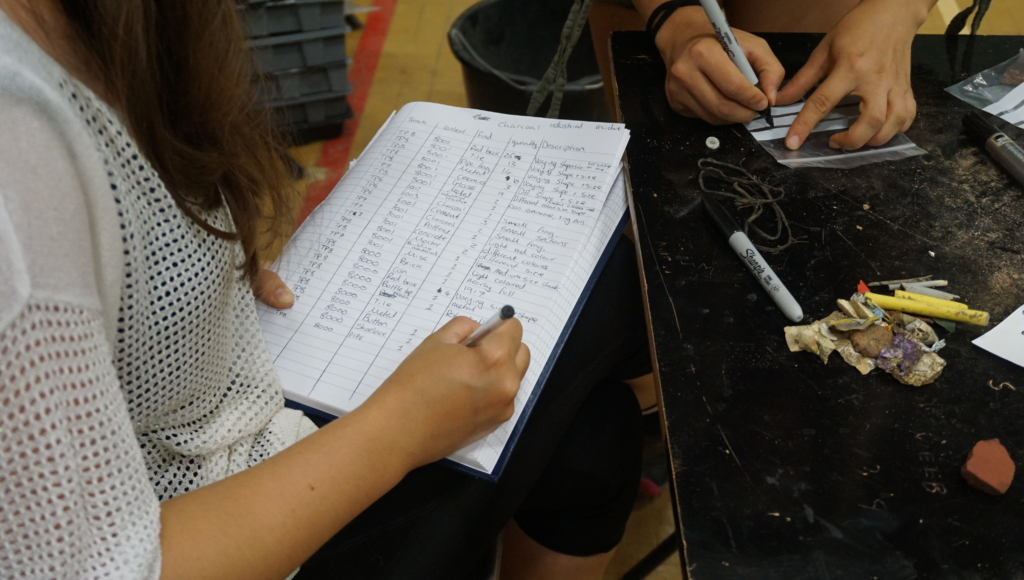
Packing starts. Trench 8 is backfilled and Will reports “it contained very similar material to that of the other trenches. There was a significant quantity of demolition material in the upper layers. This was very compacted and it is likely that the school field was rolled over to make it flat and suitable for the children. There was nothing else on the base as we reached natural geology. The amount of material suggested we were in the vicinity of the former hostel.”
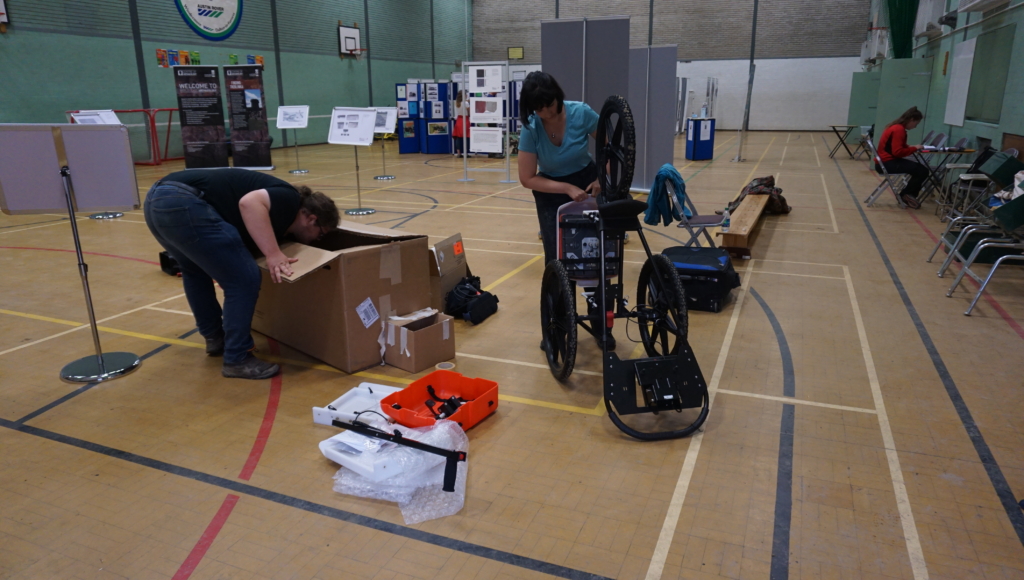
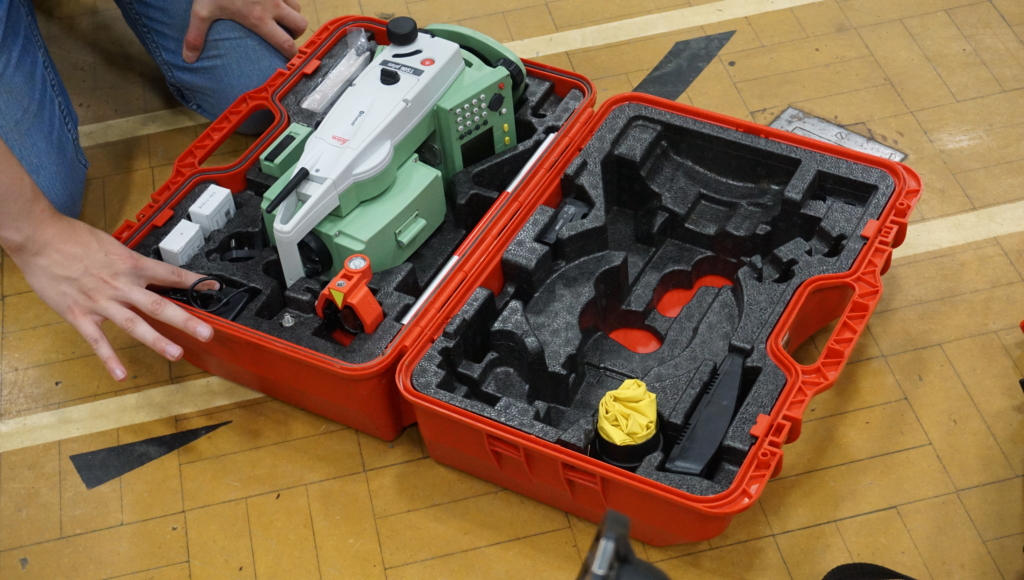

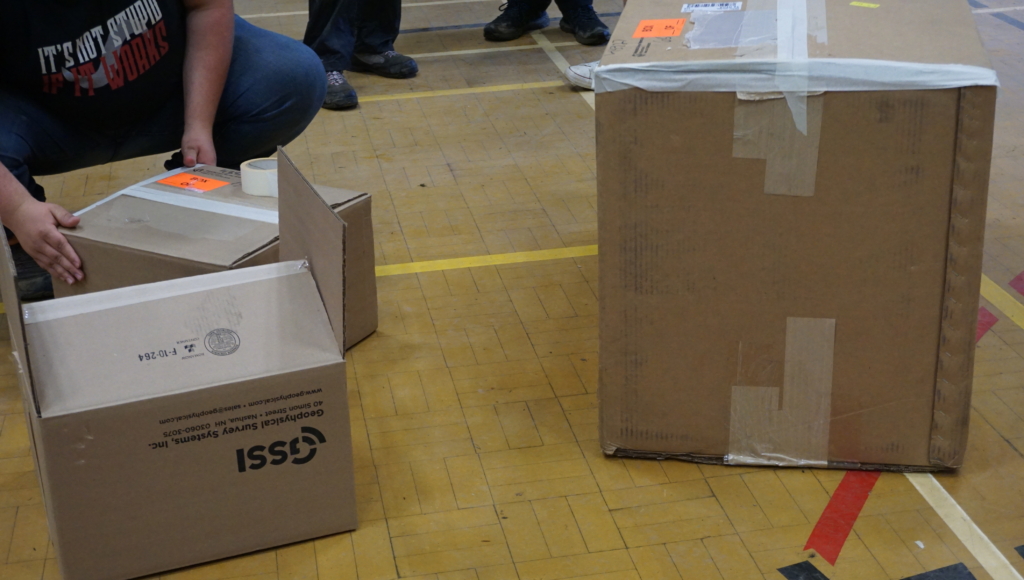
John Woodcock, MP for Barrow and Furness, visits in the final stages of the day. He talks with Caroline, Trevor and Rose and looks at the ‘Finding Treblinka’ exhibition before it is taken down.
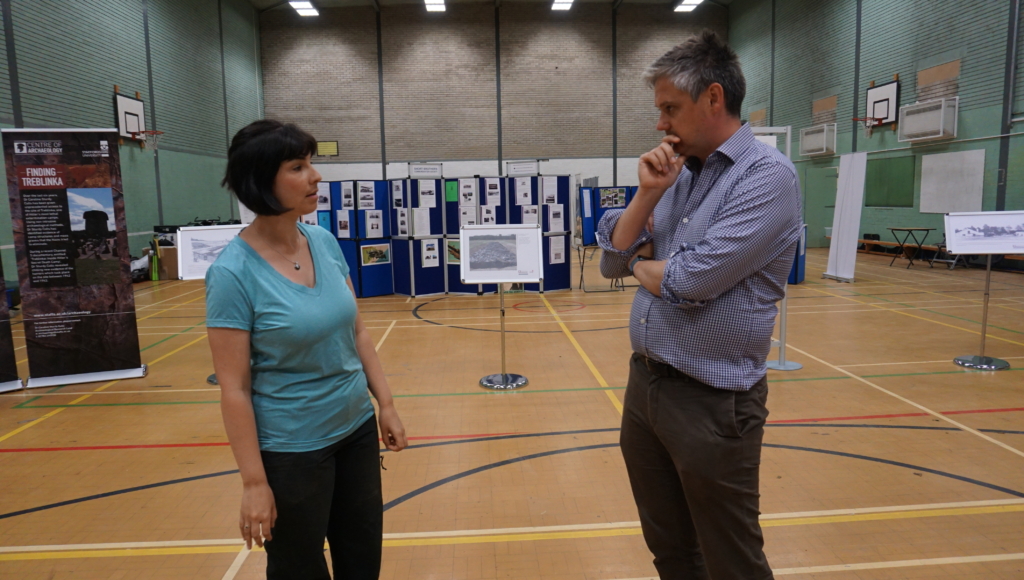
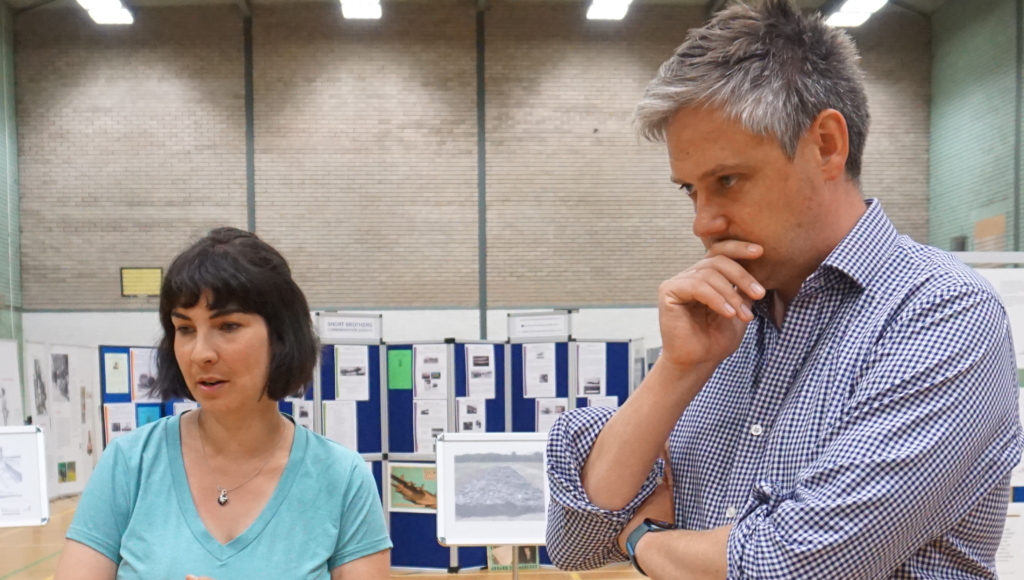
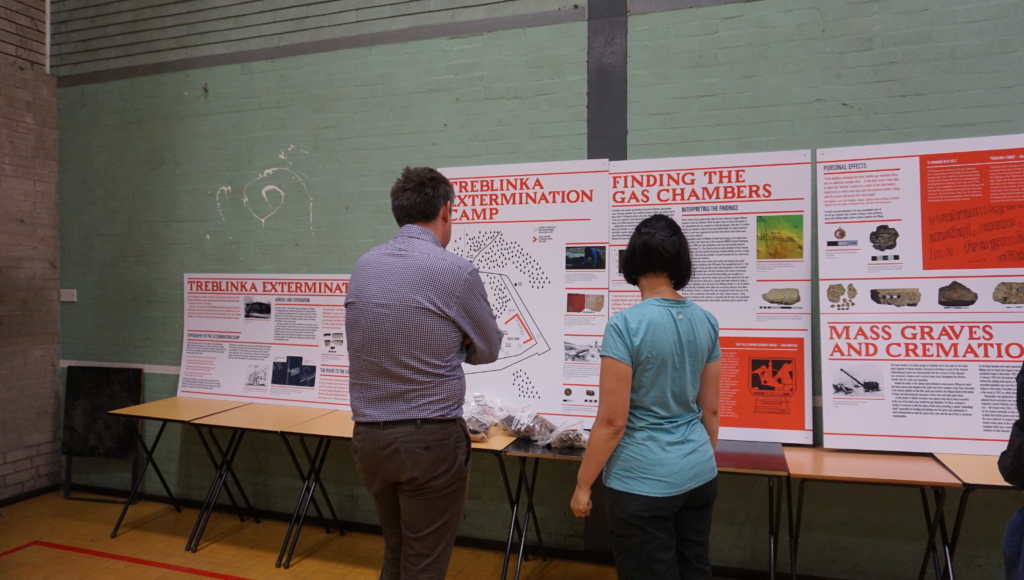
Although it starts to rain John goes to look at Trench 5 and listens to the processes involved in its excavation.

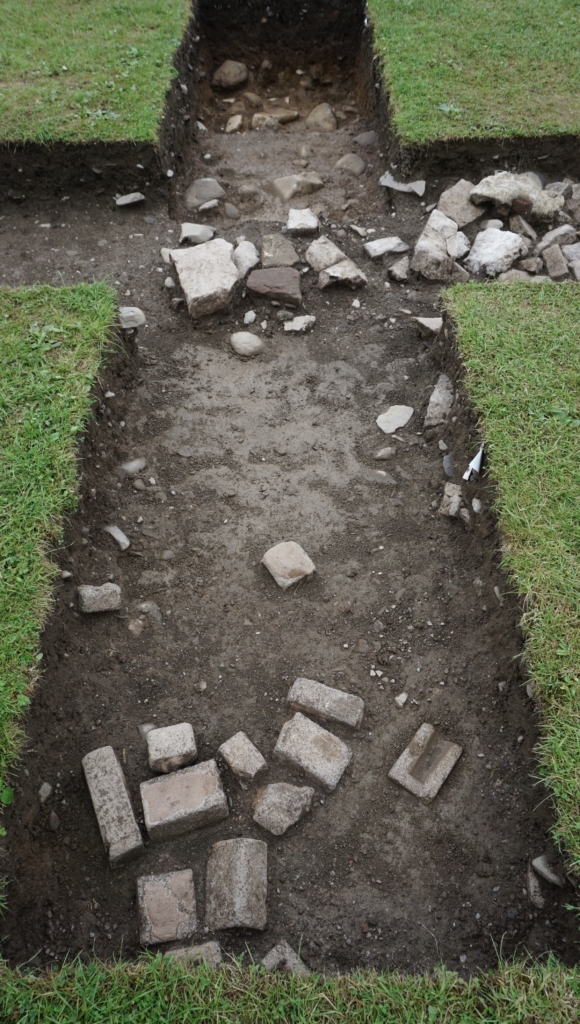
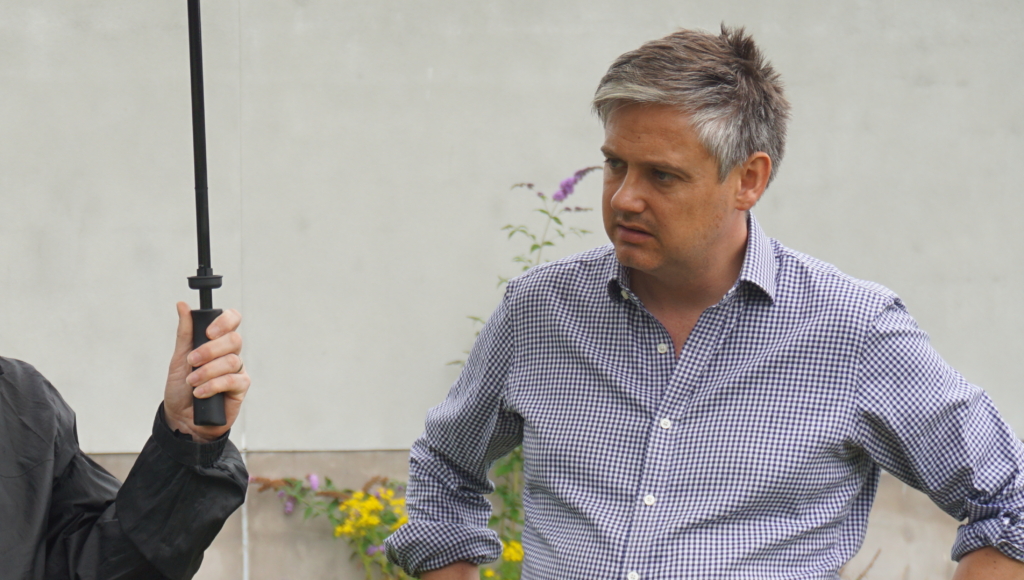
The exhibition is taken down, the artefacts carefully crated and the final trench backfilled.
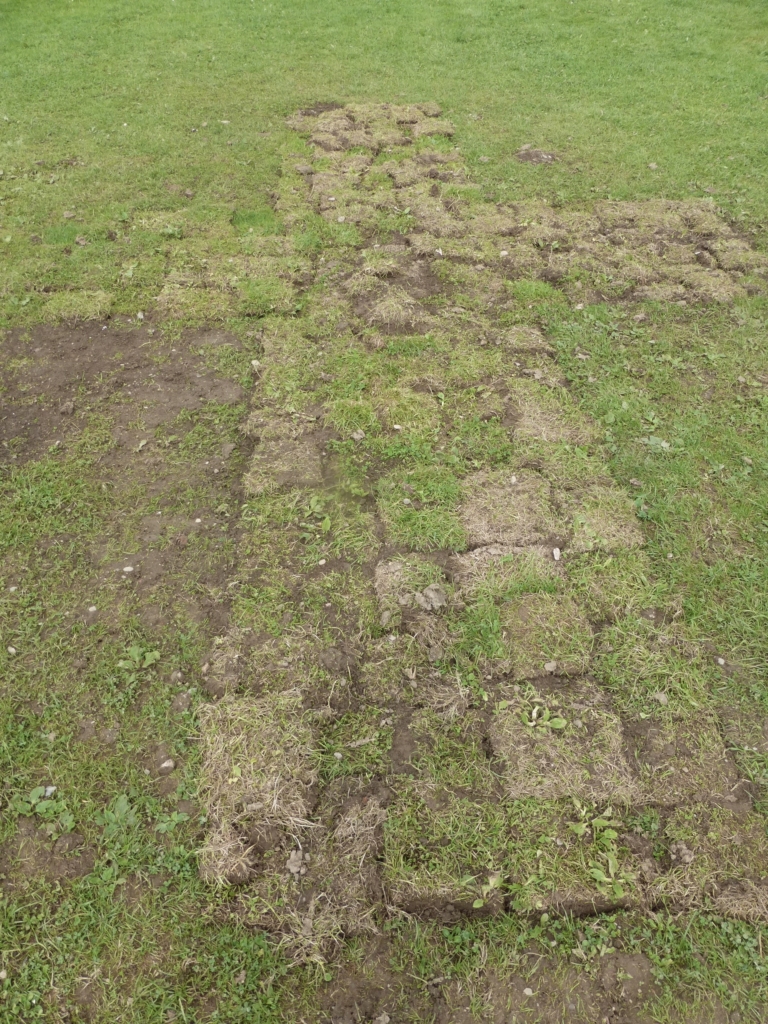
It is the end of an incredible two weeks!